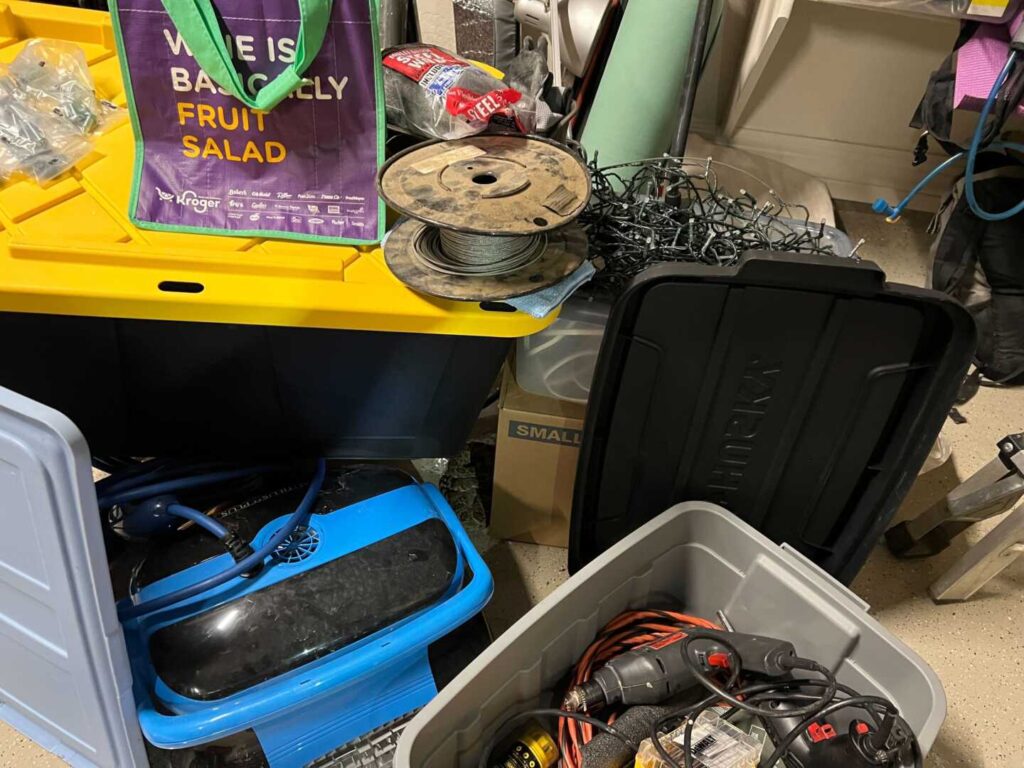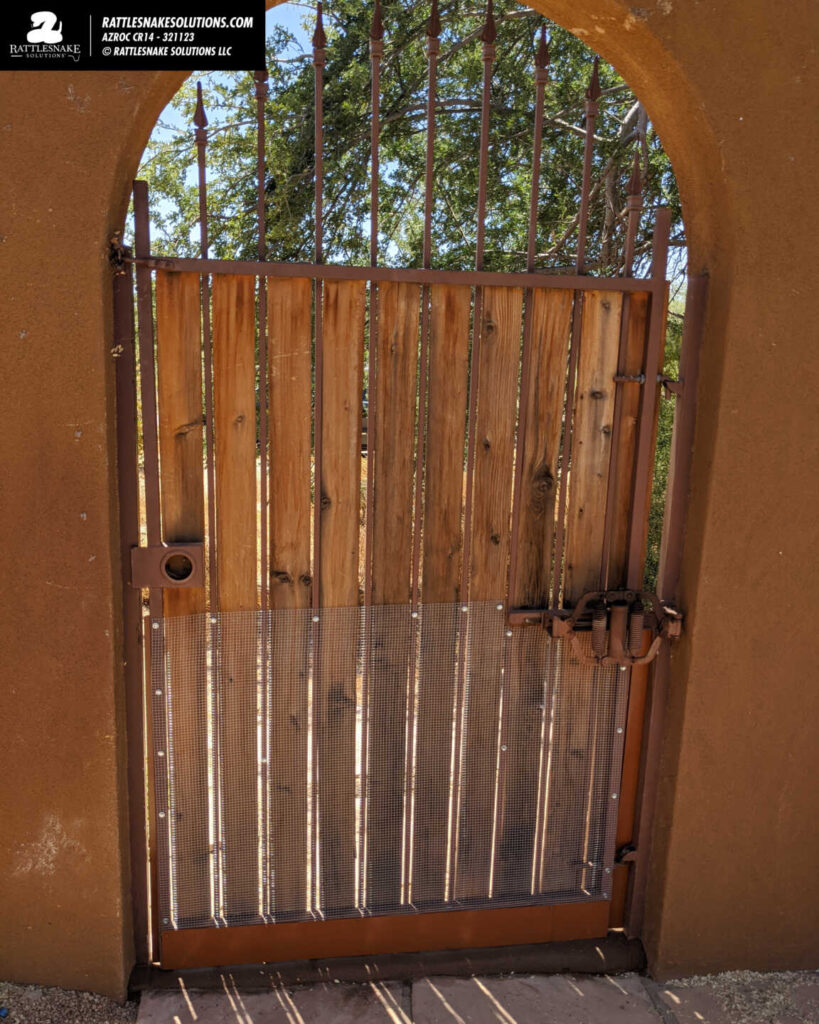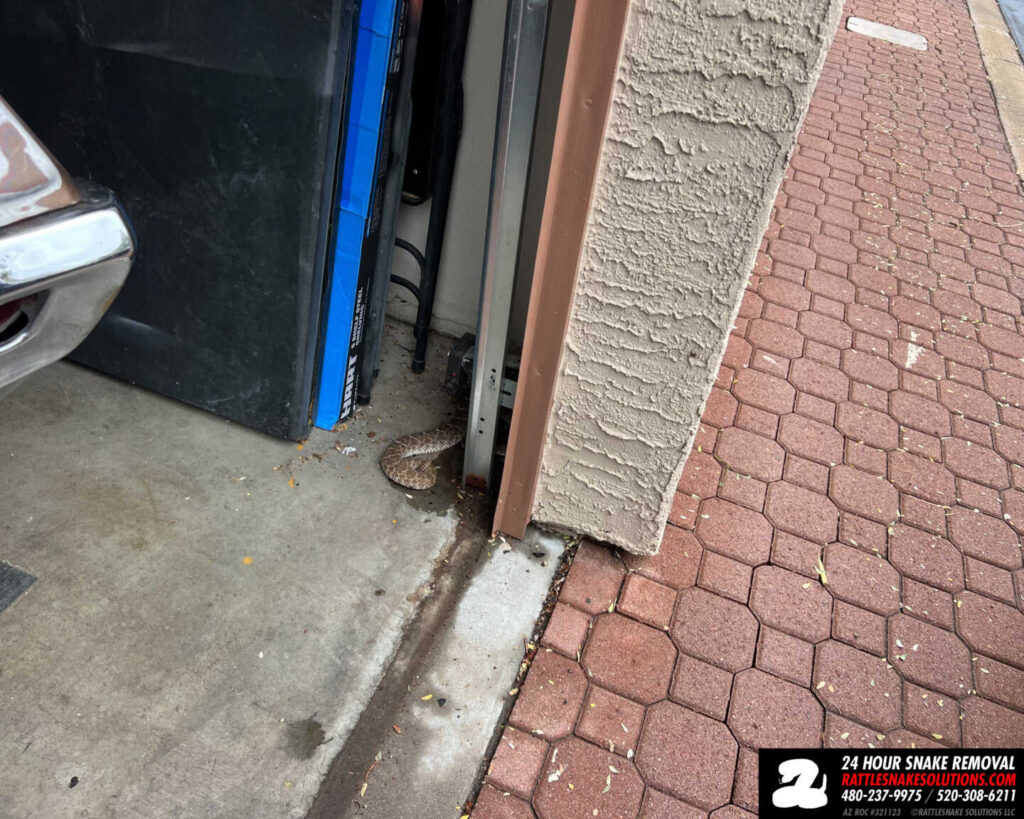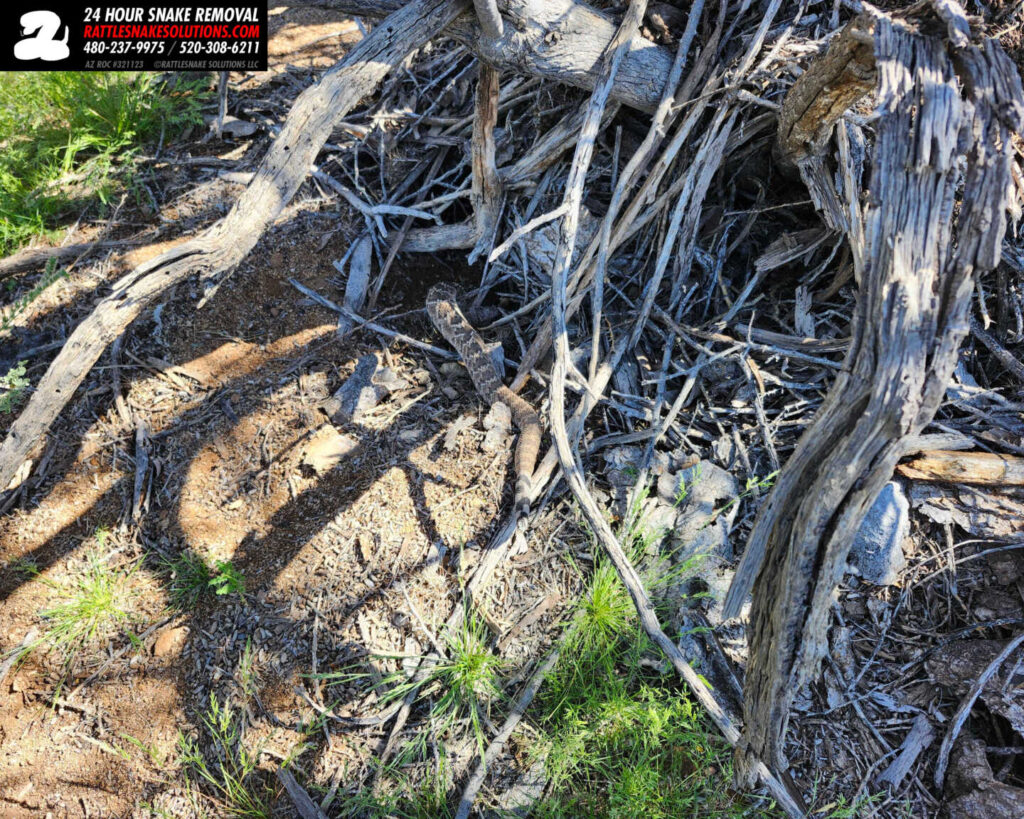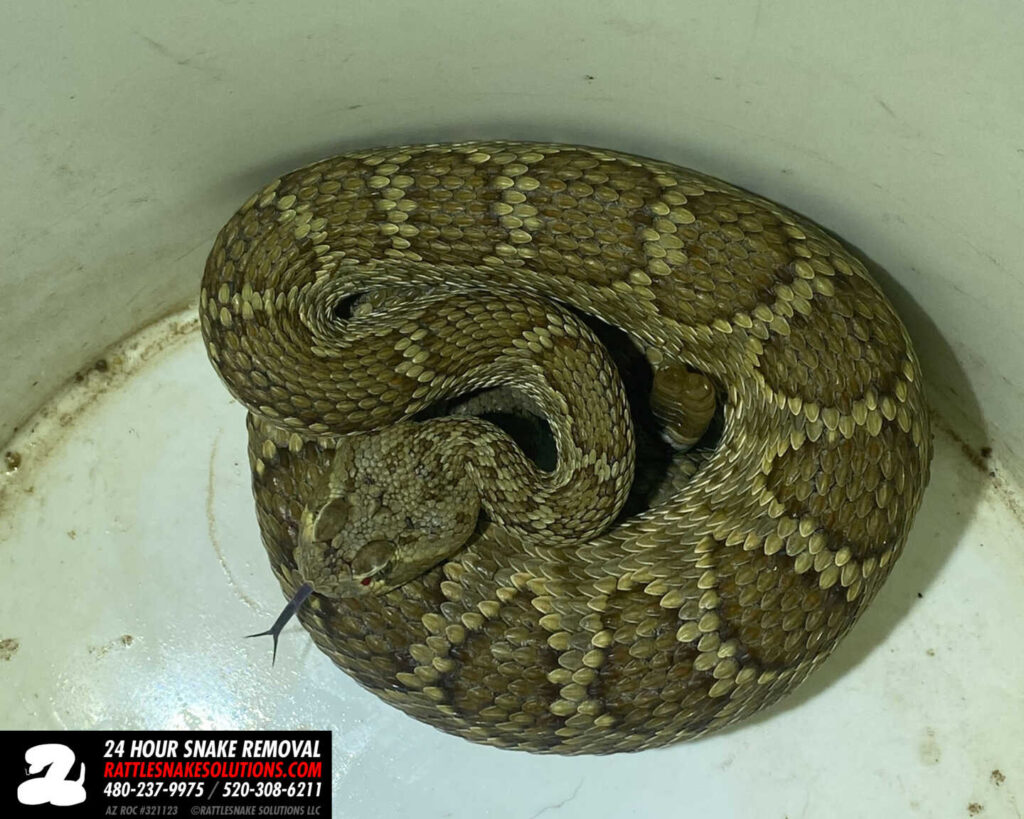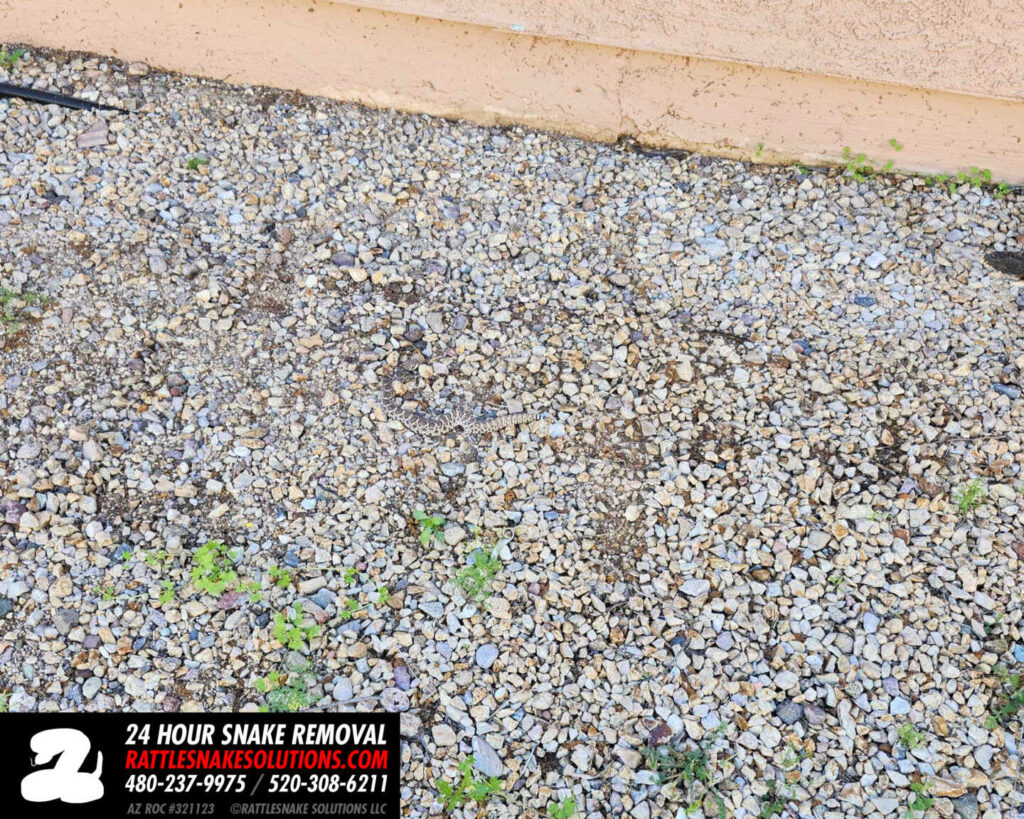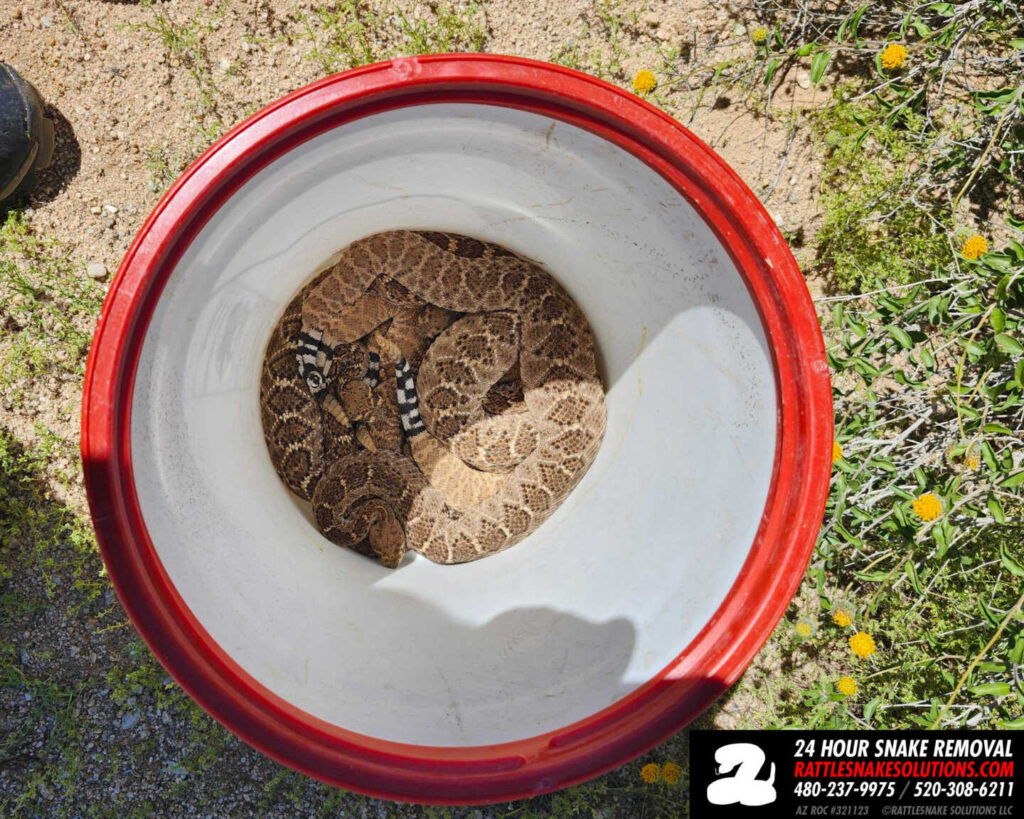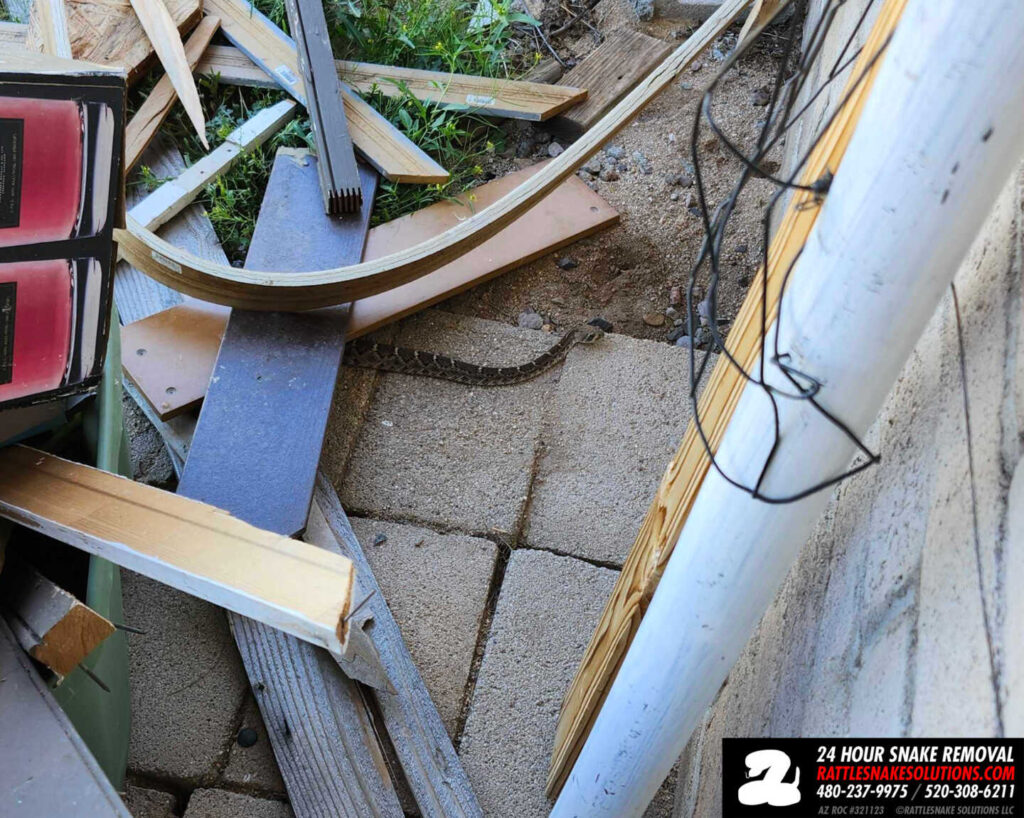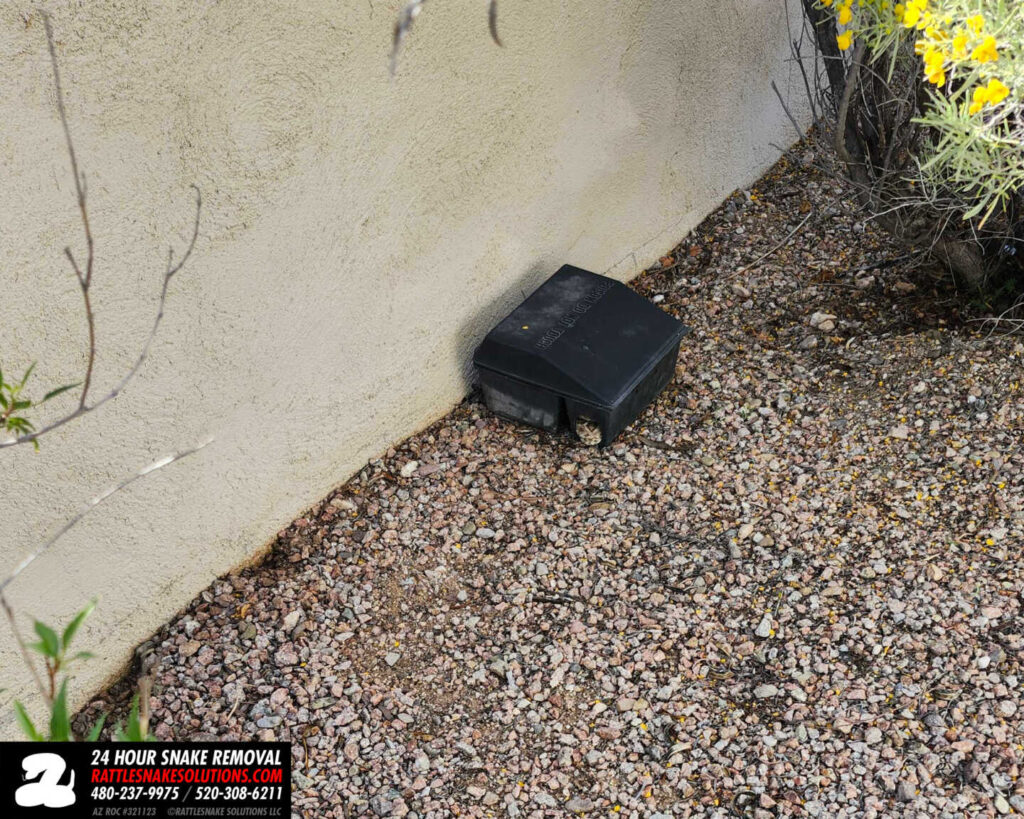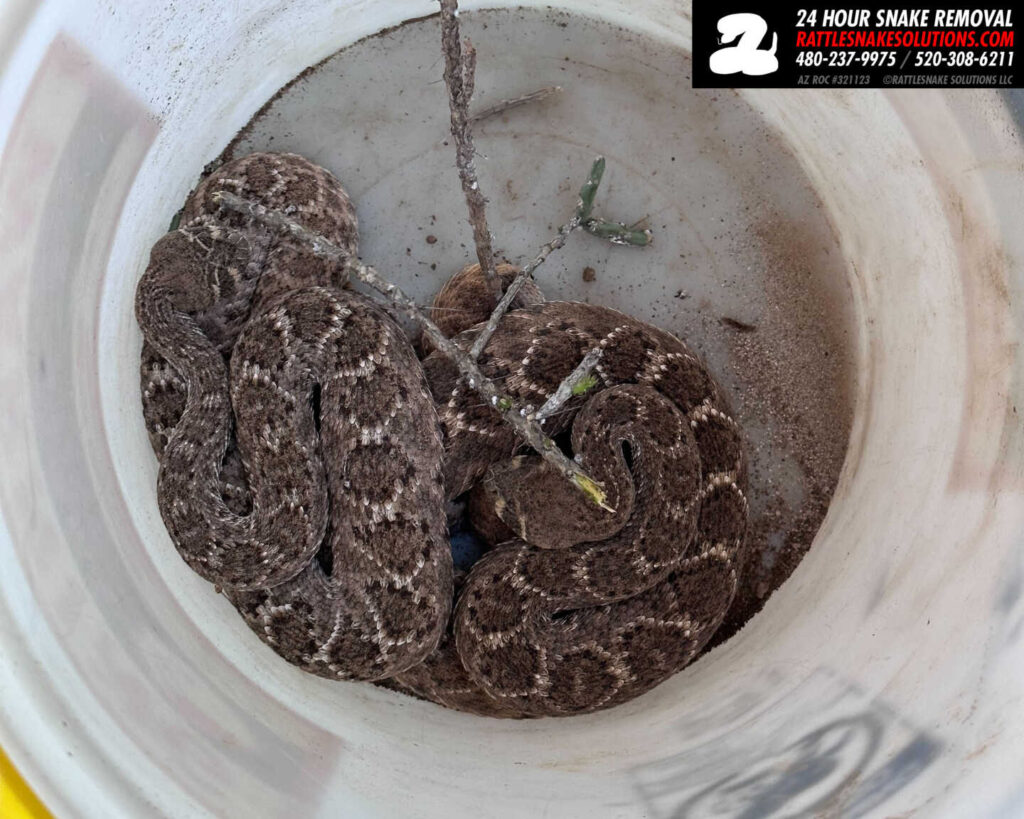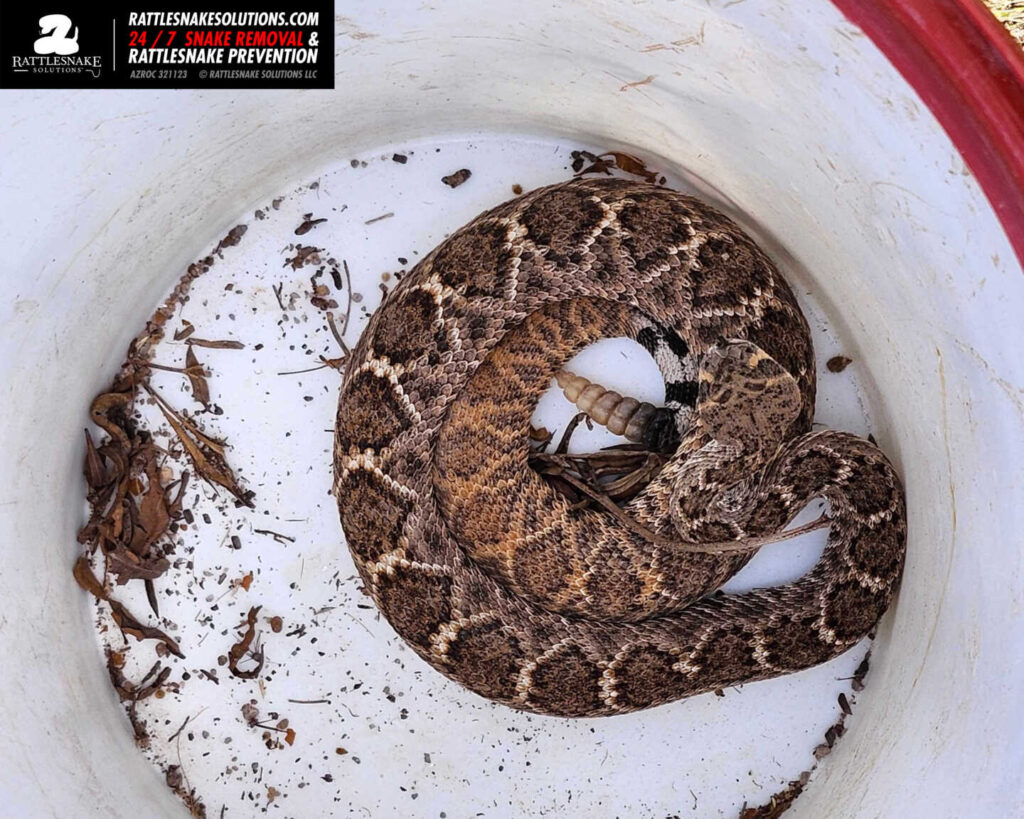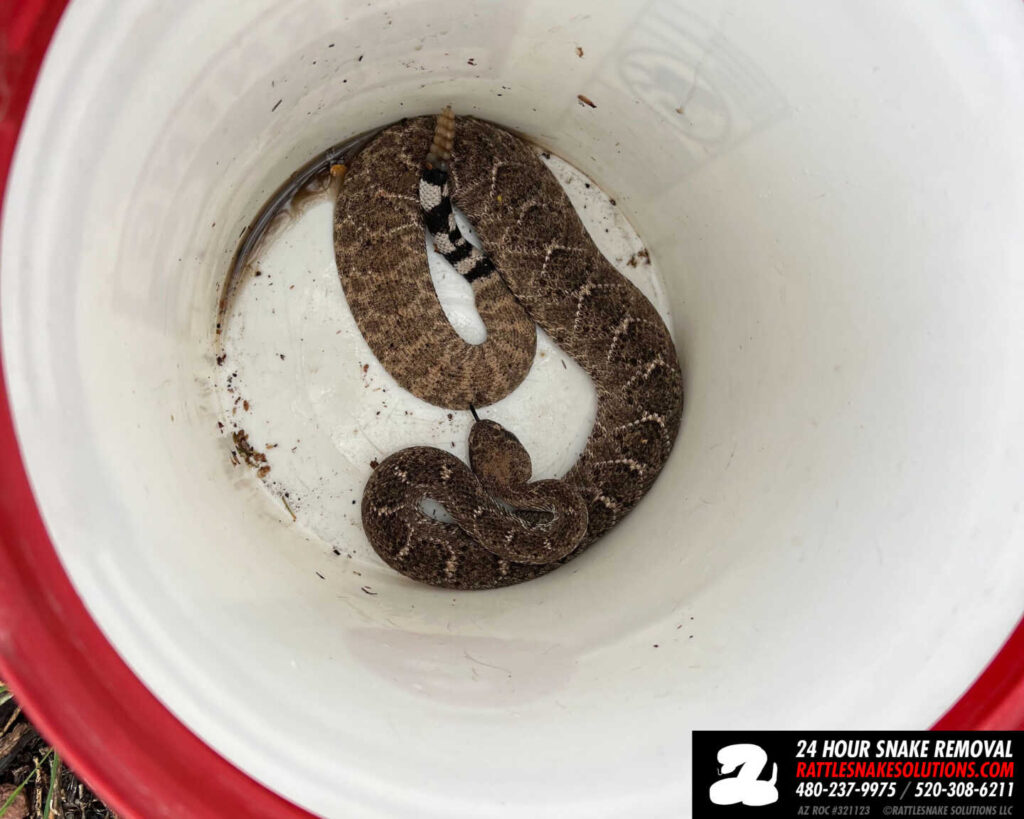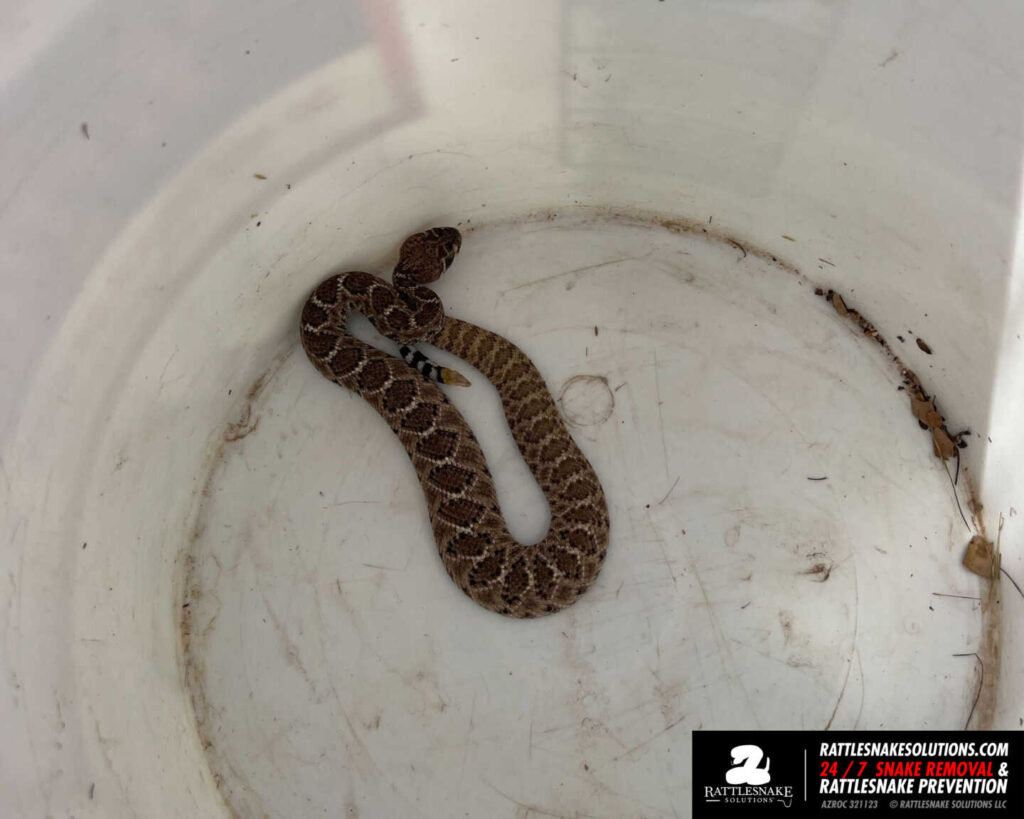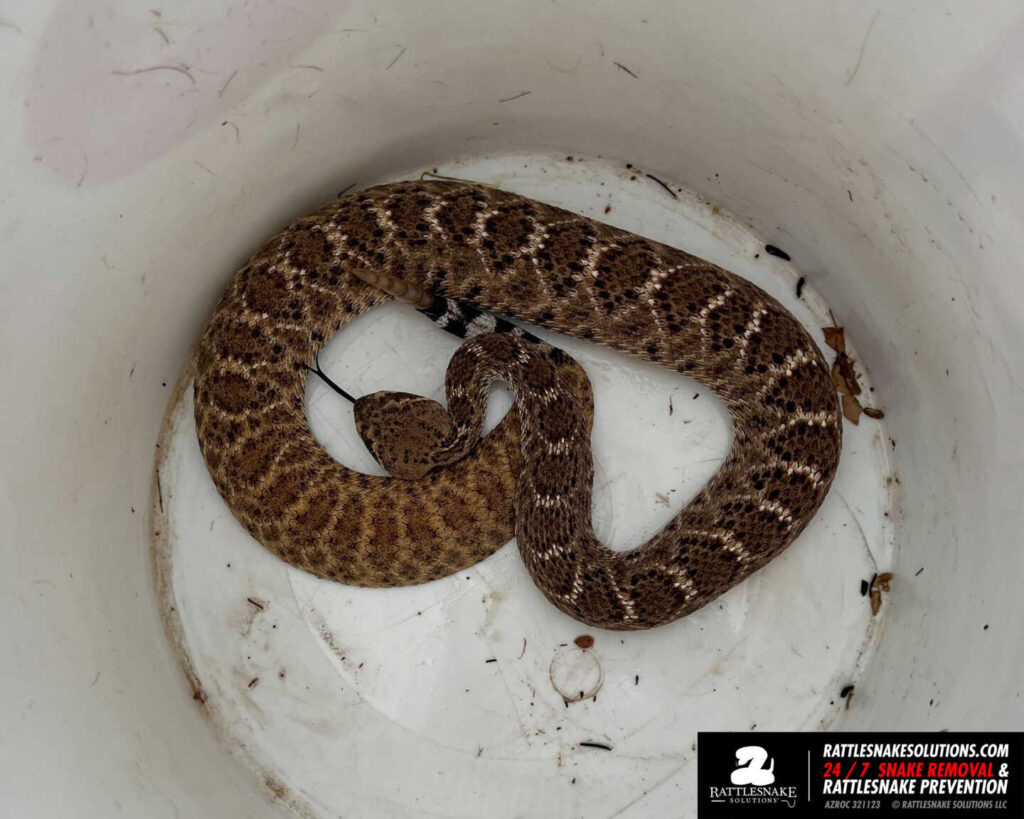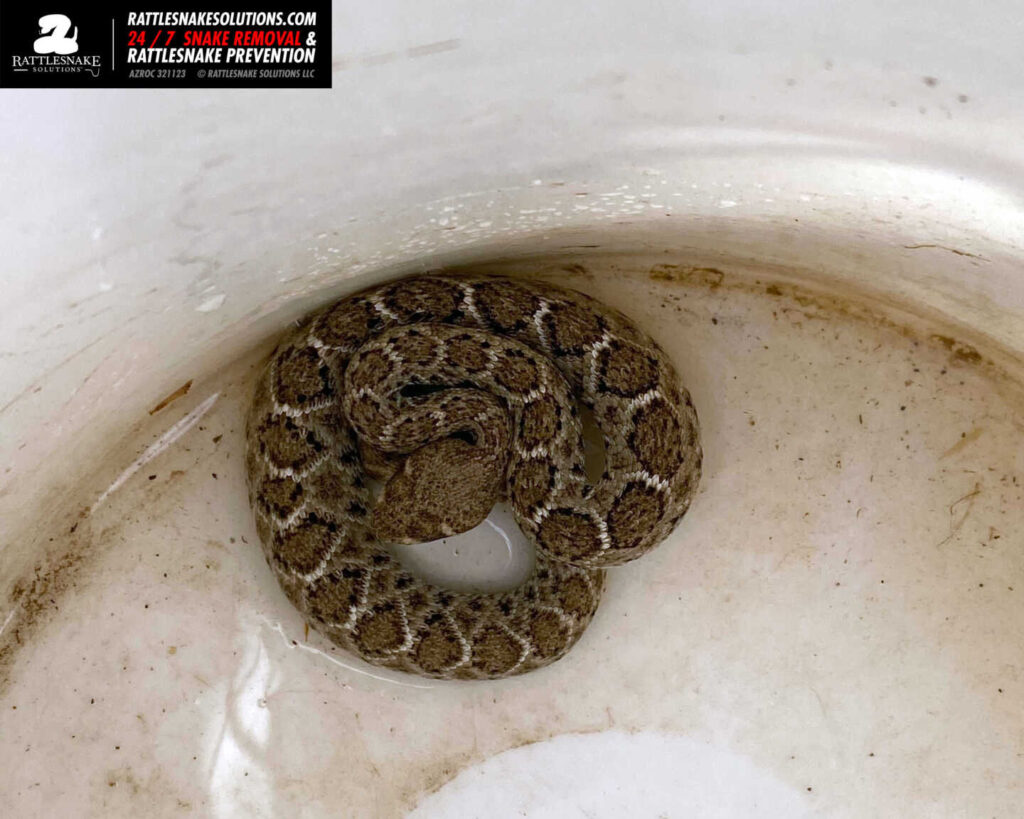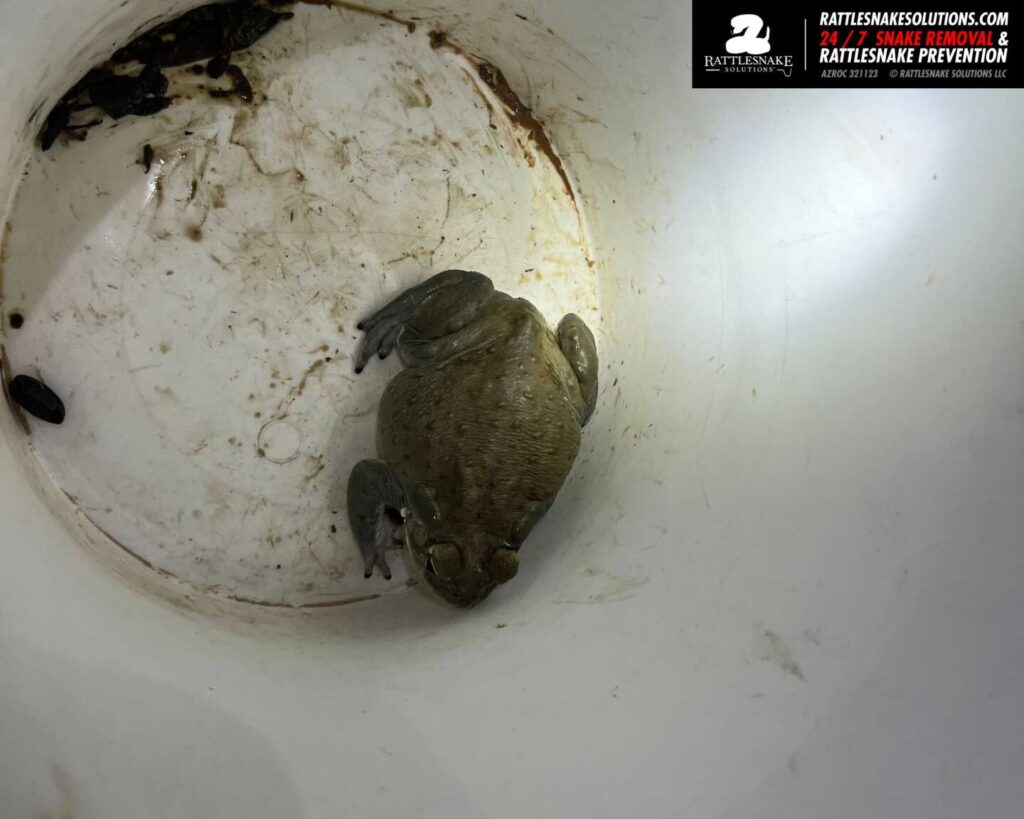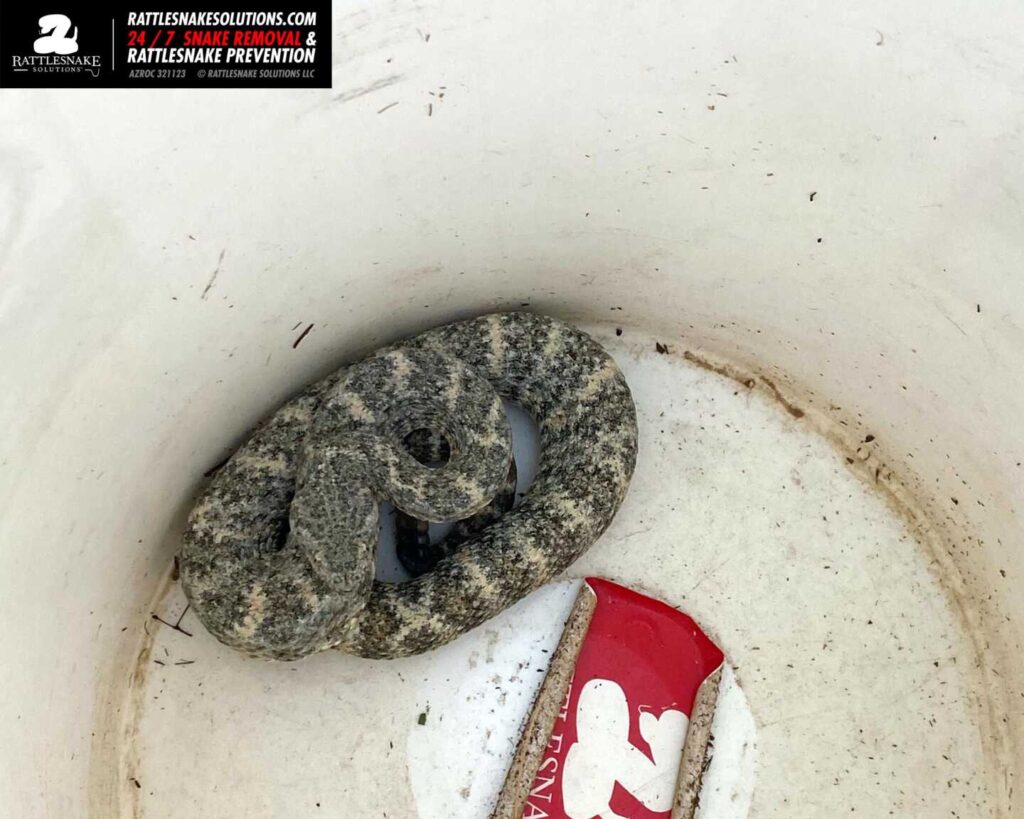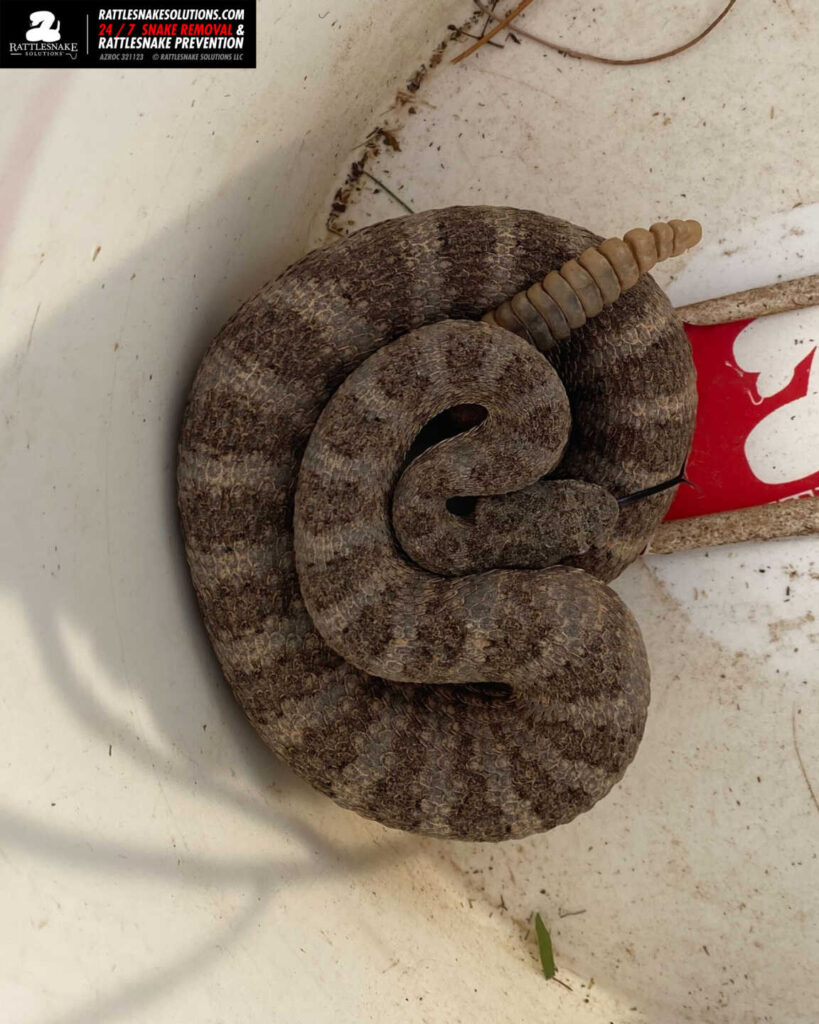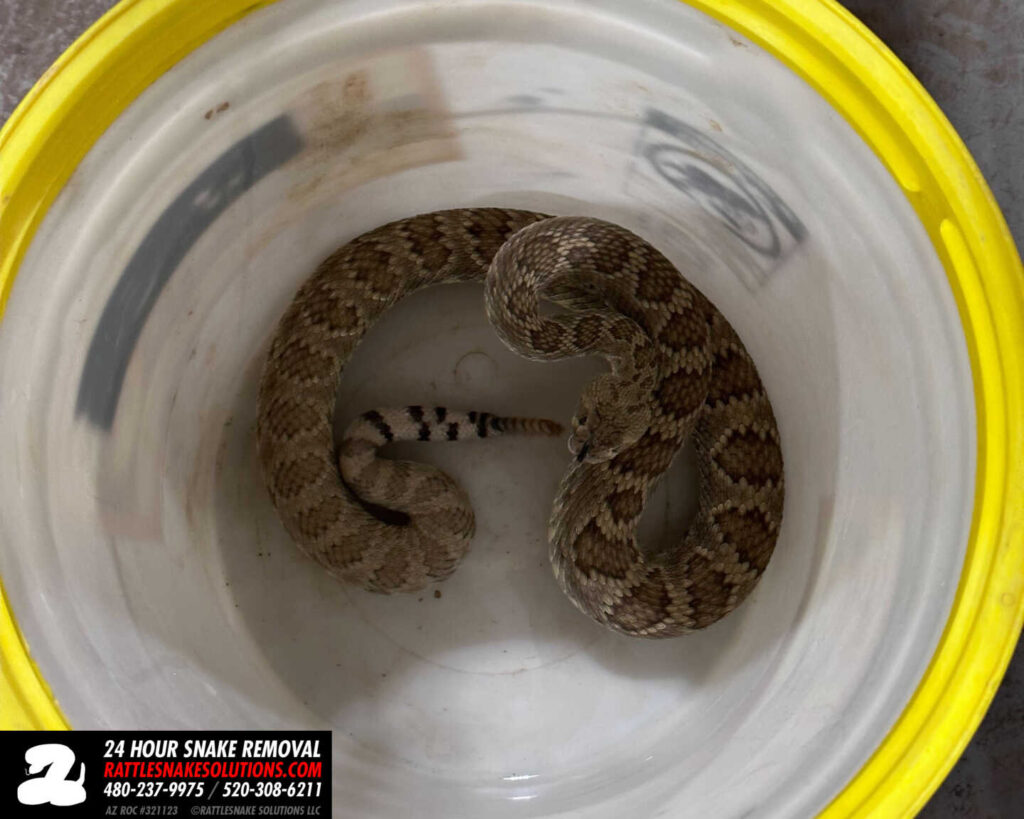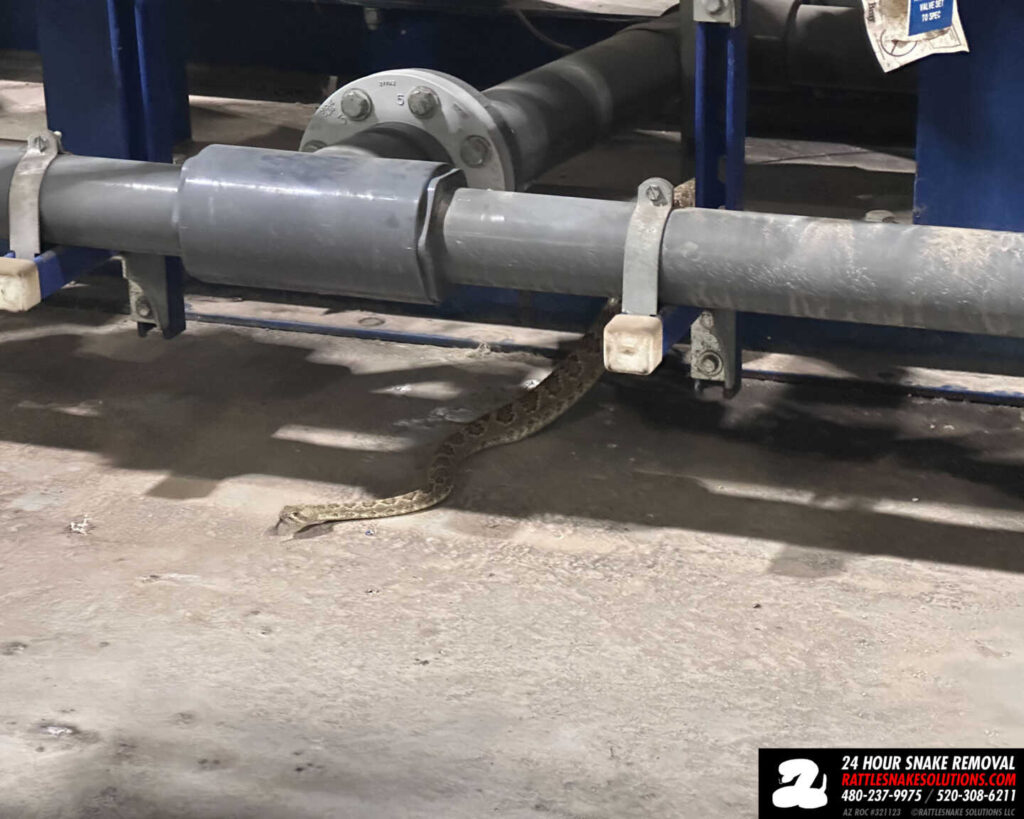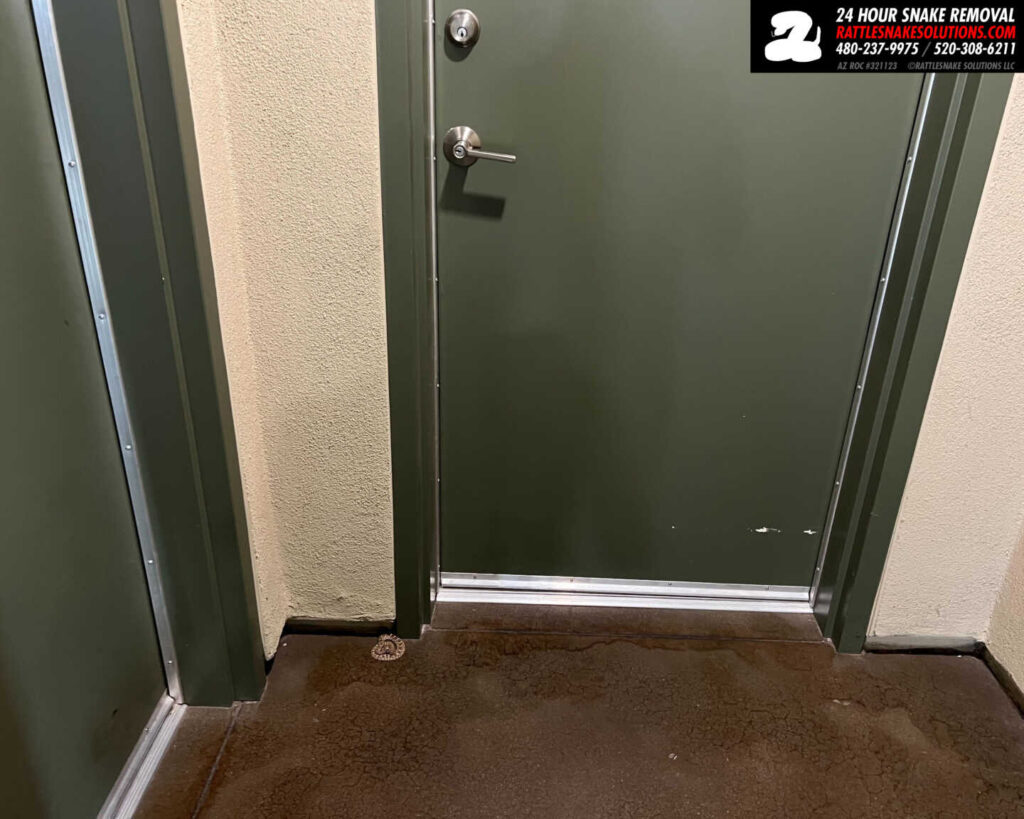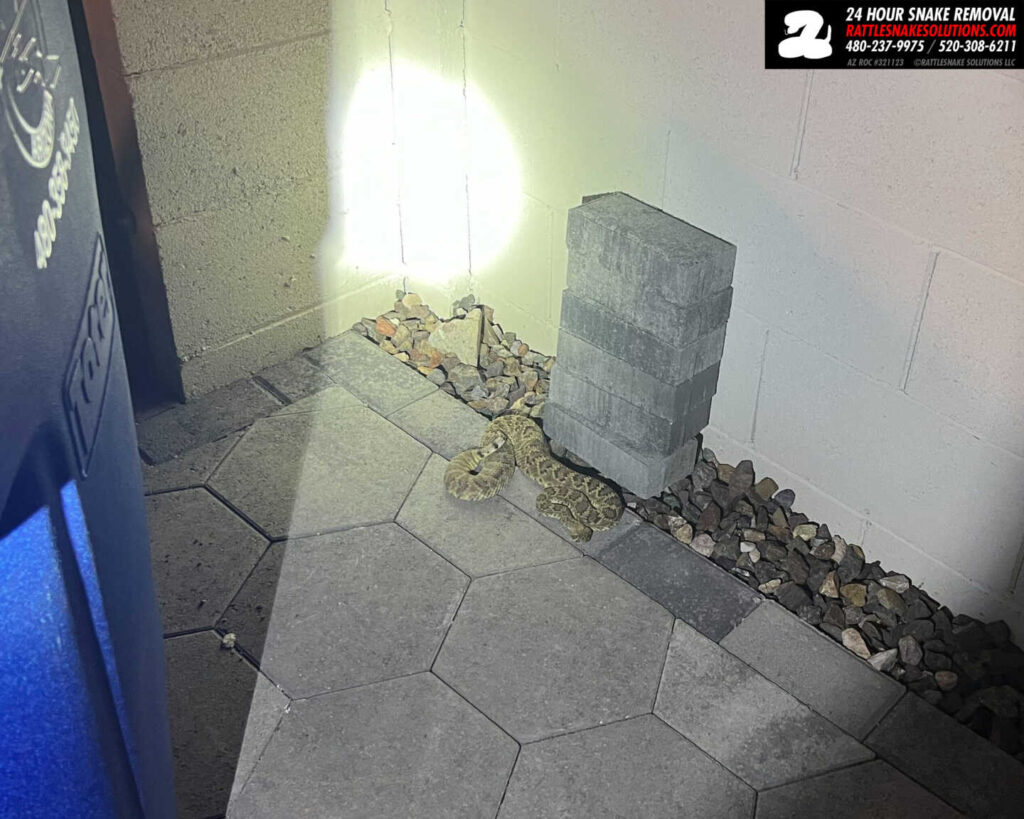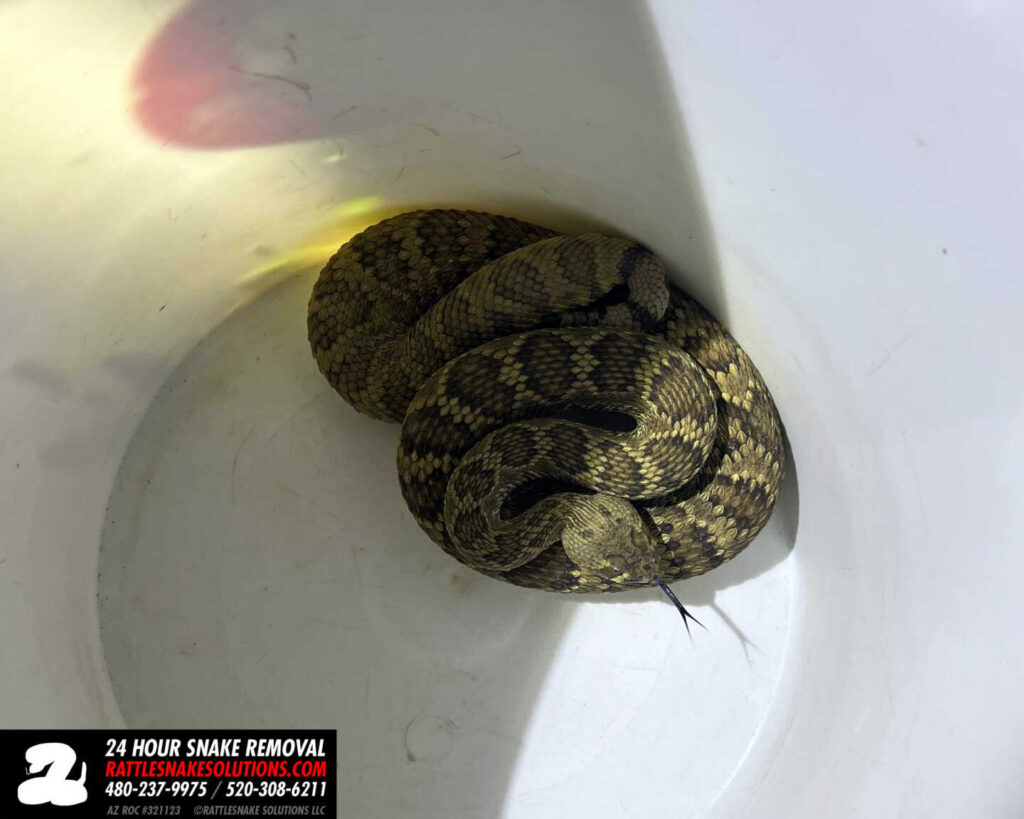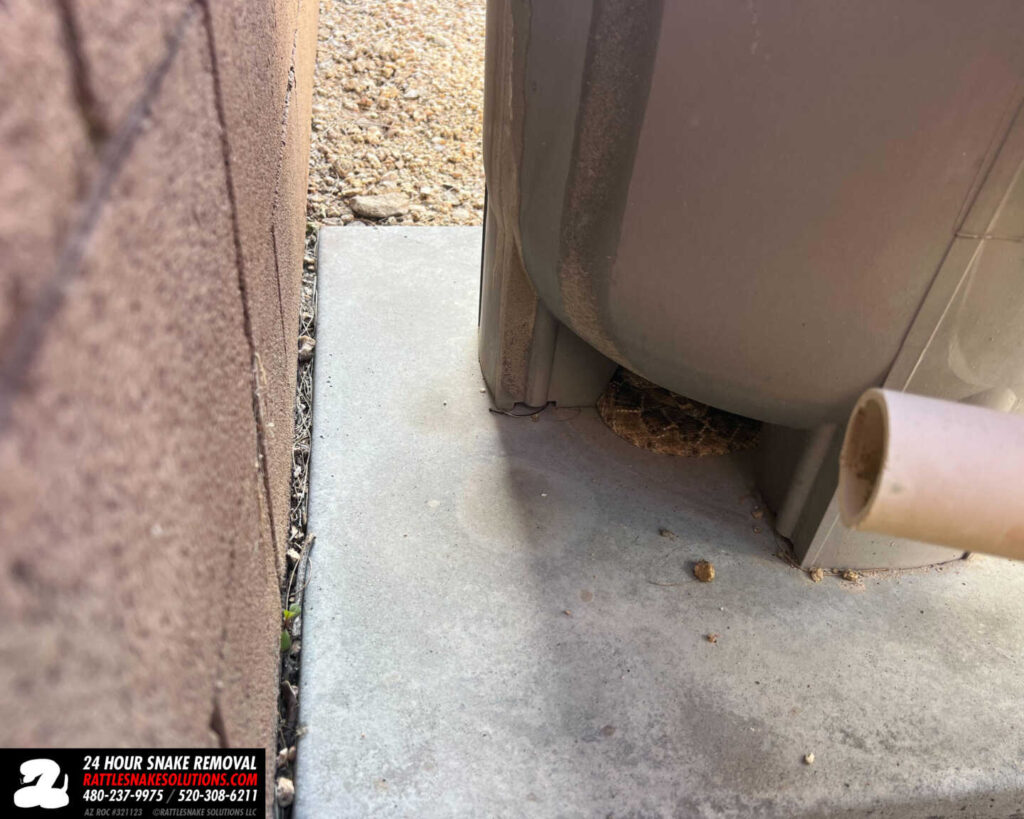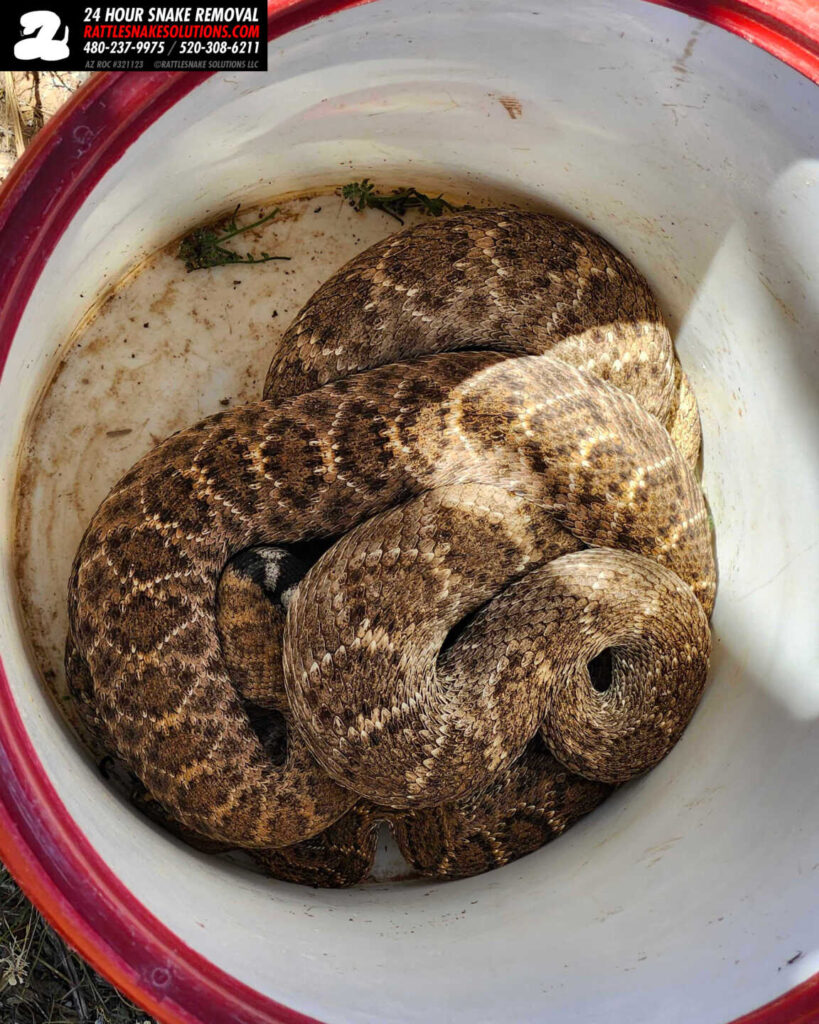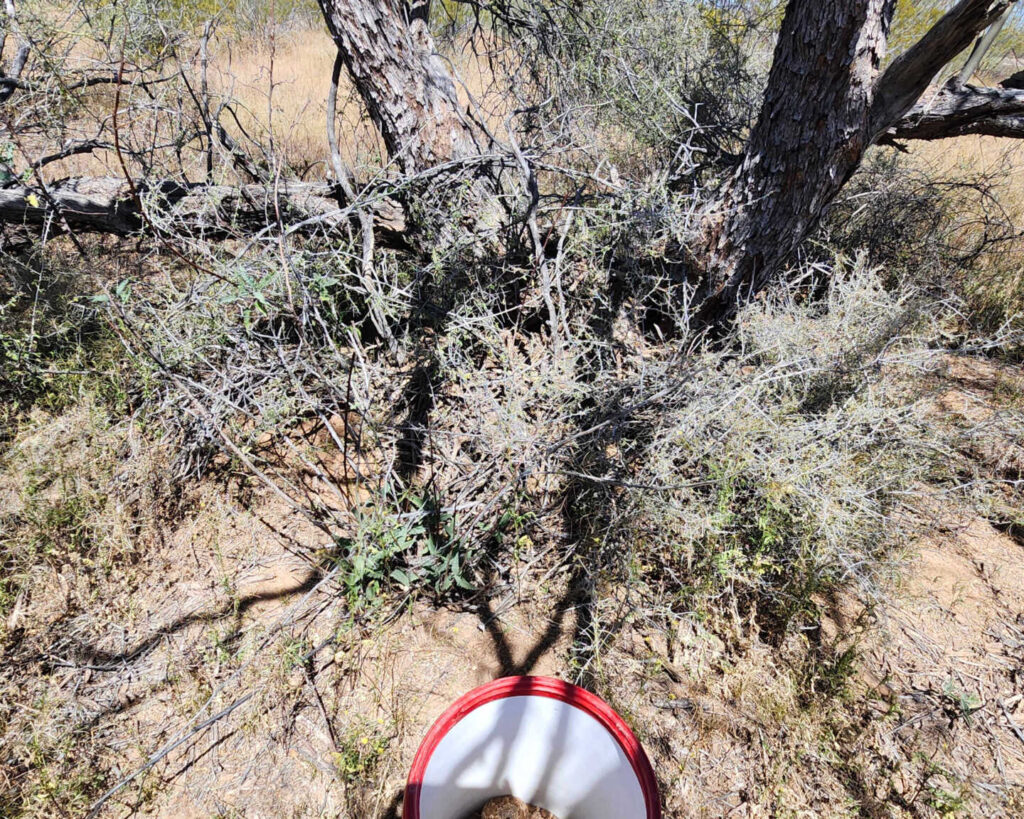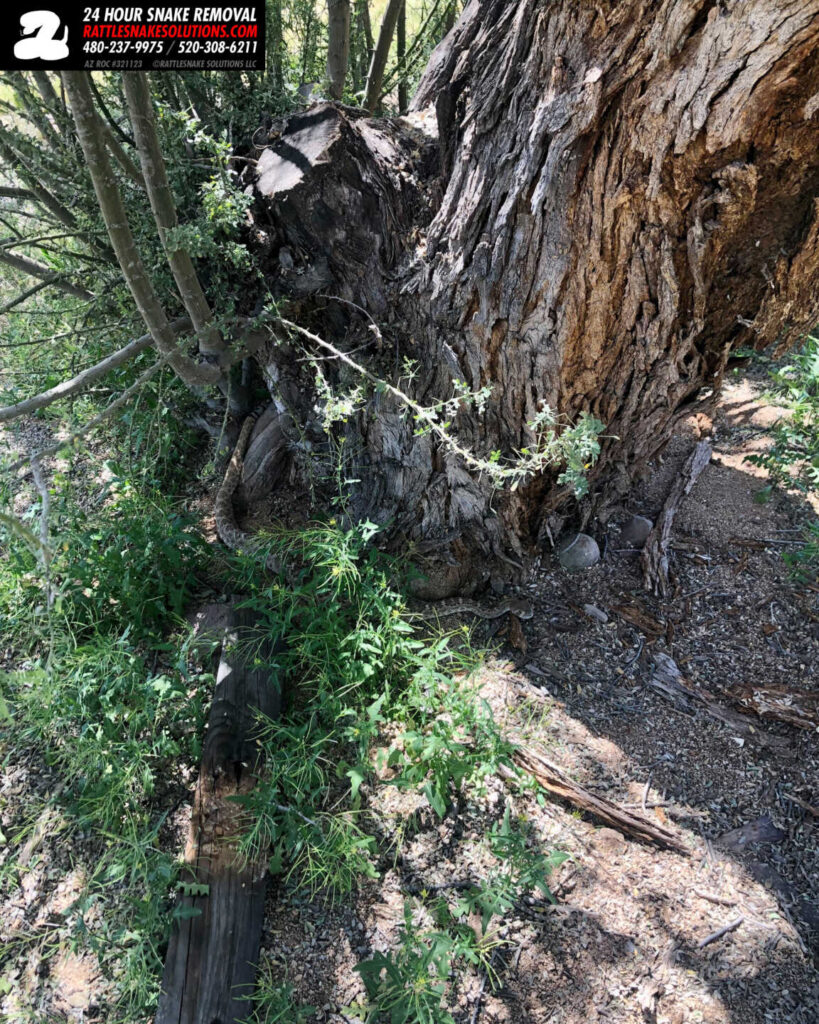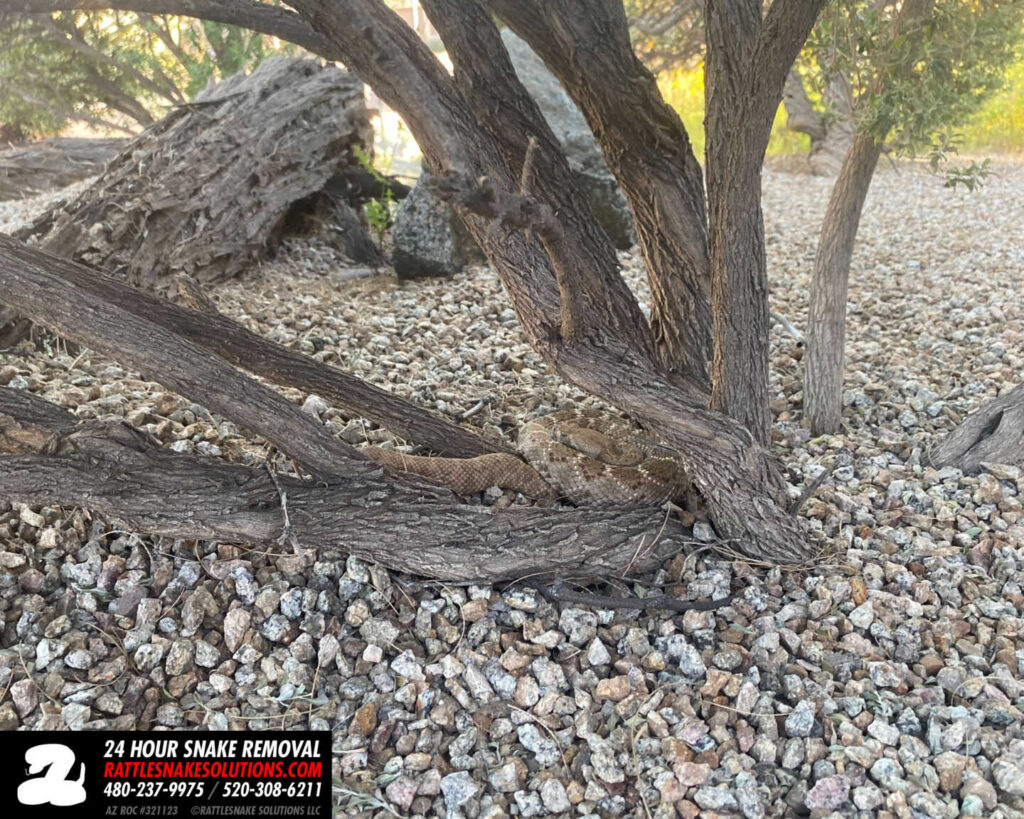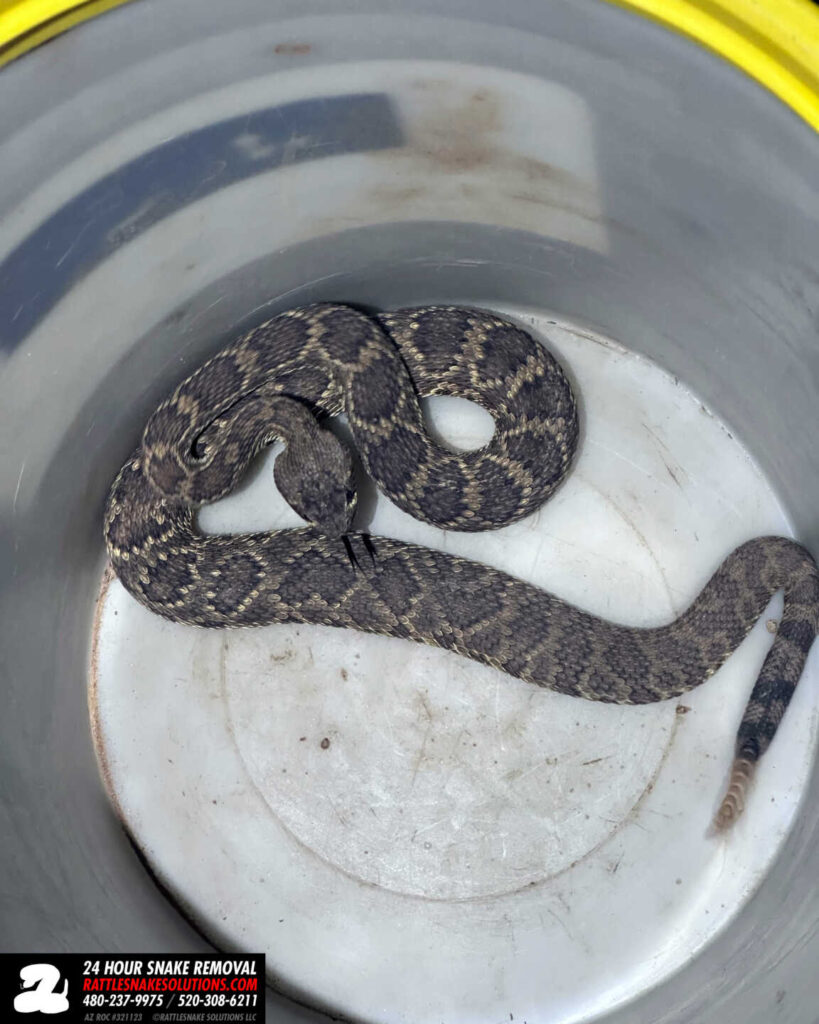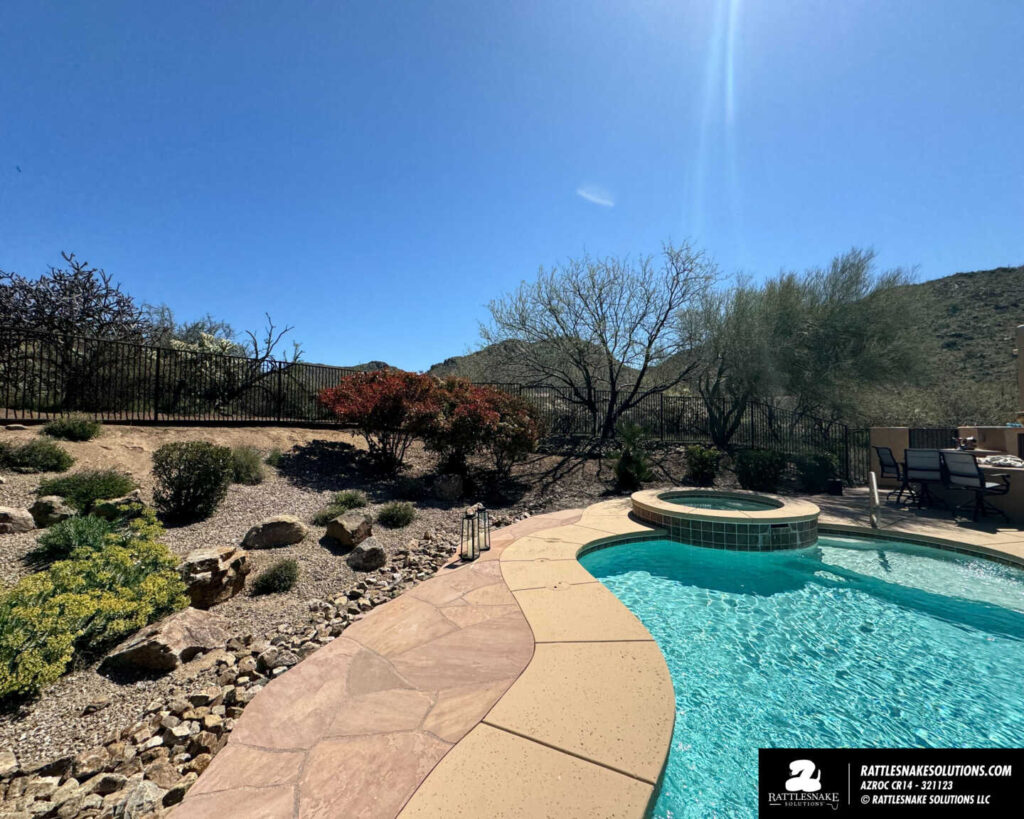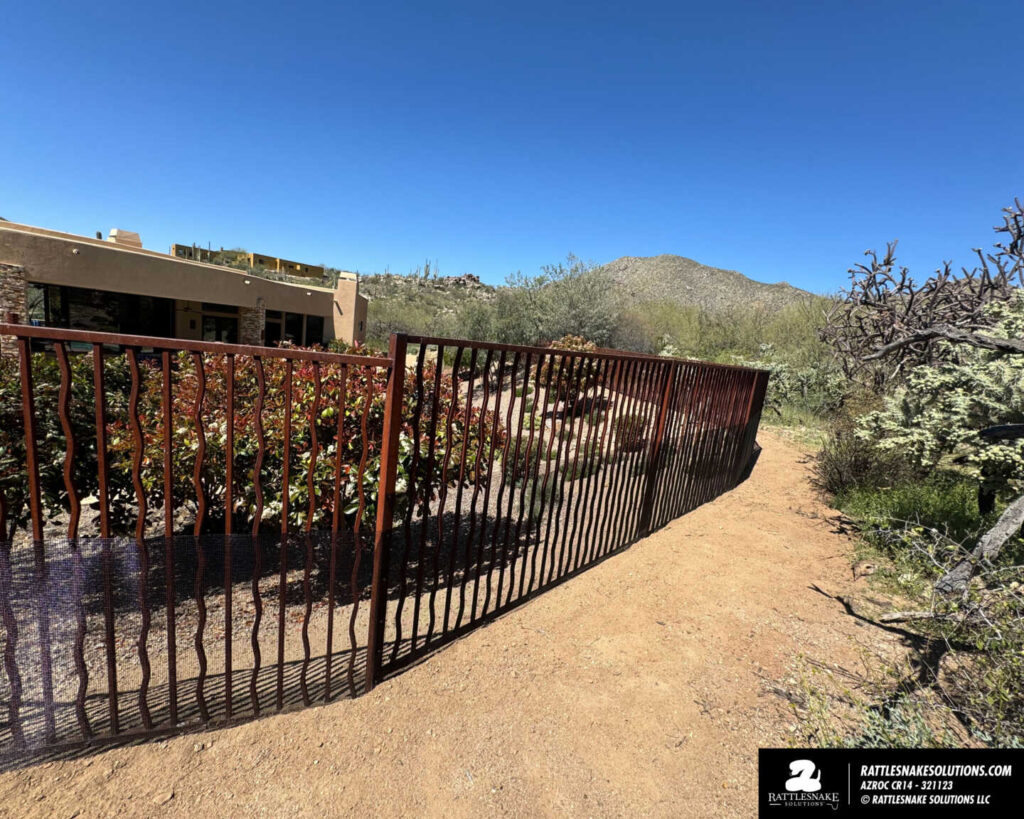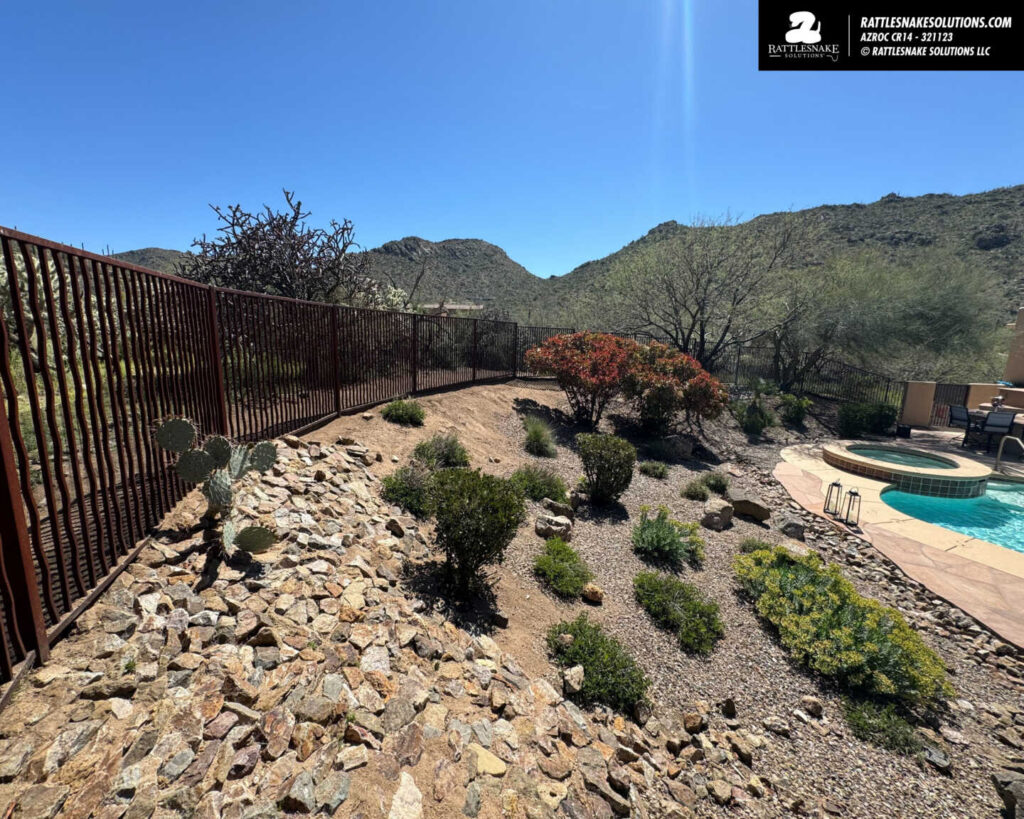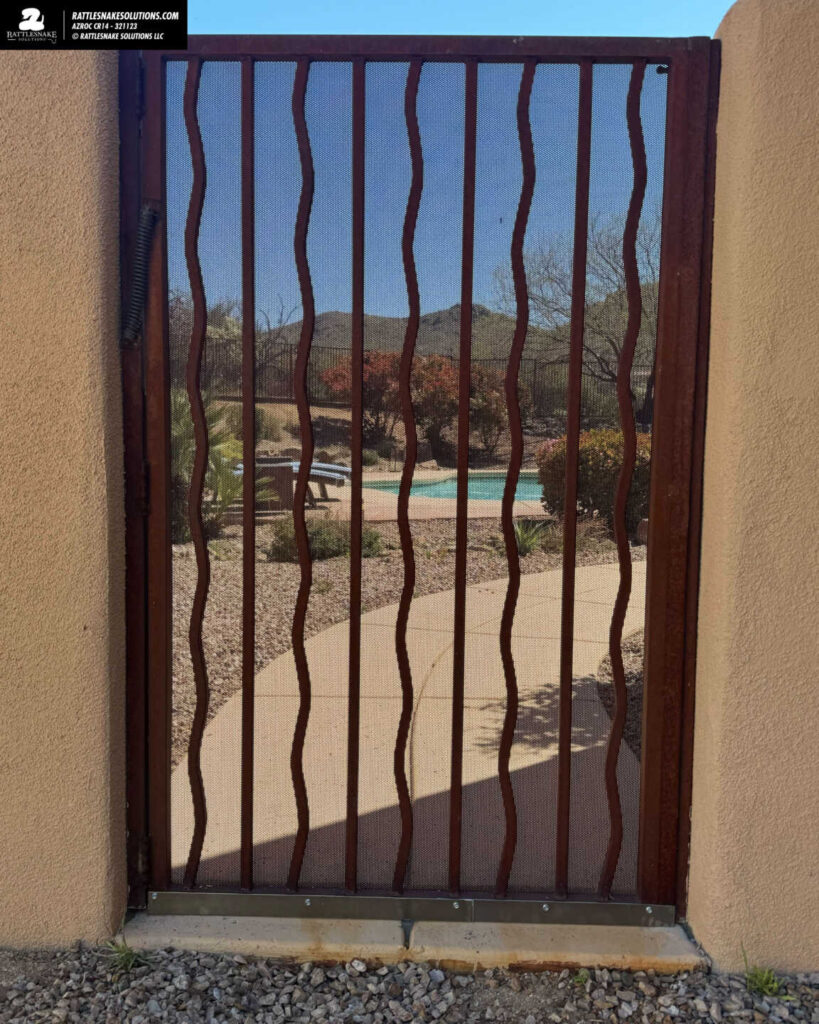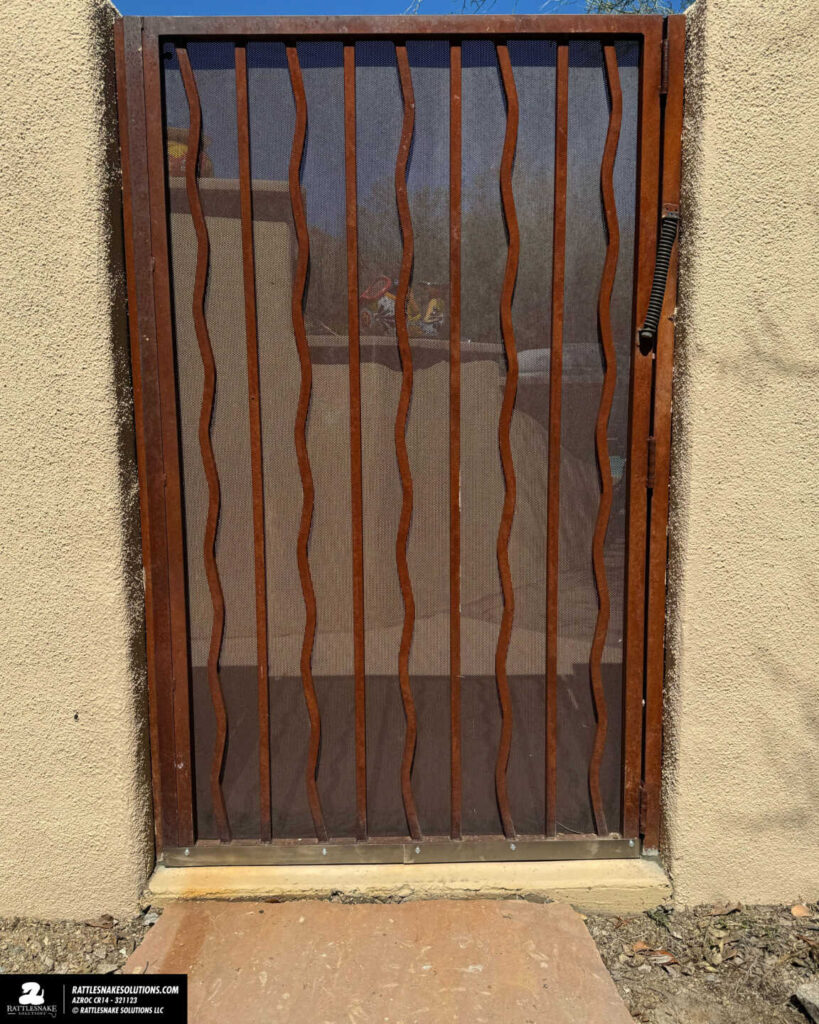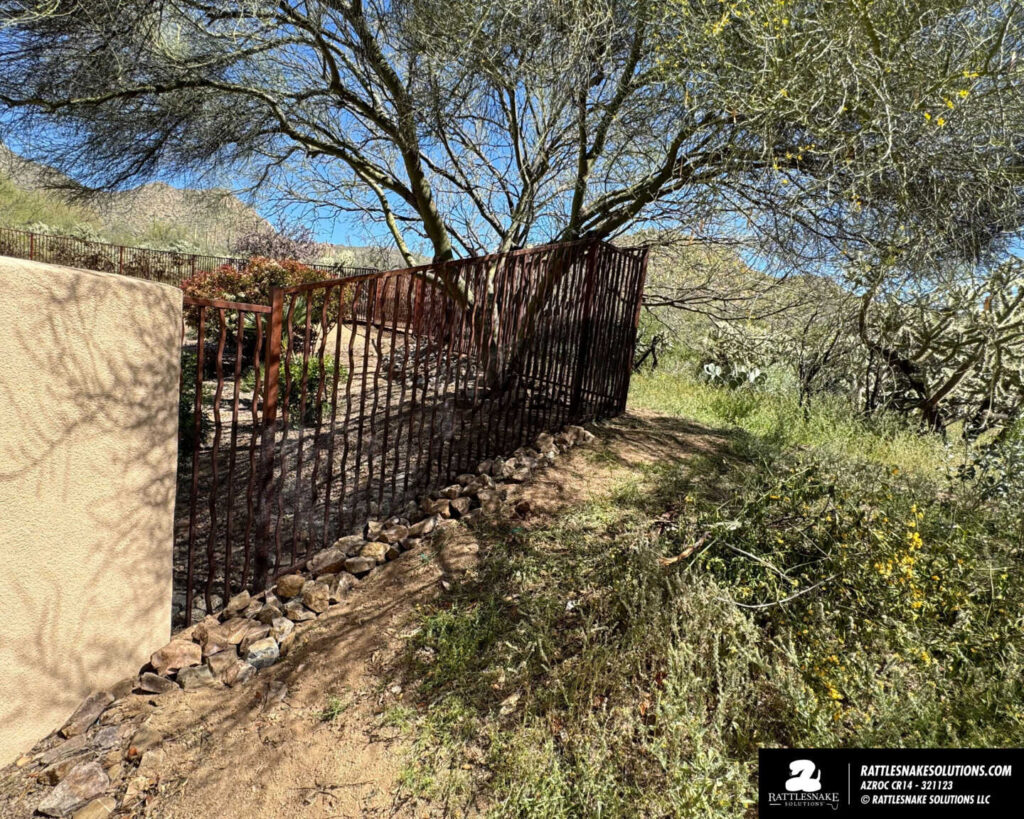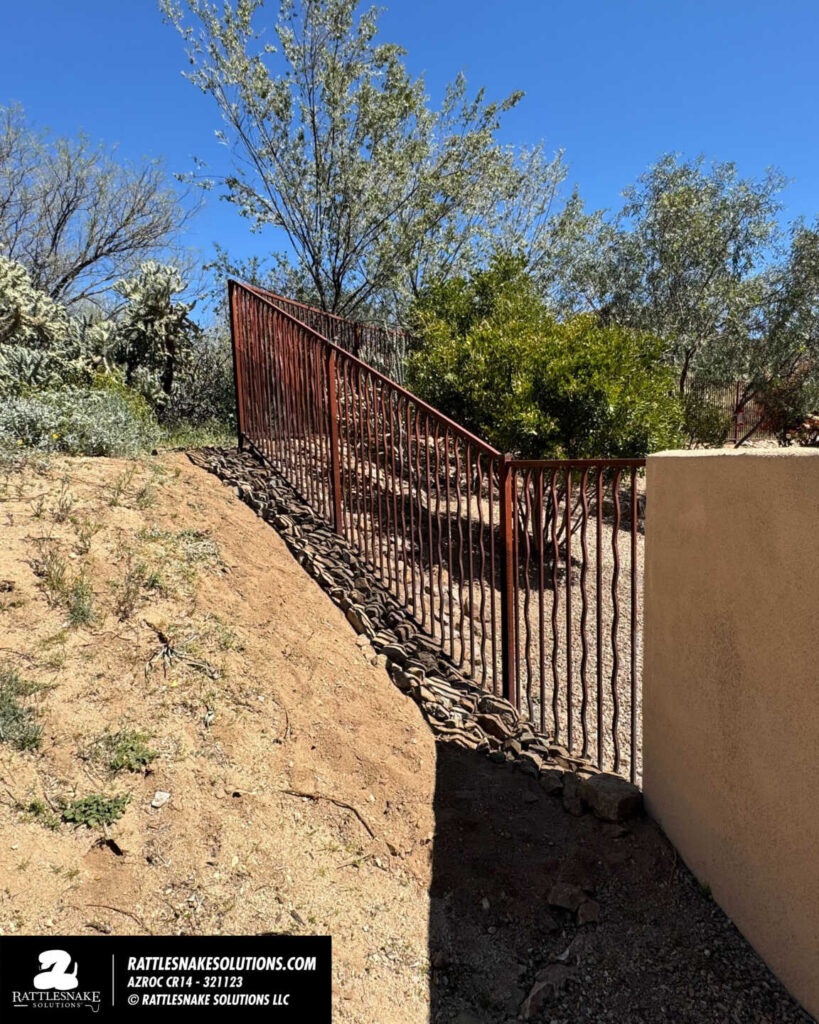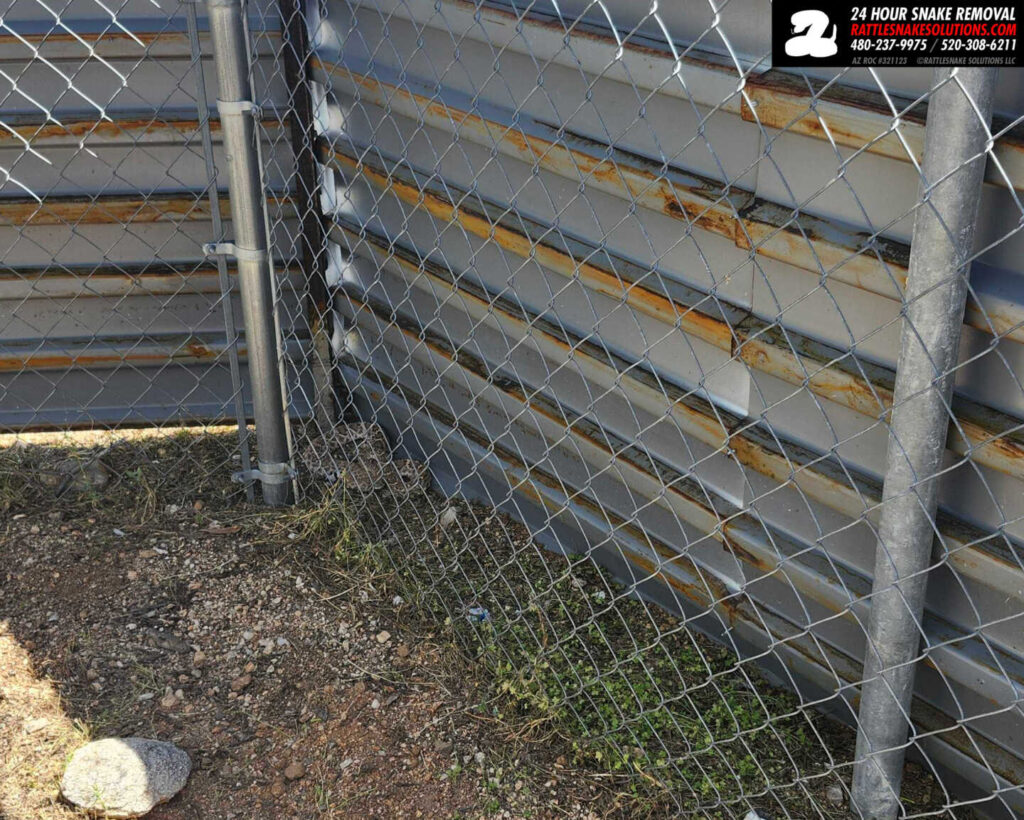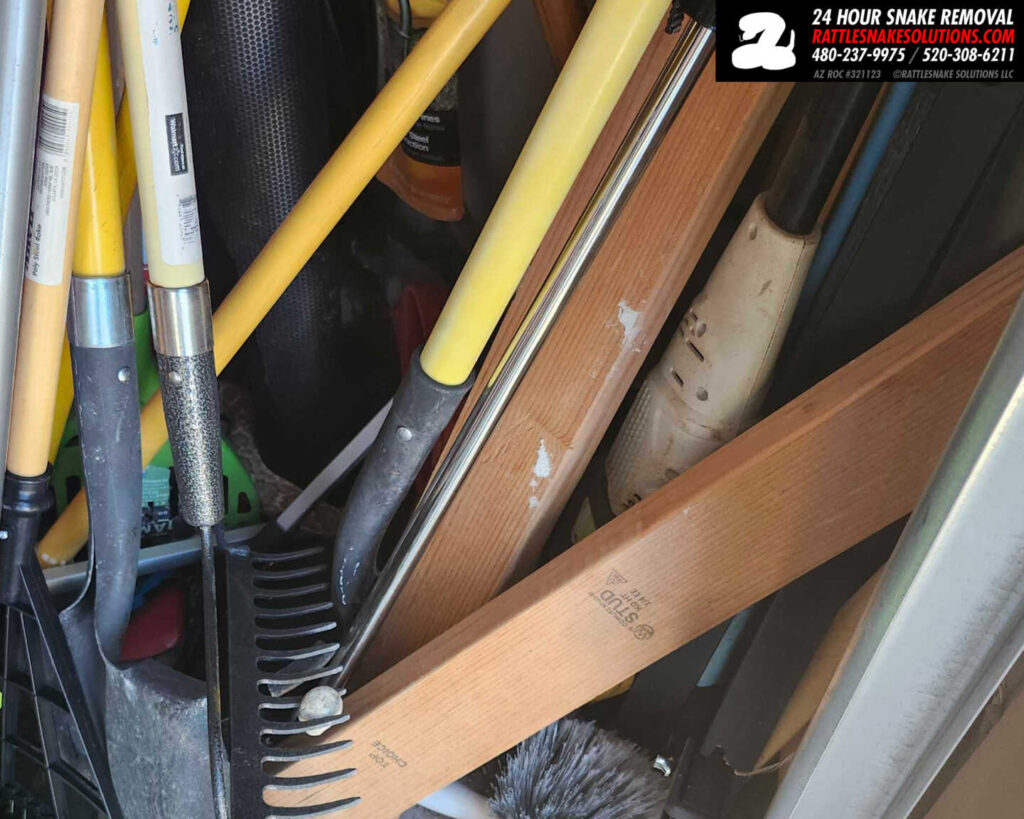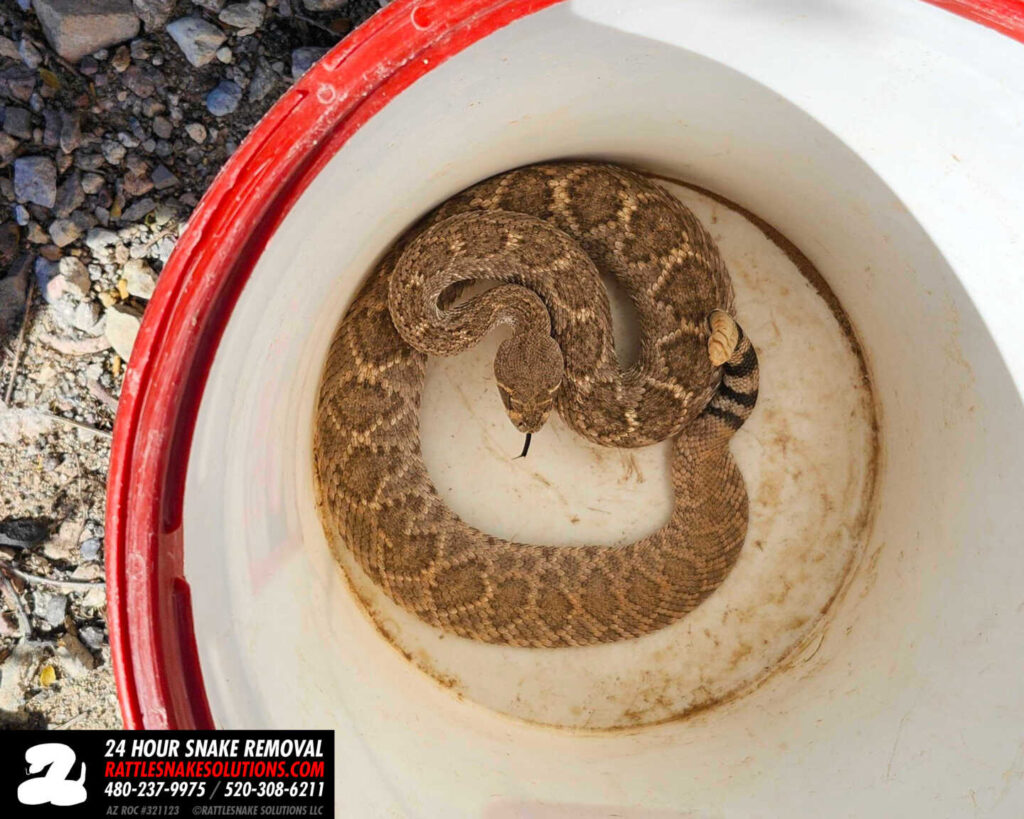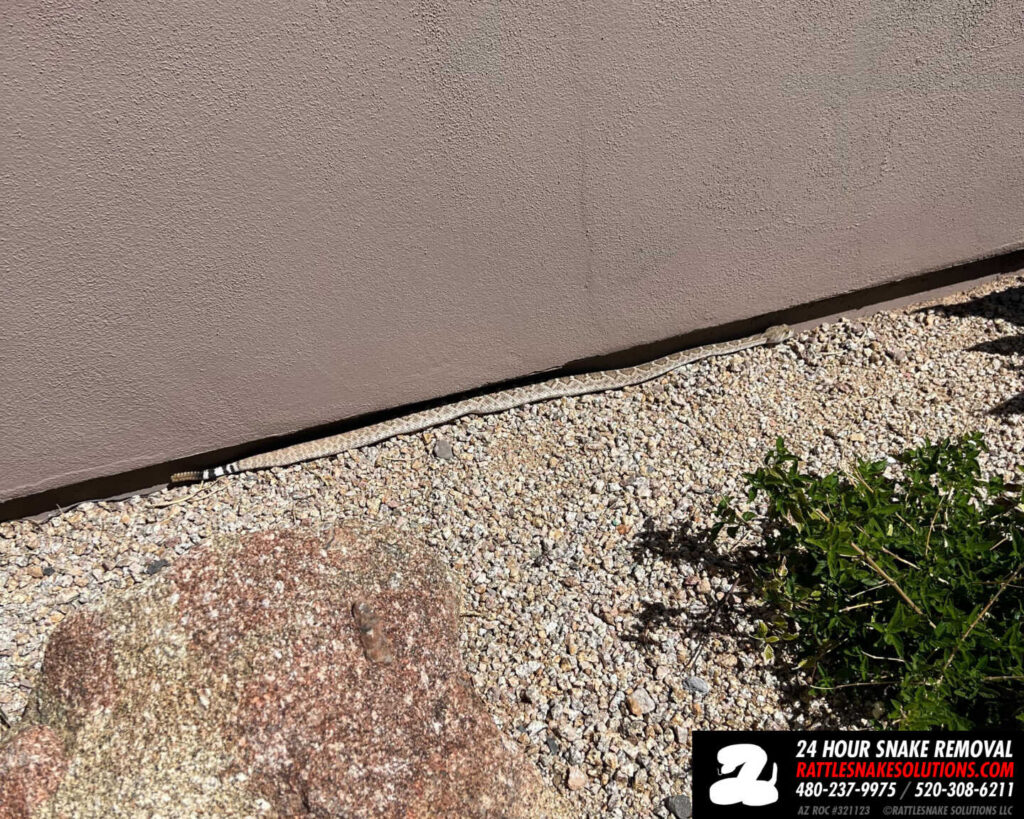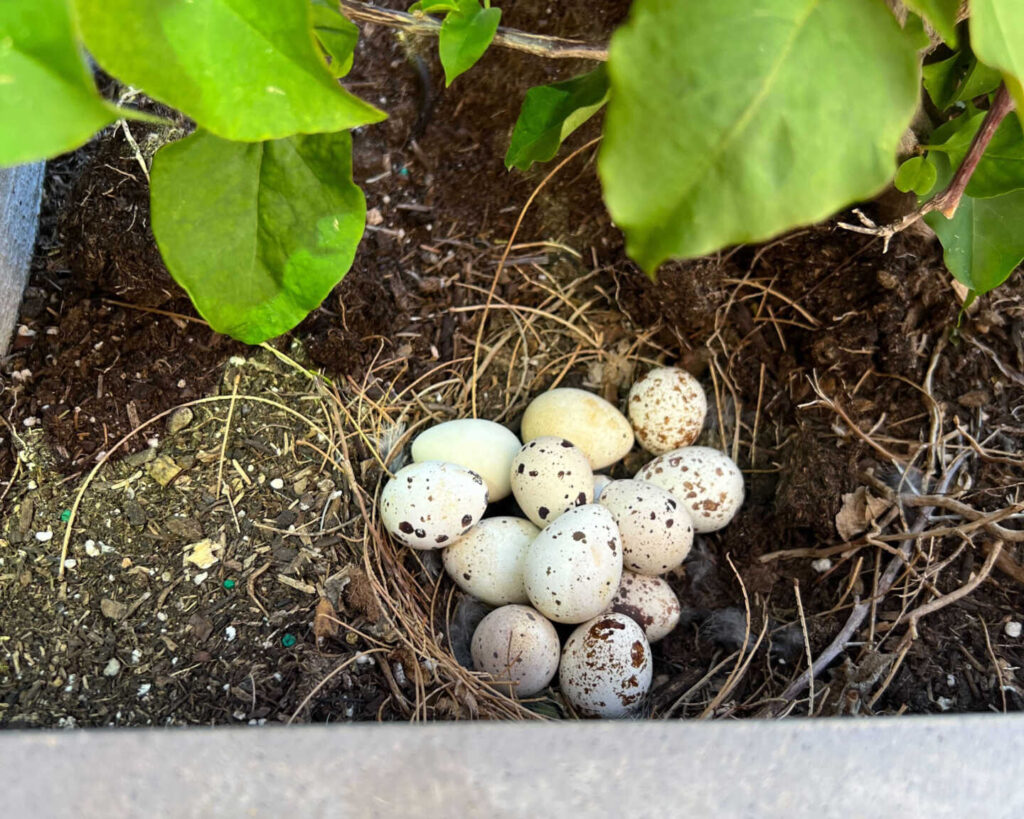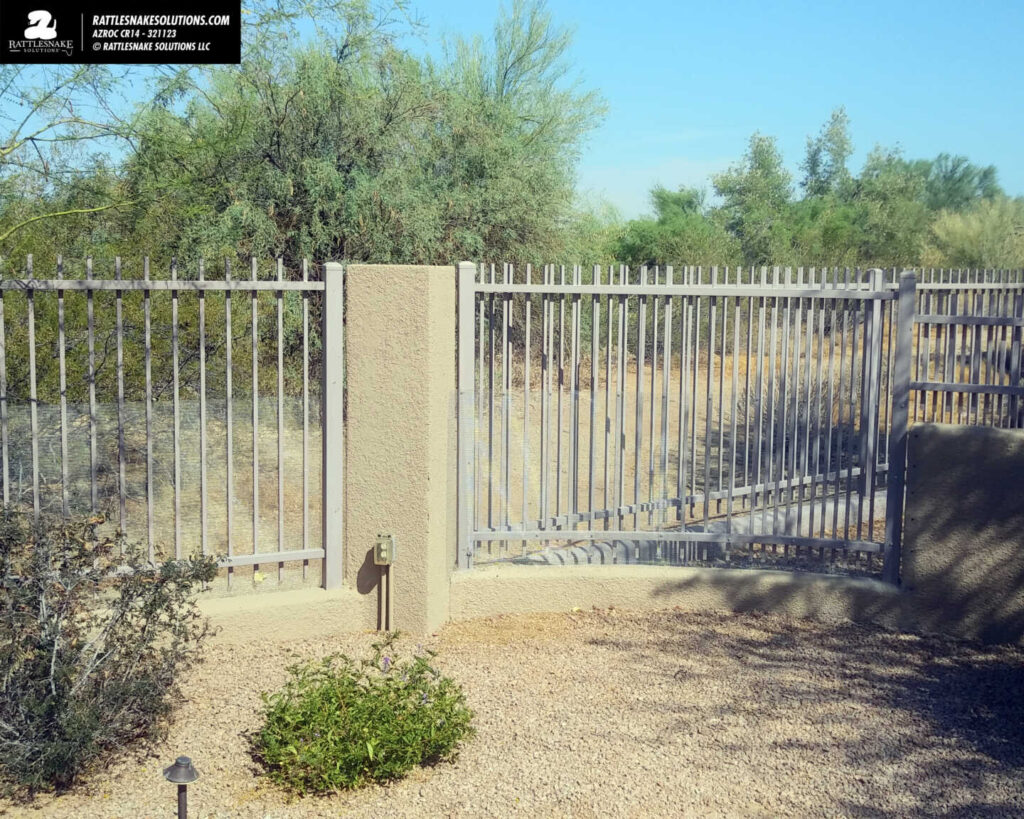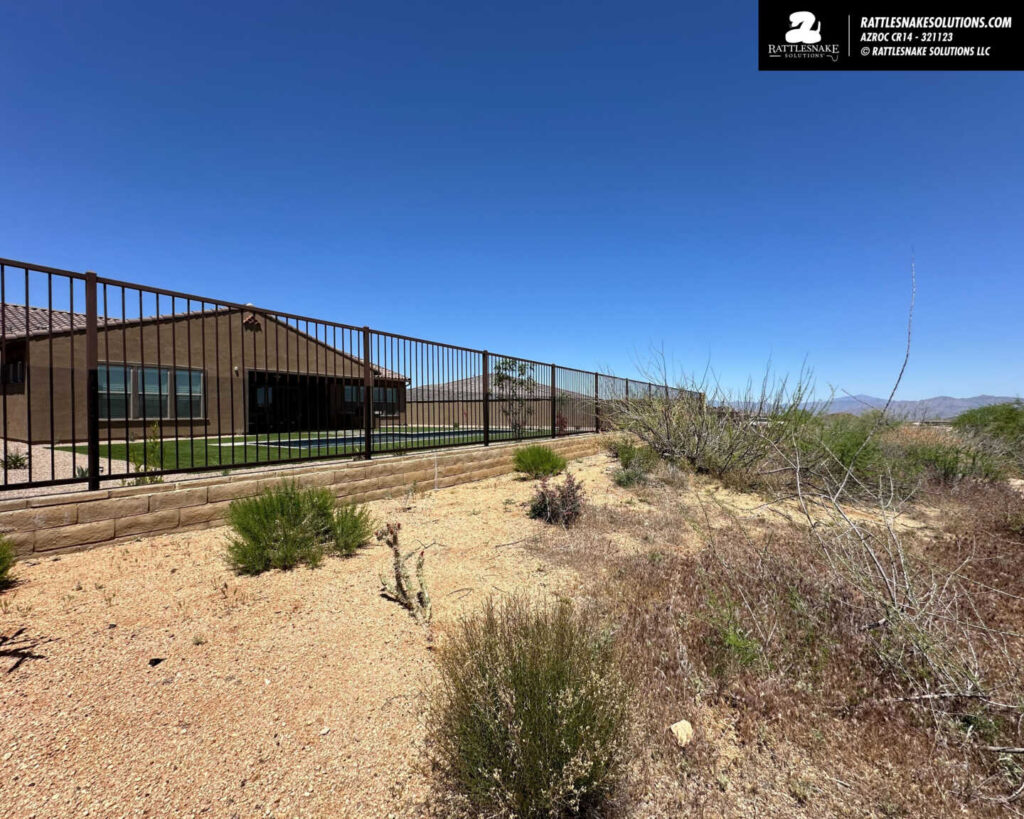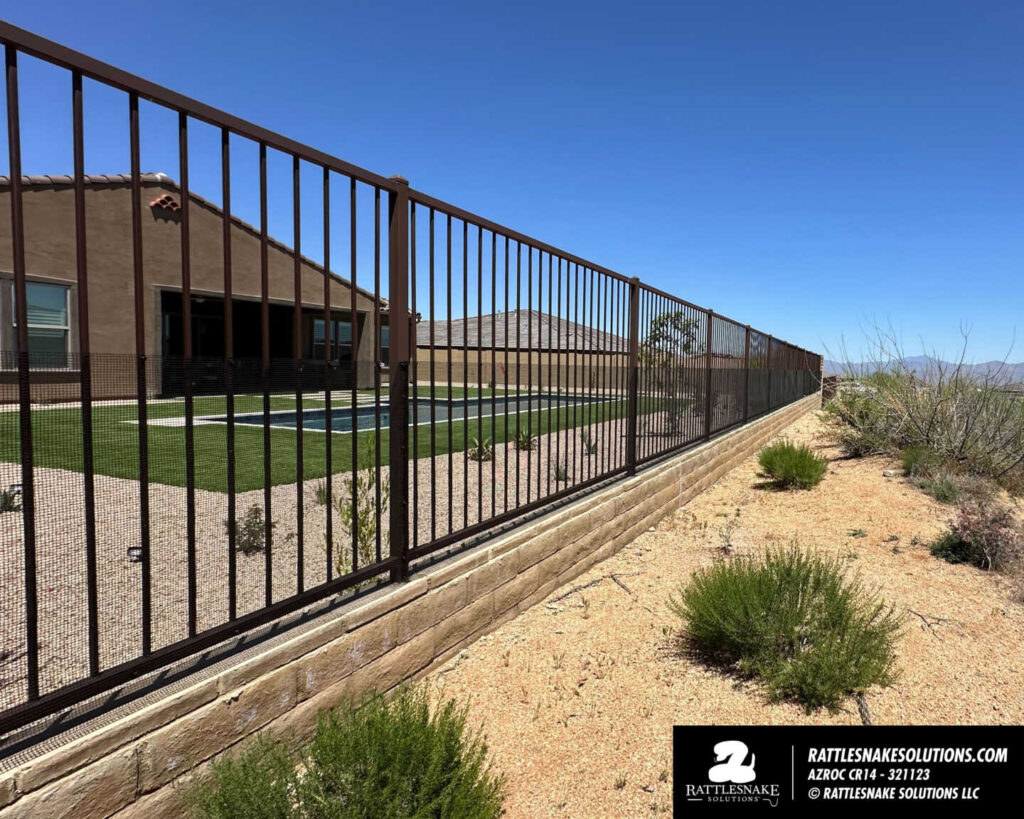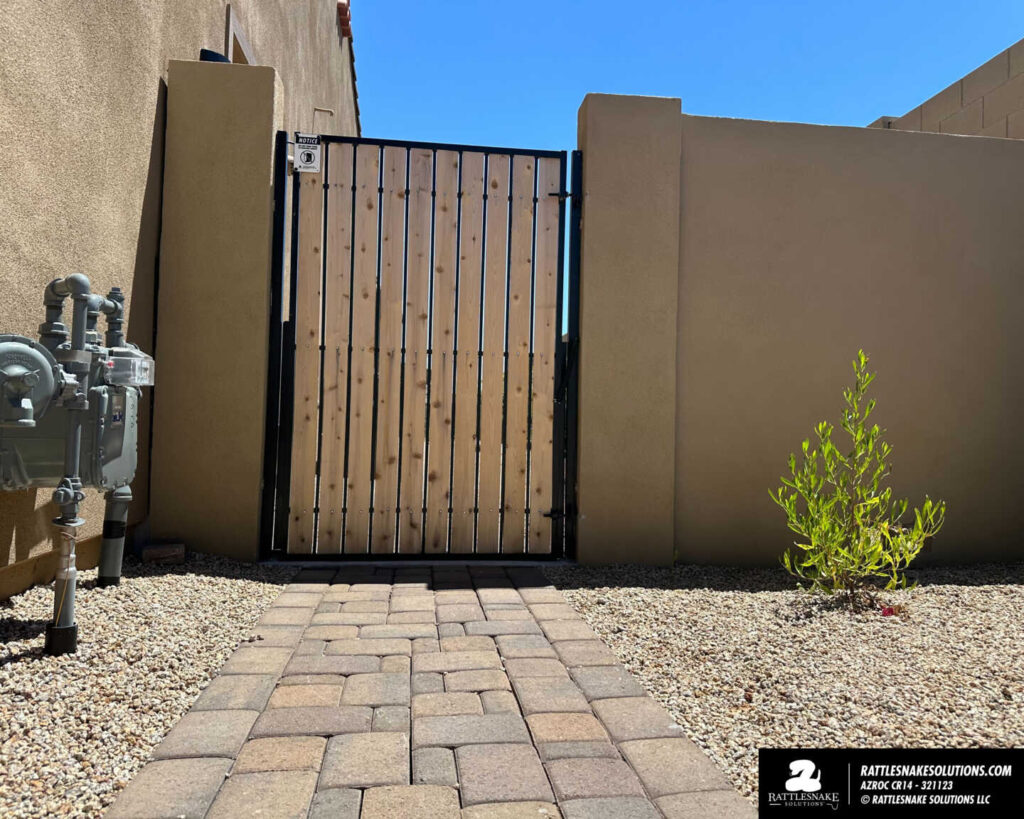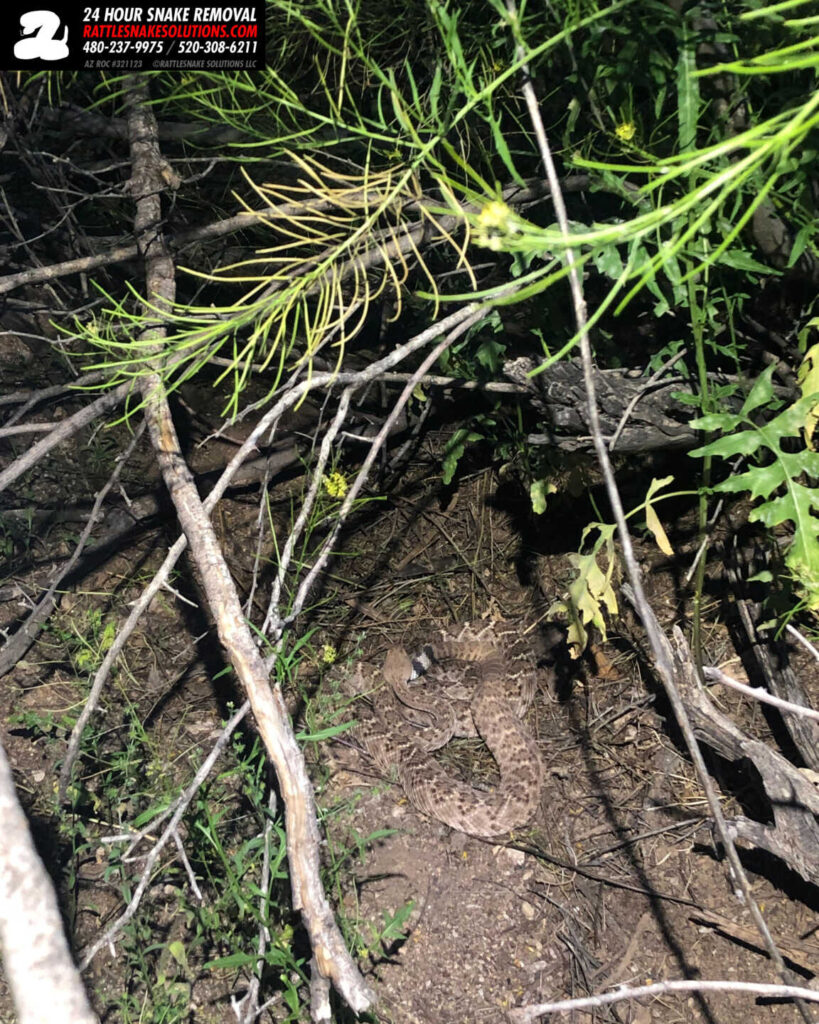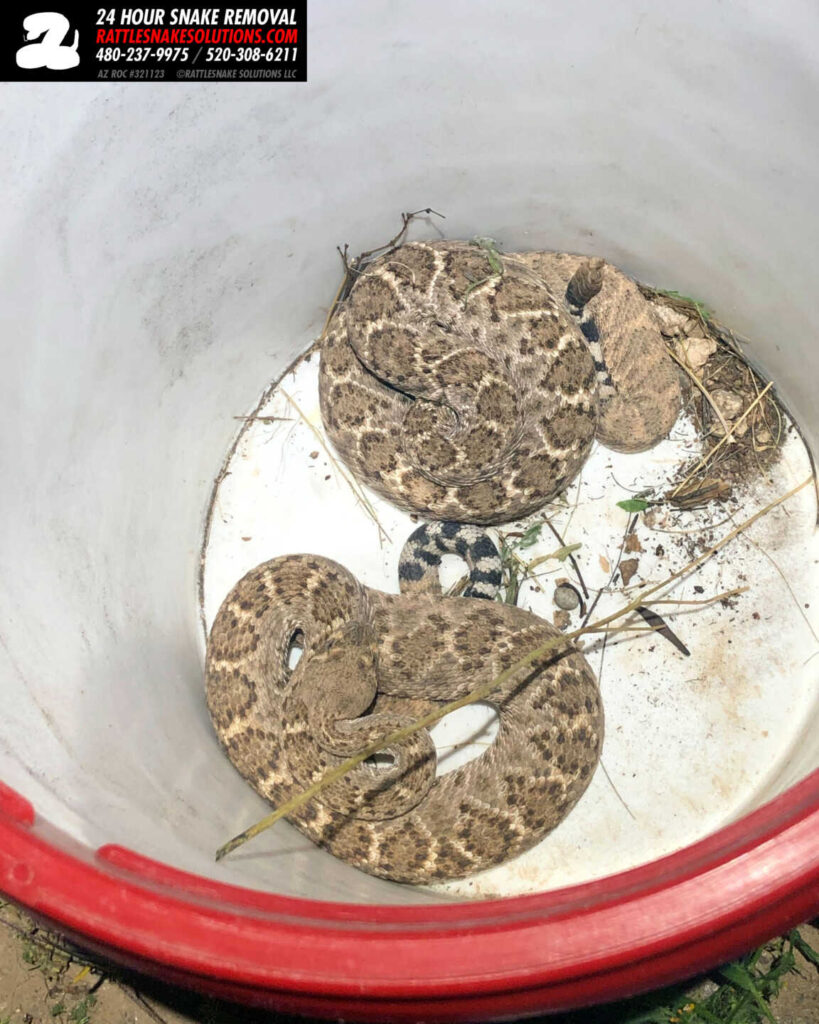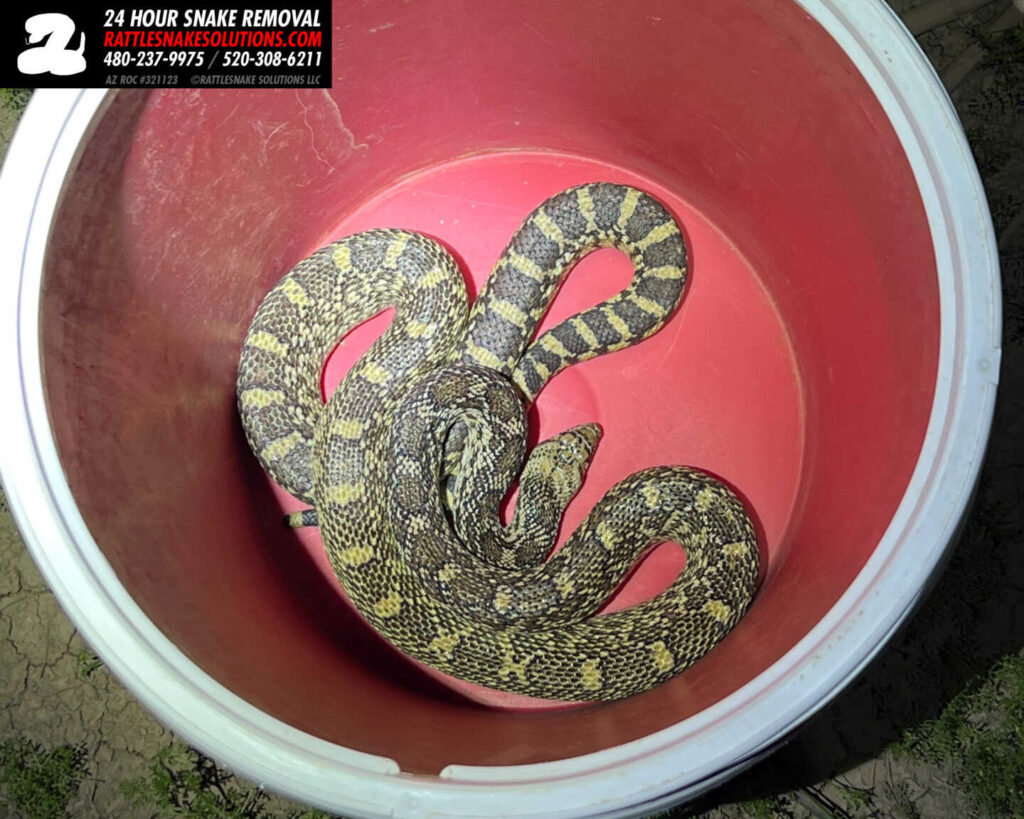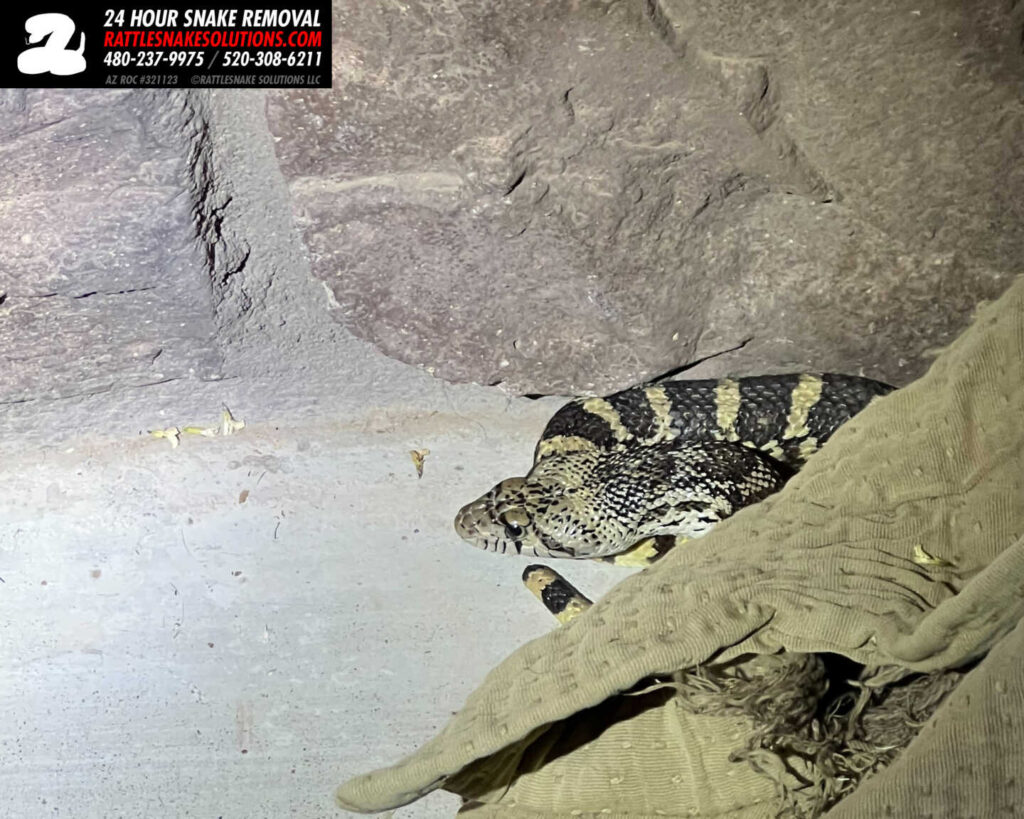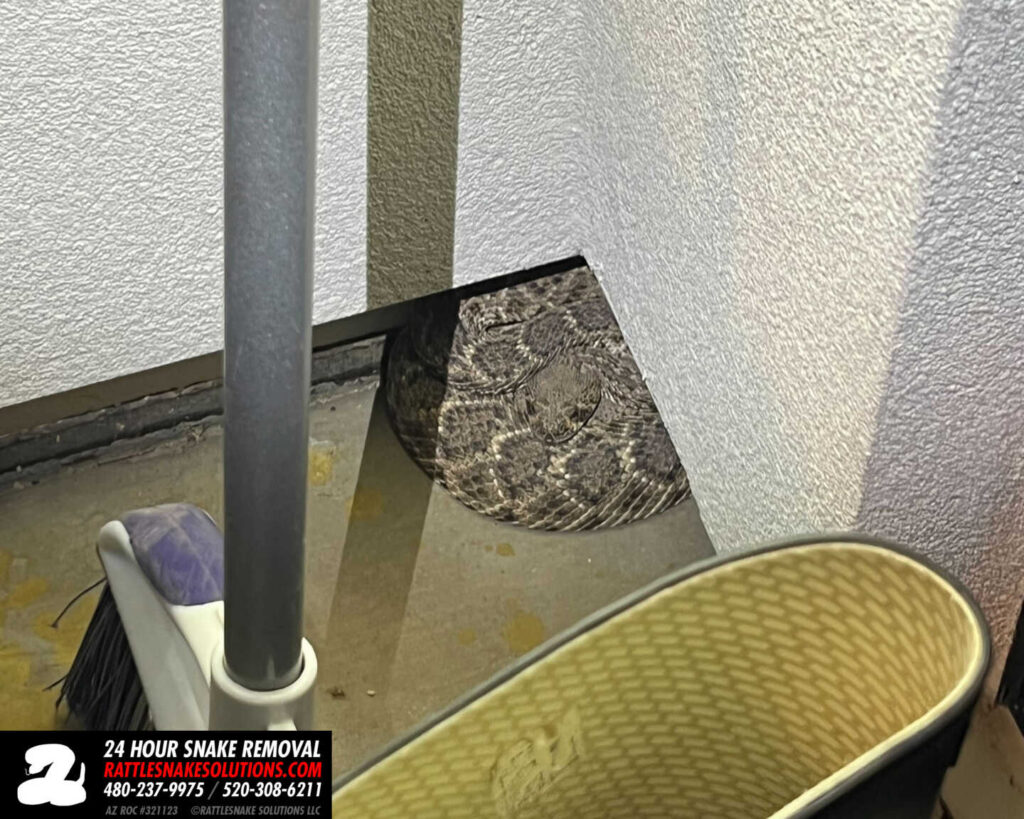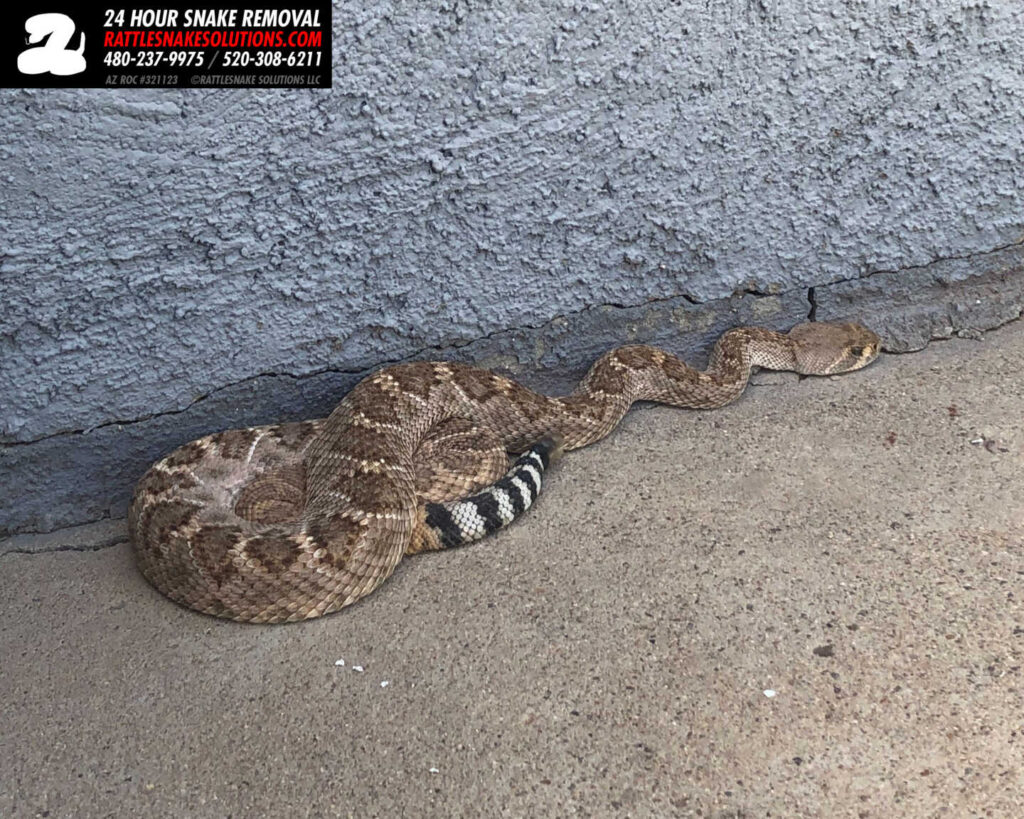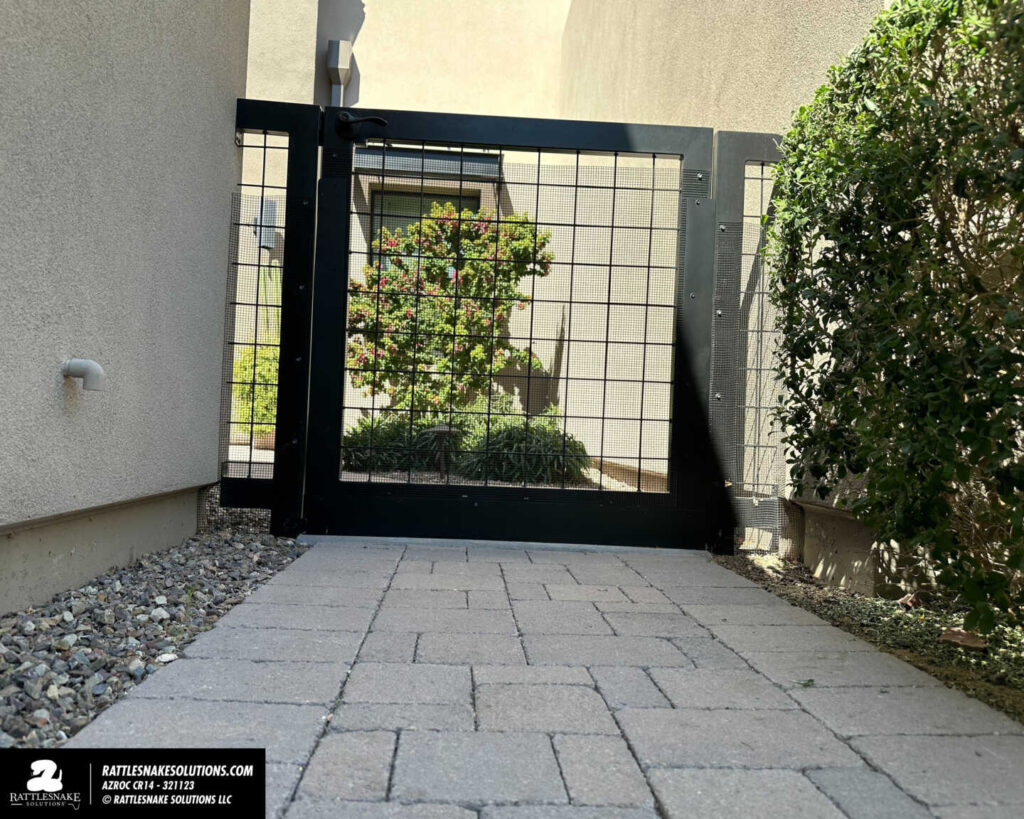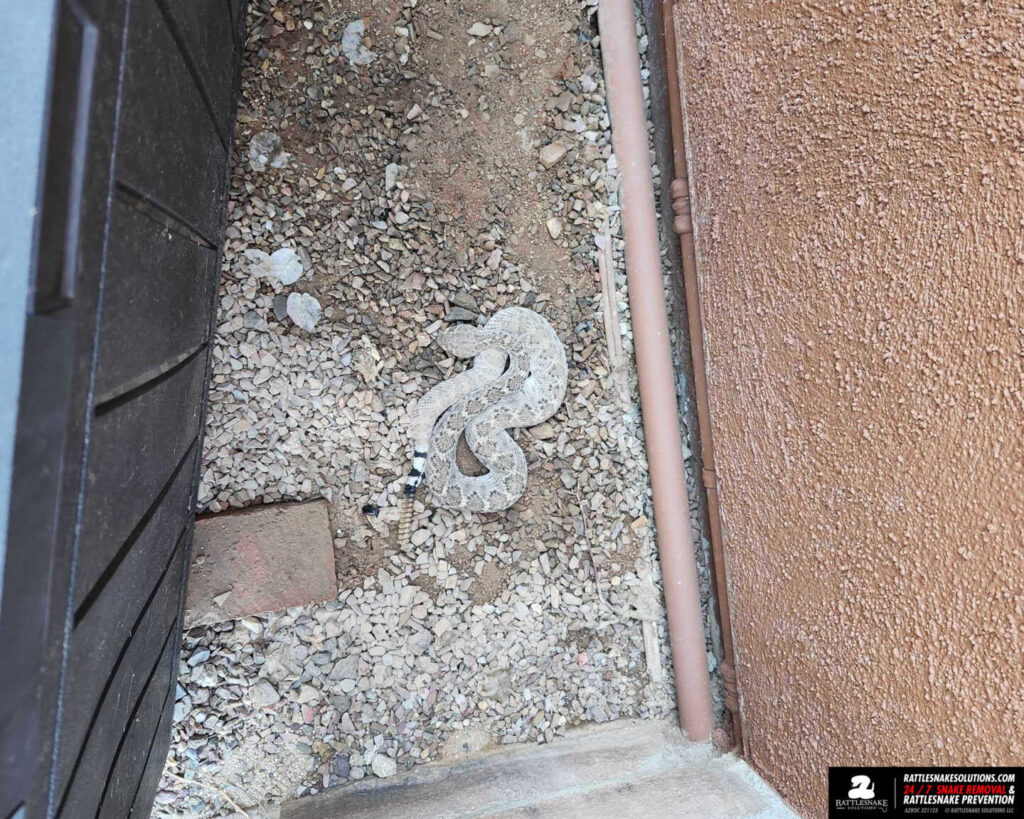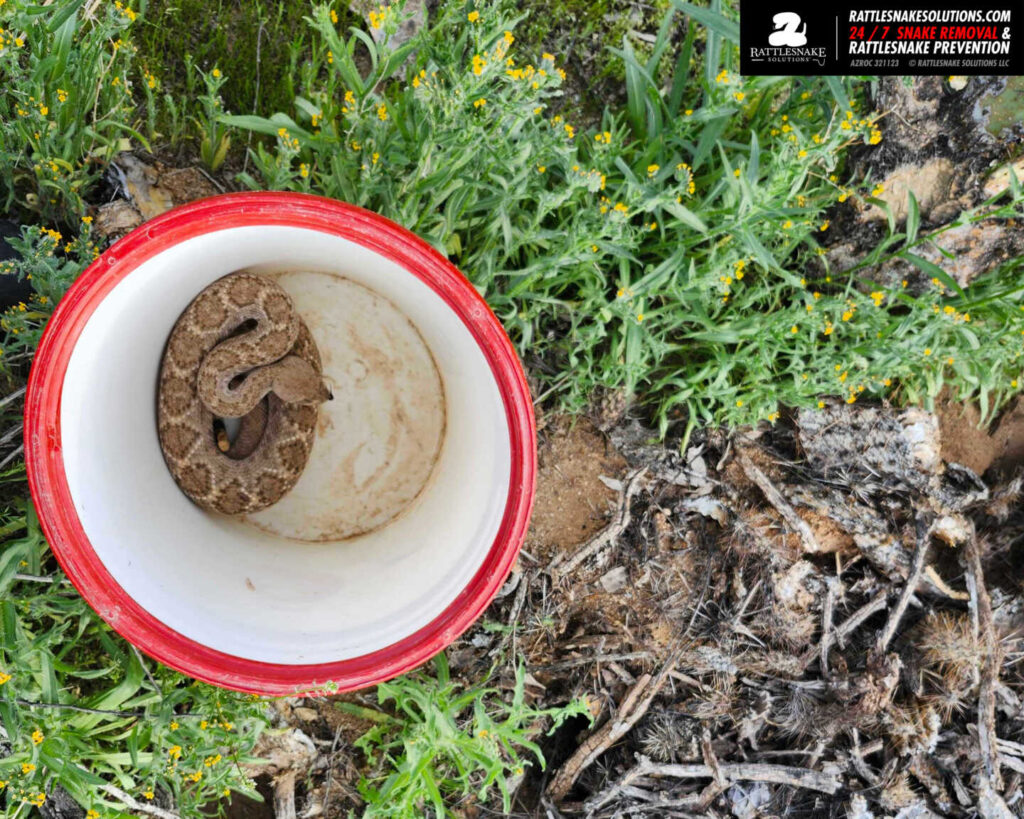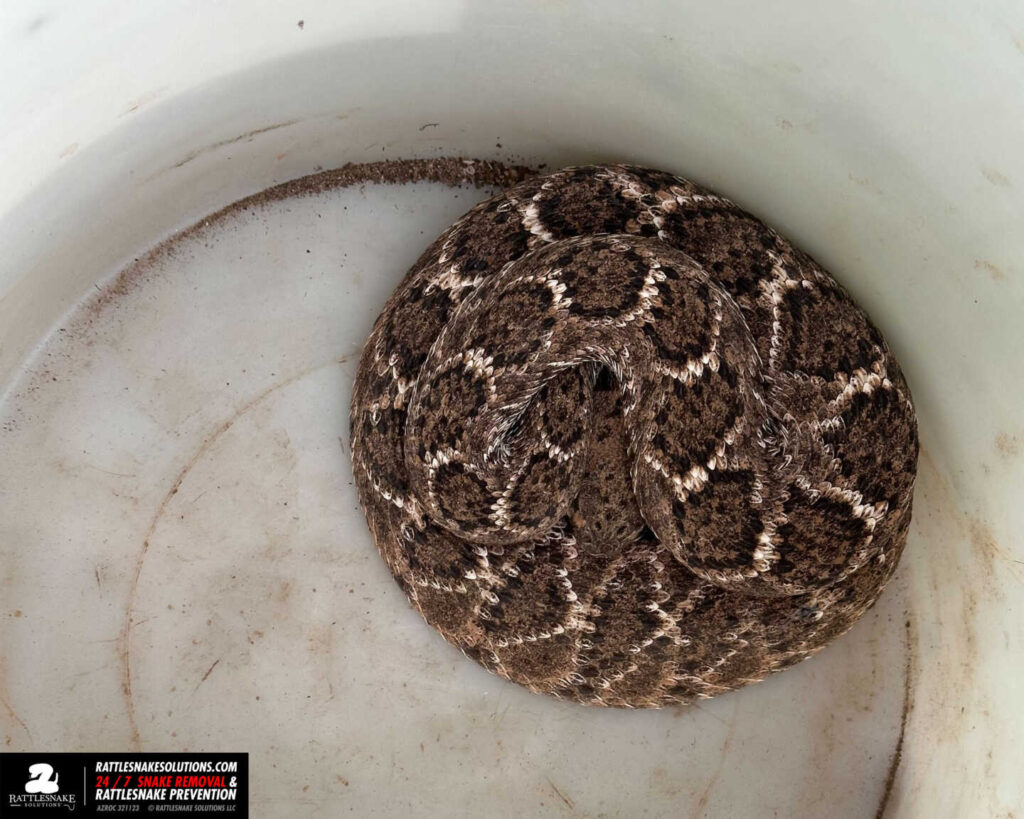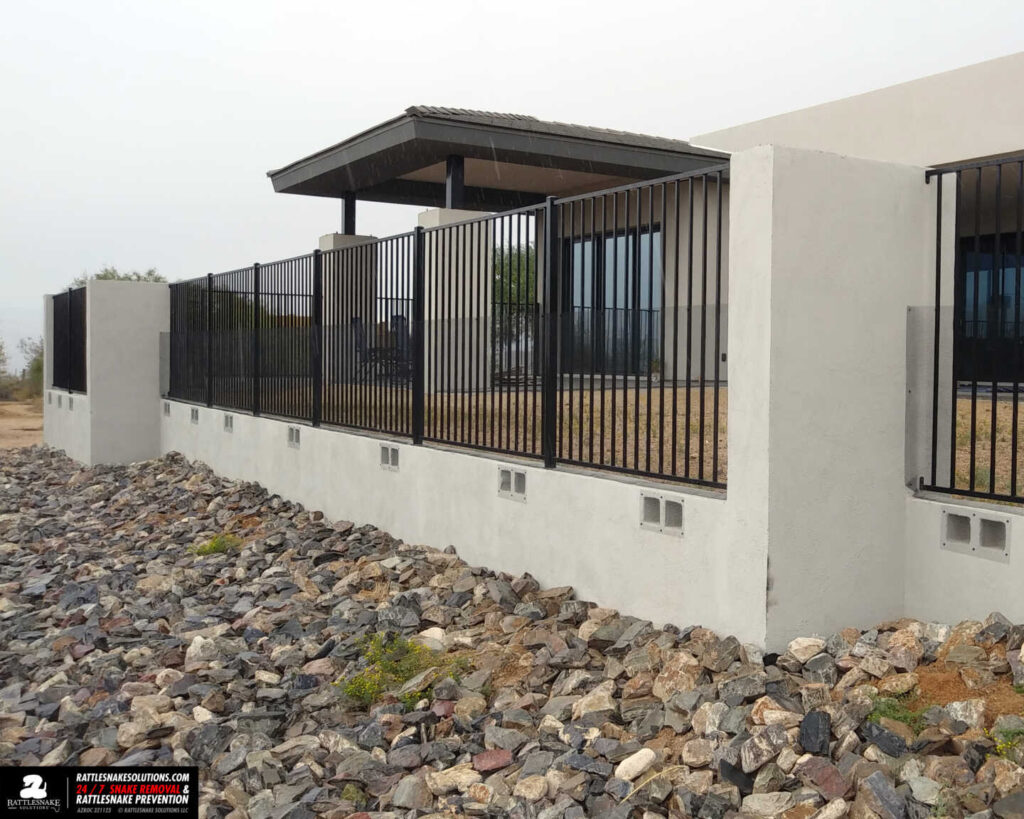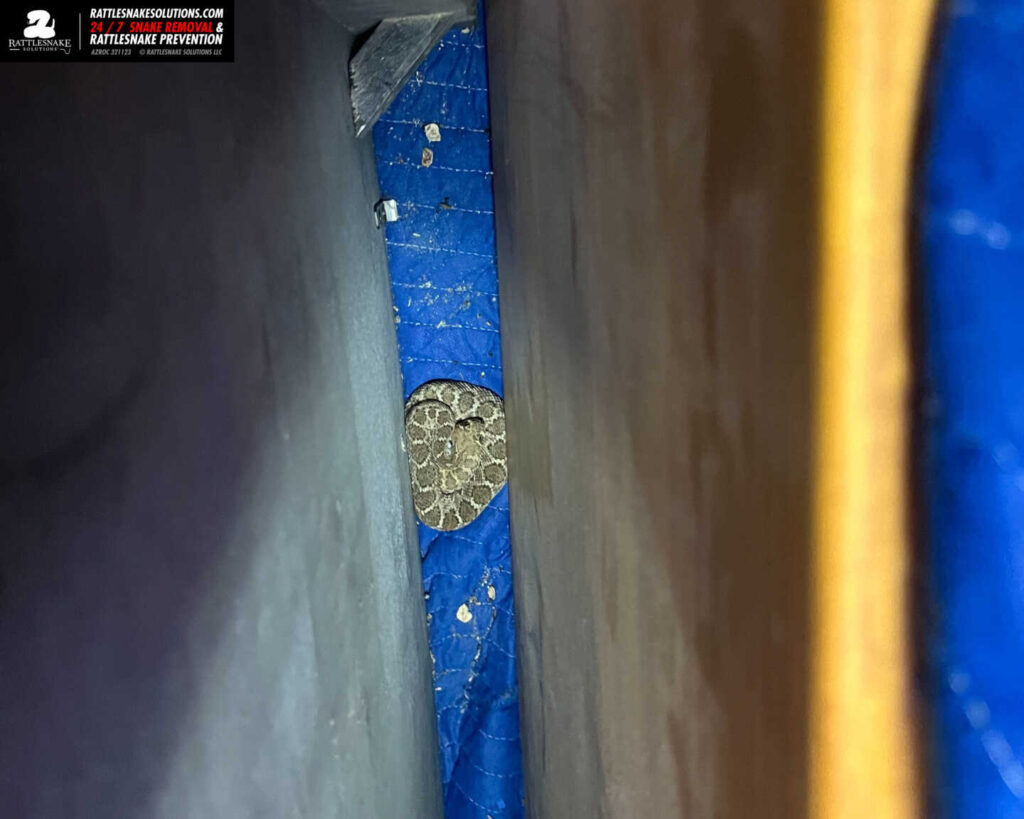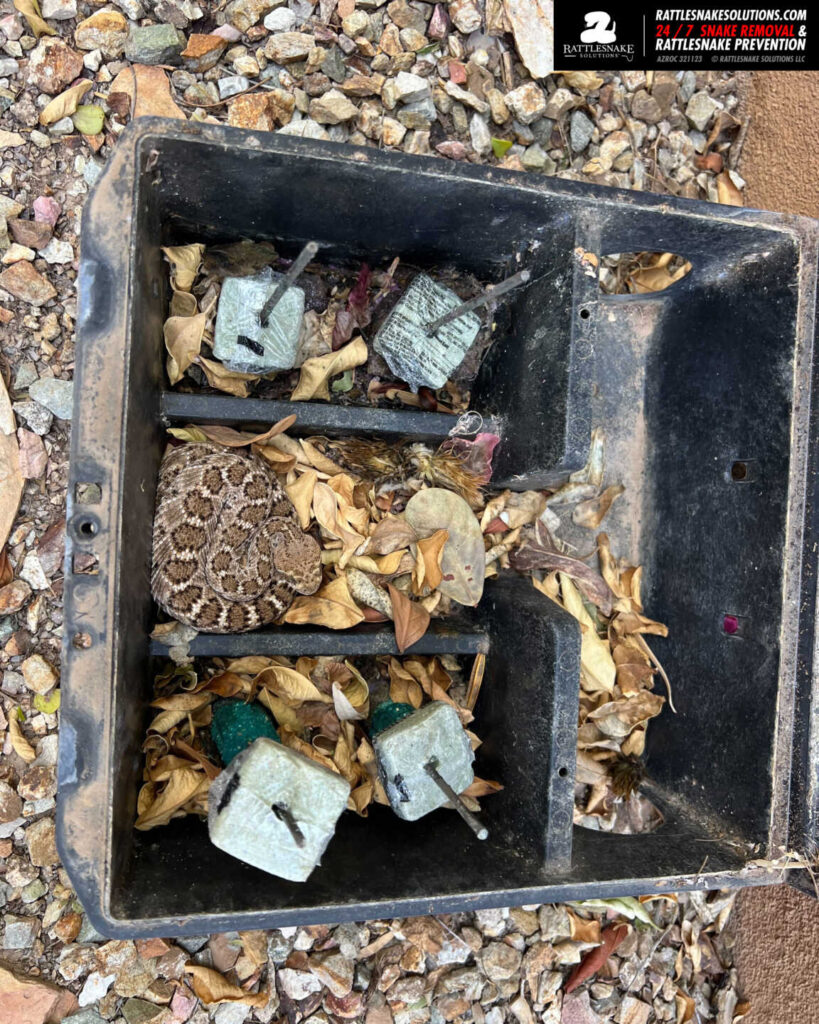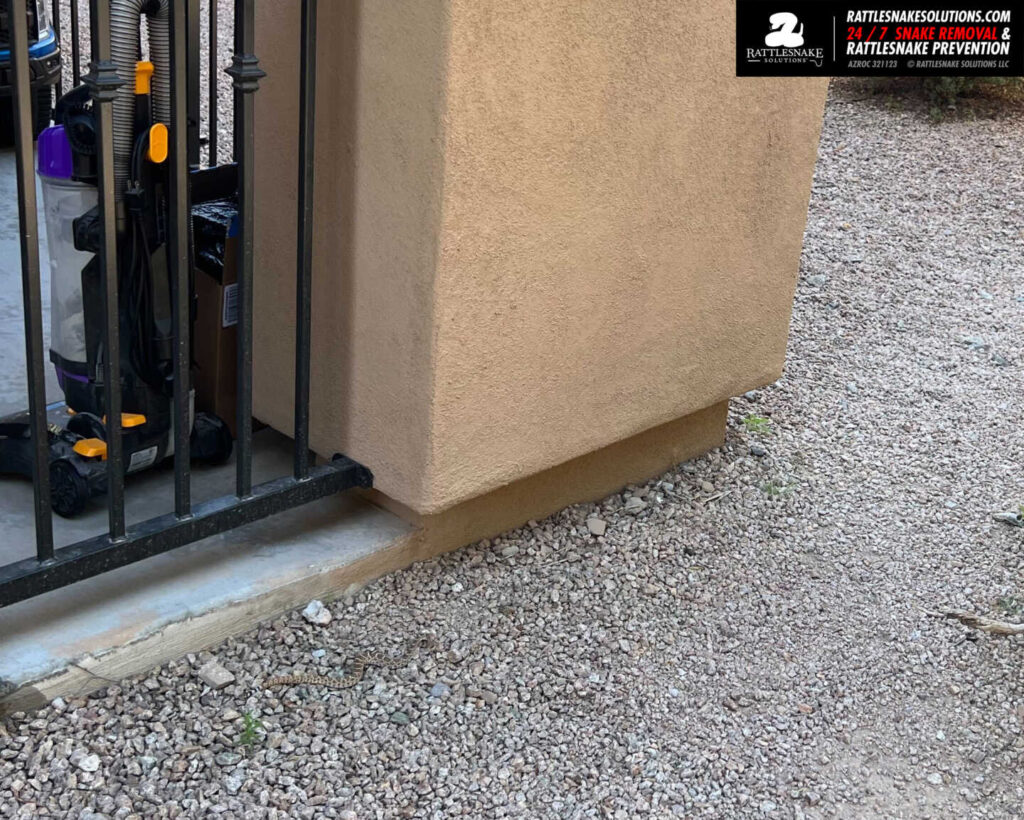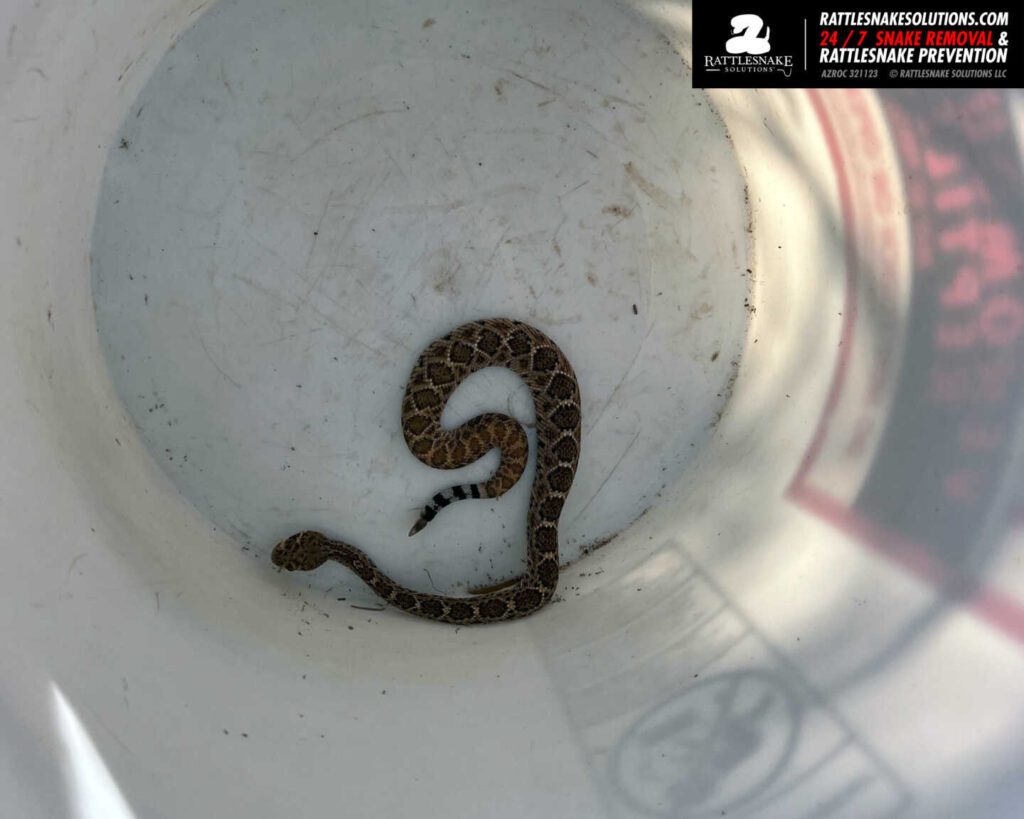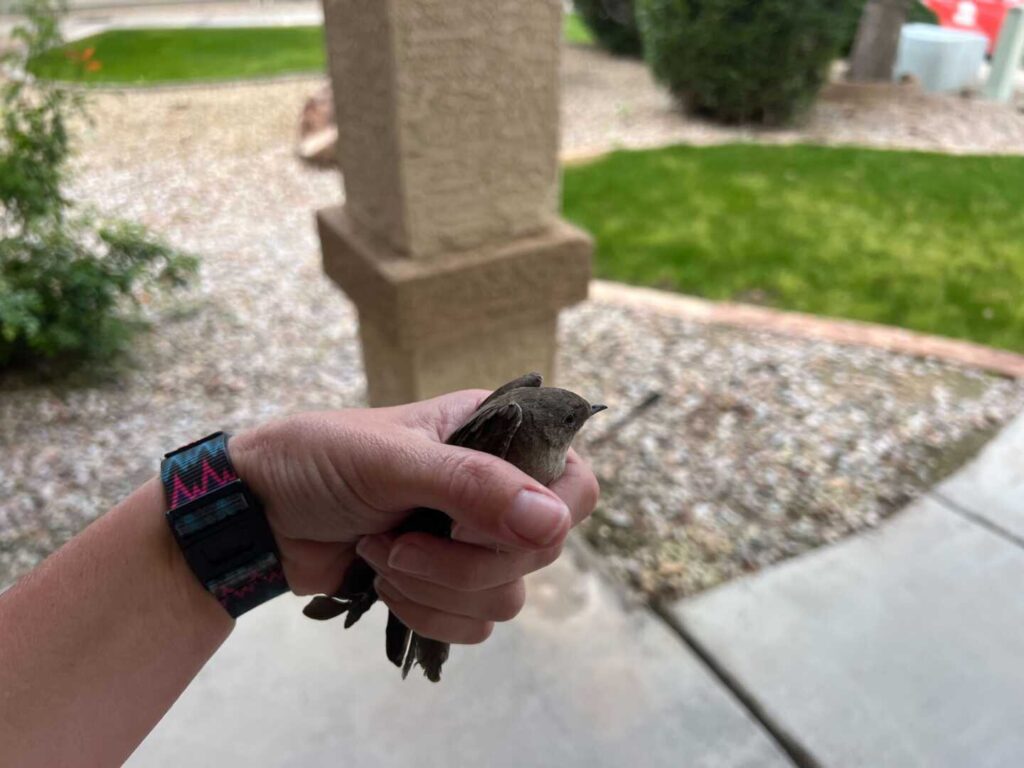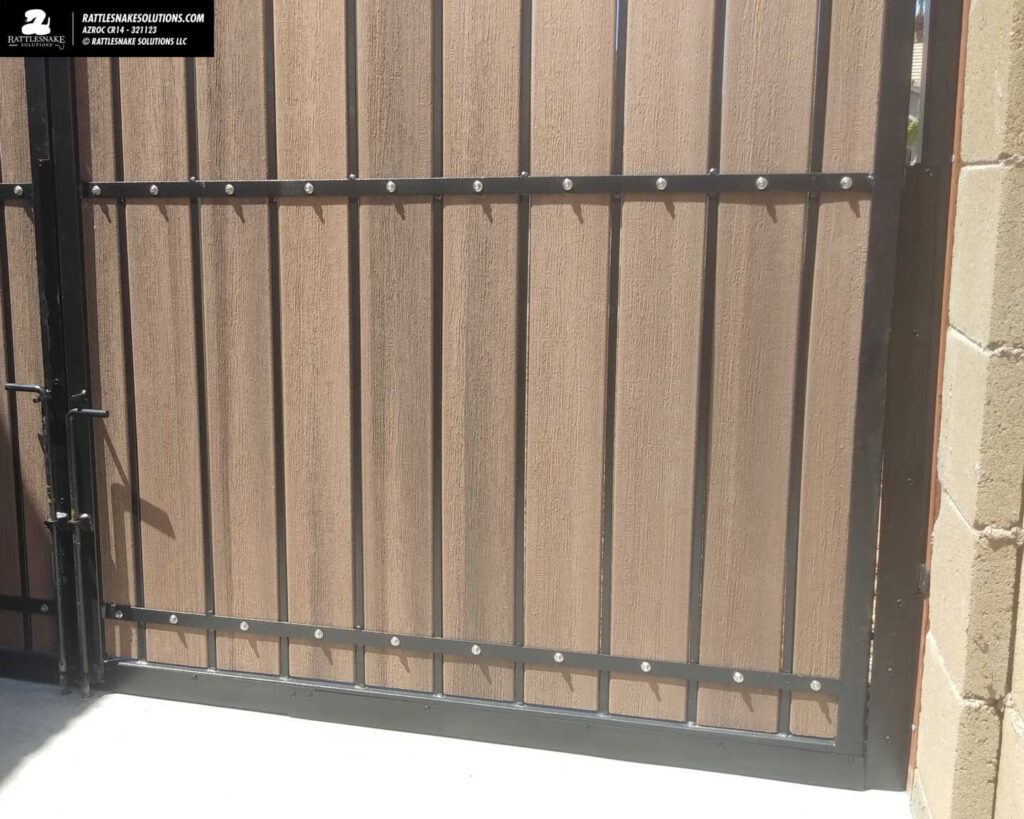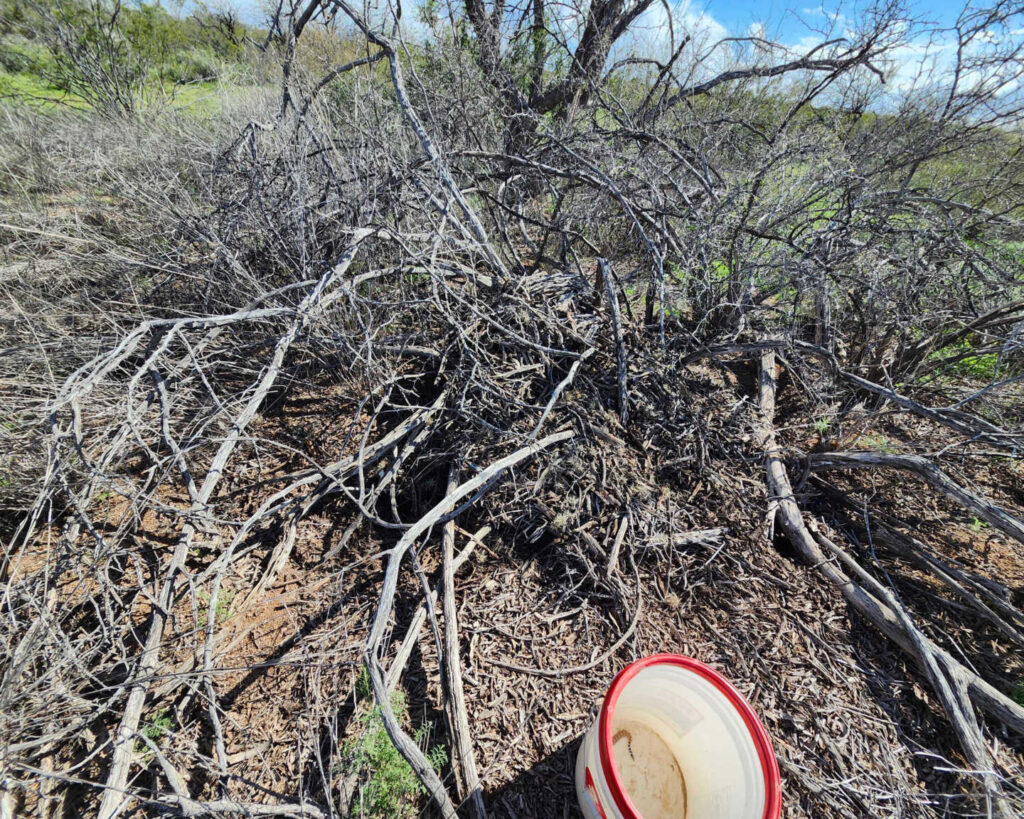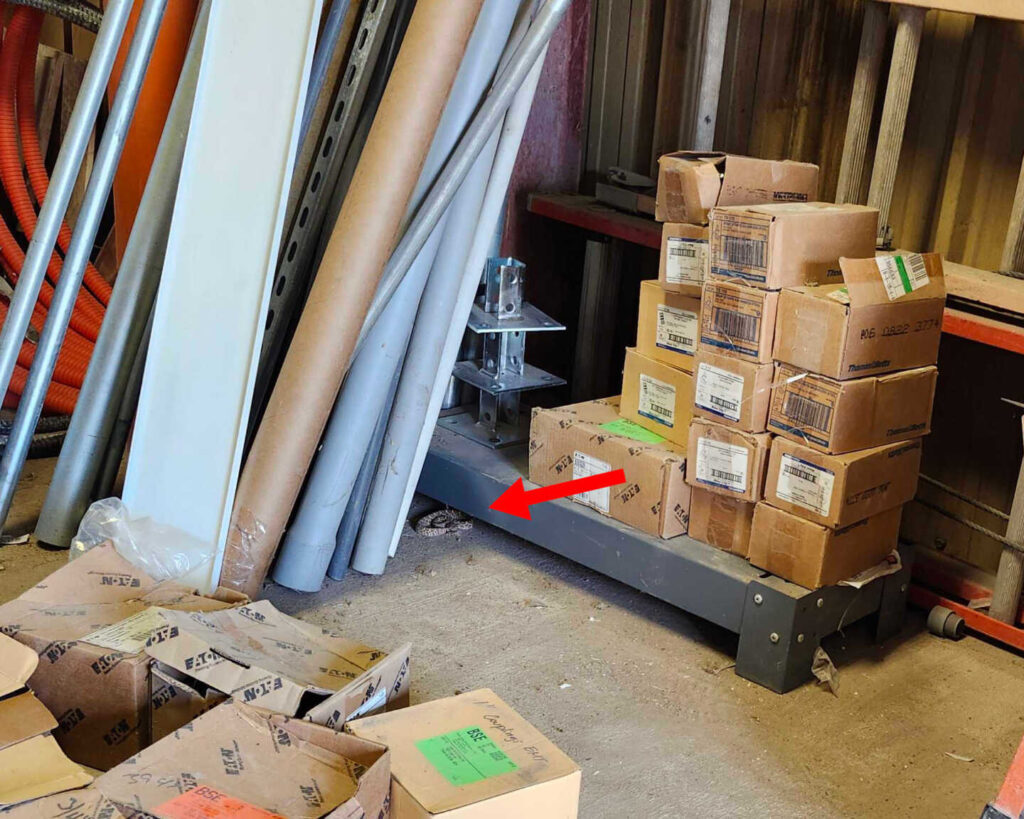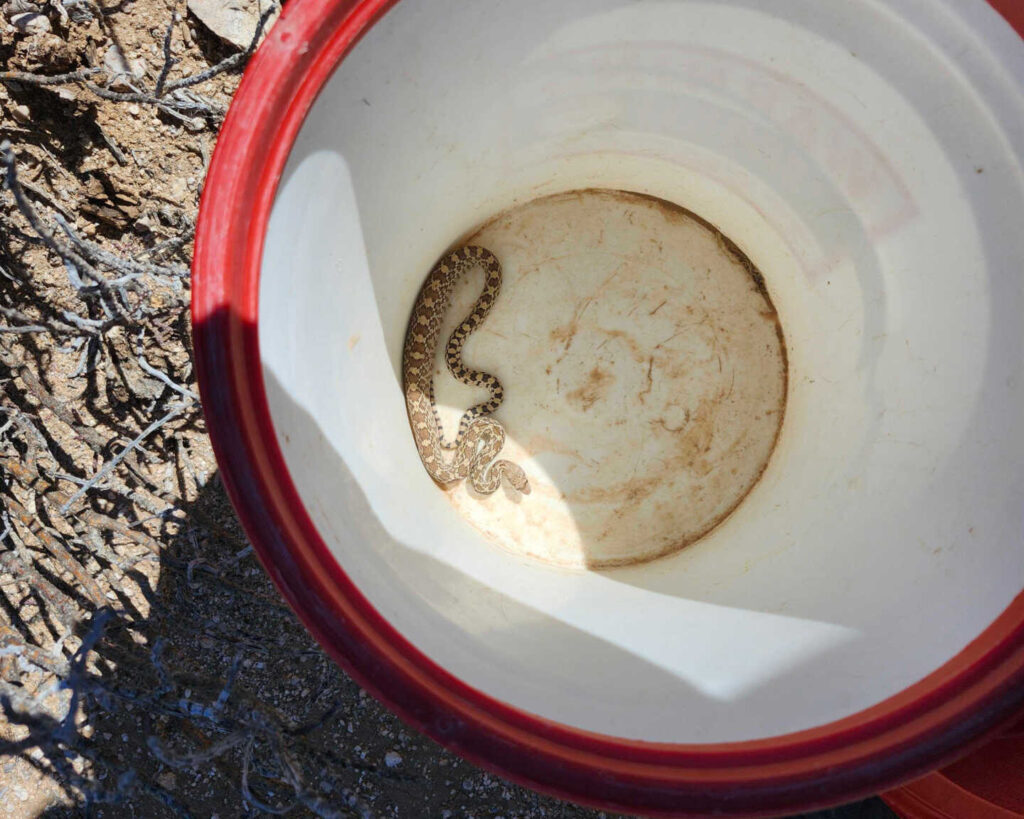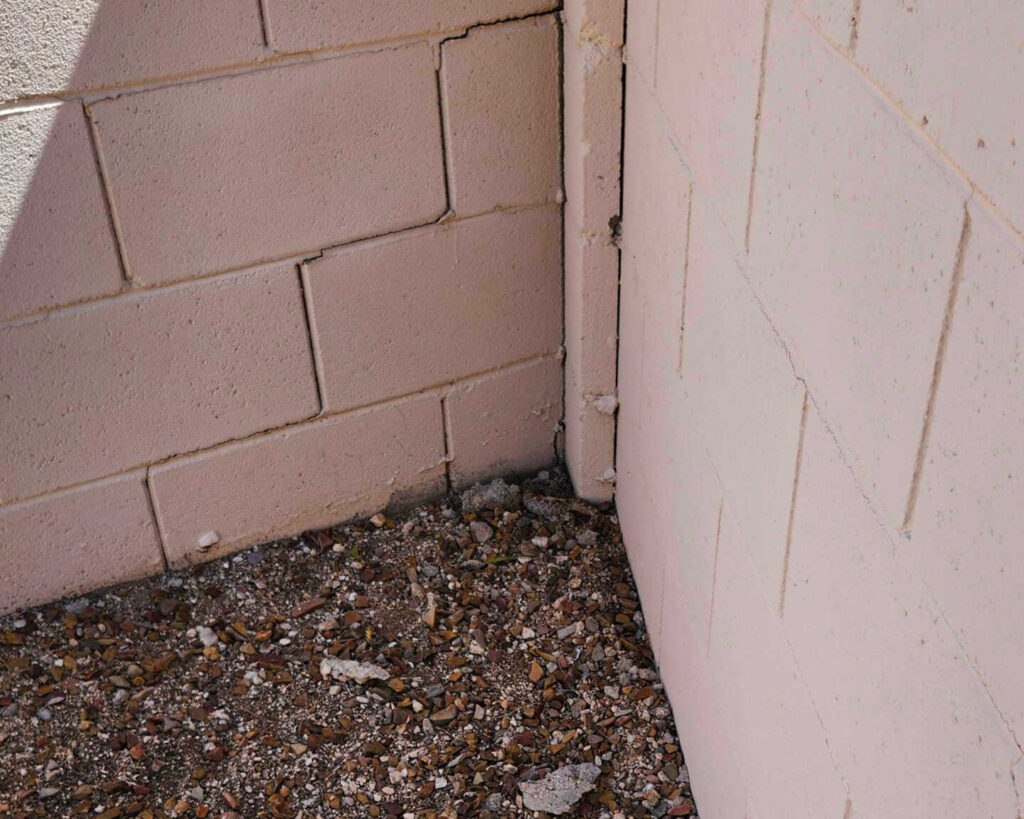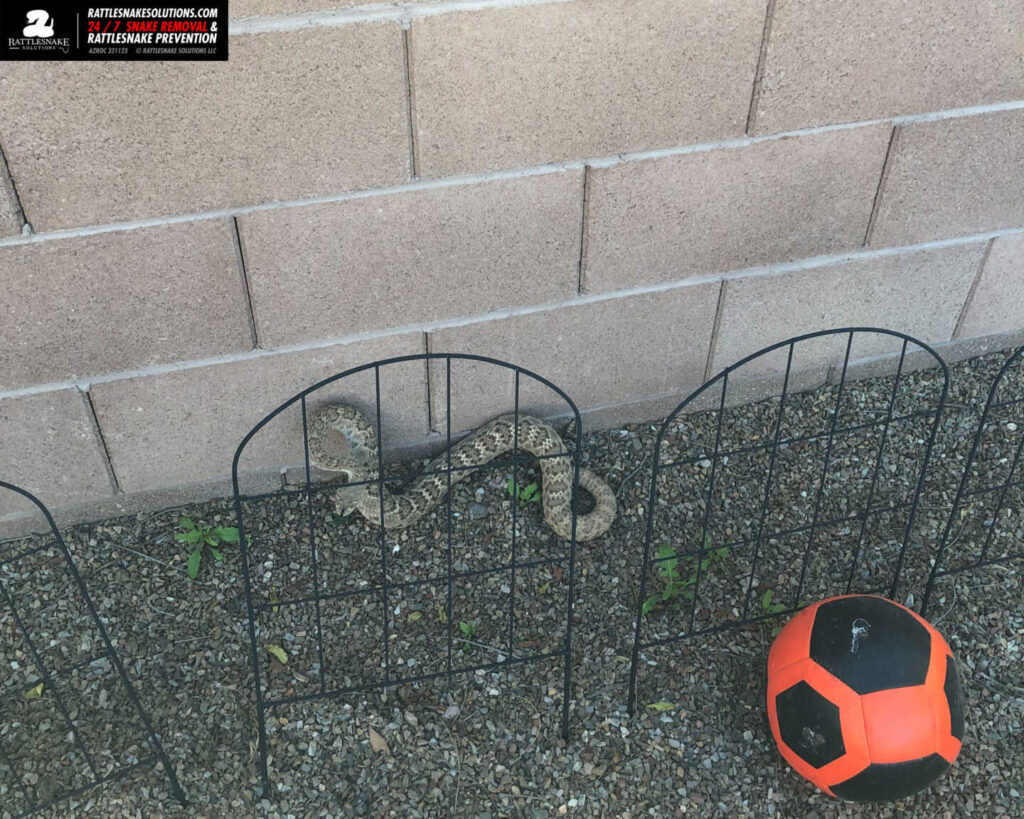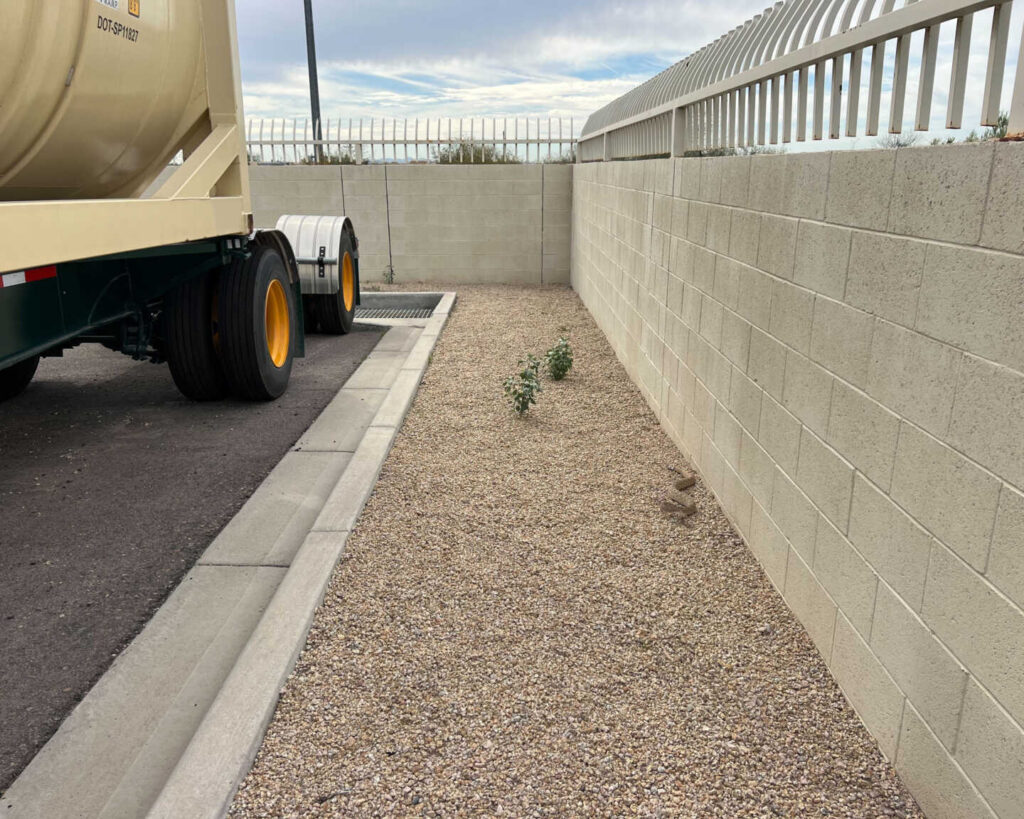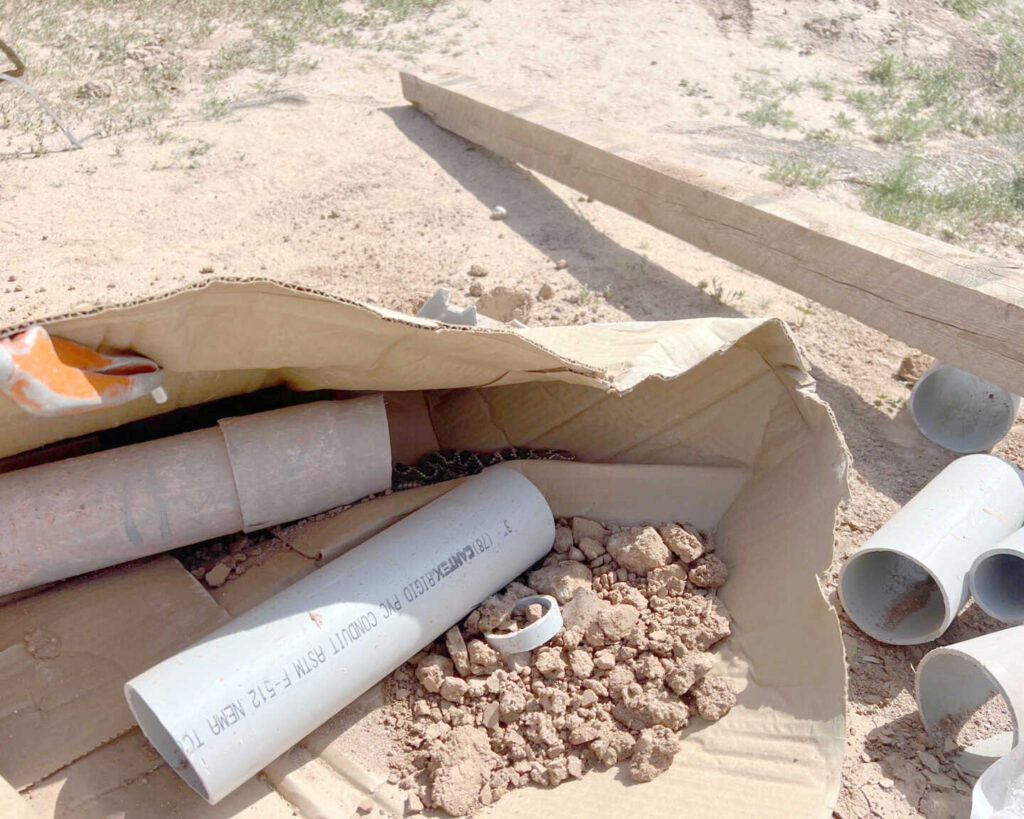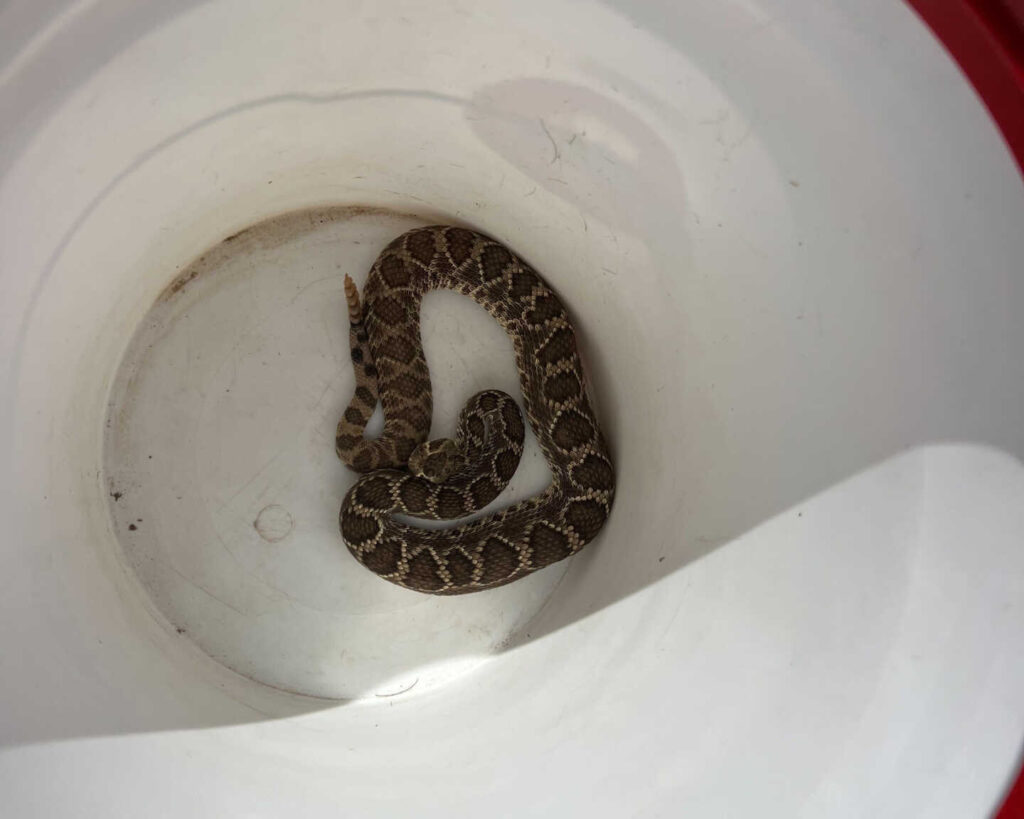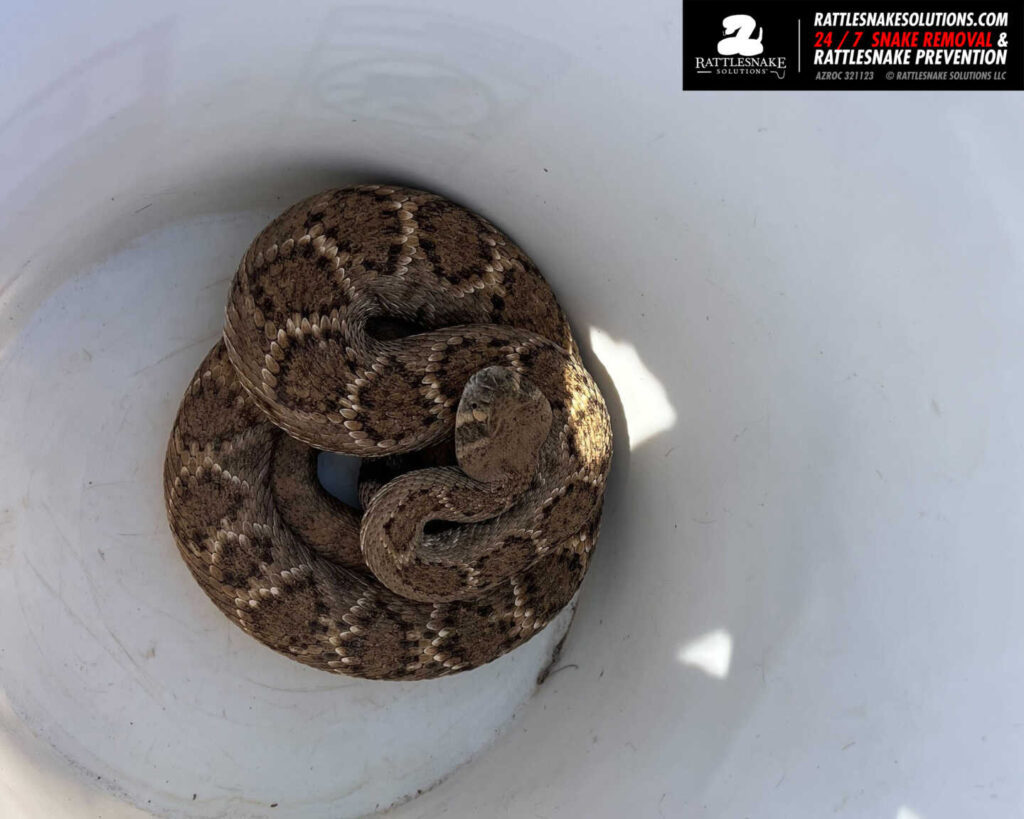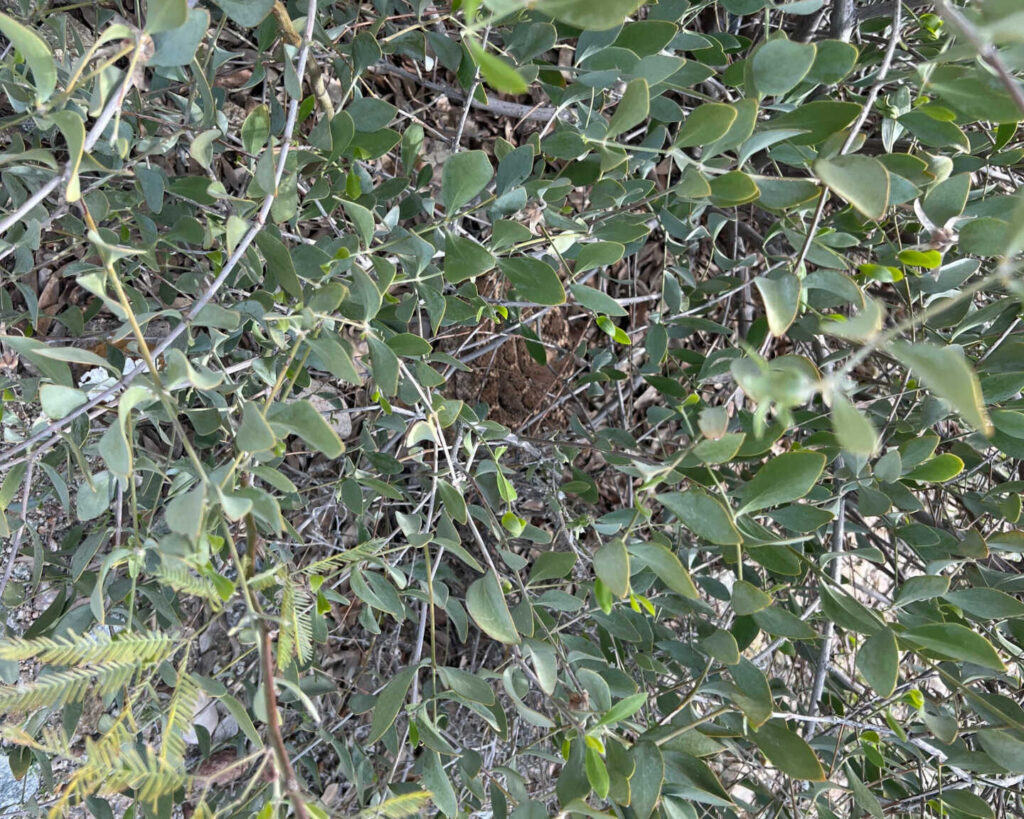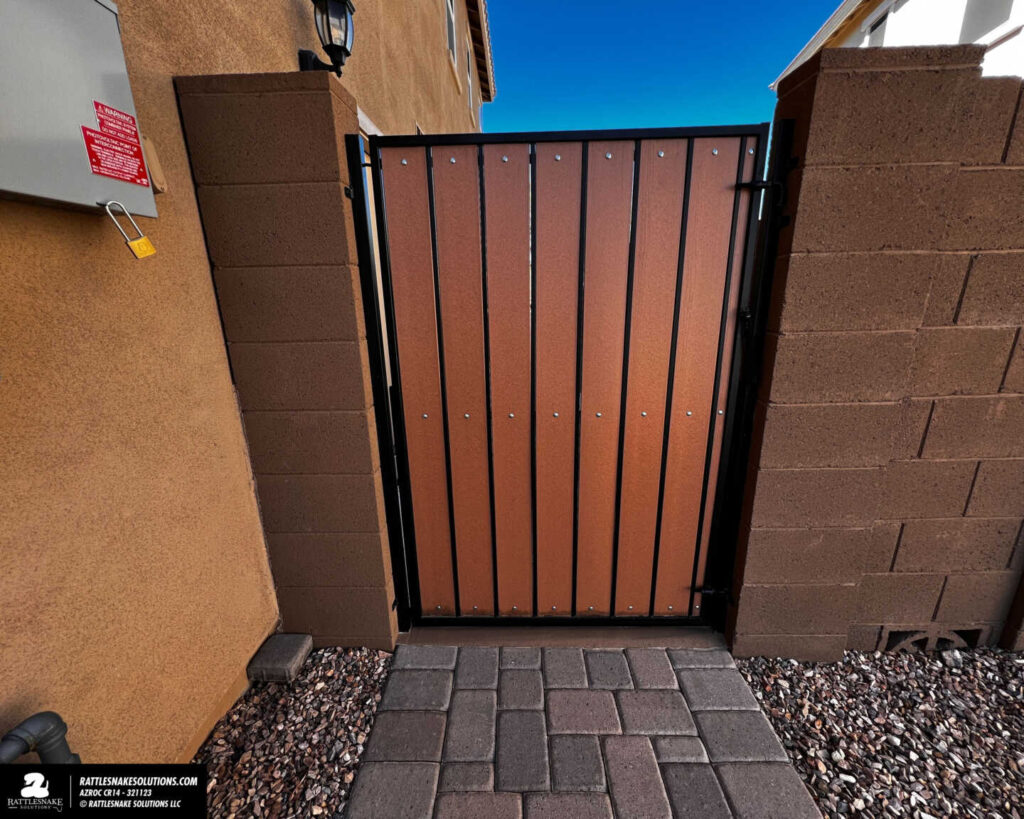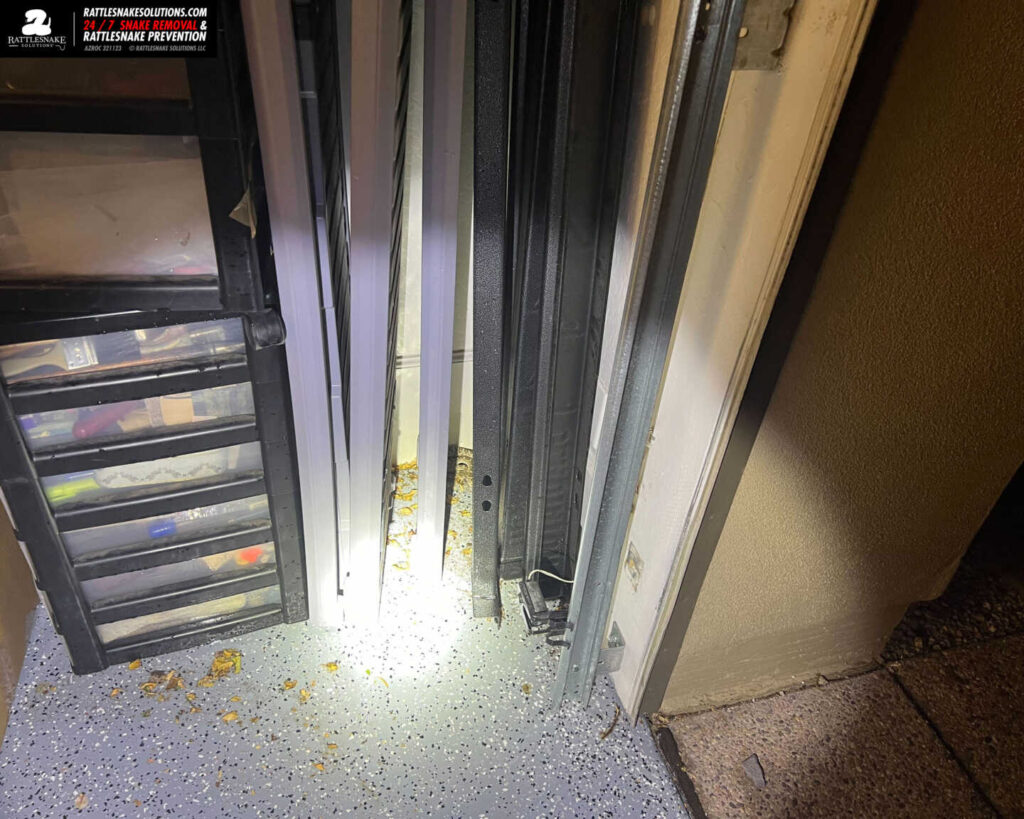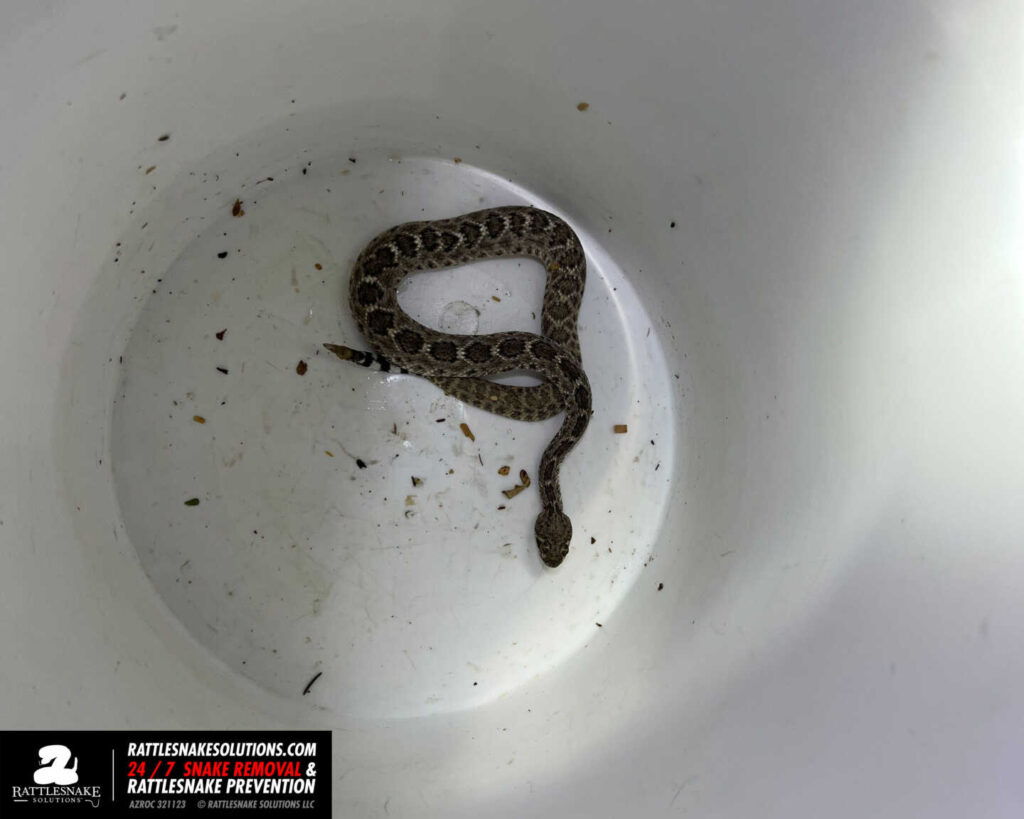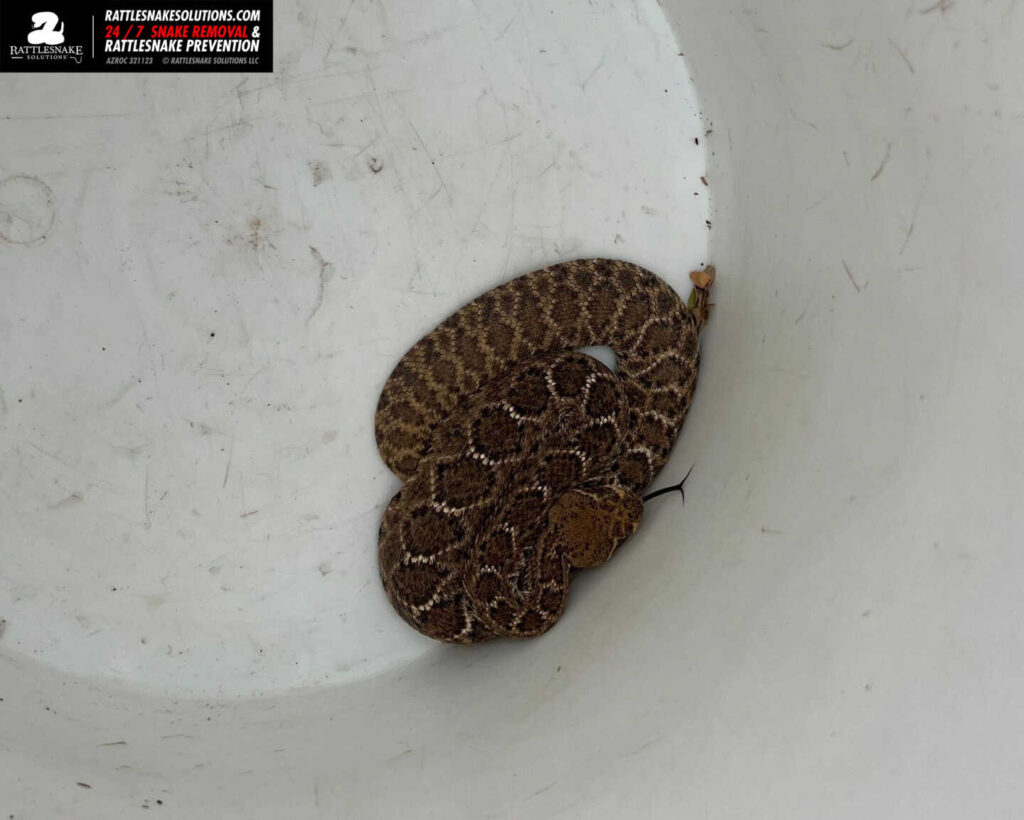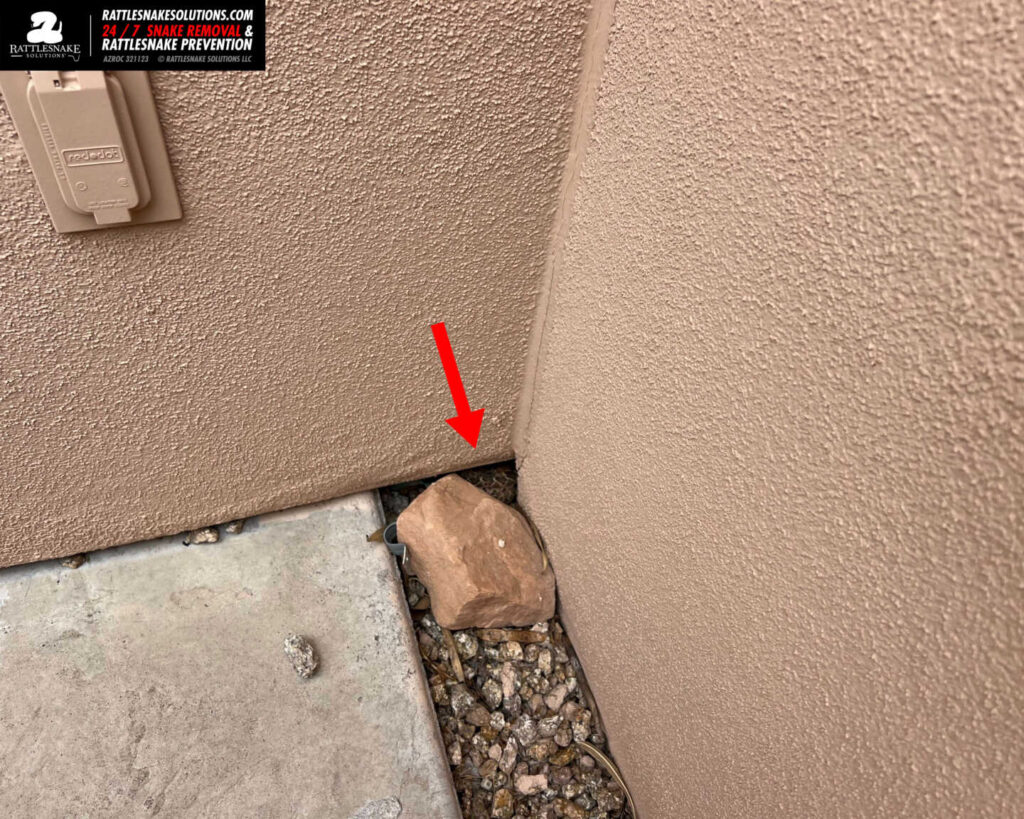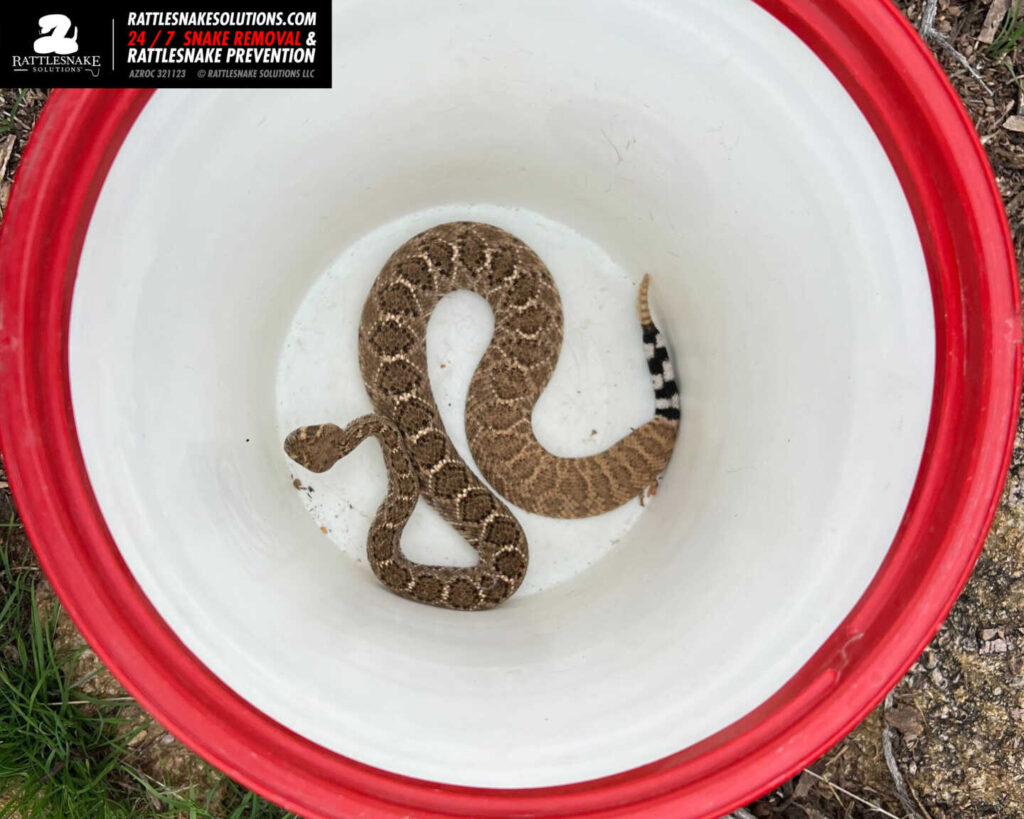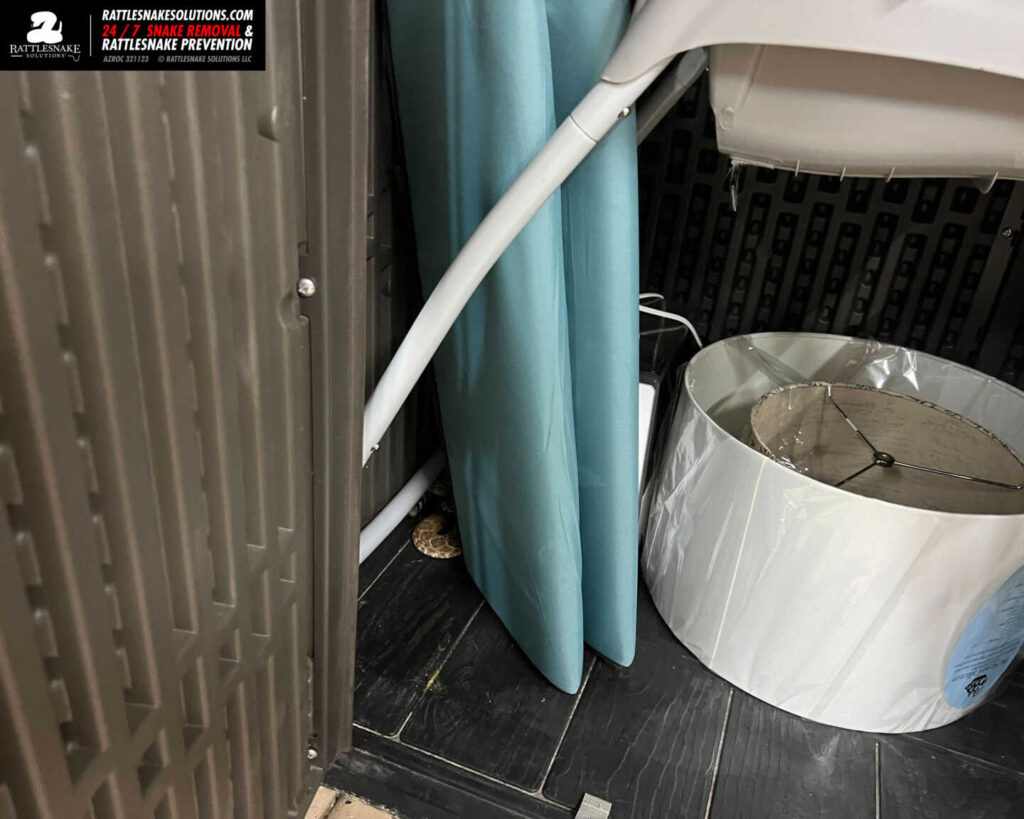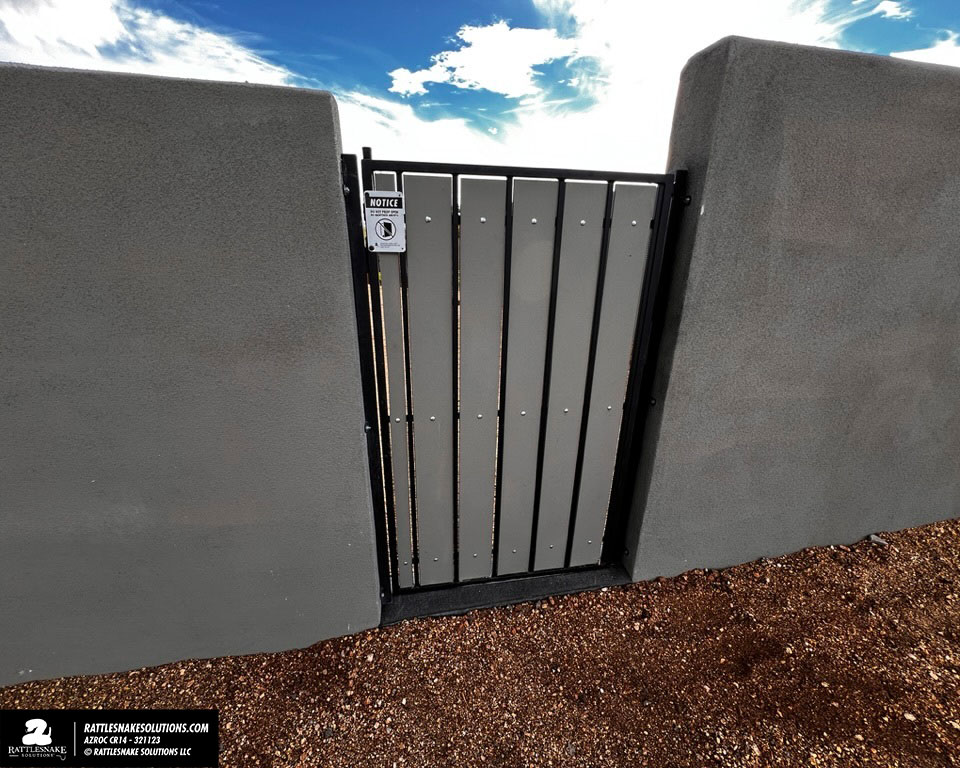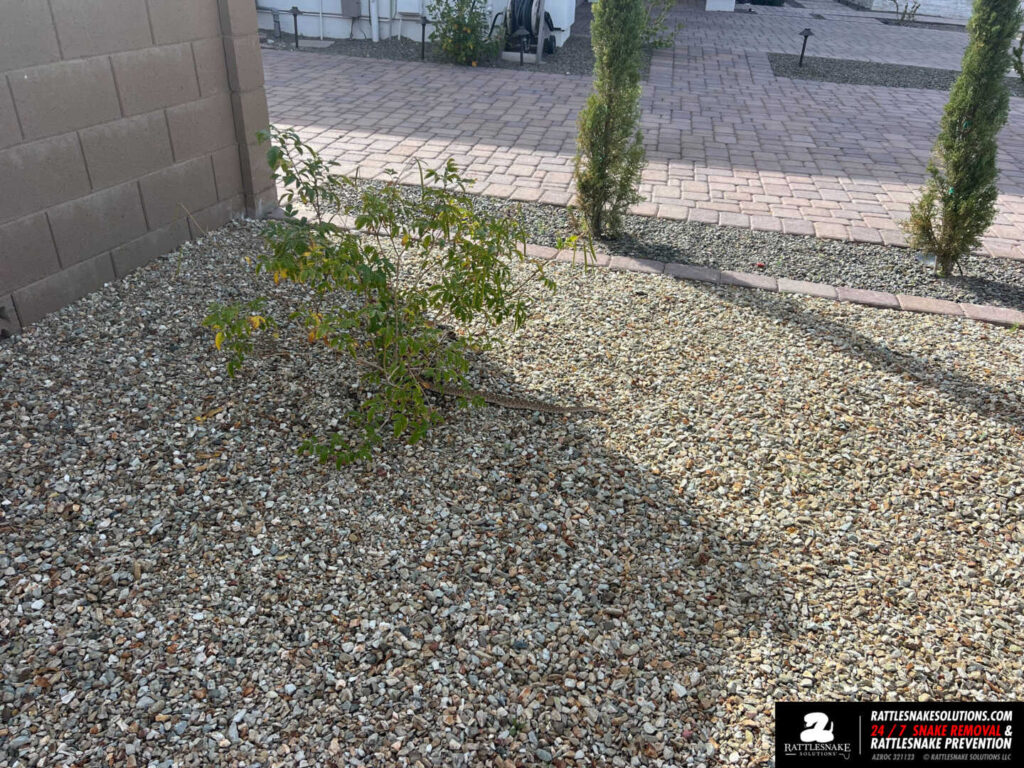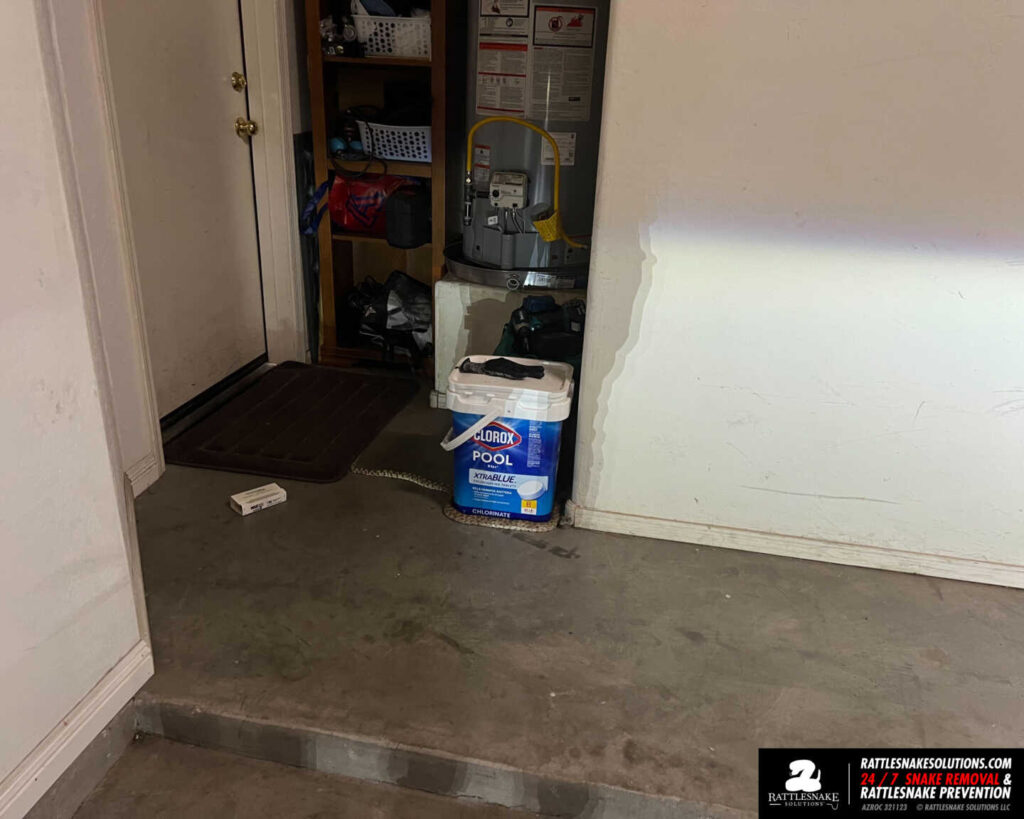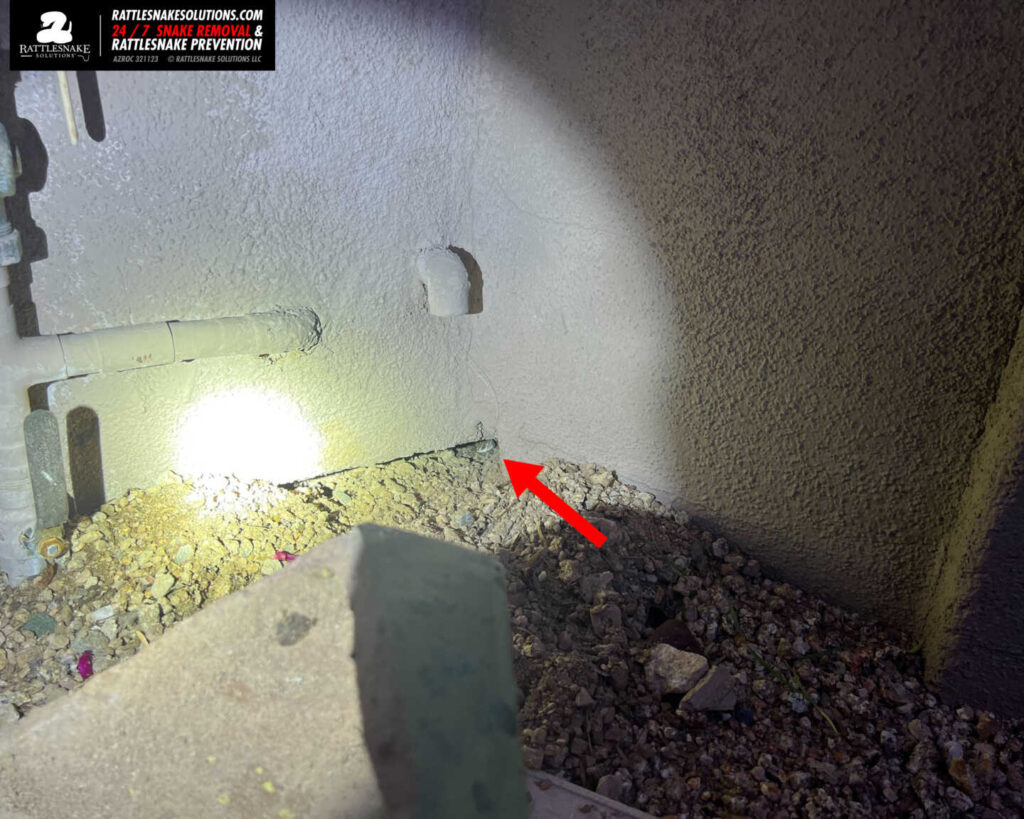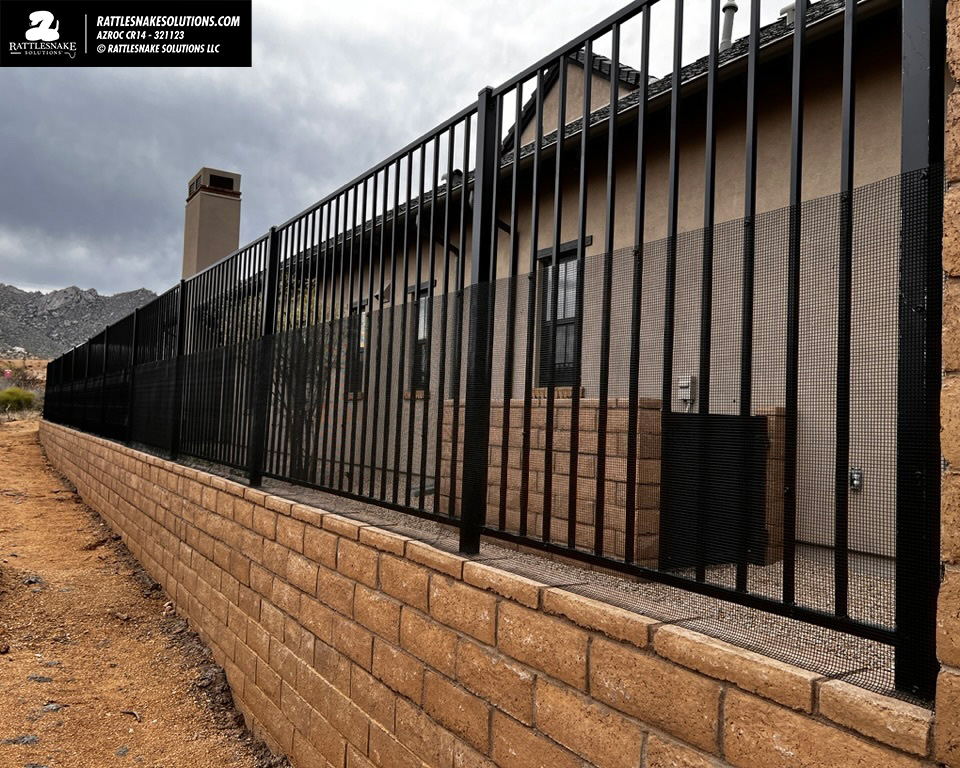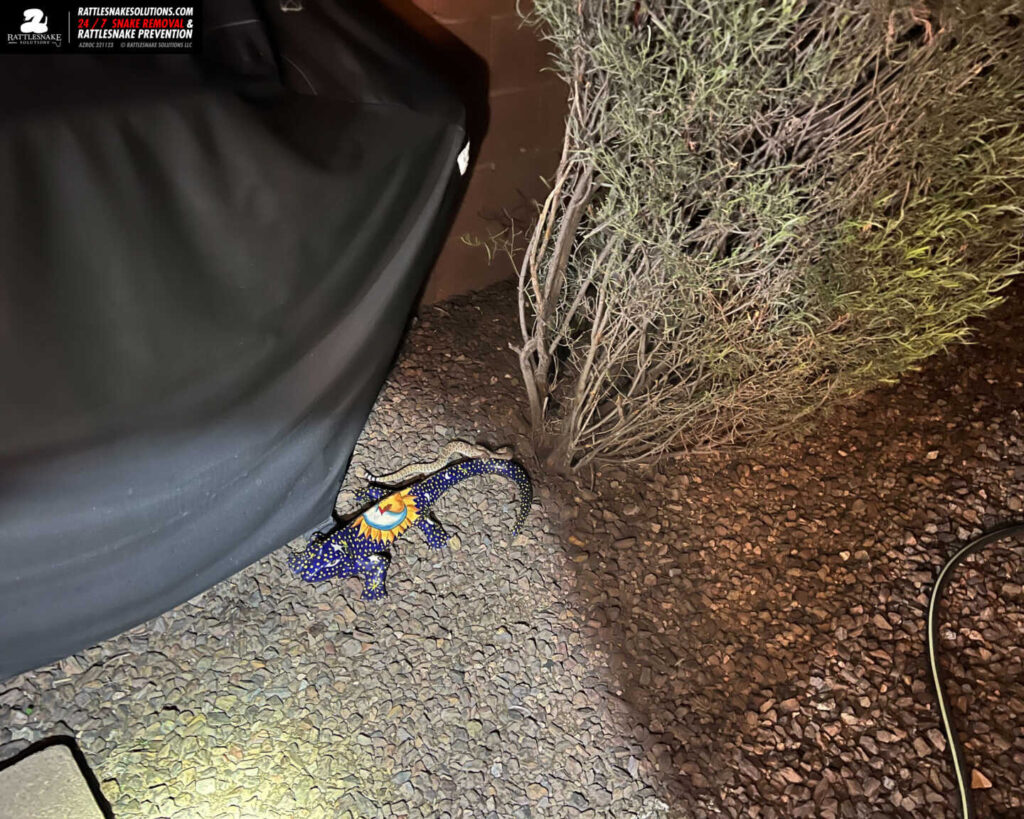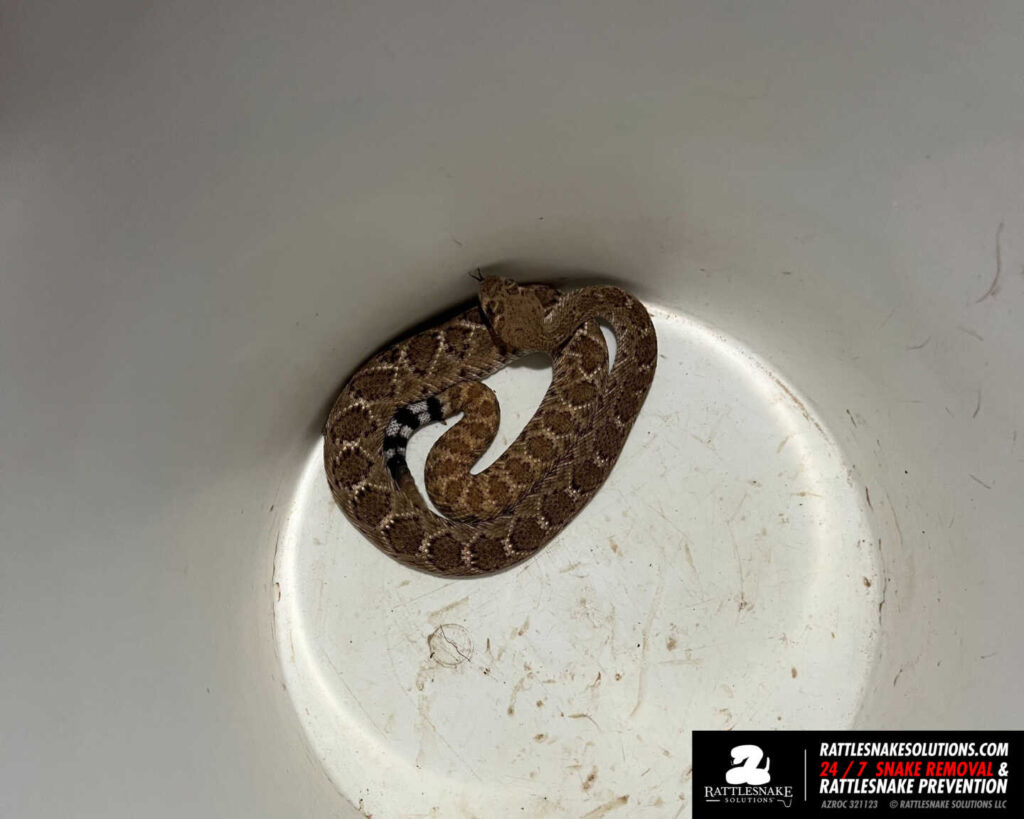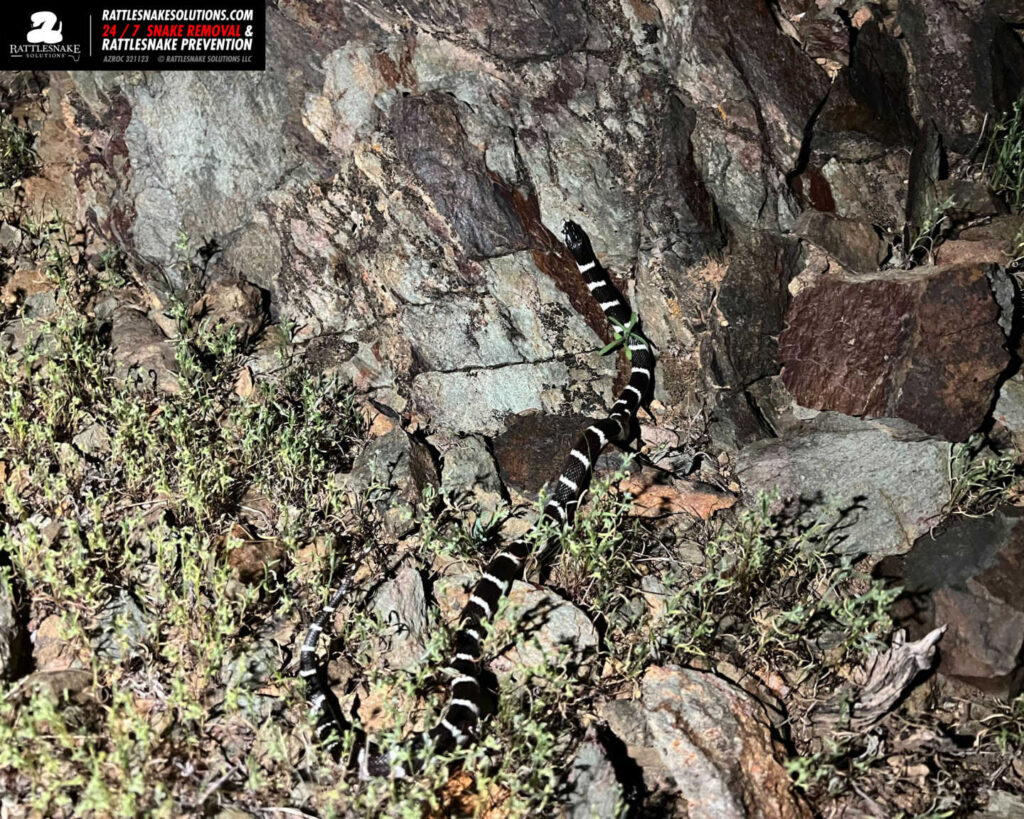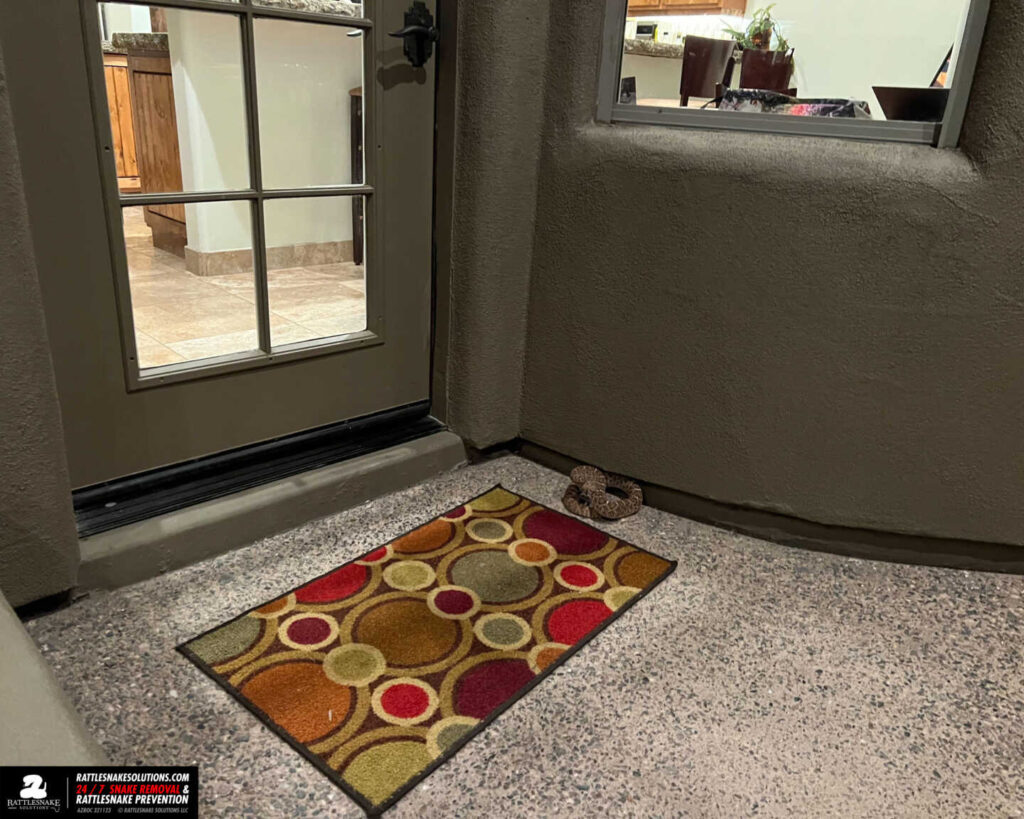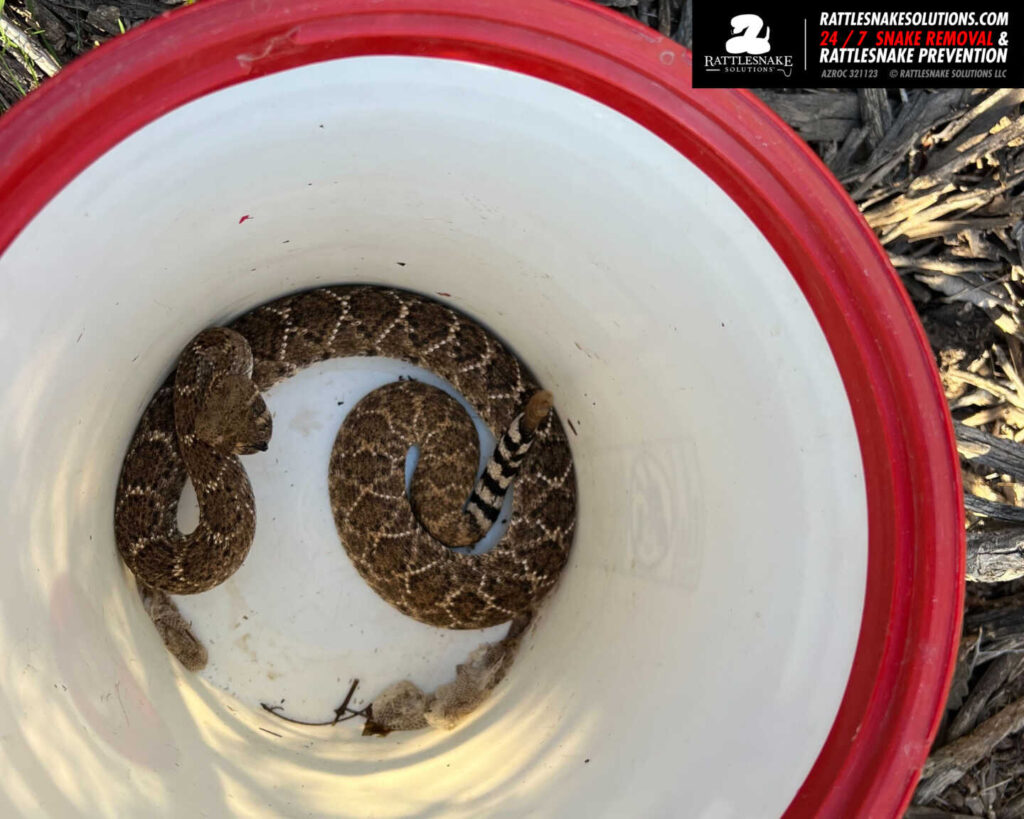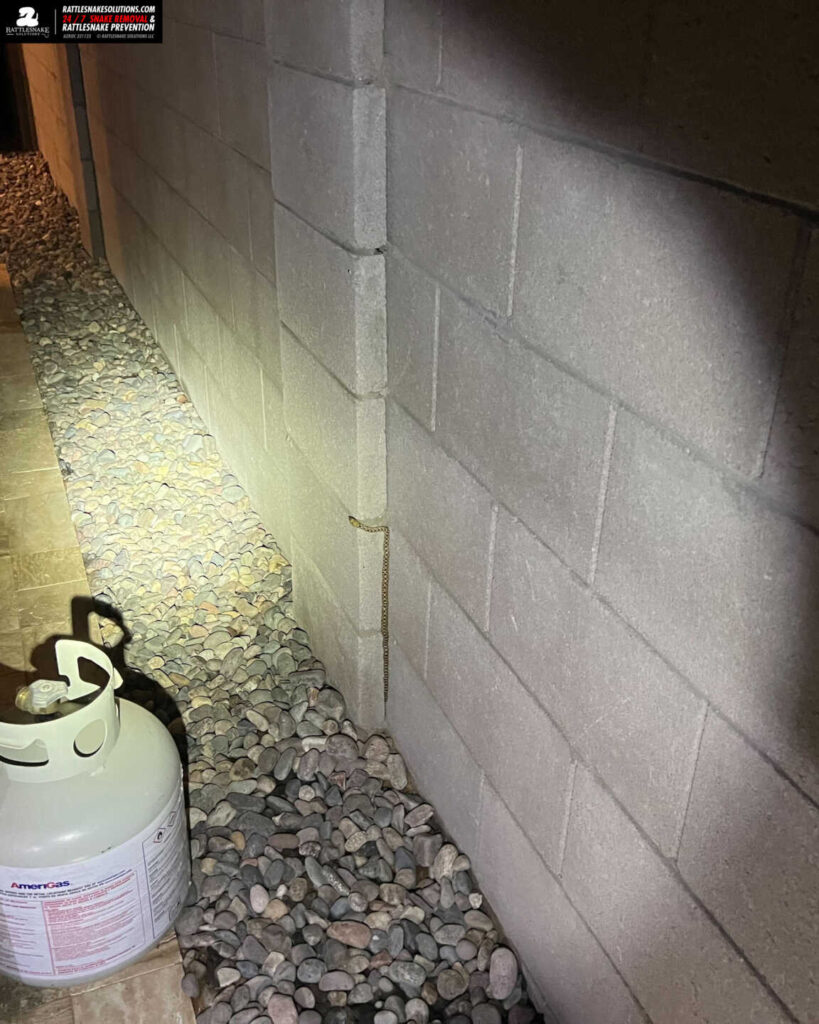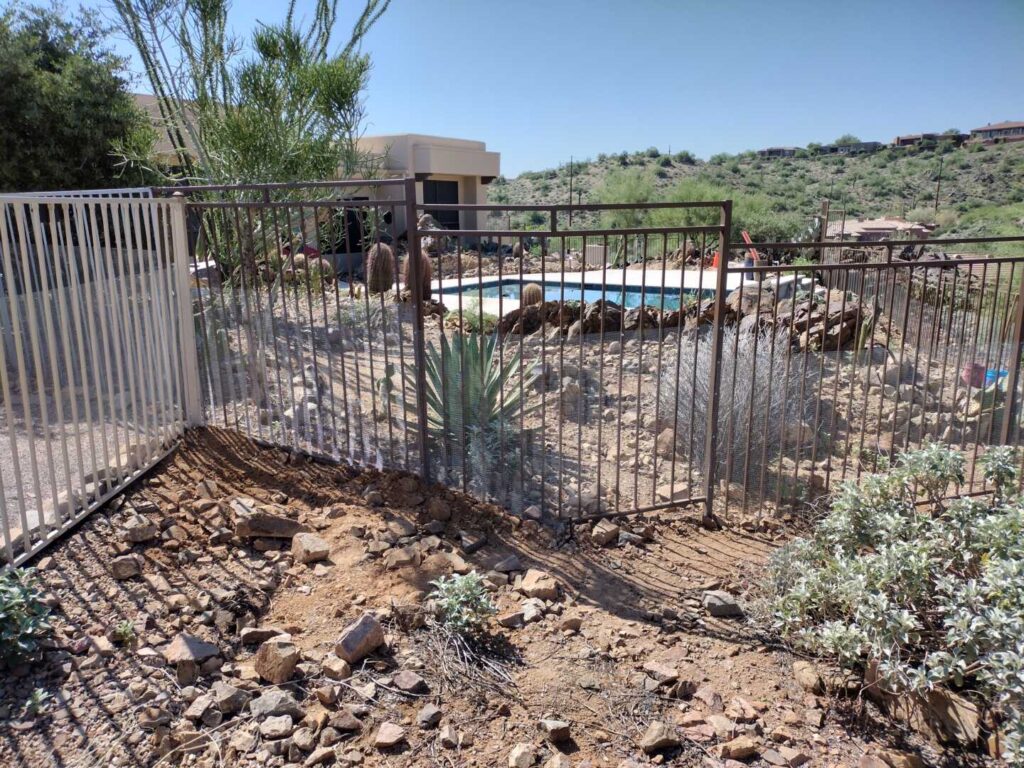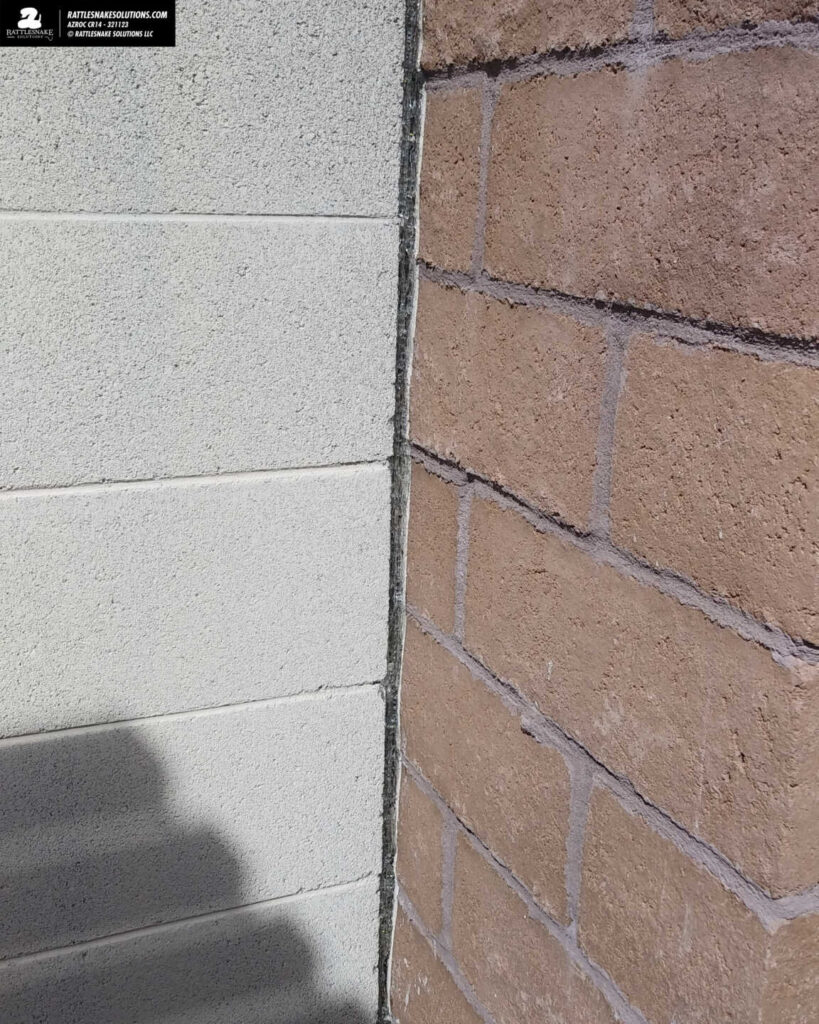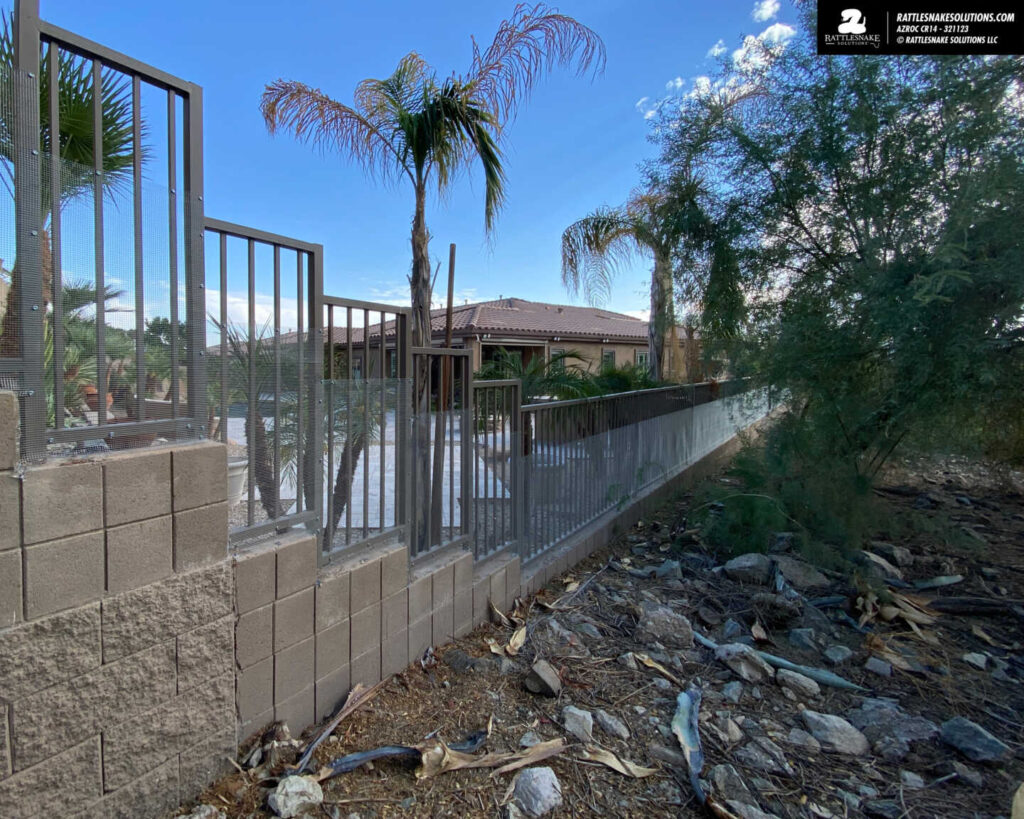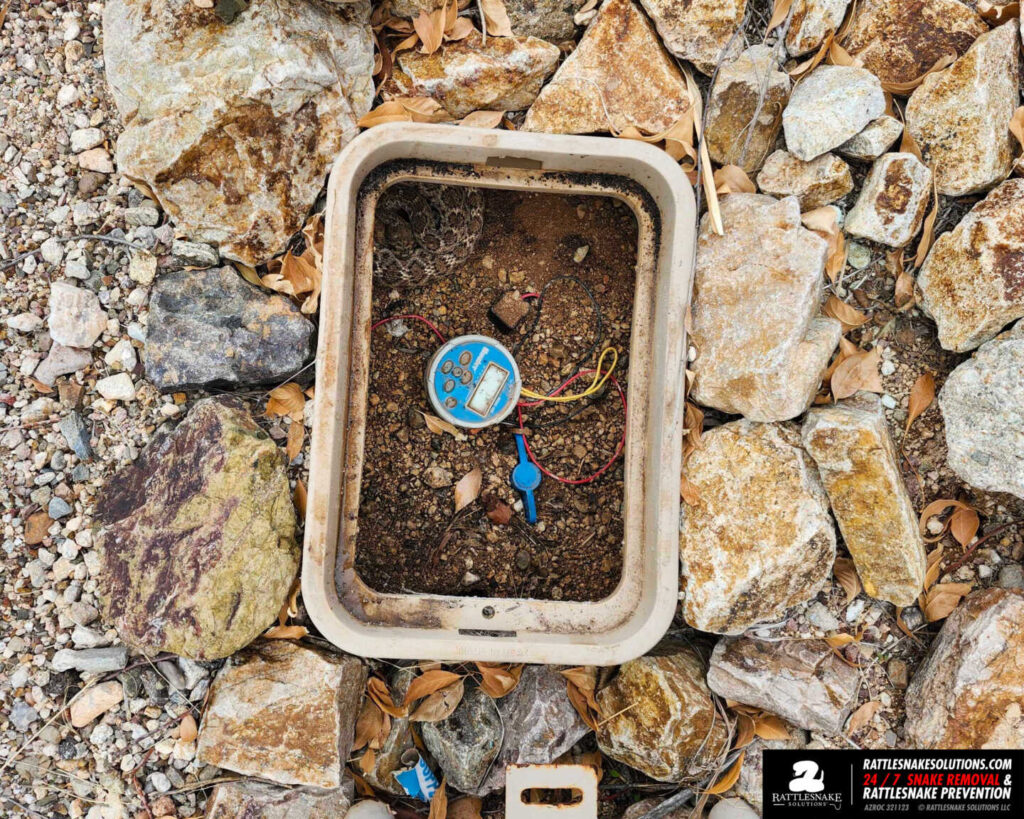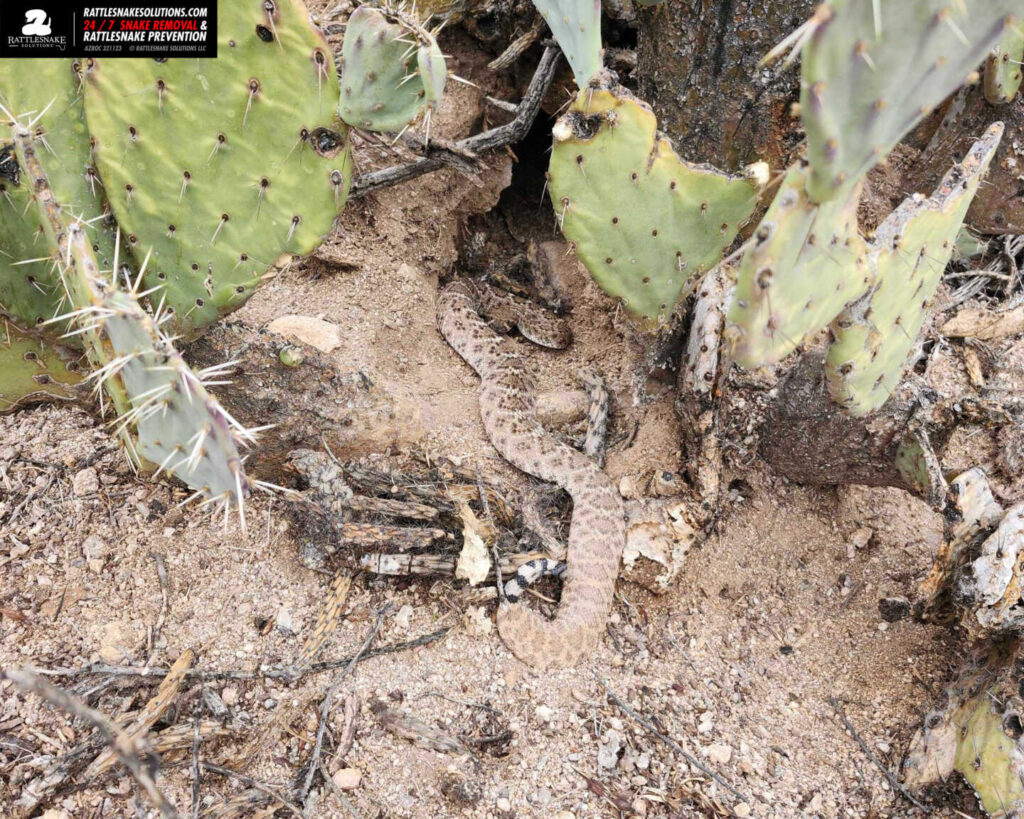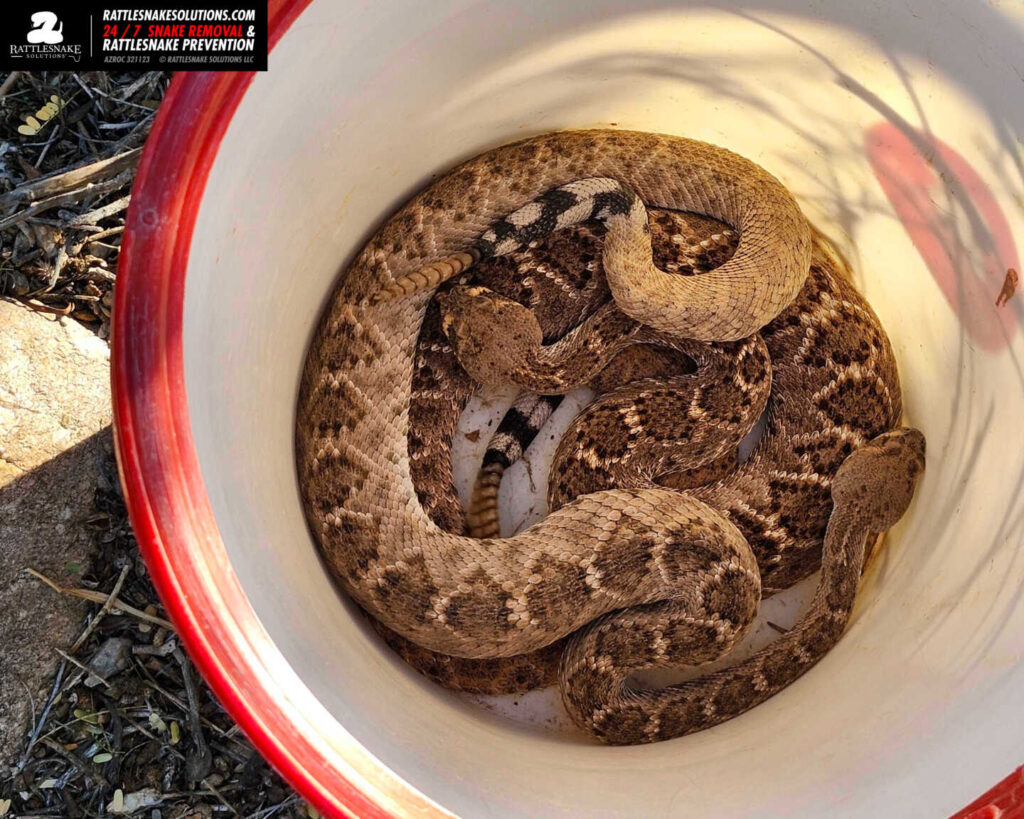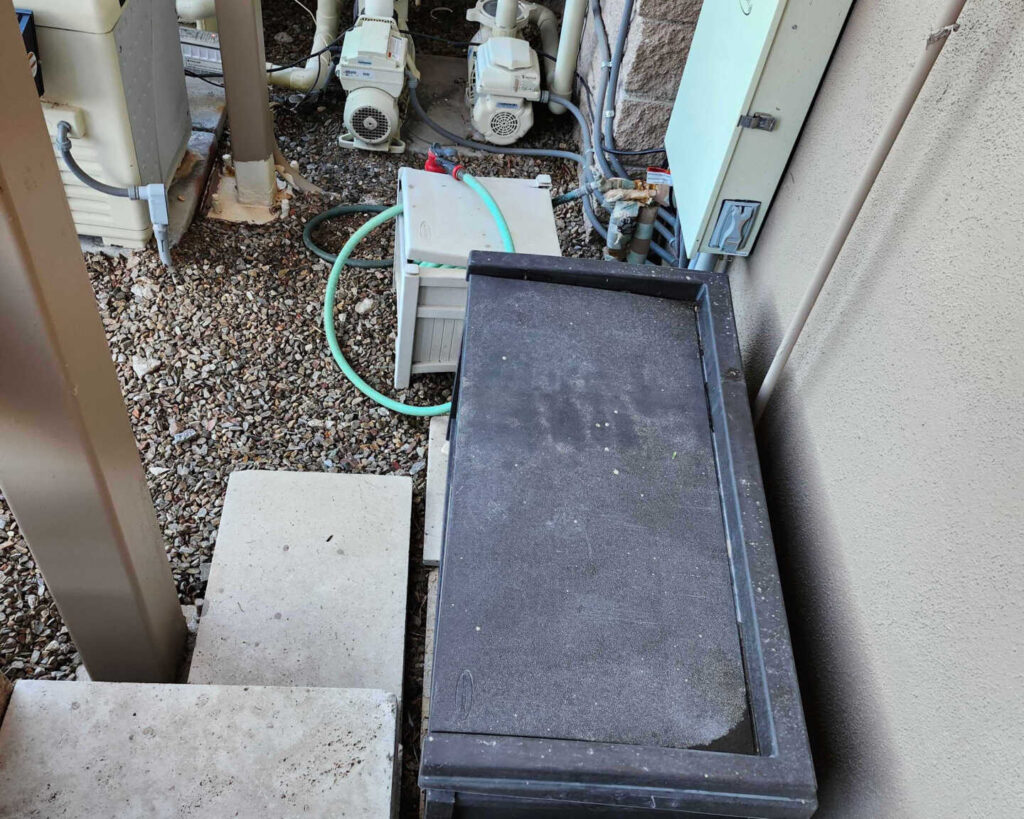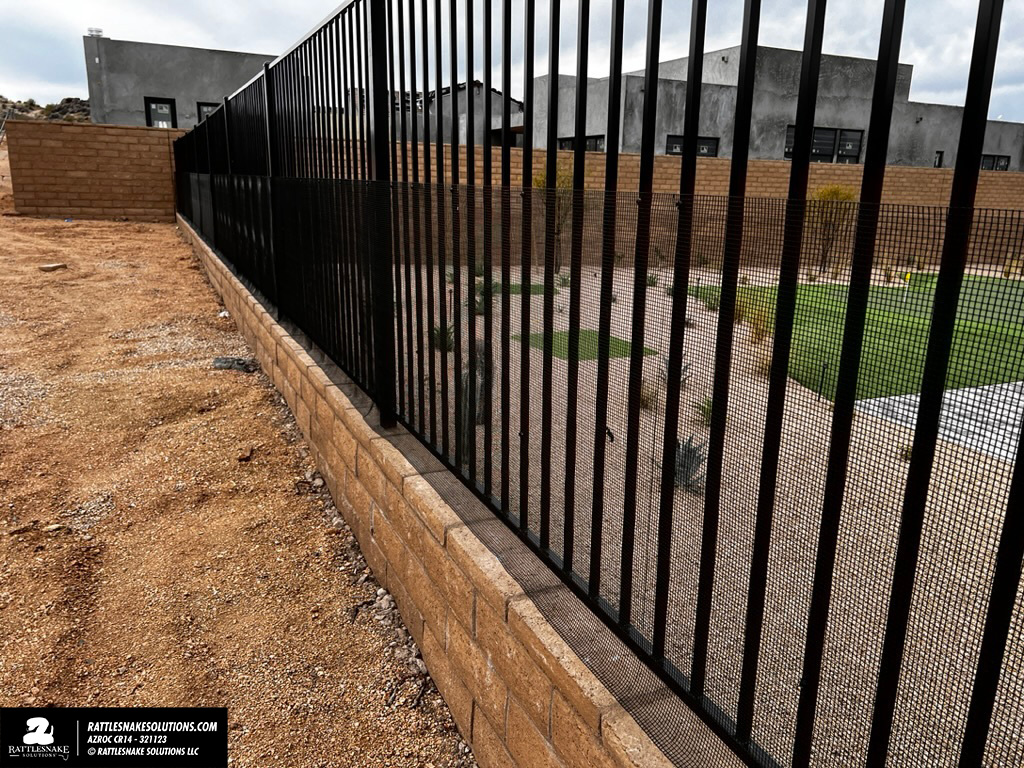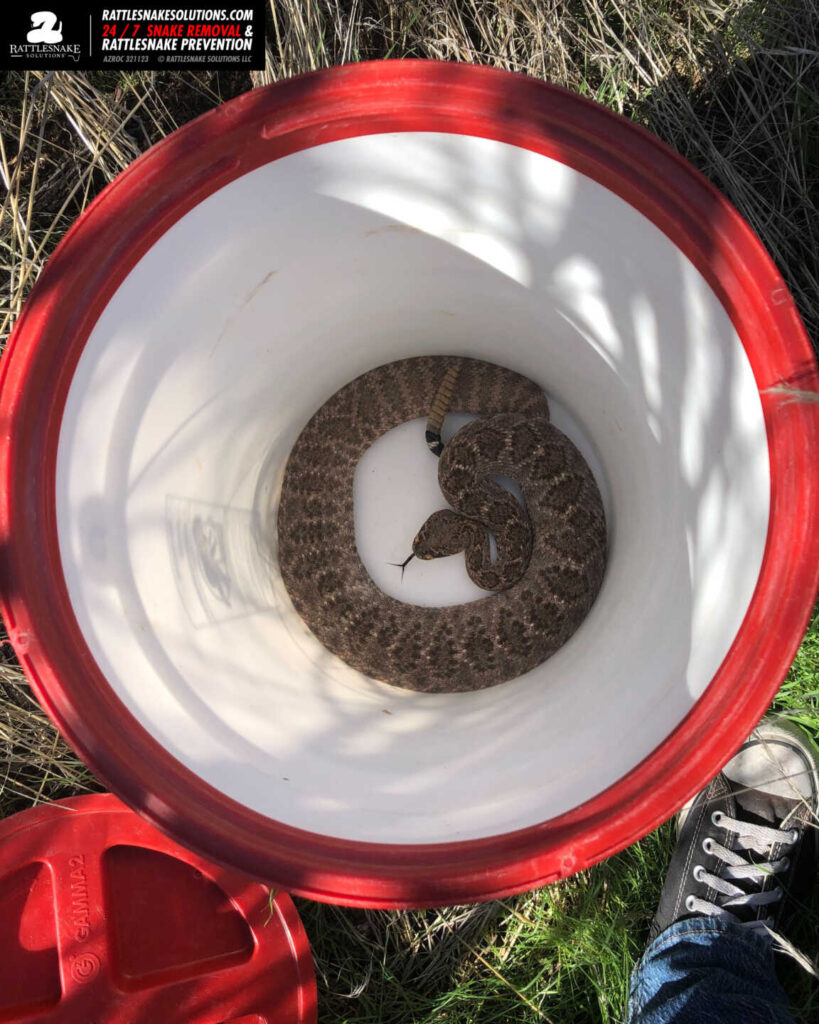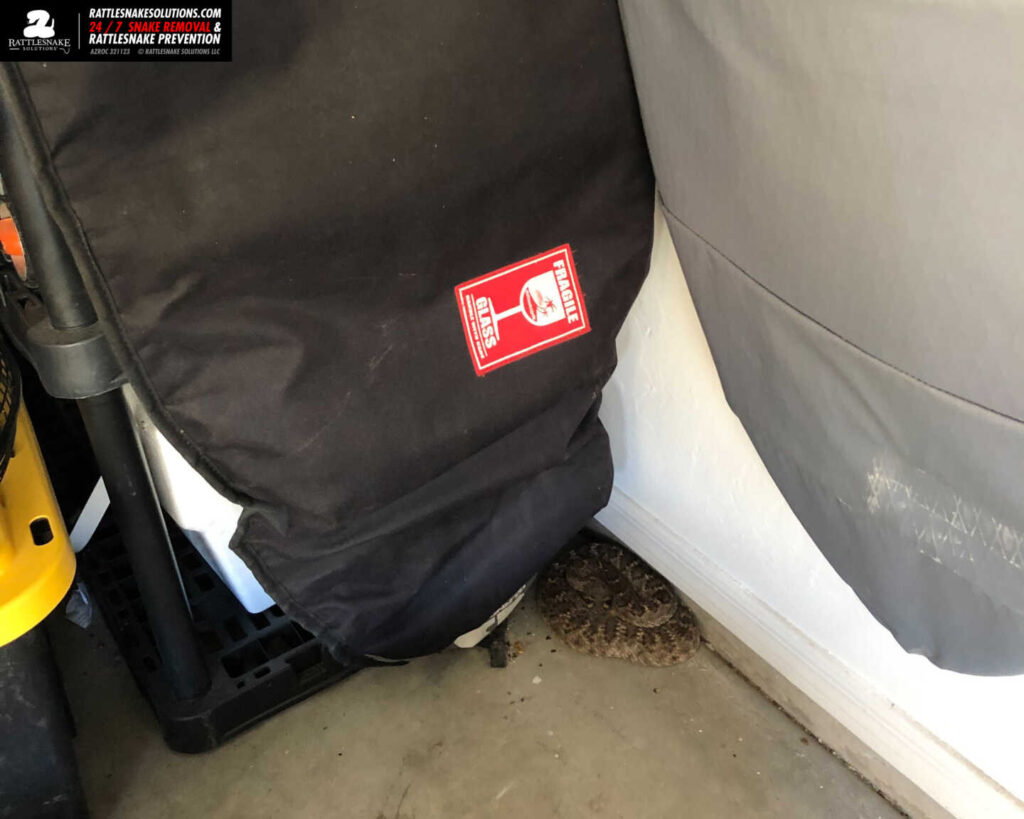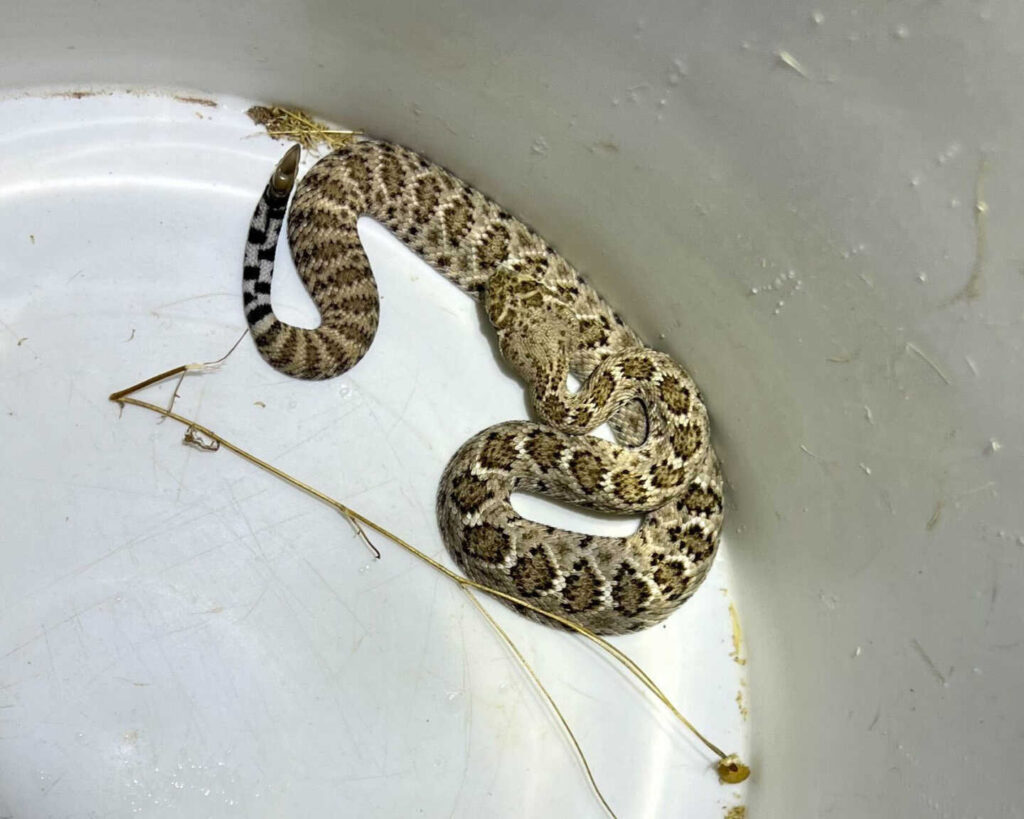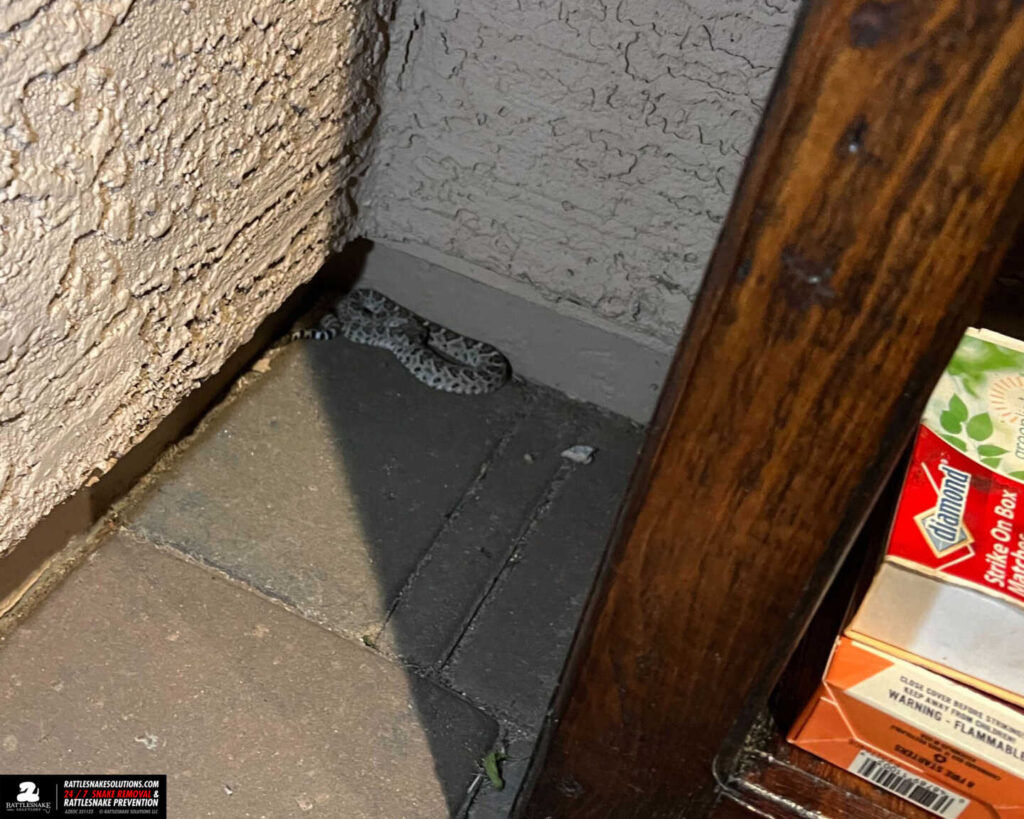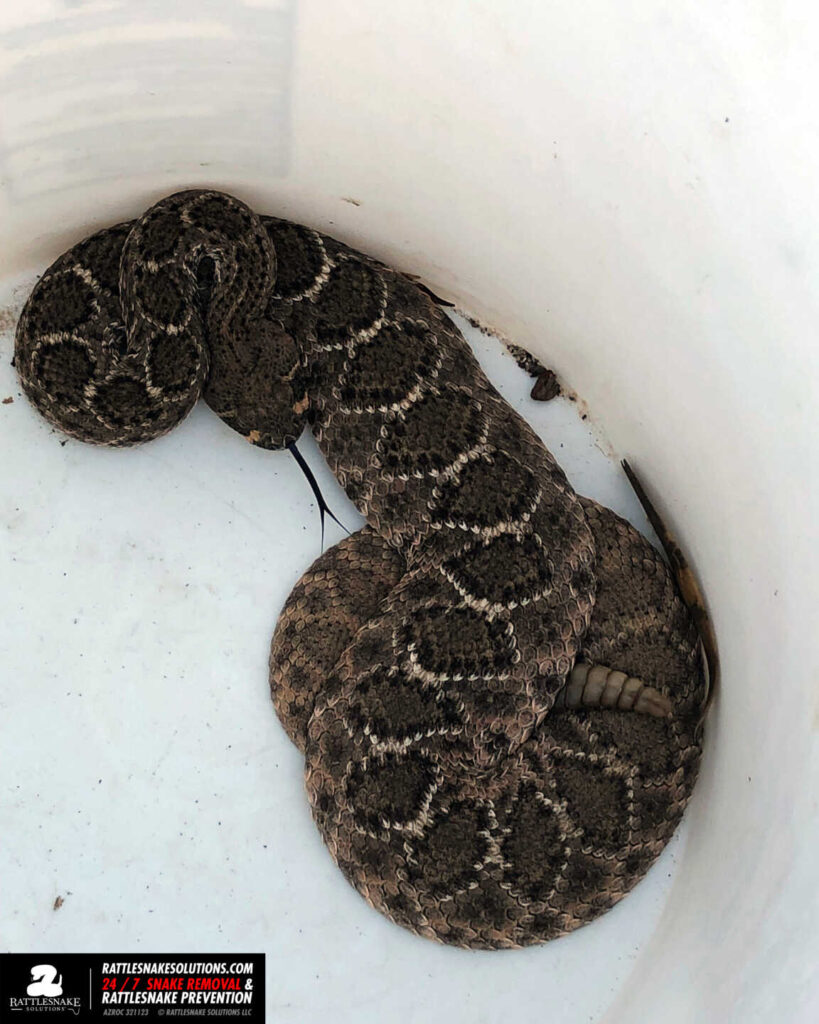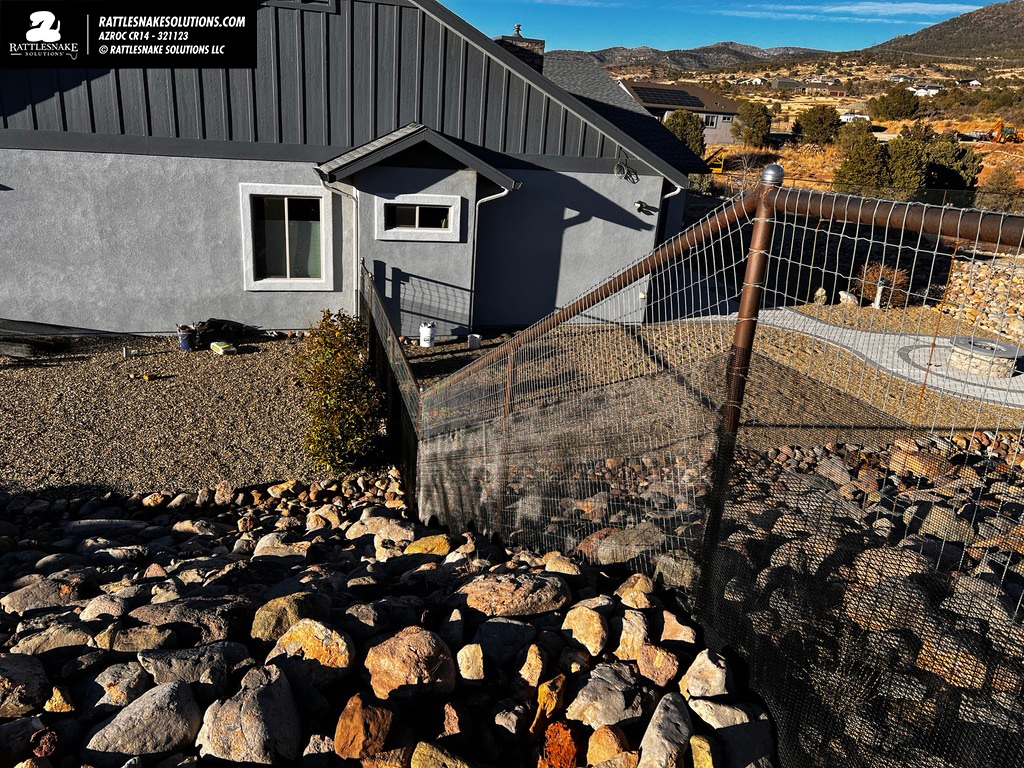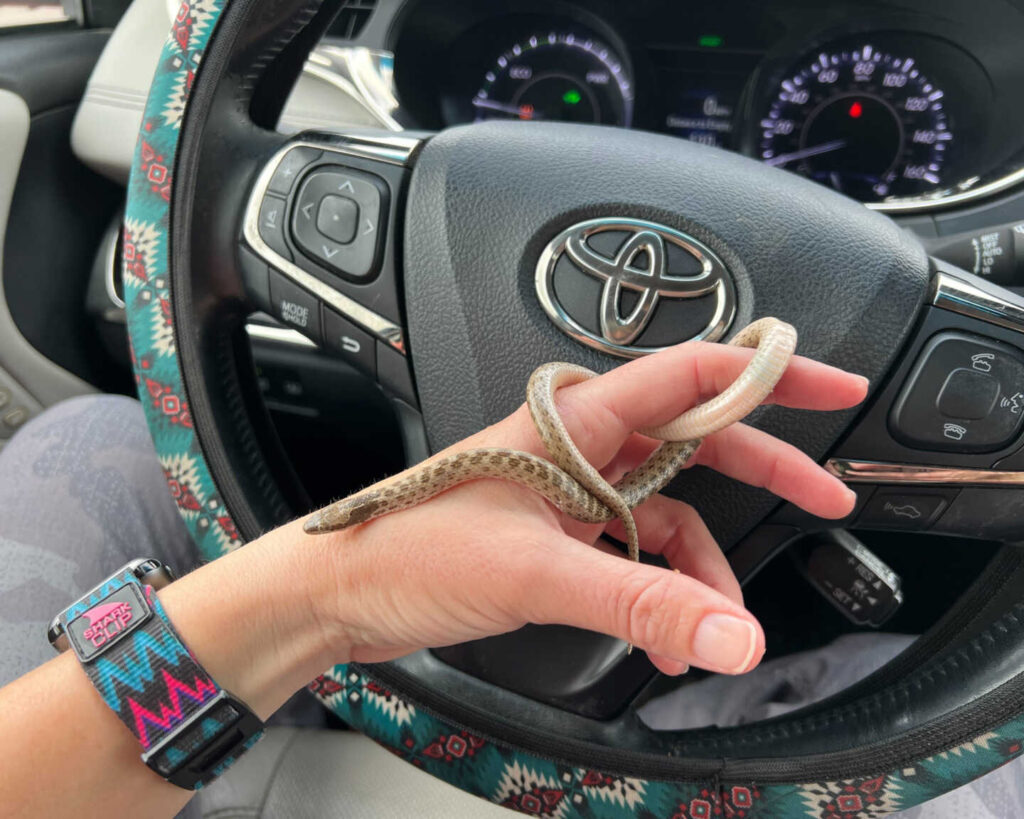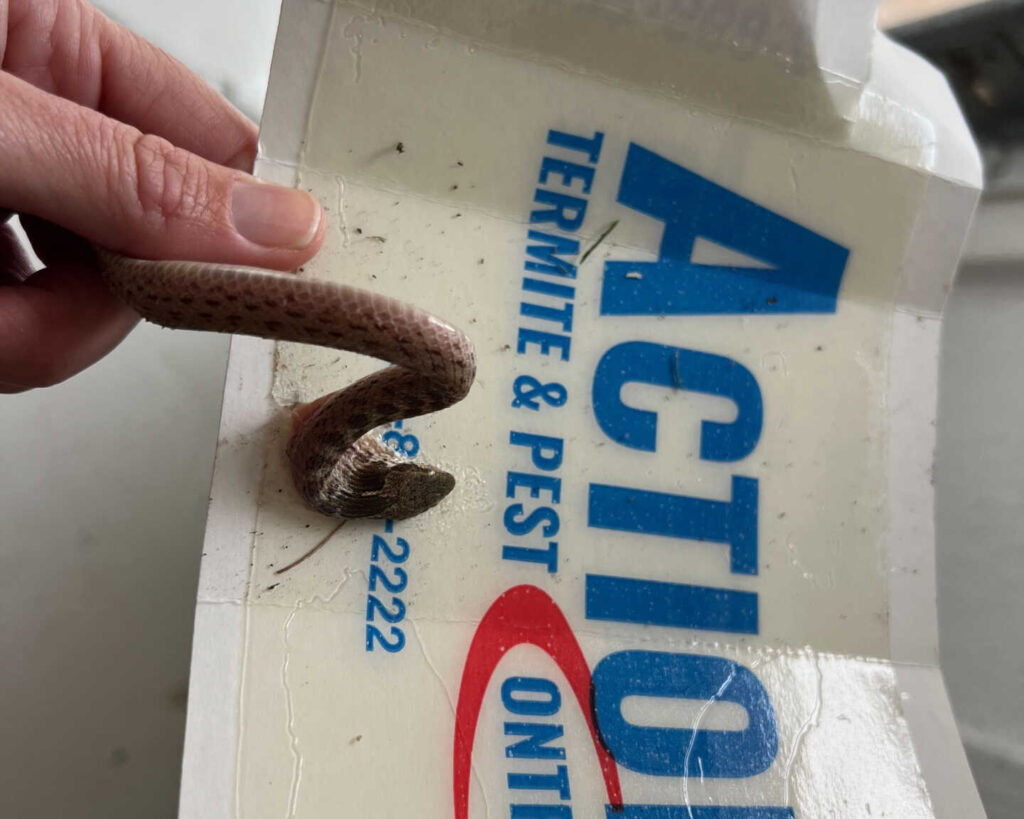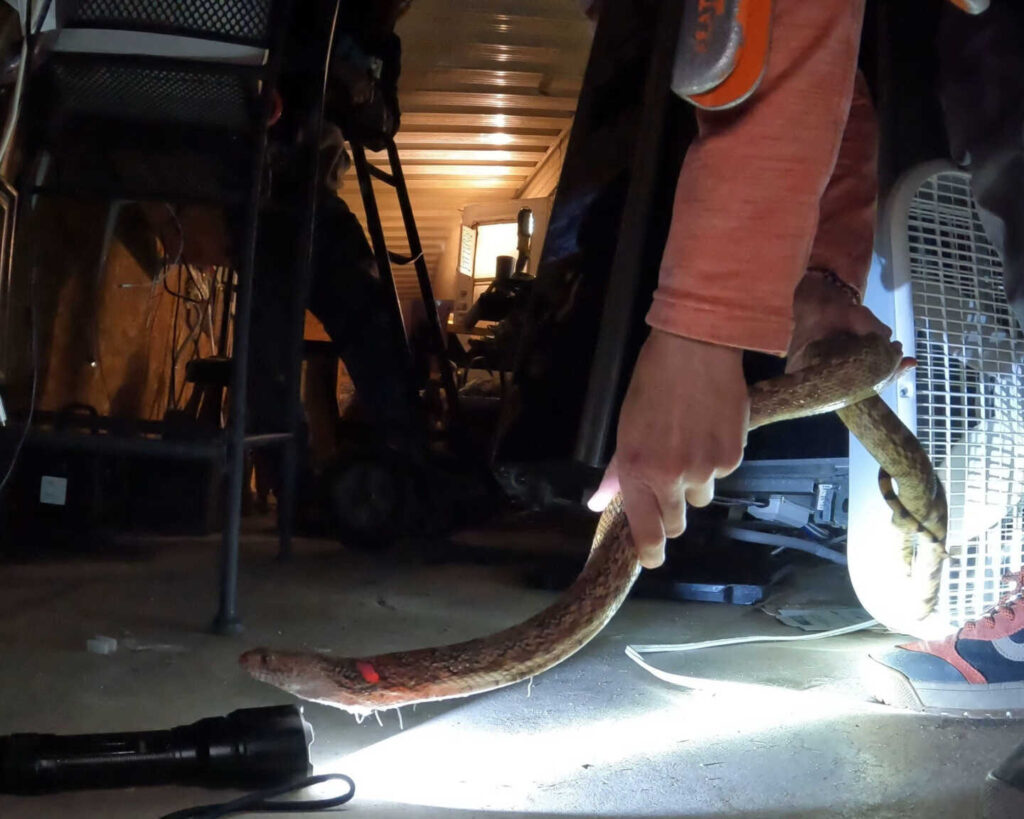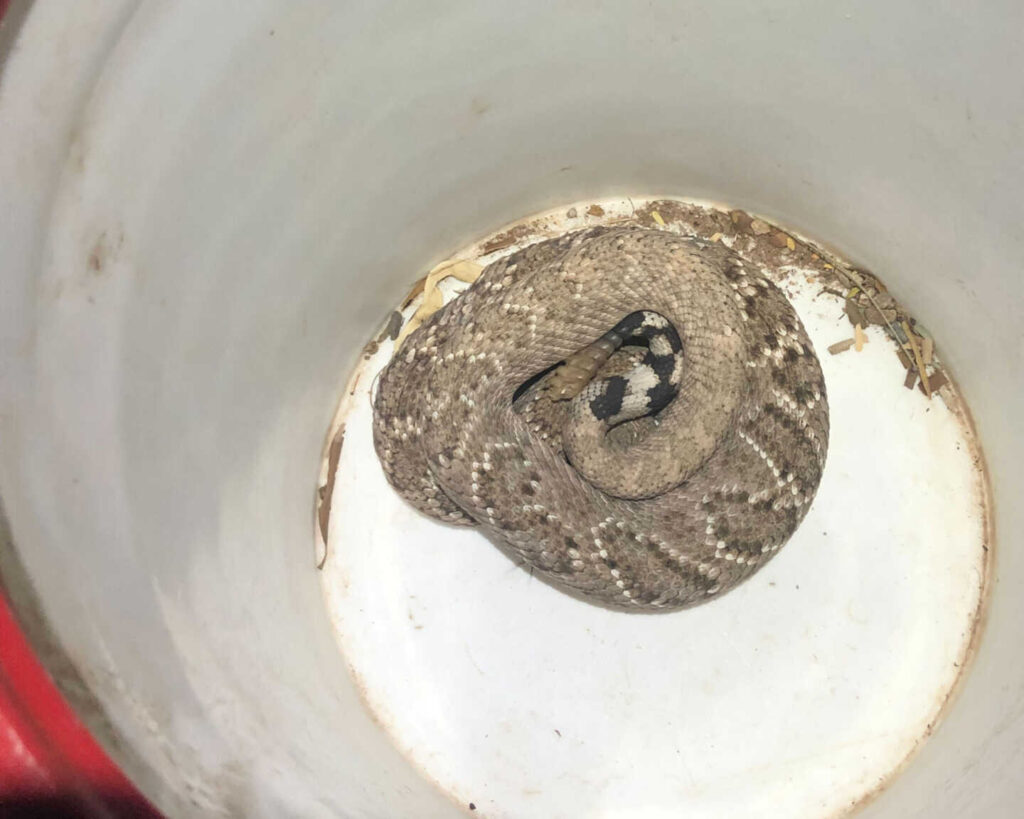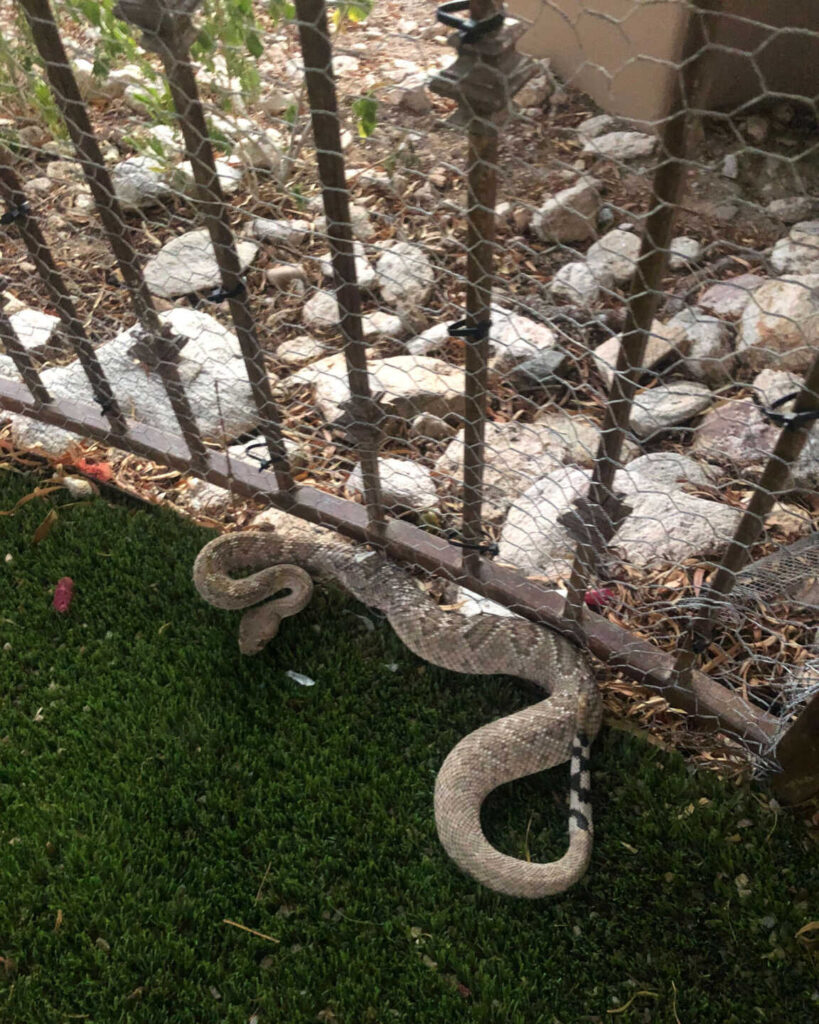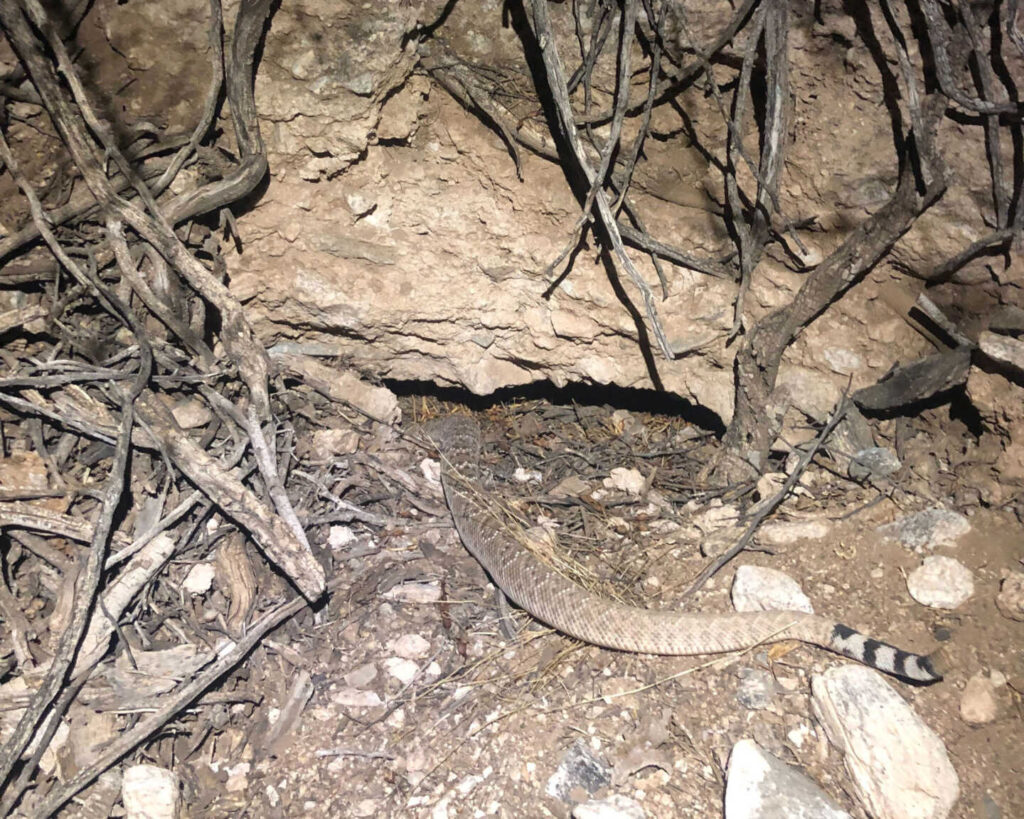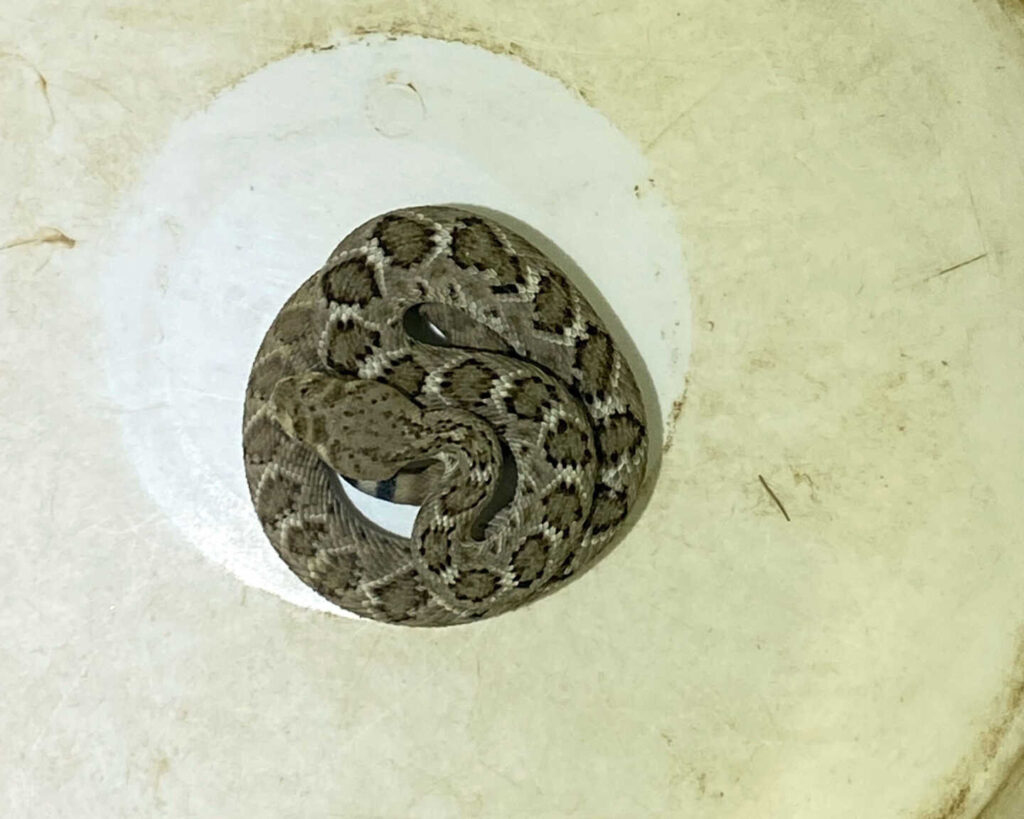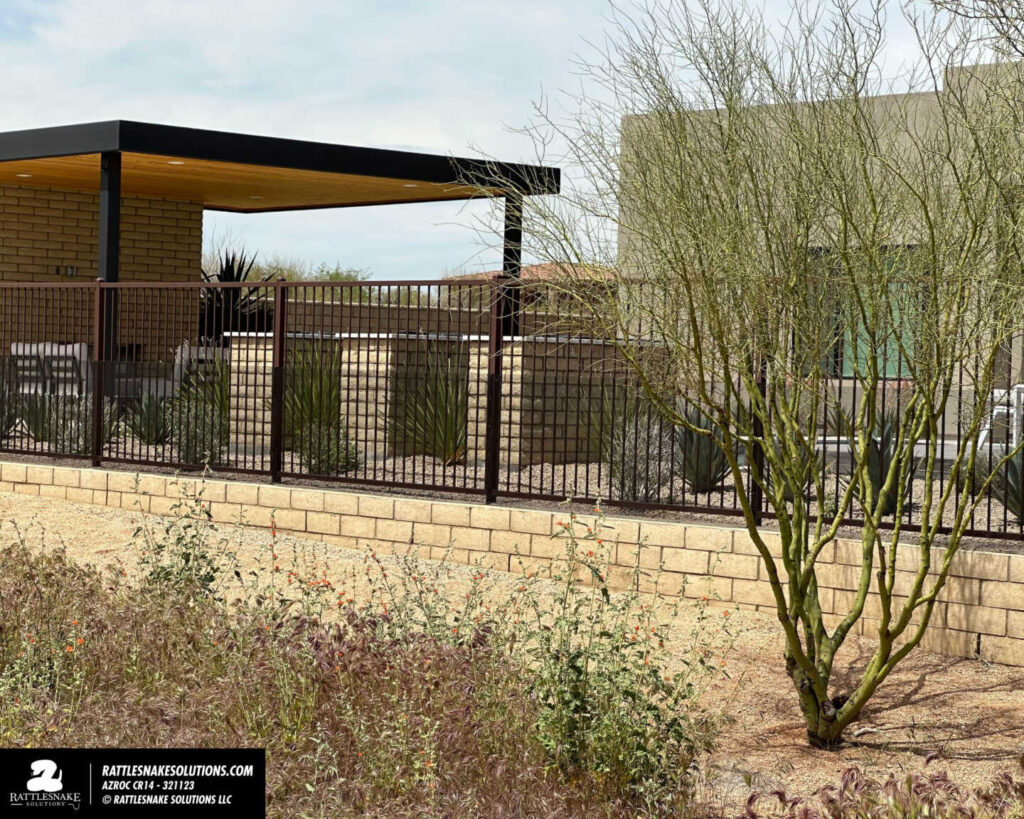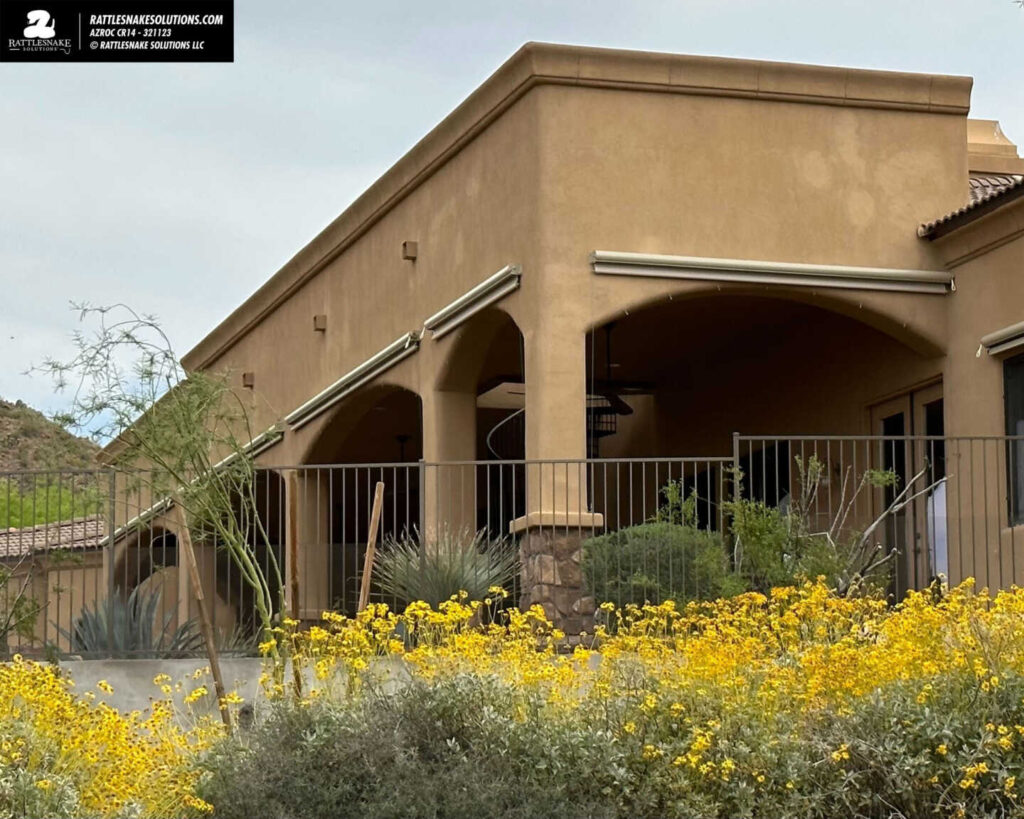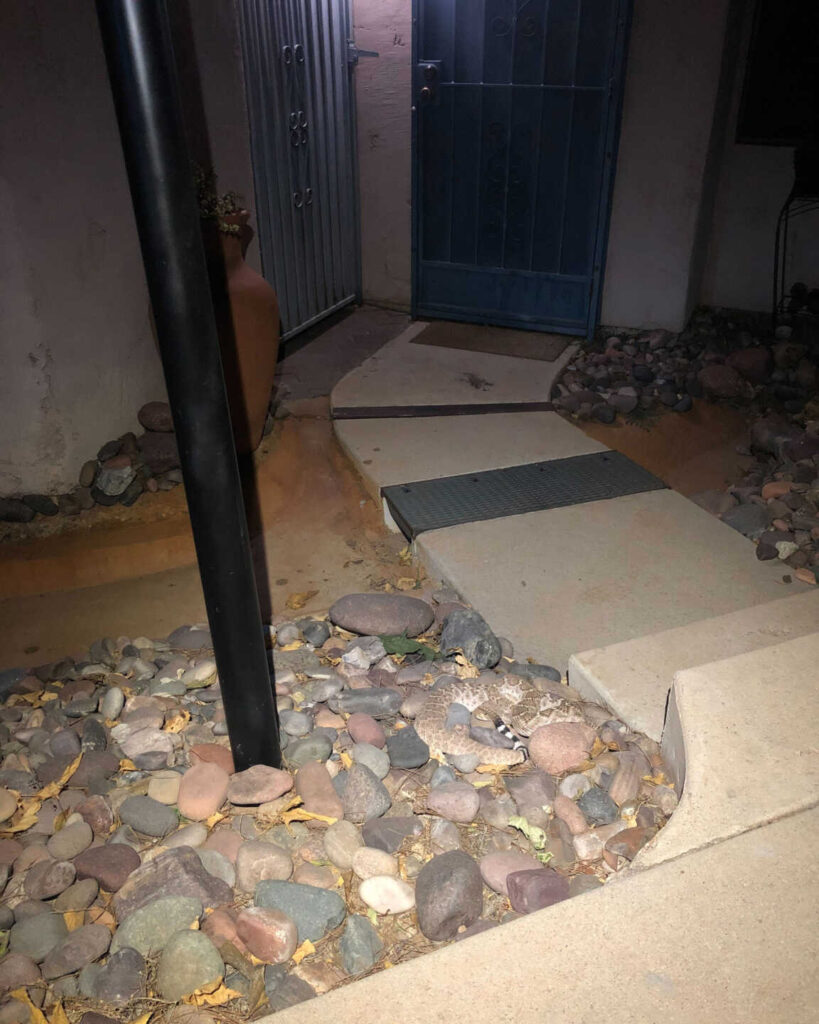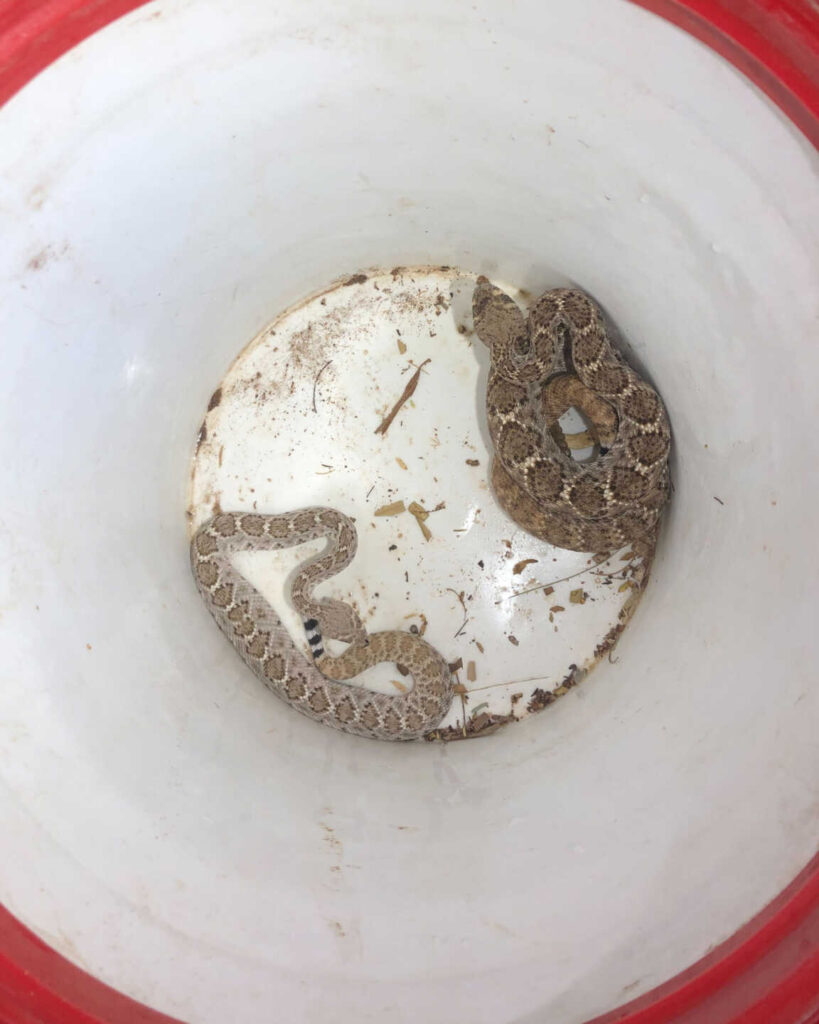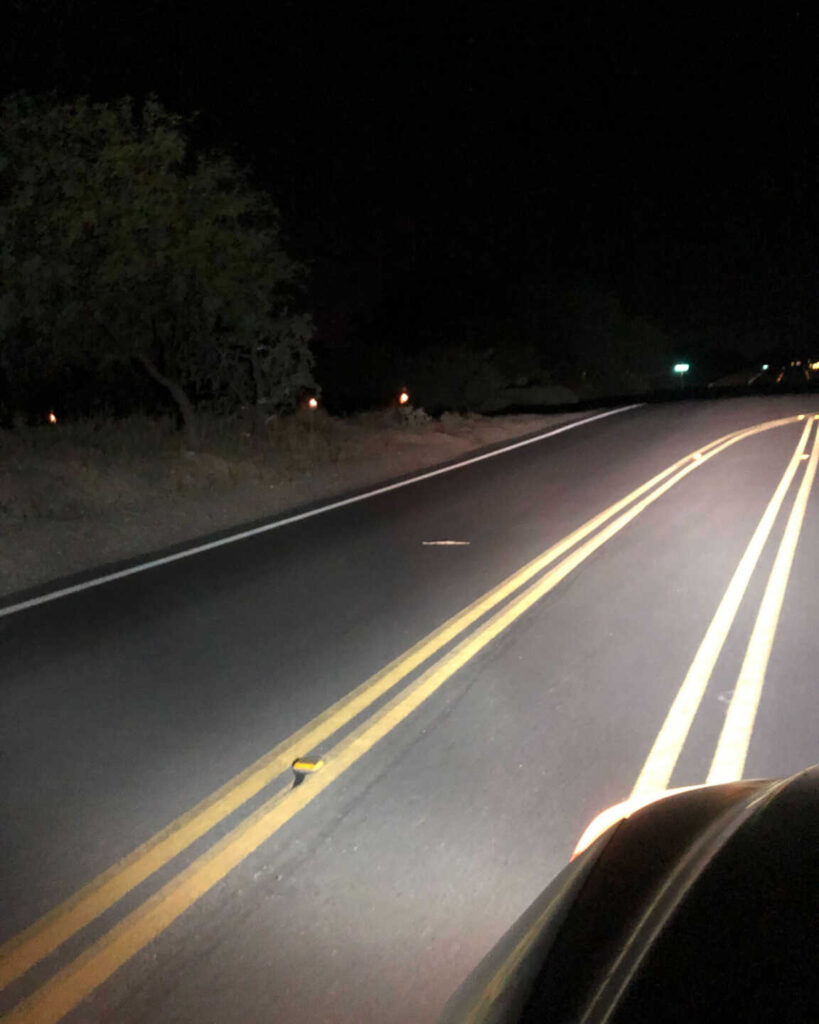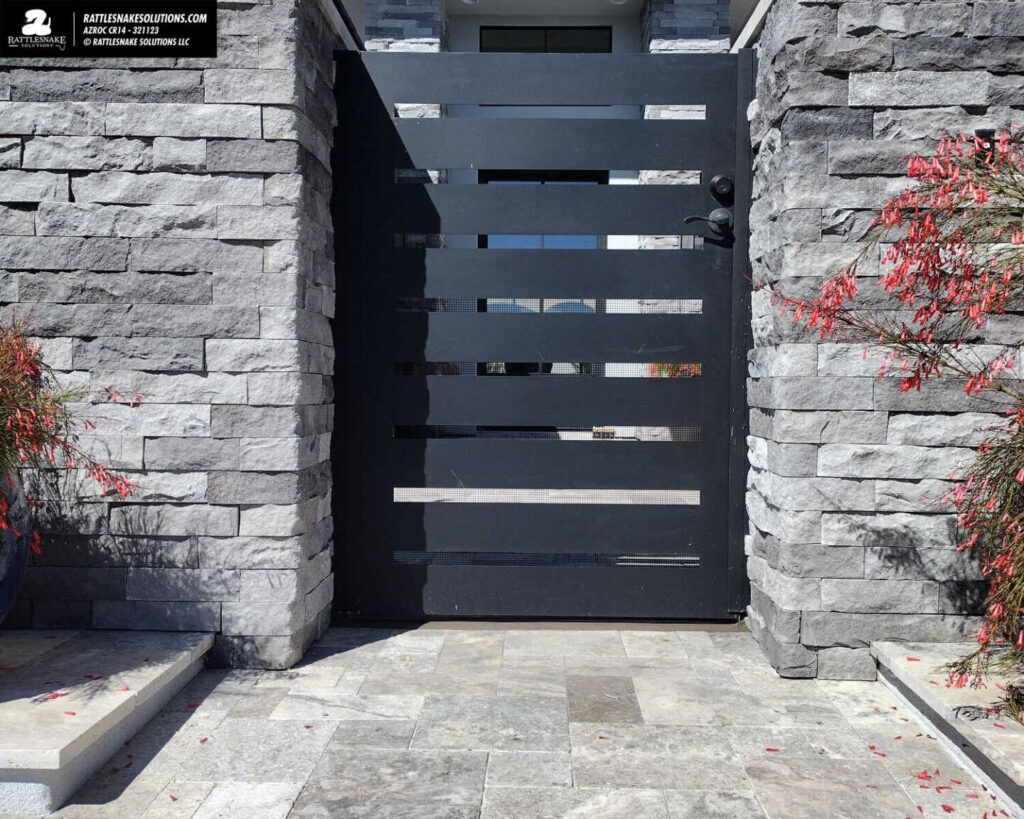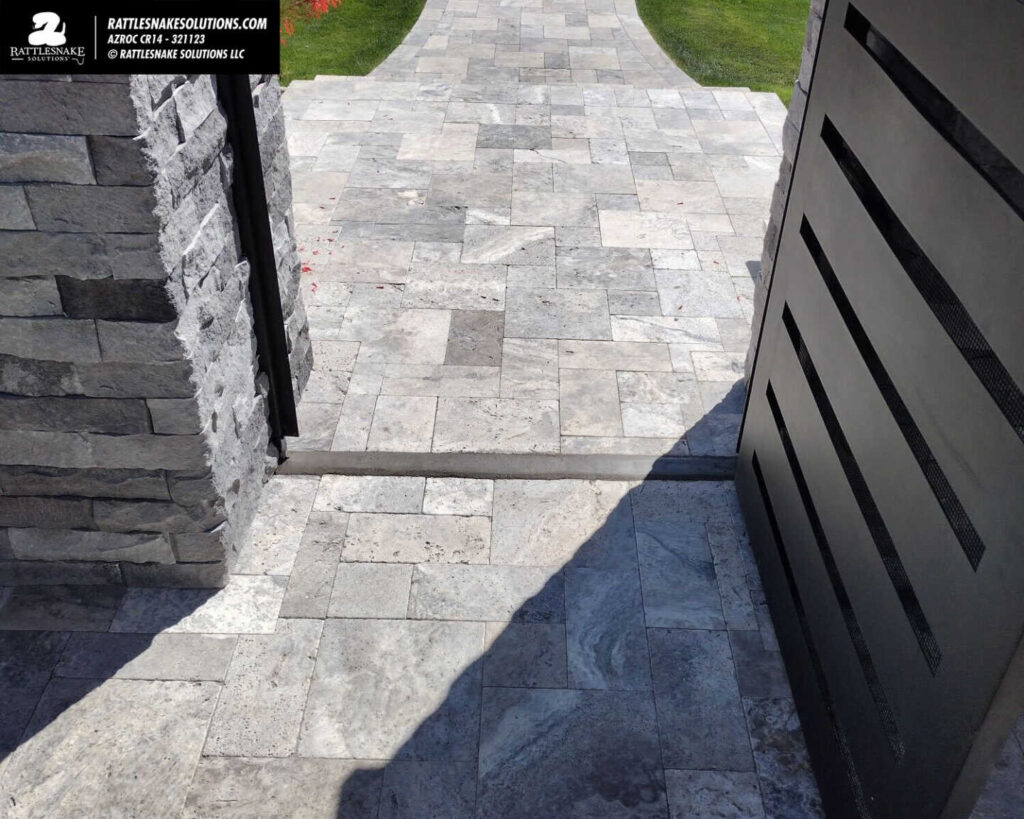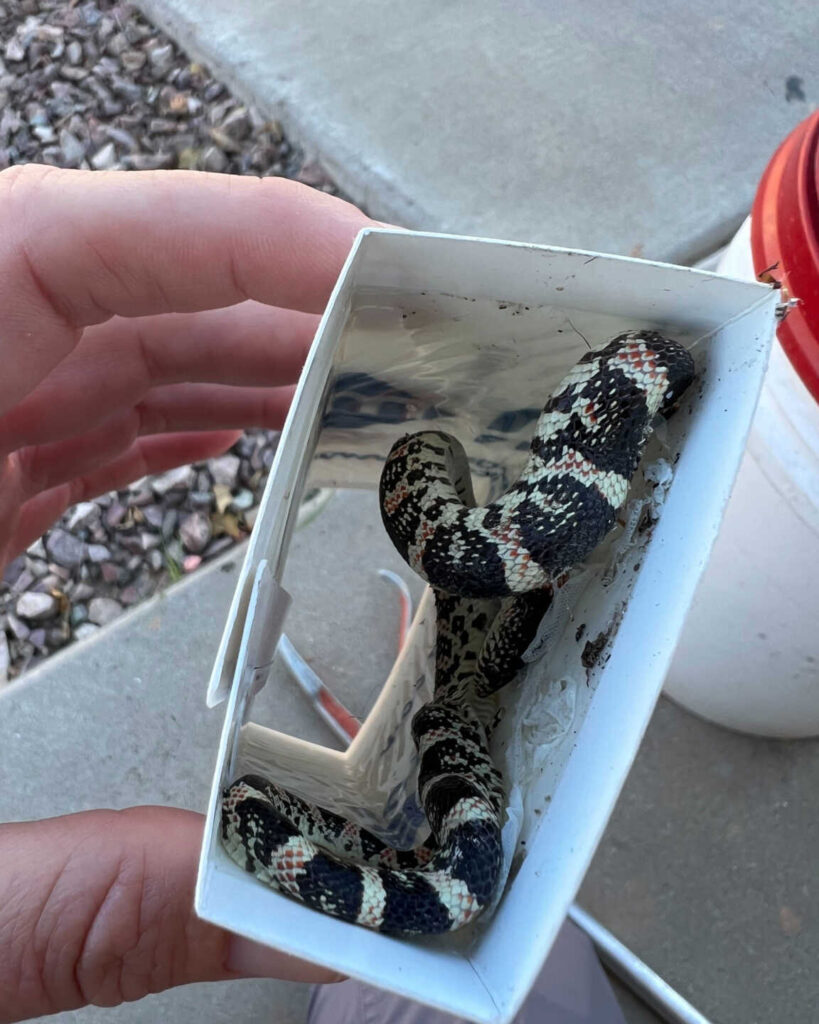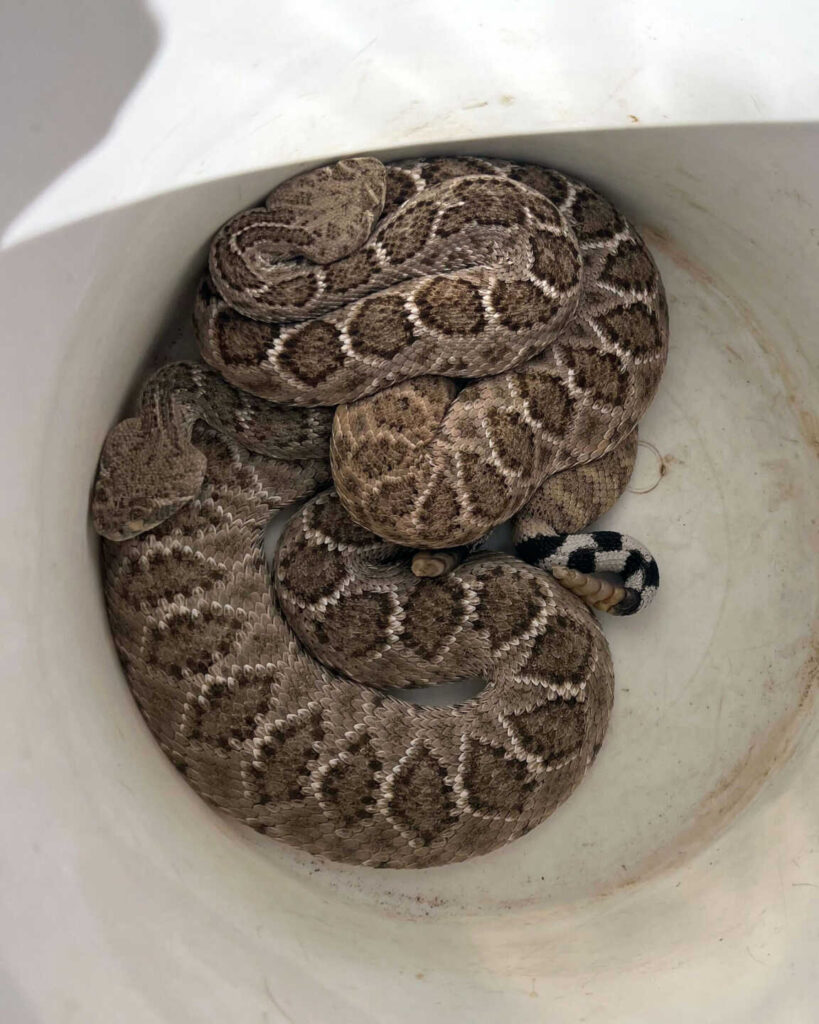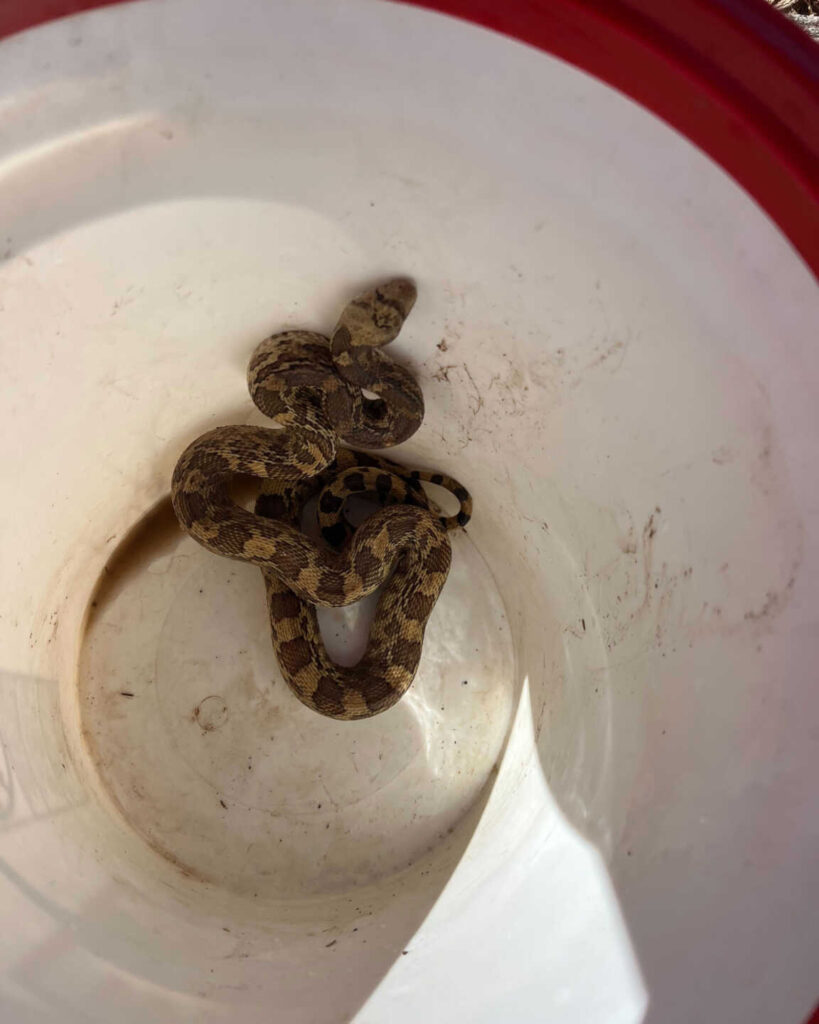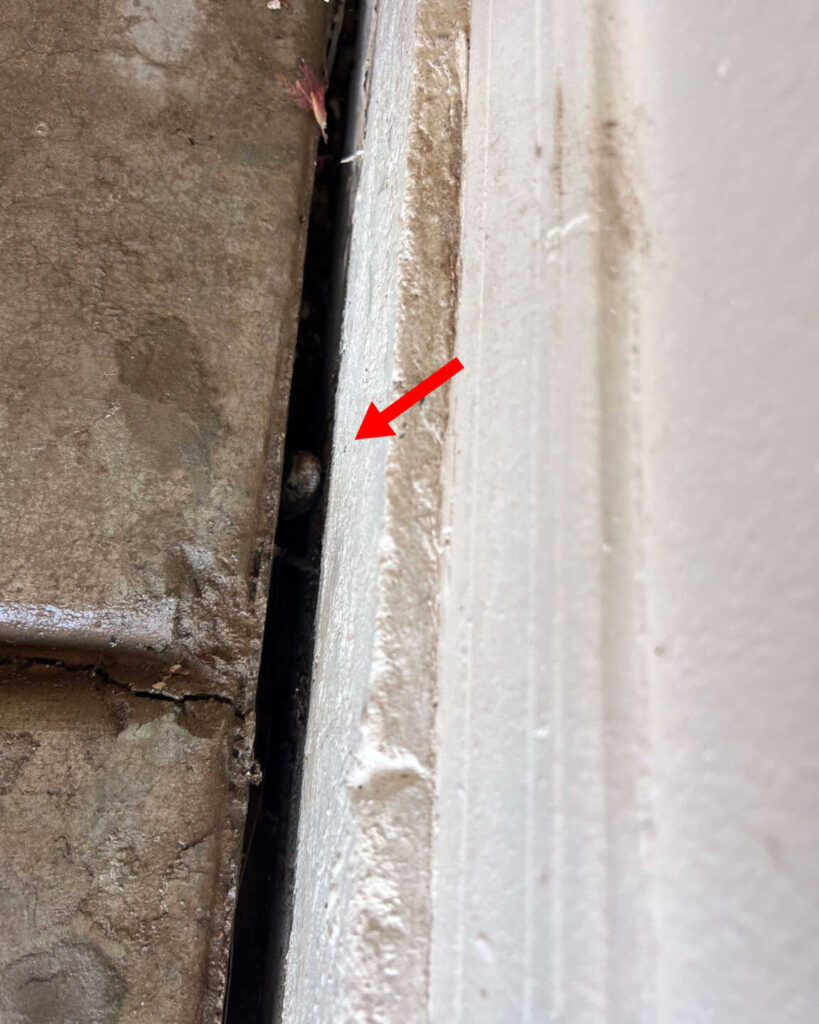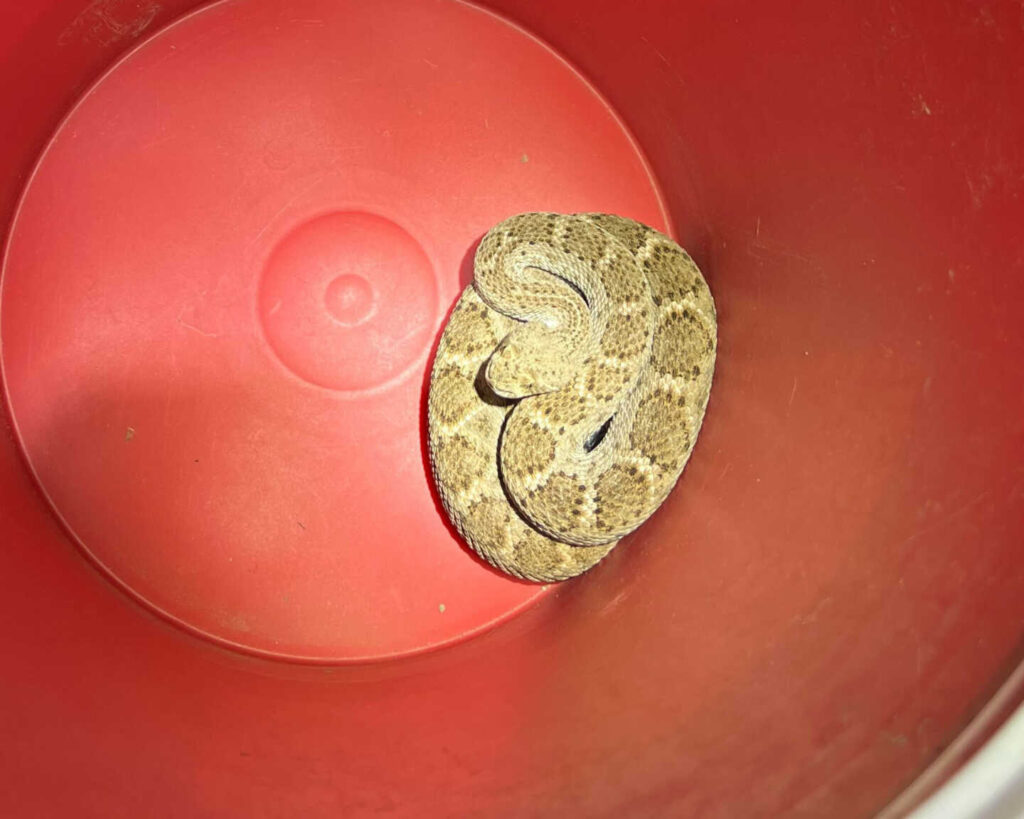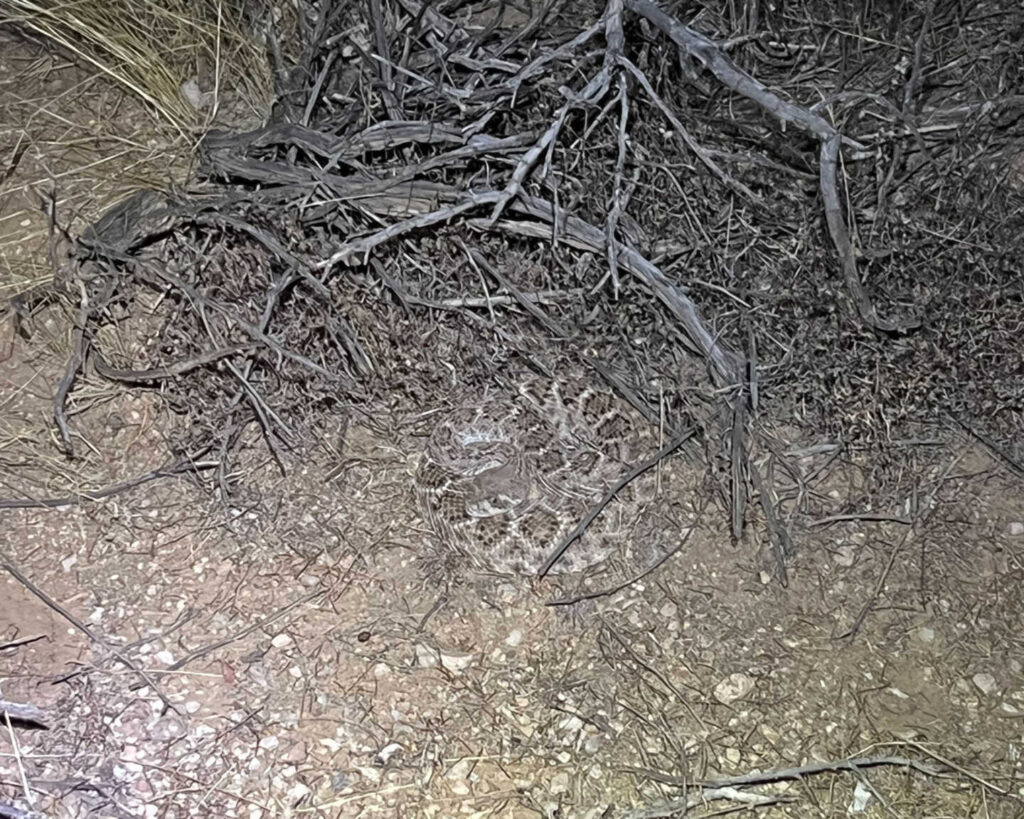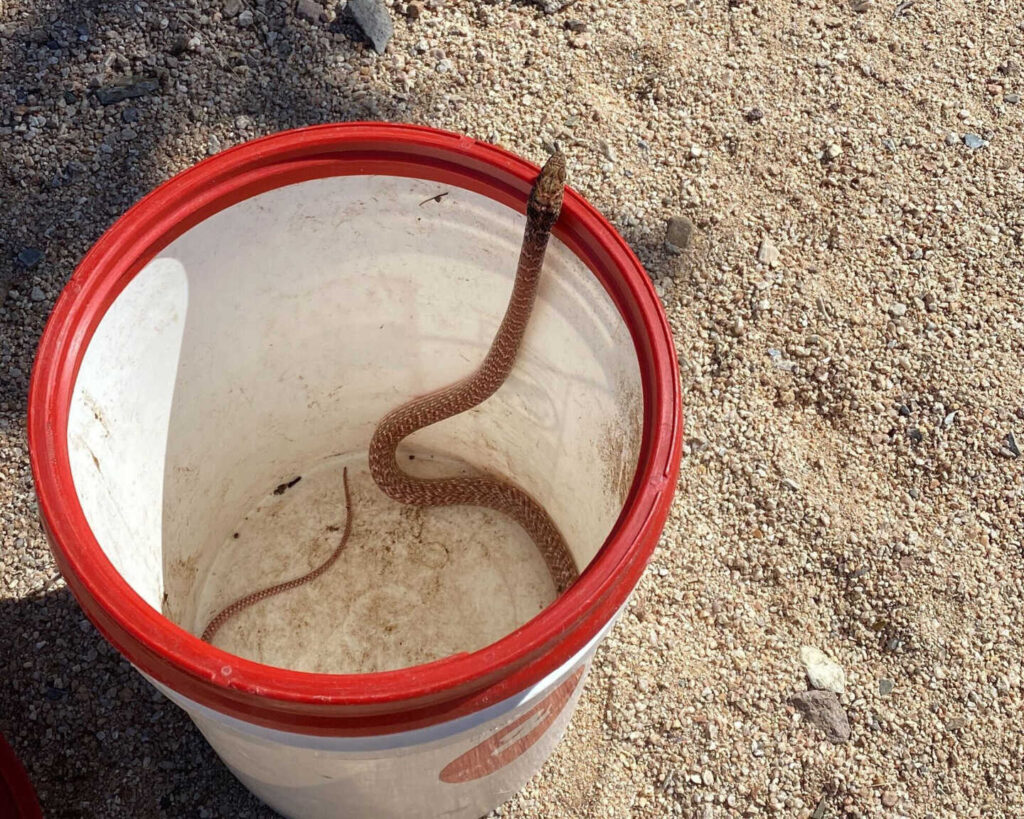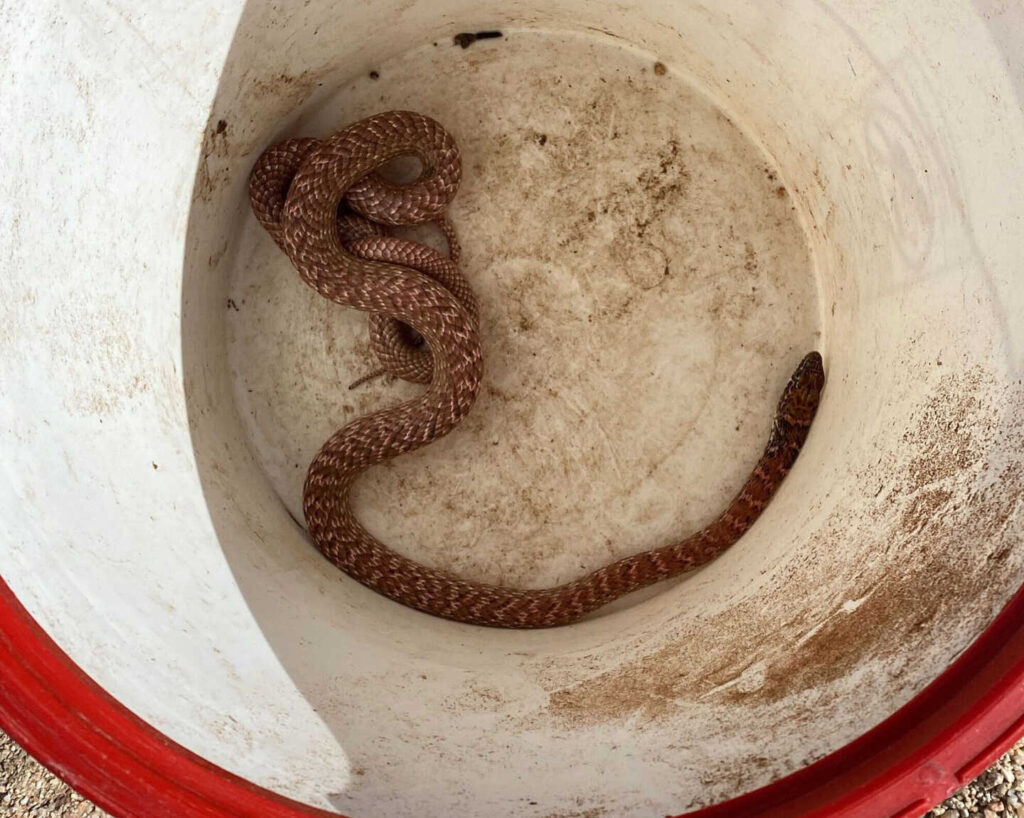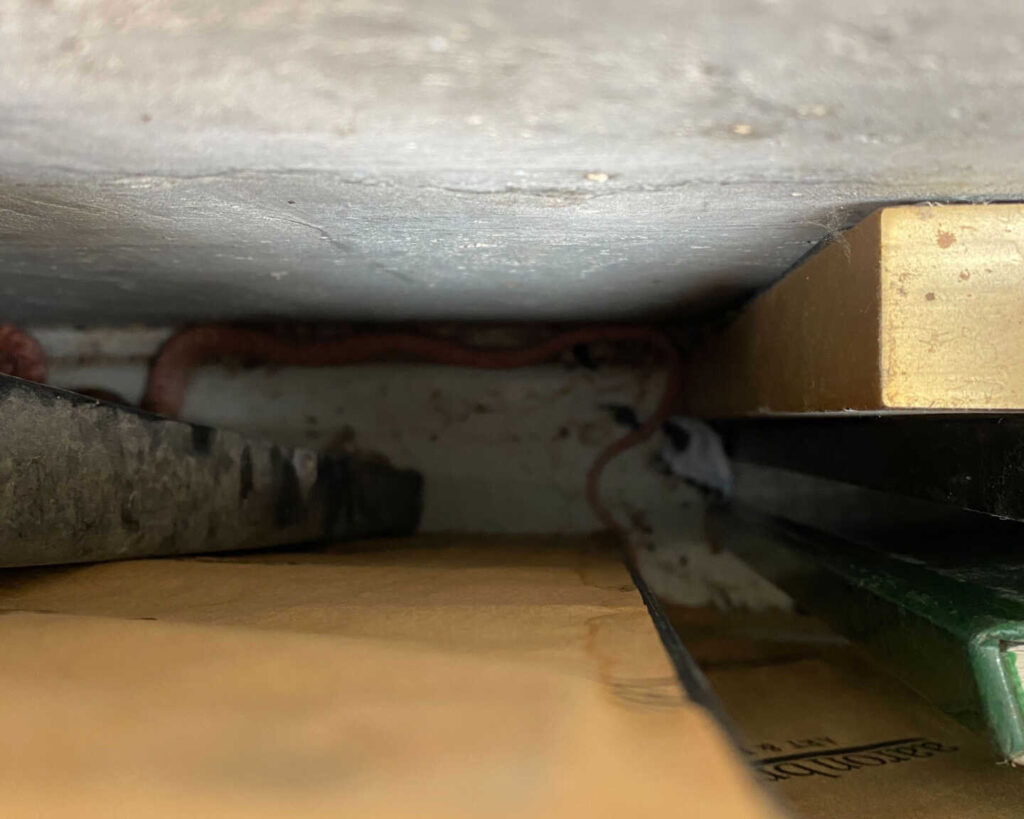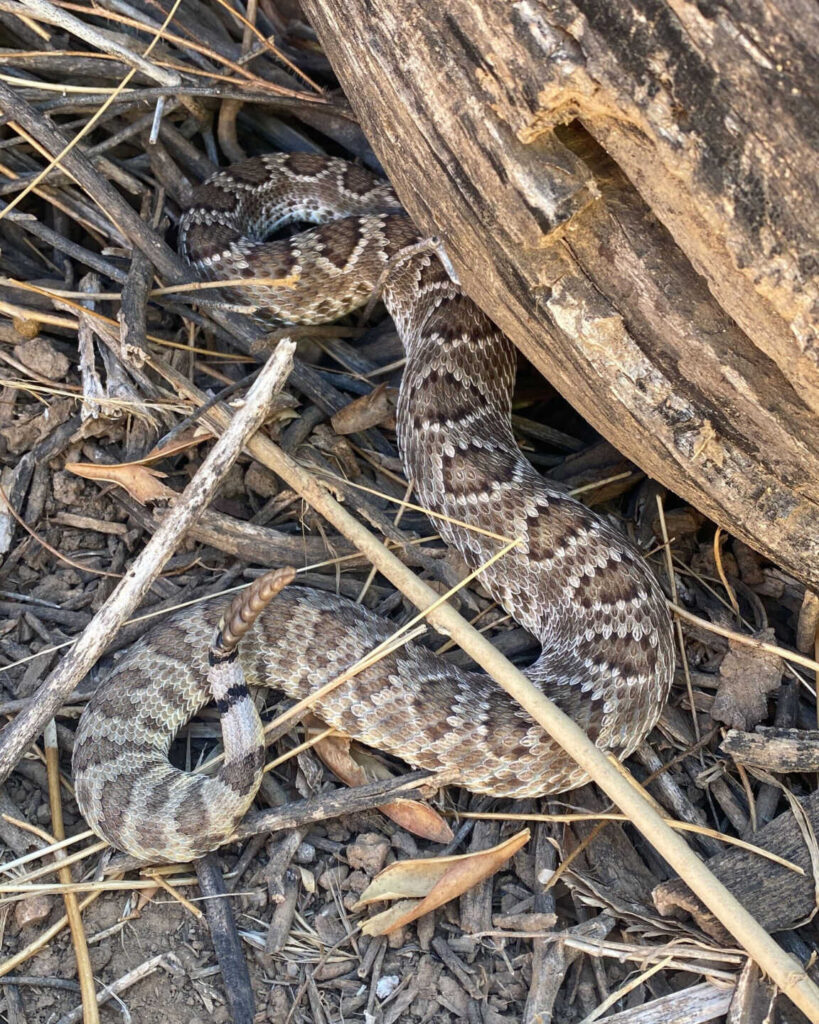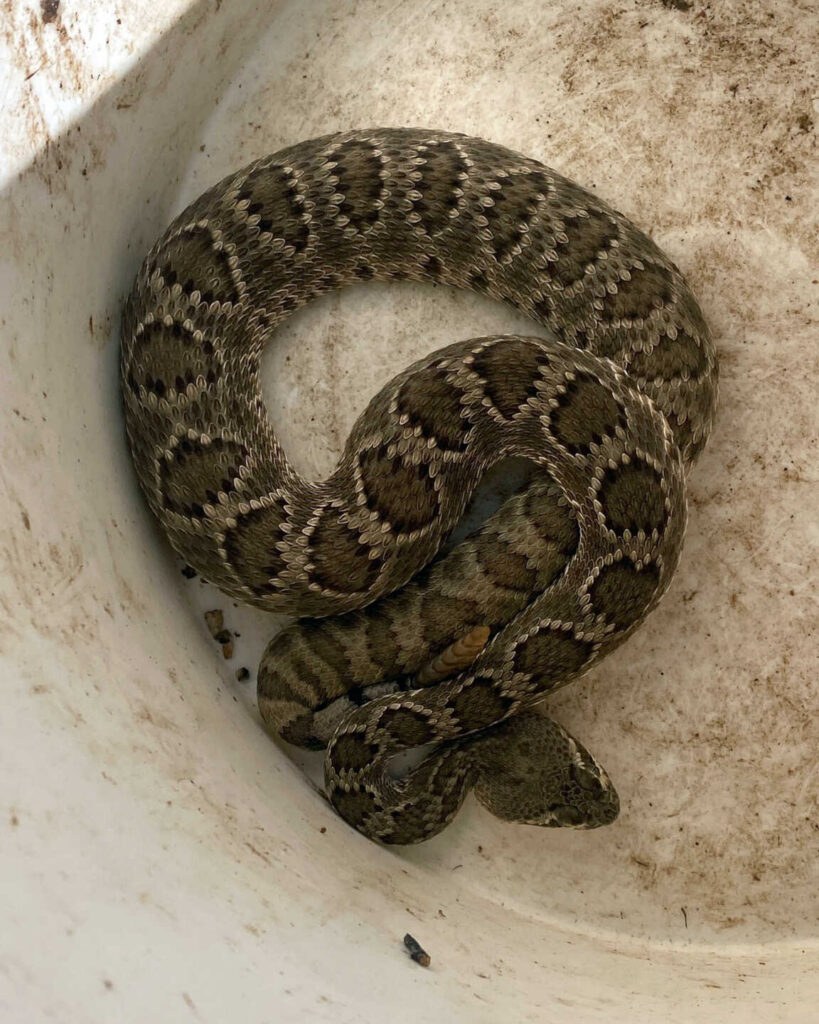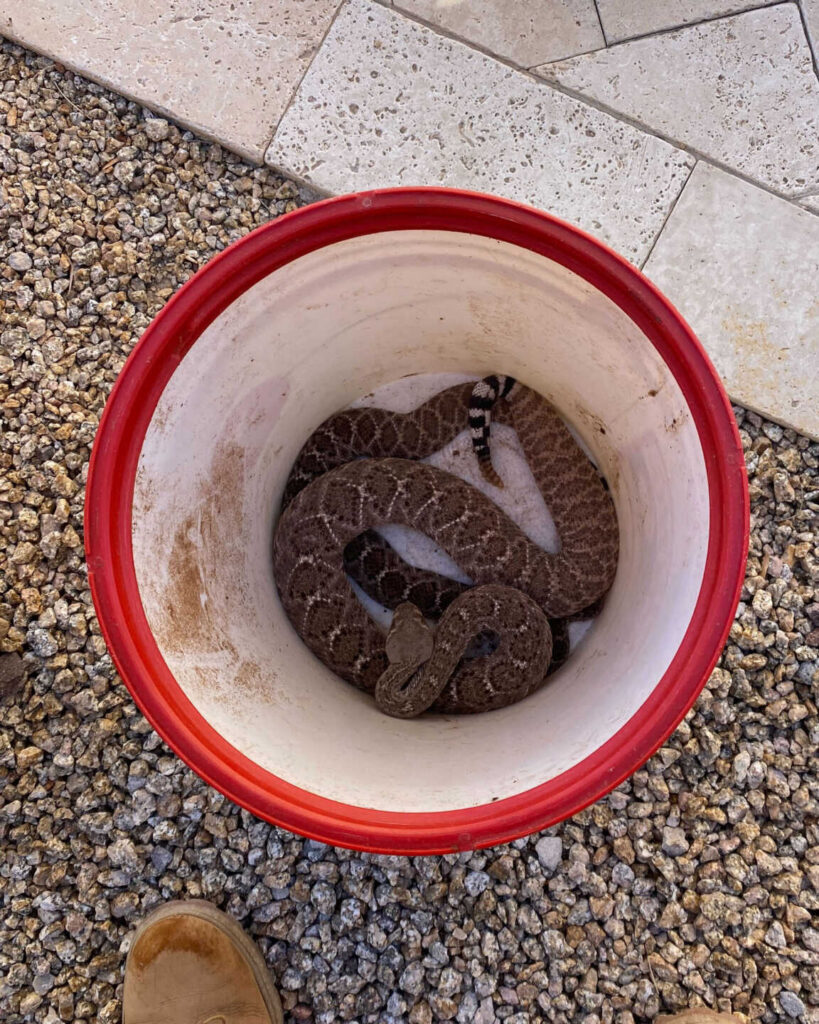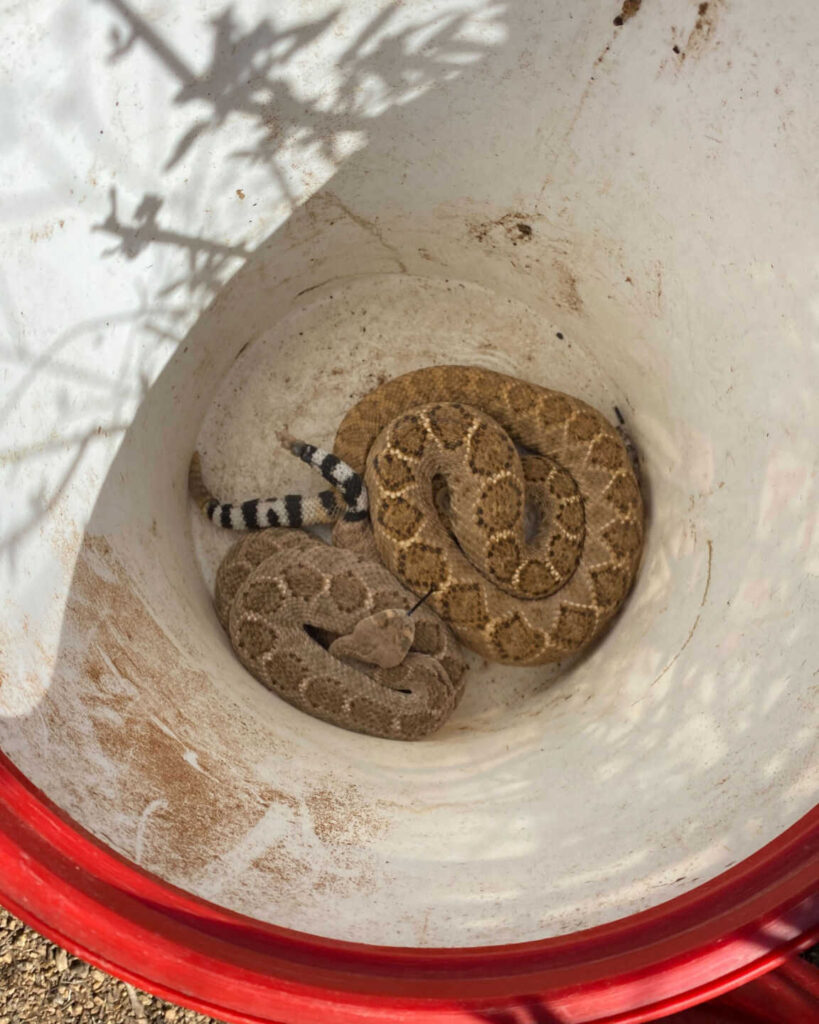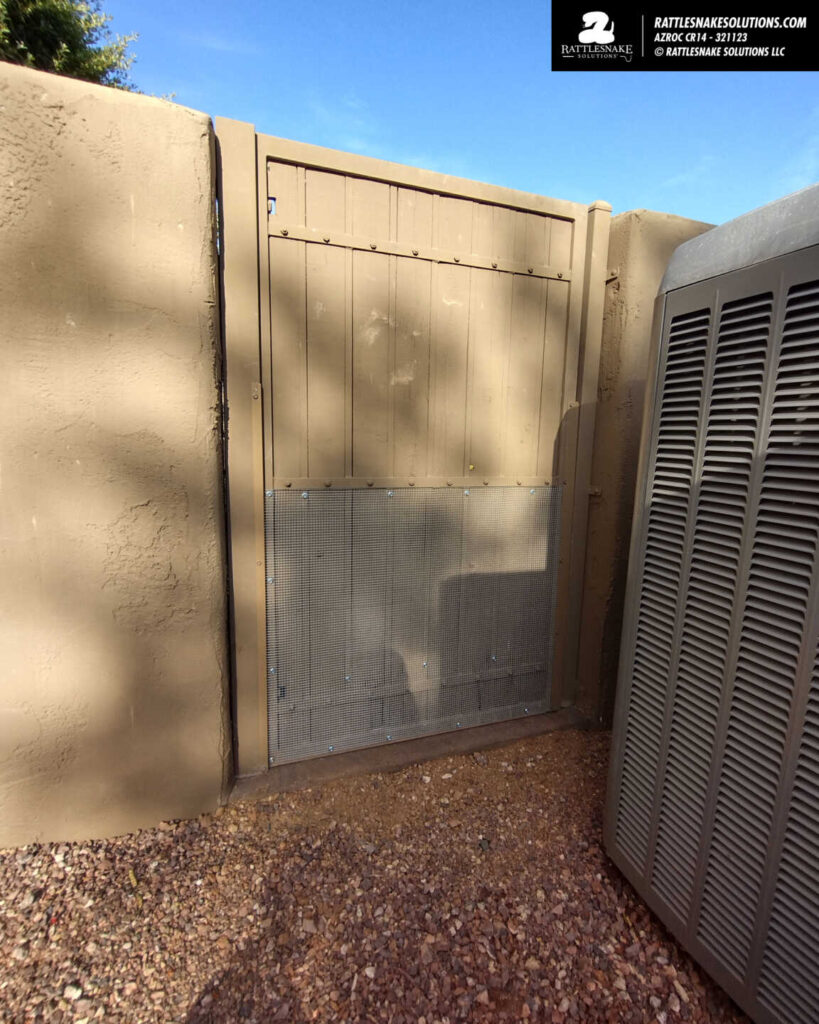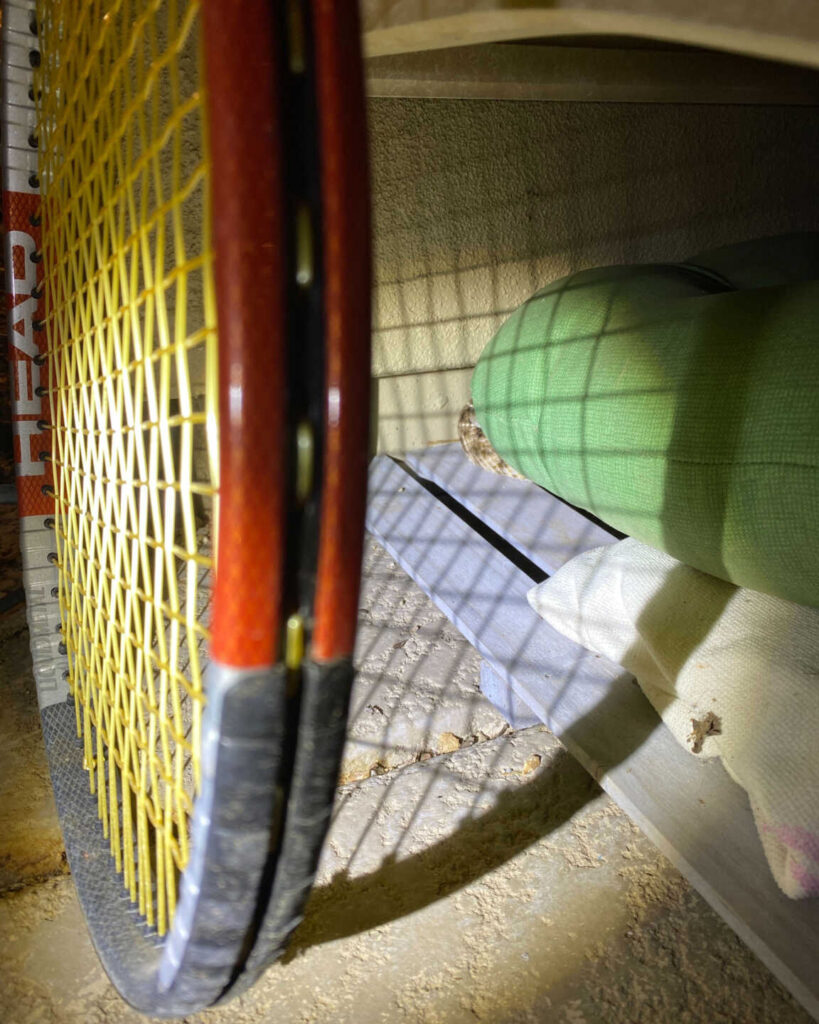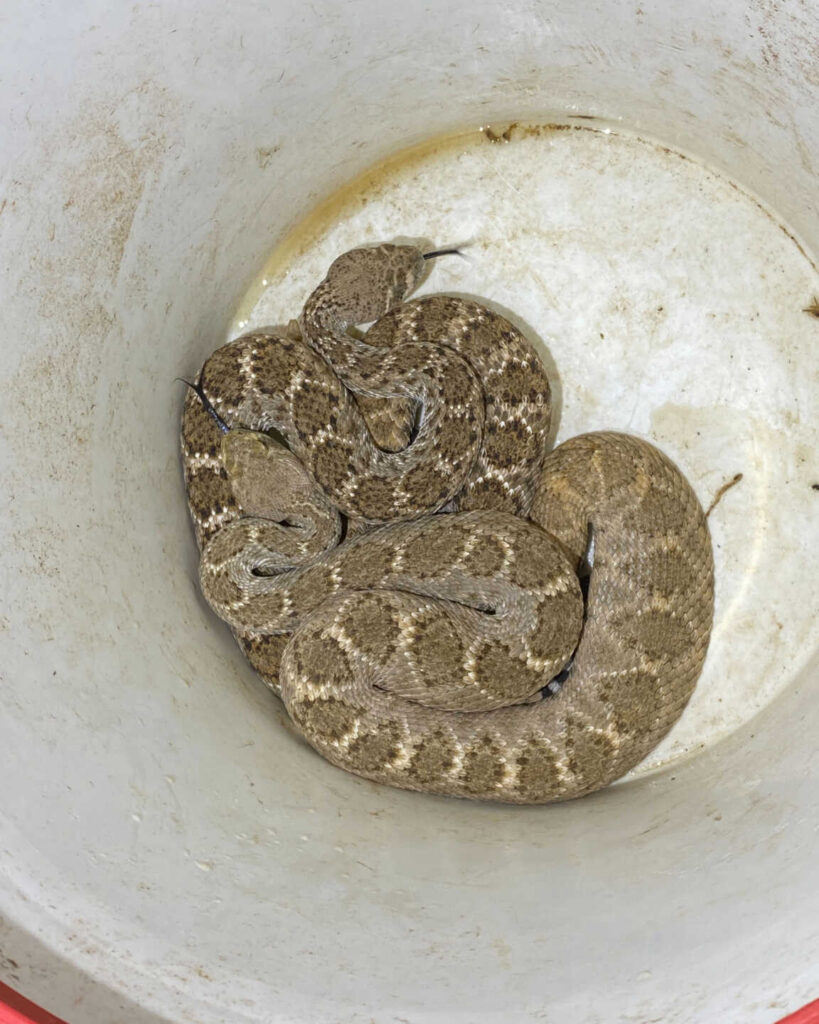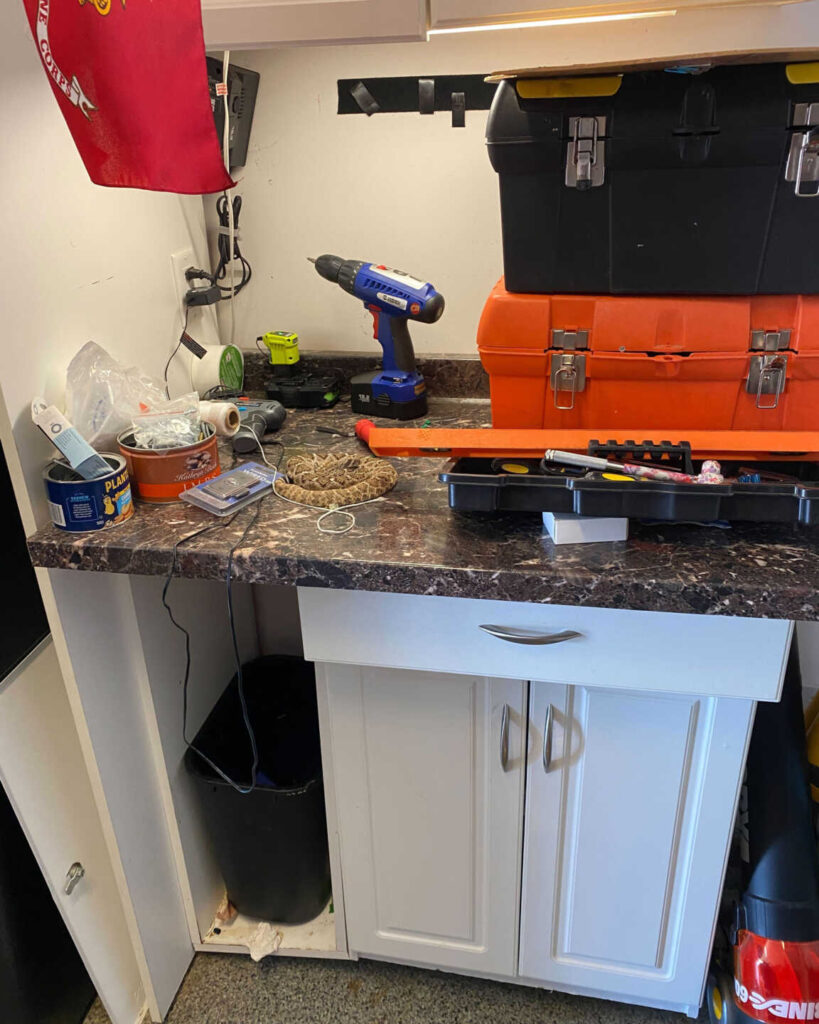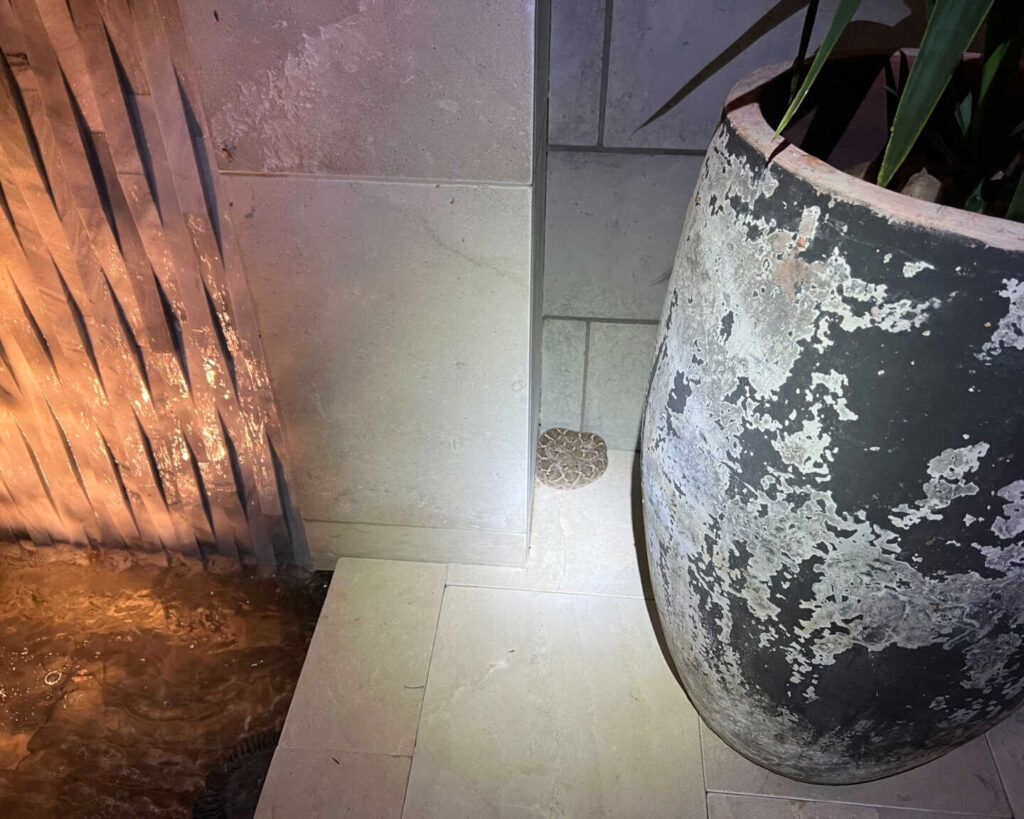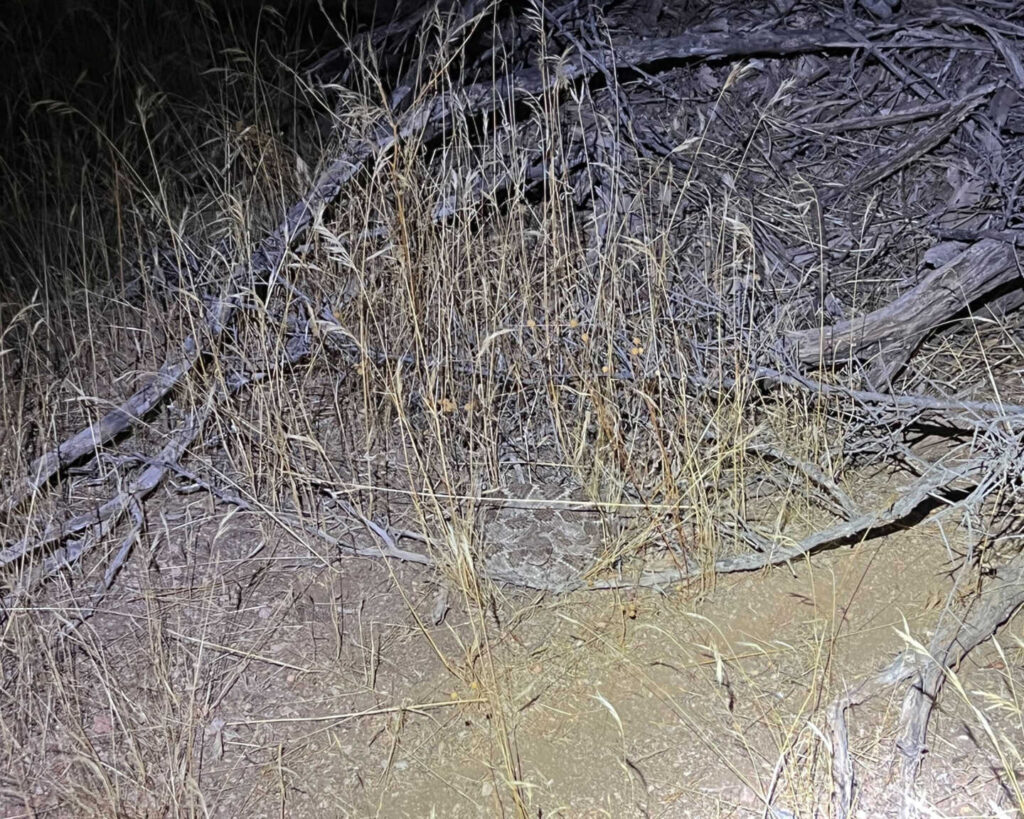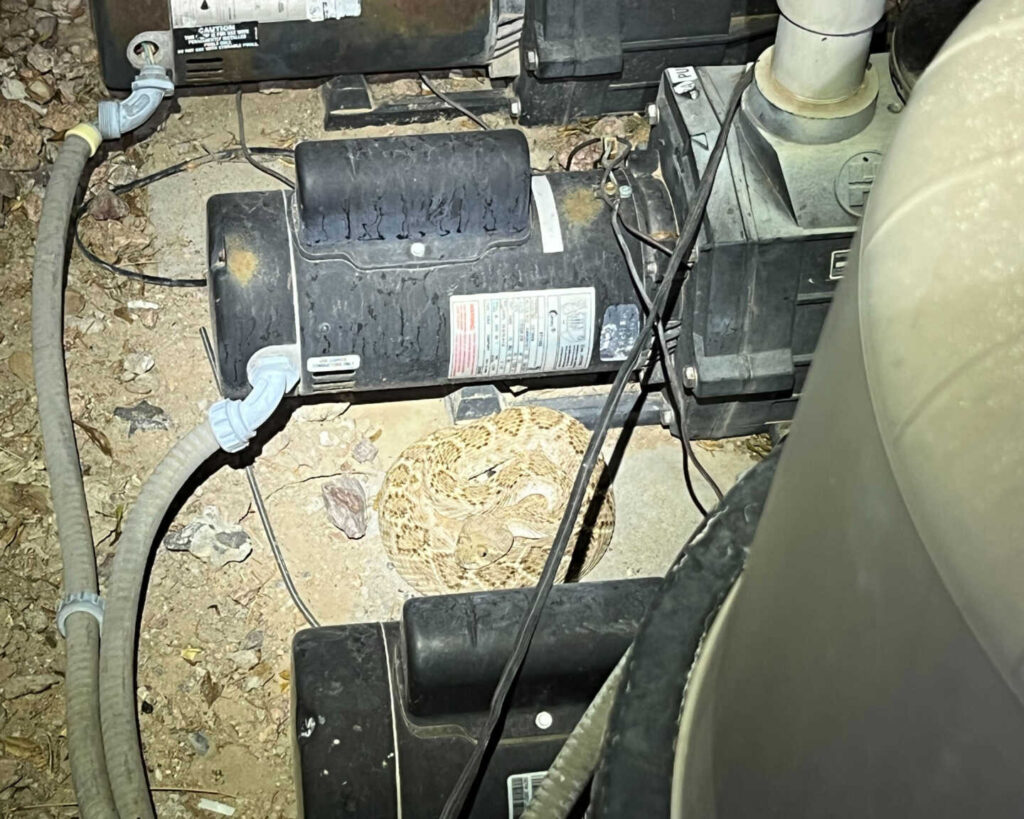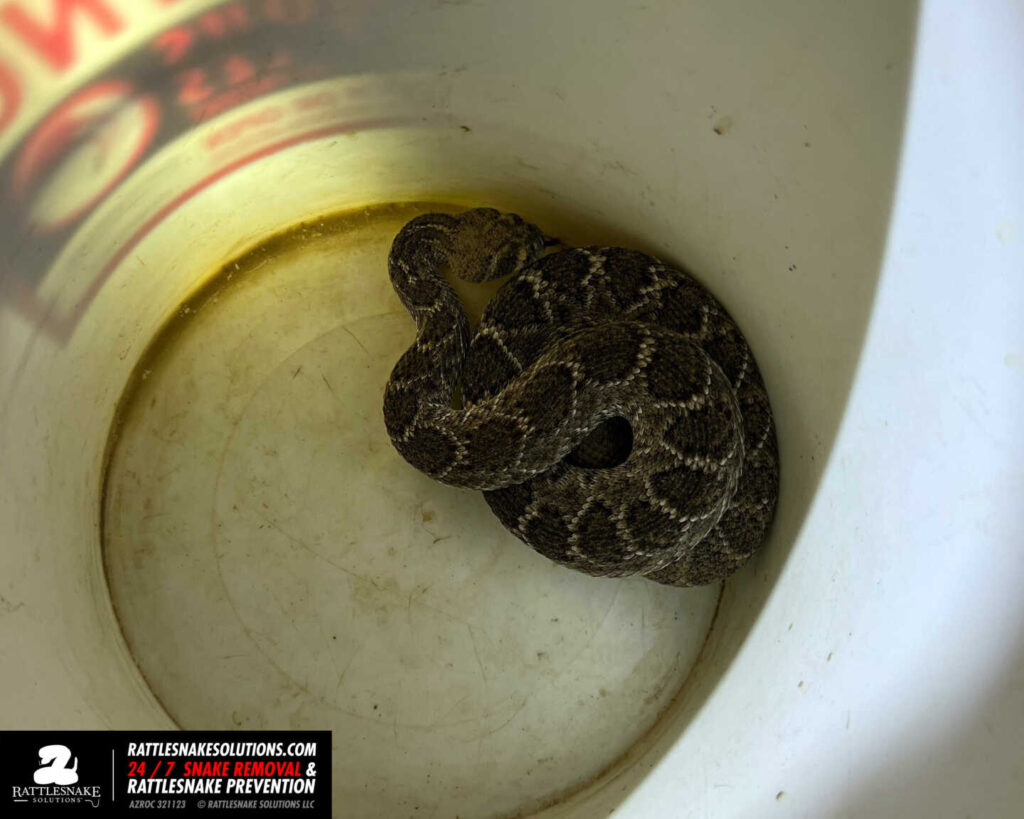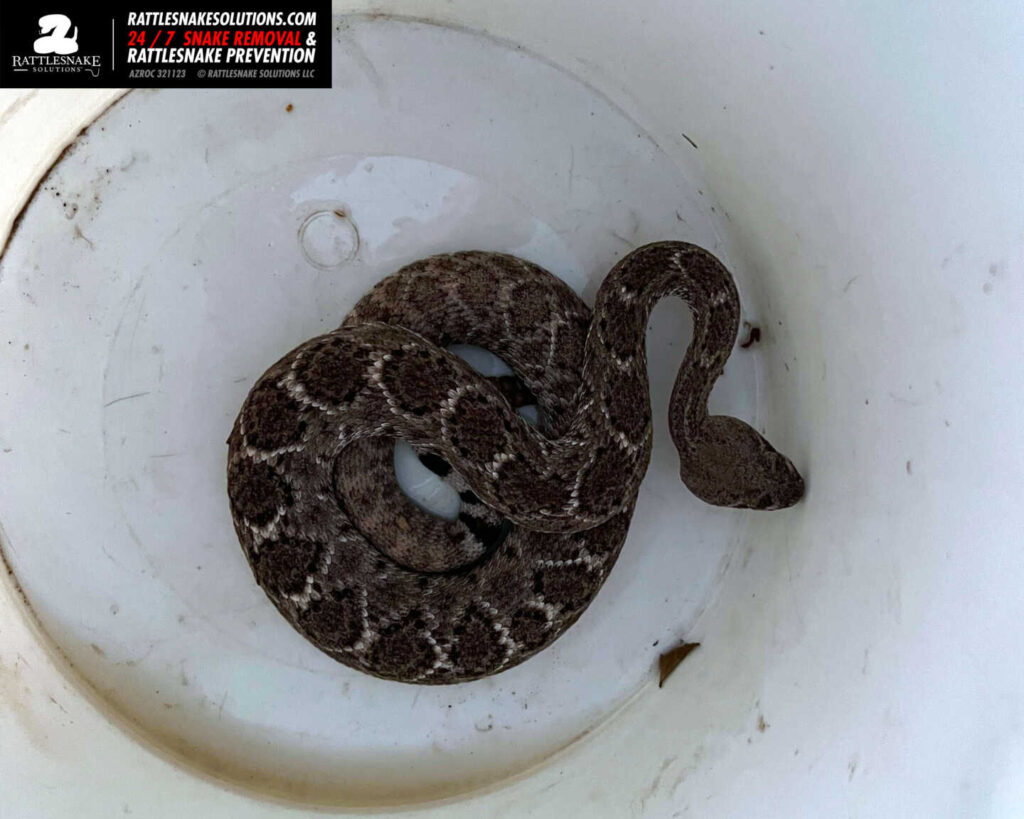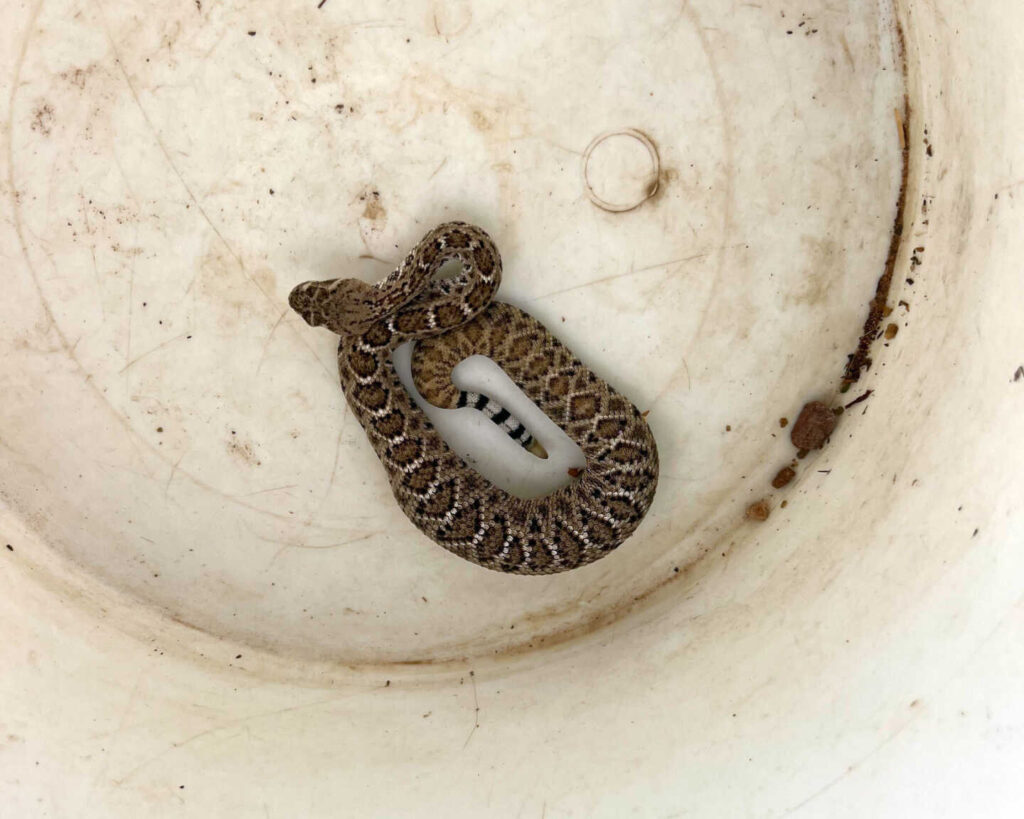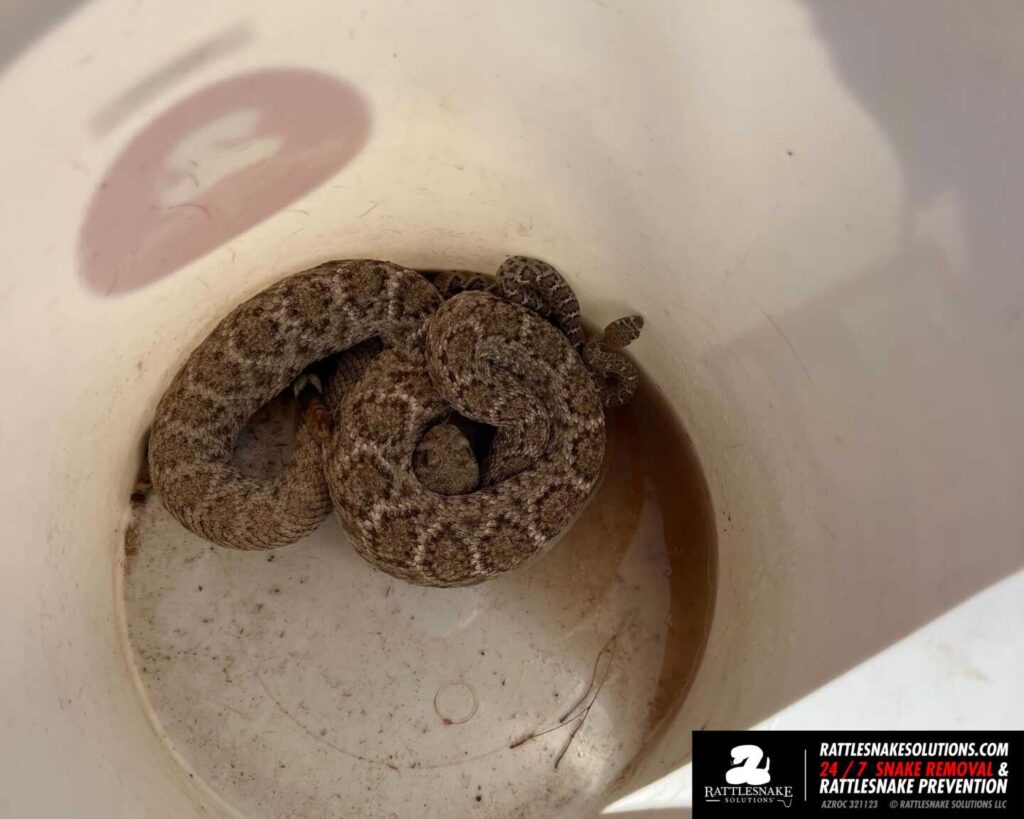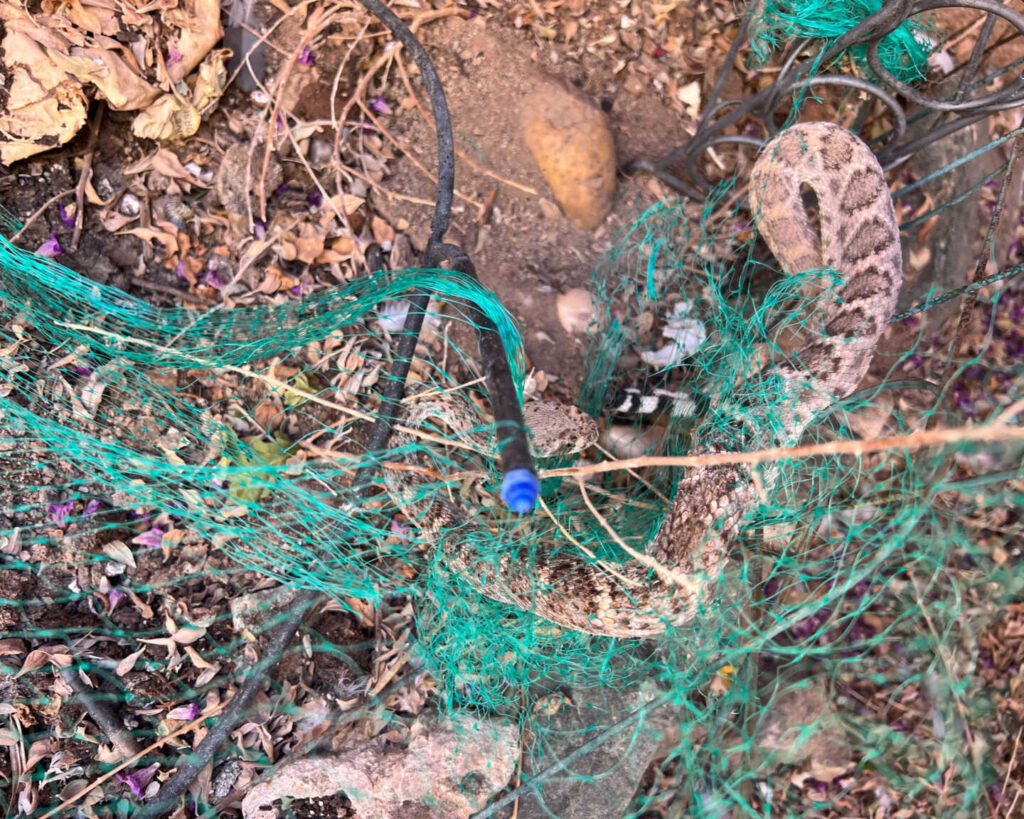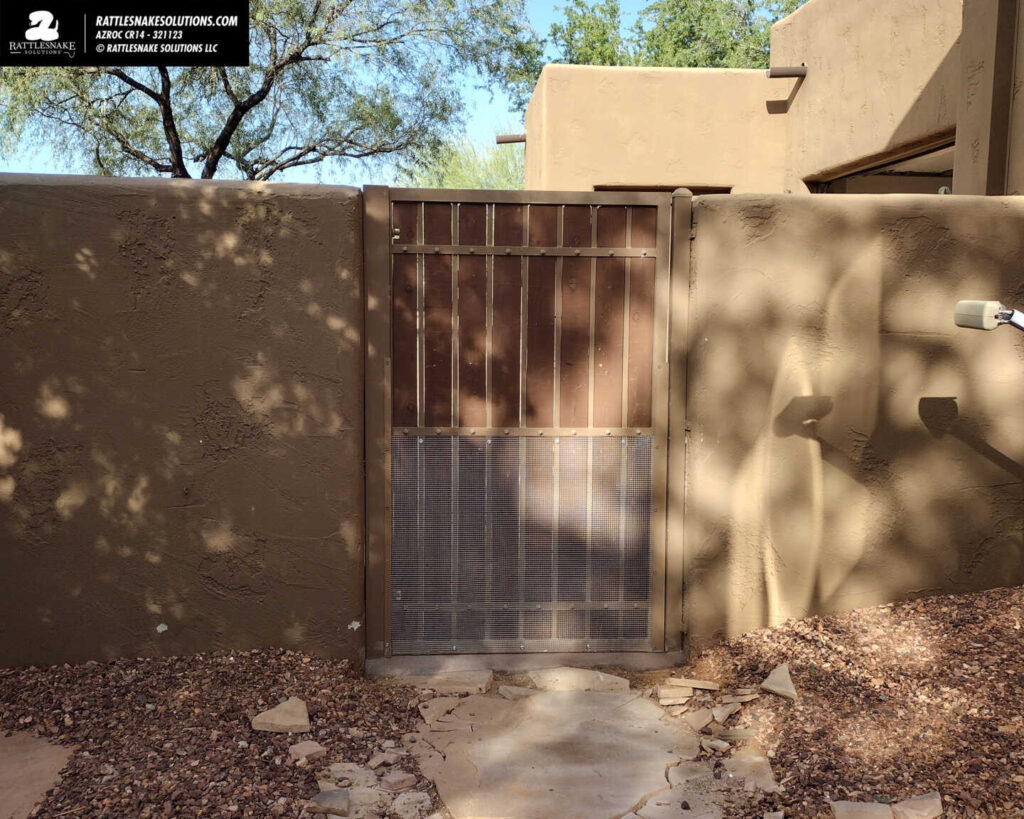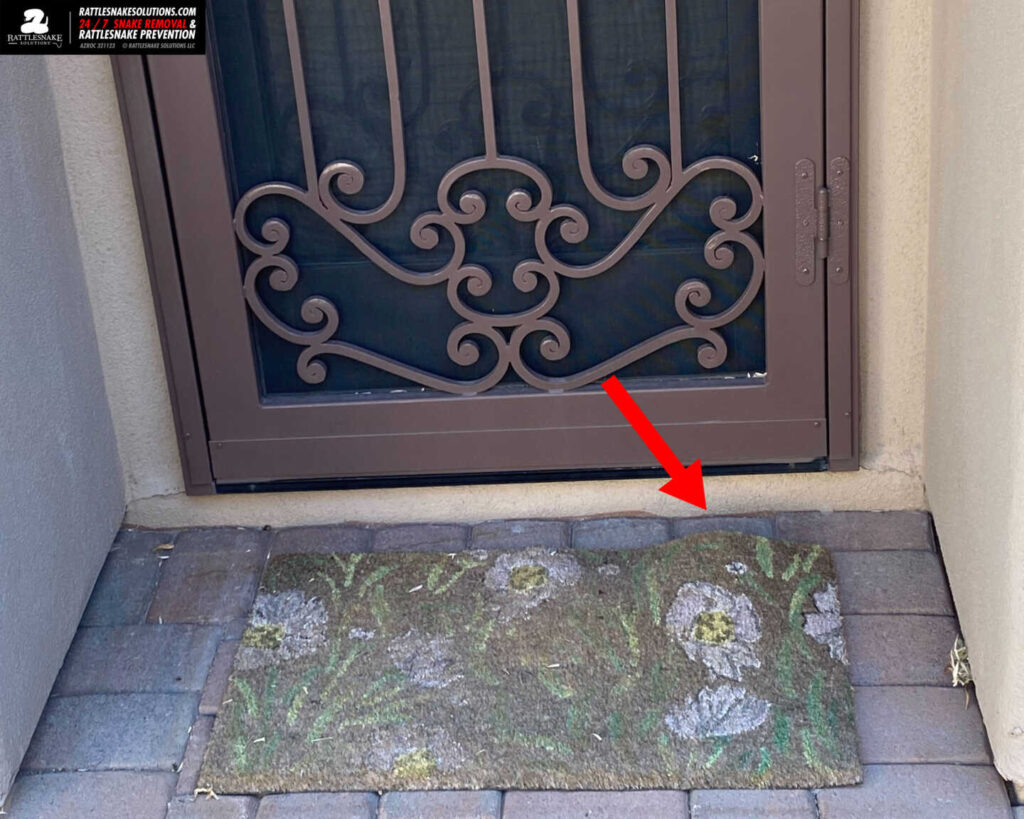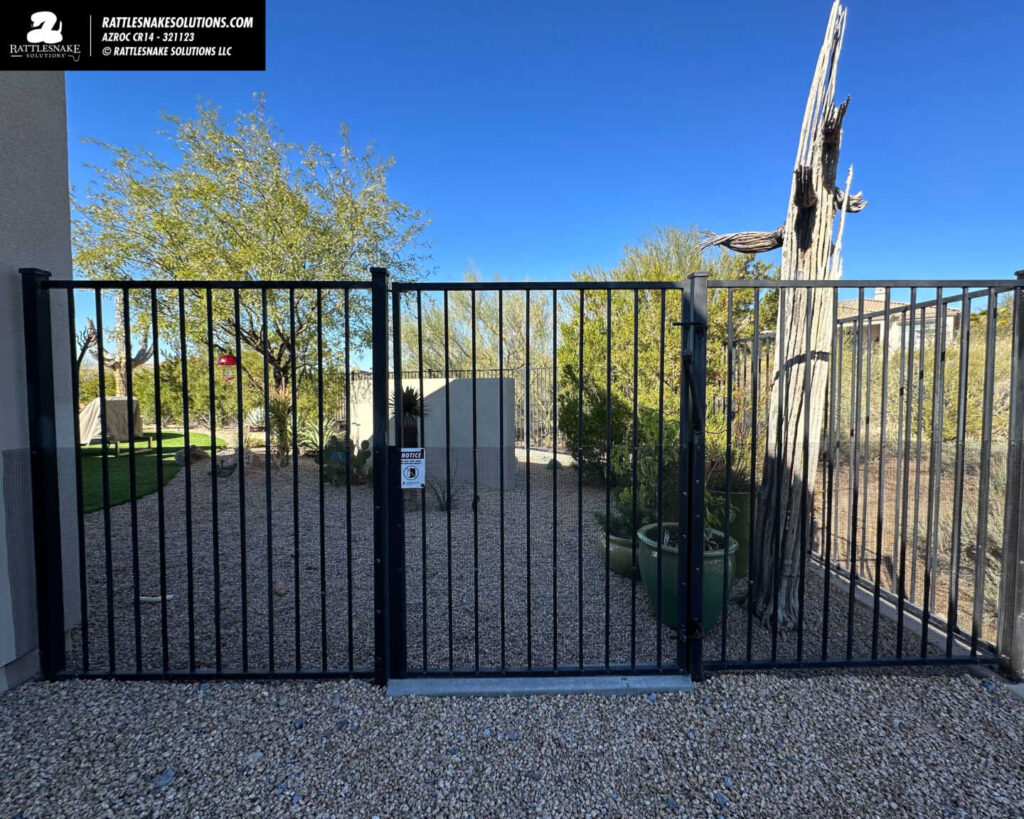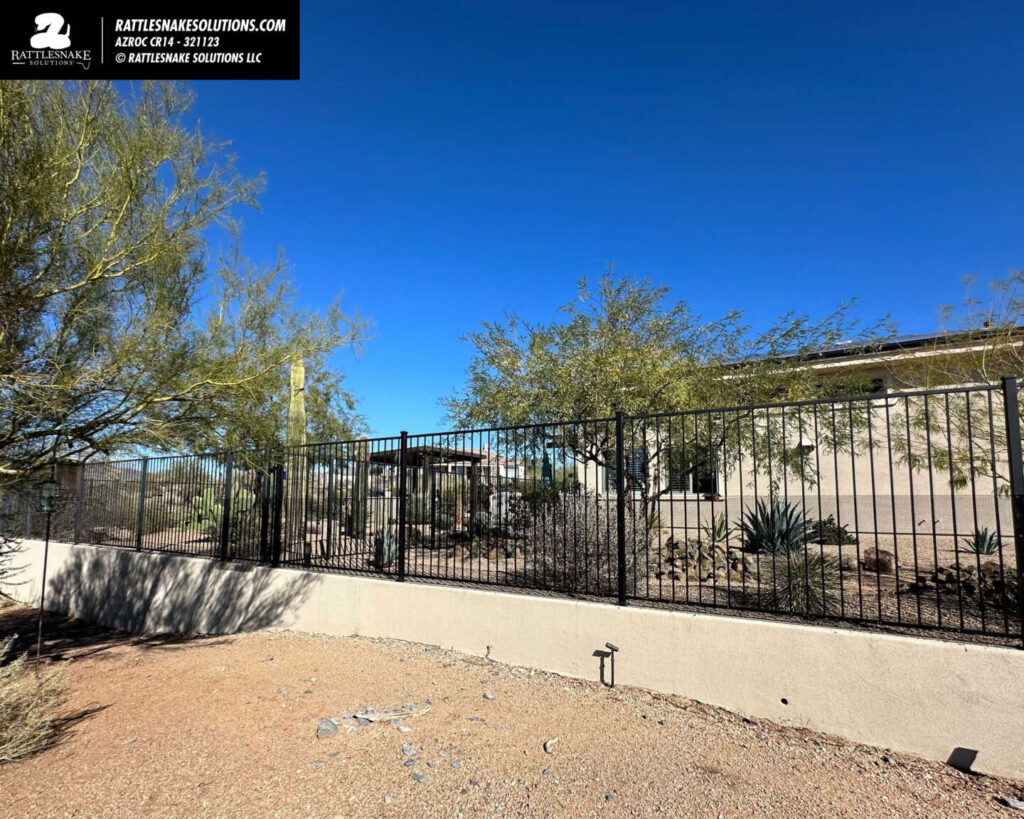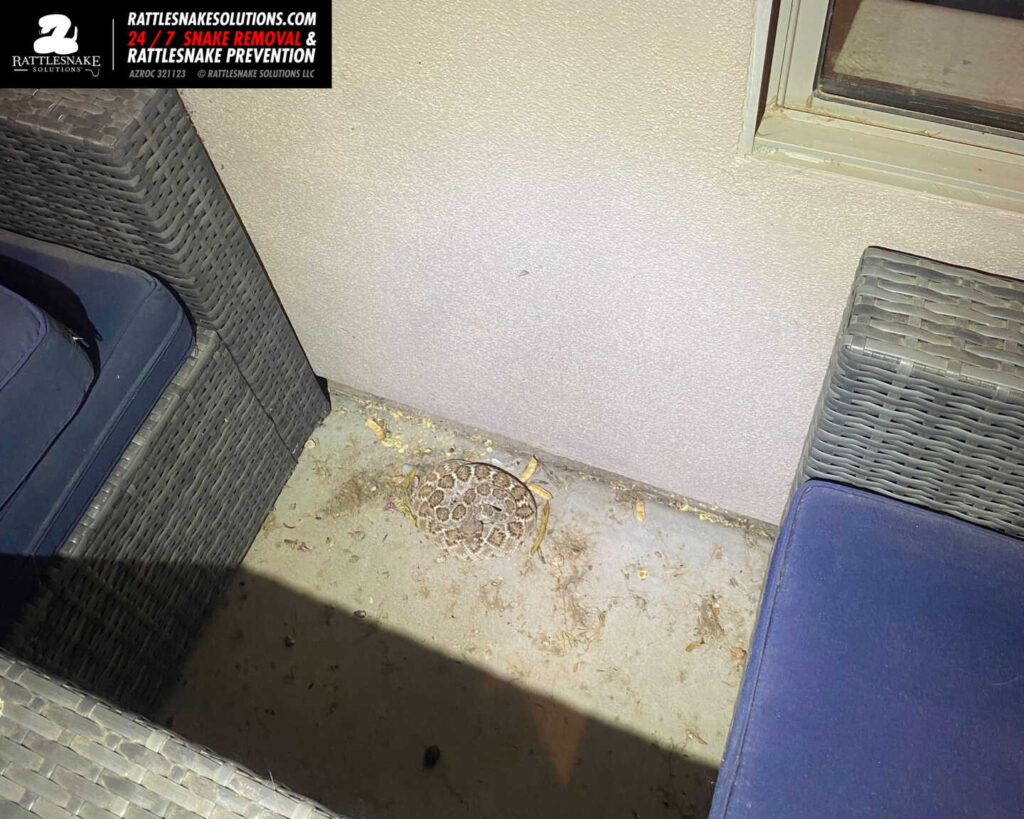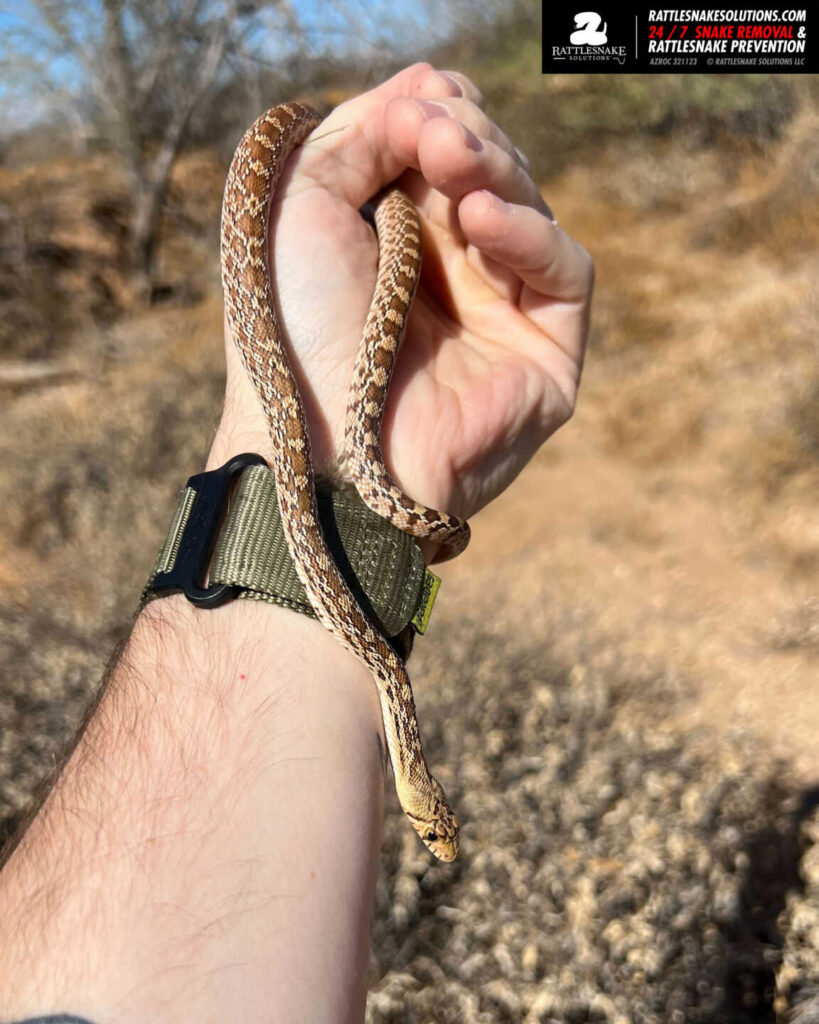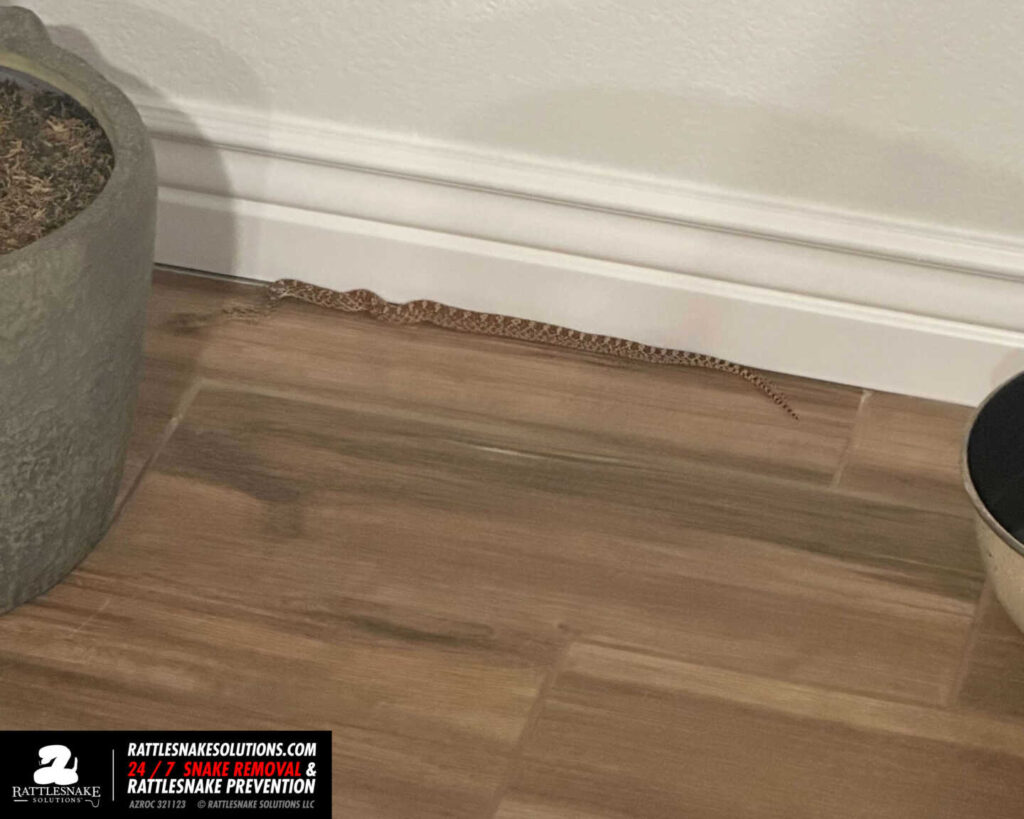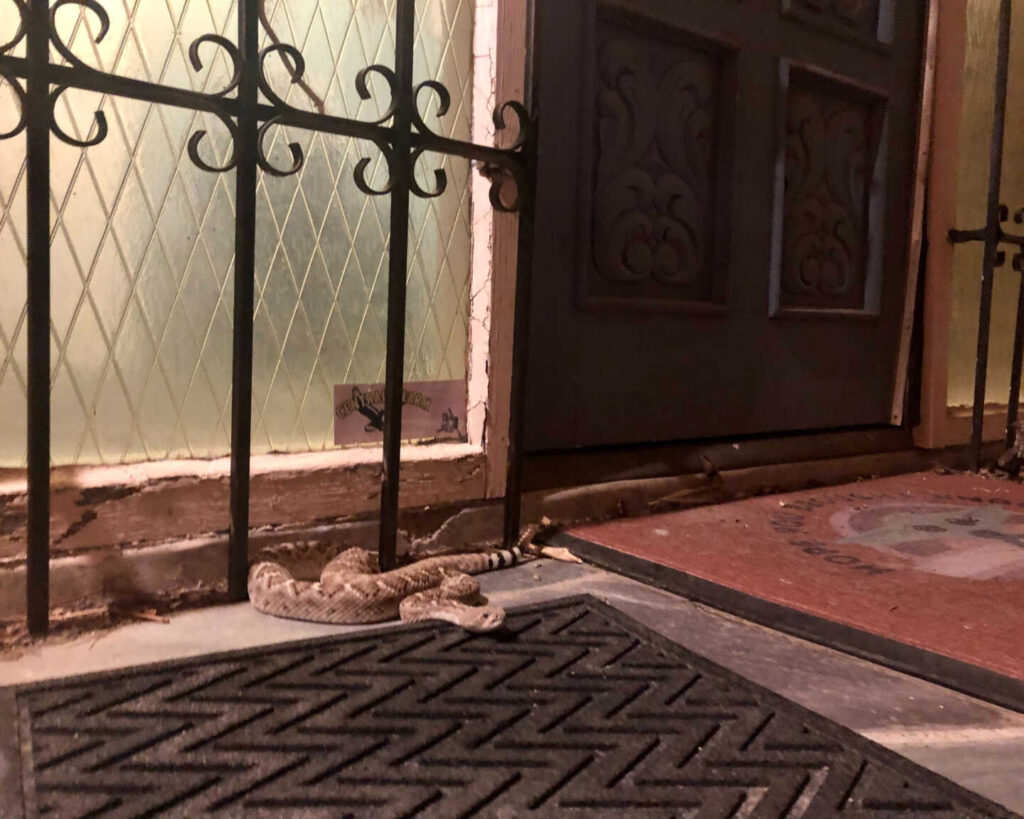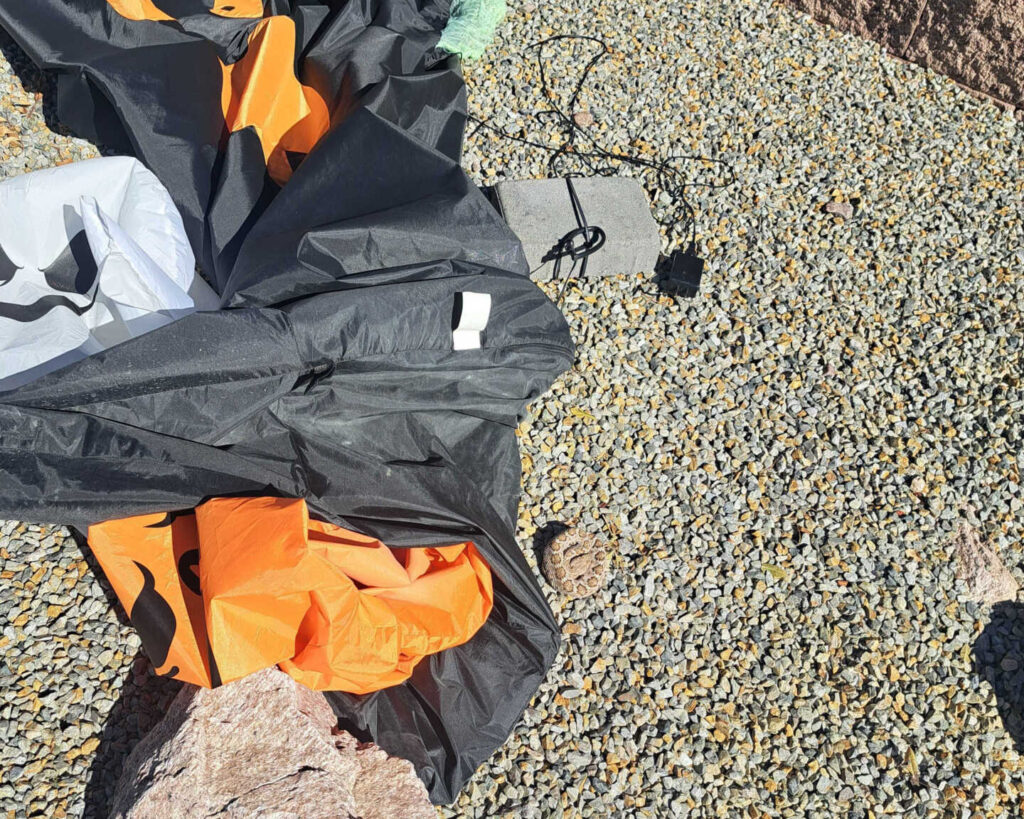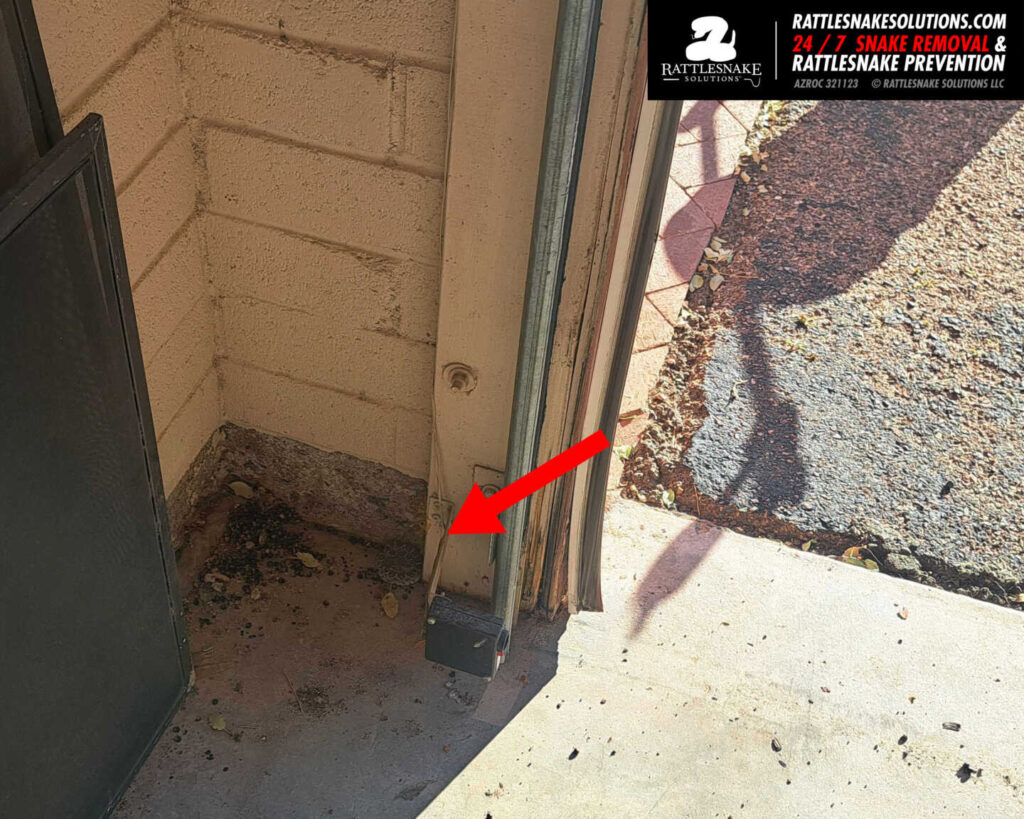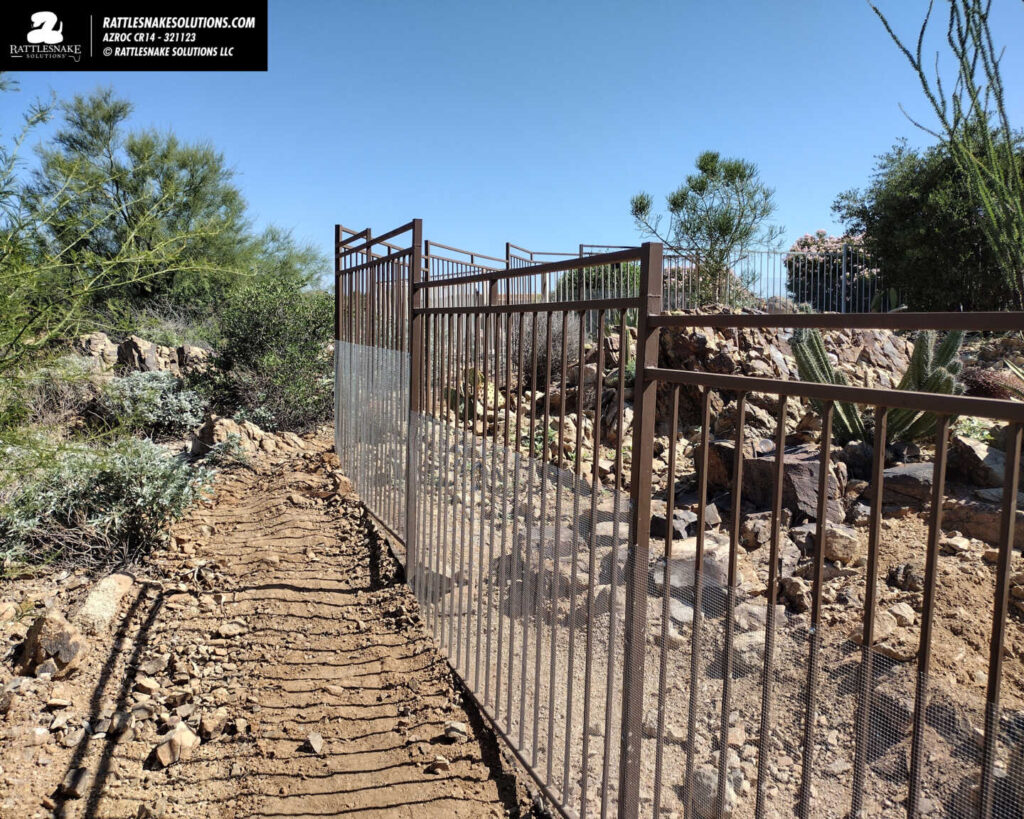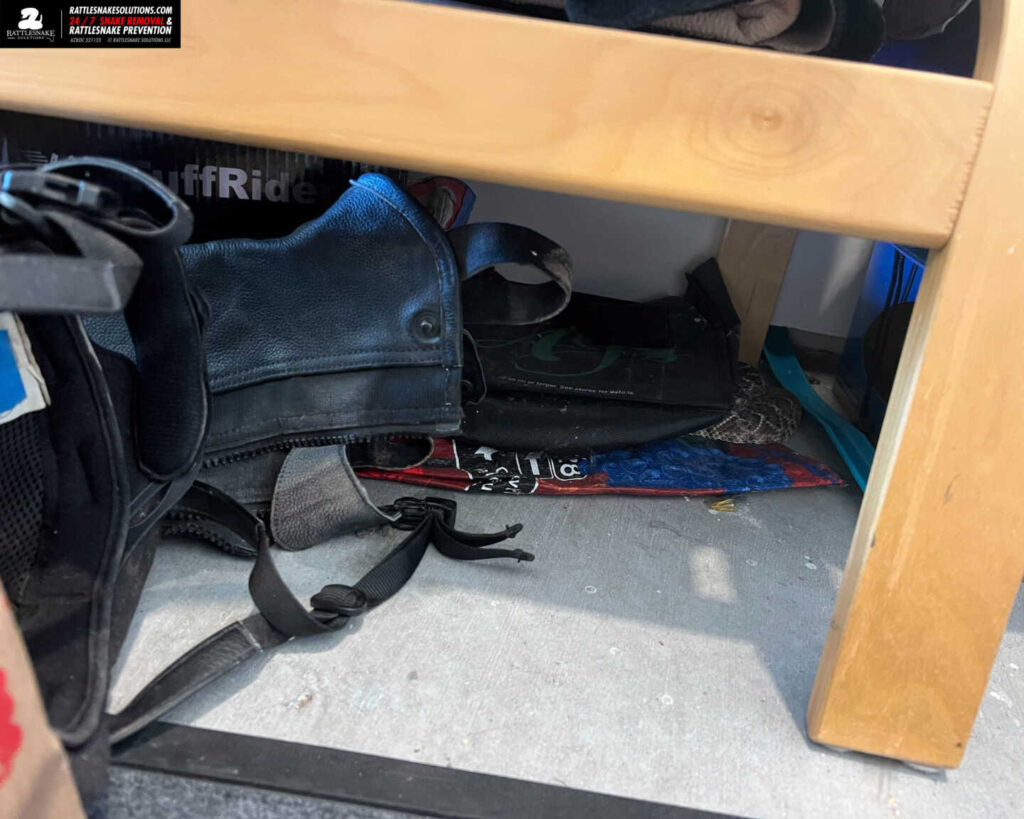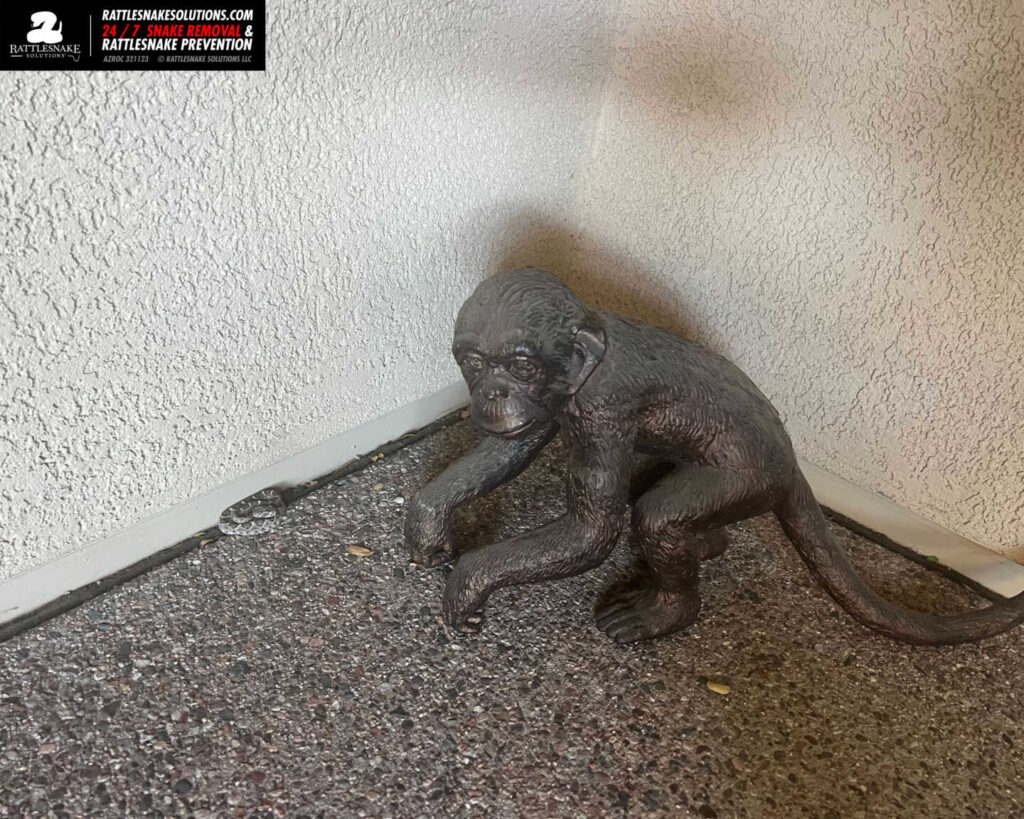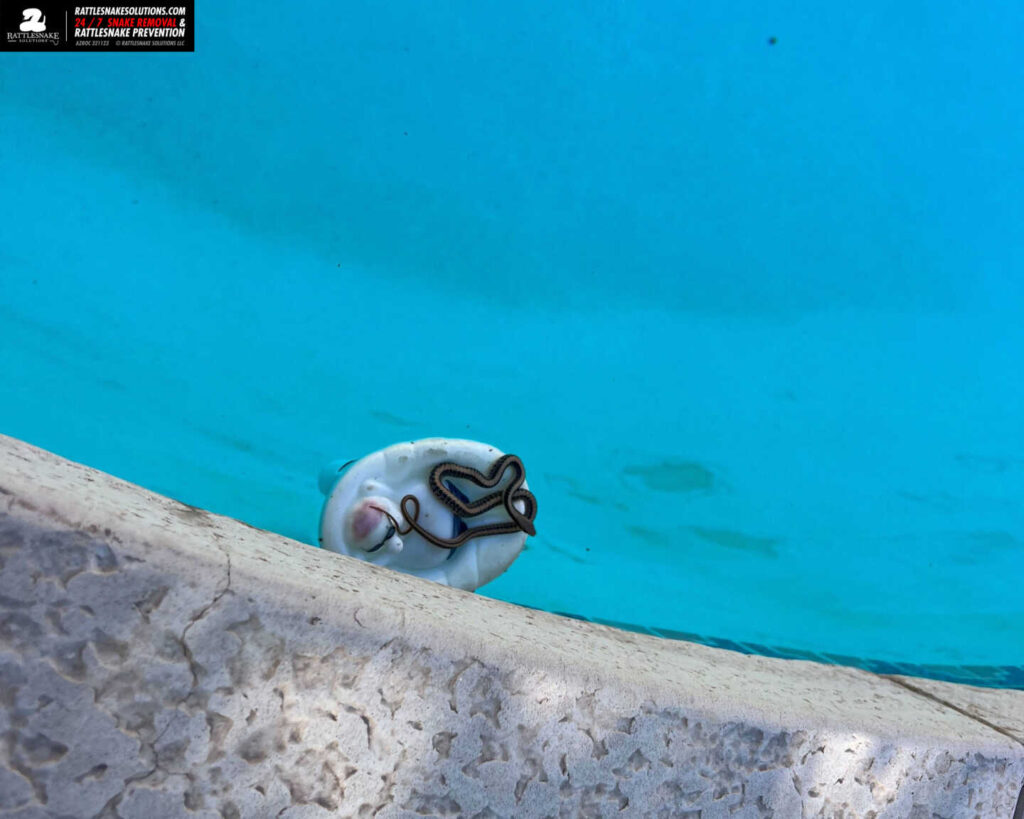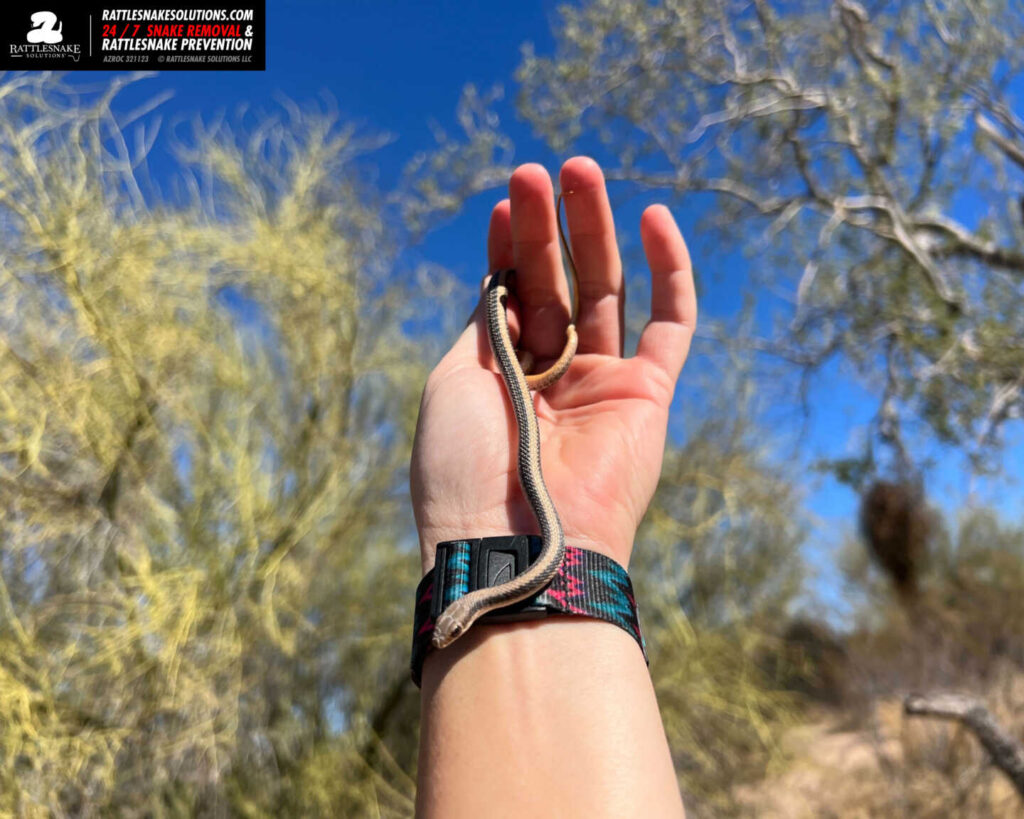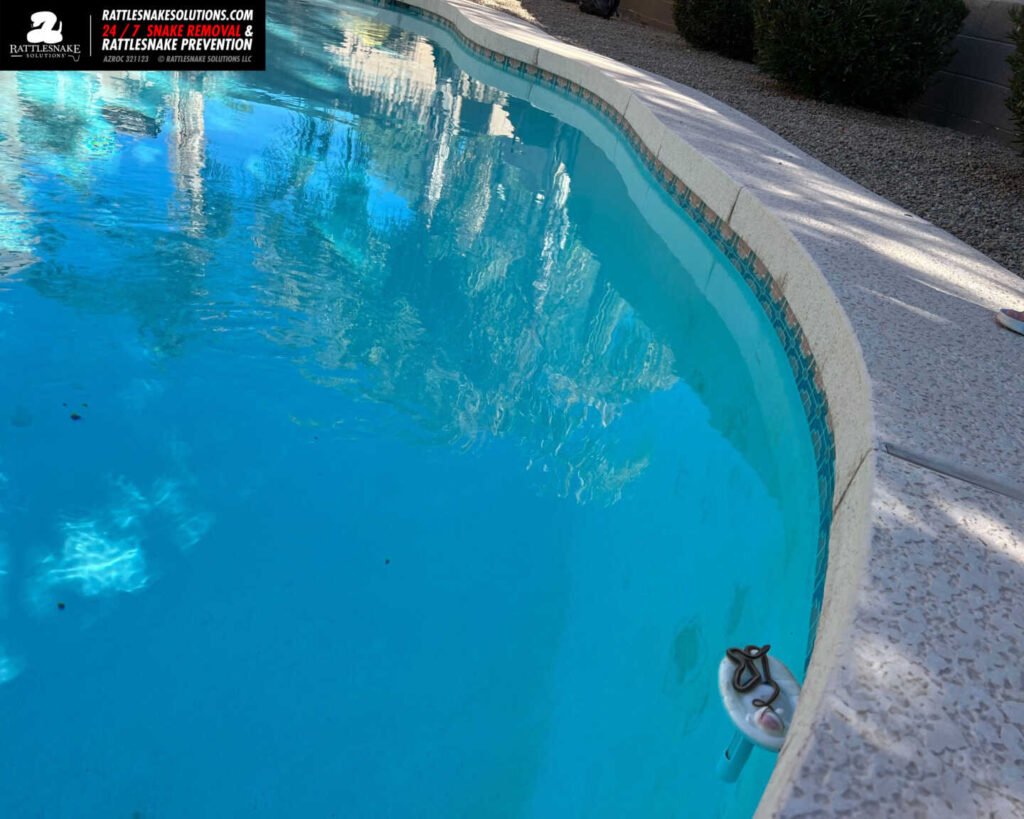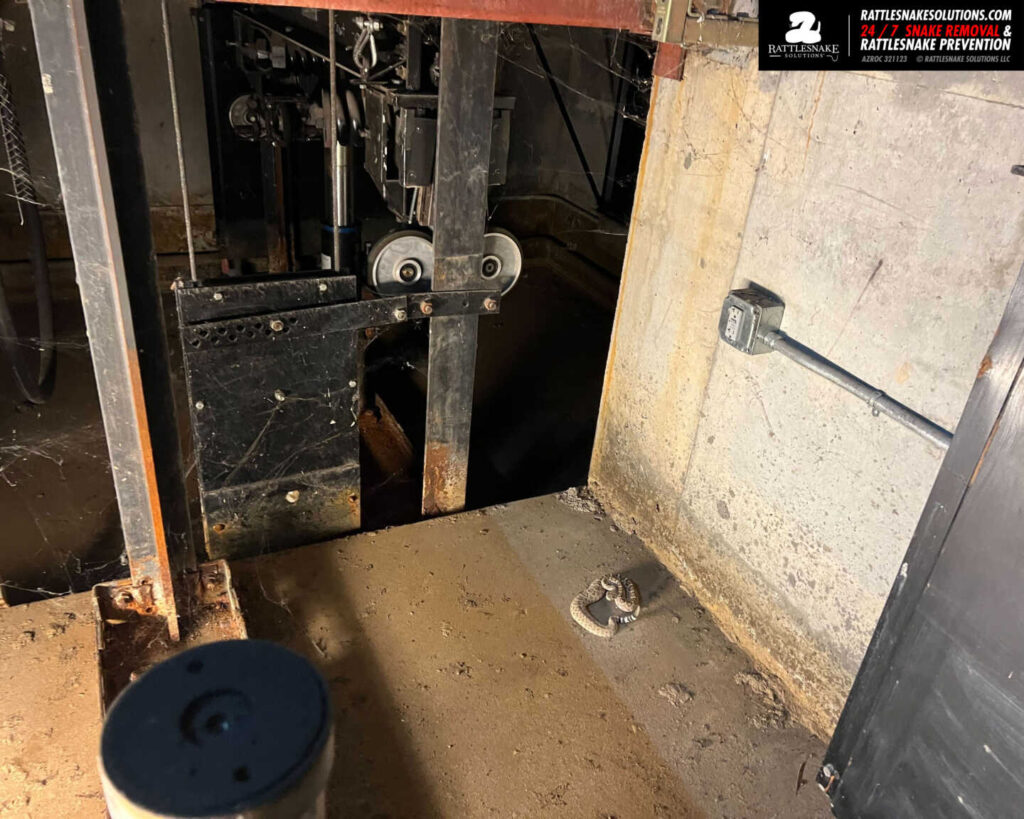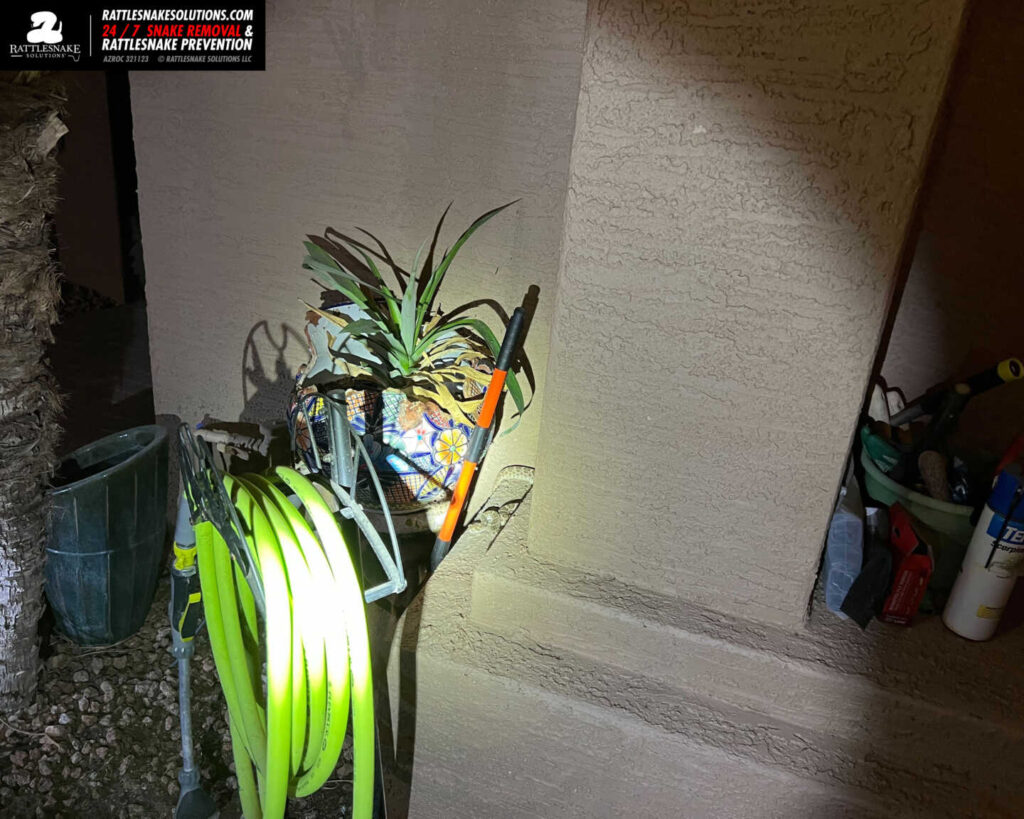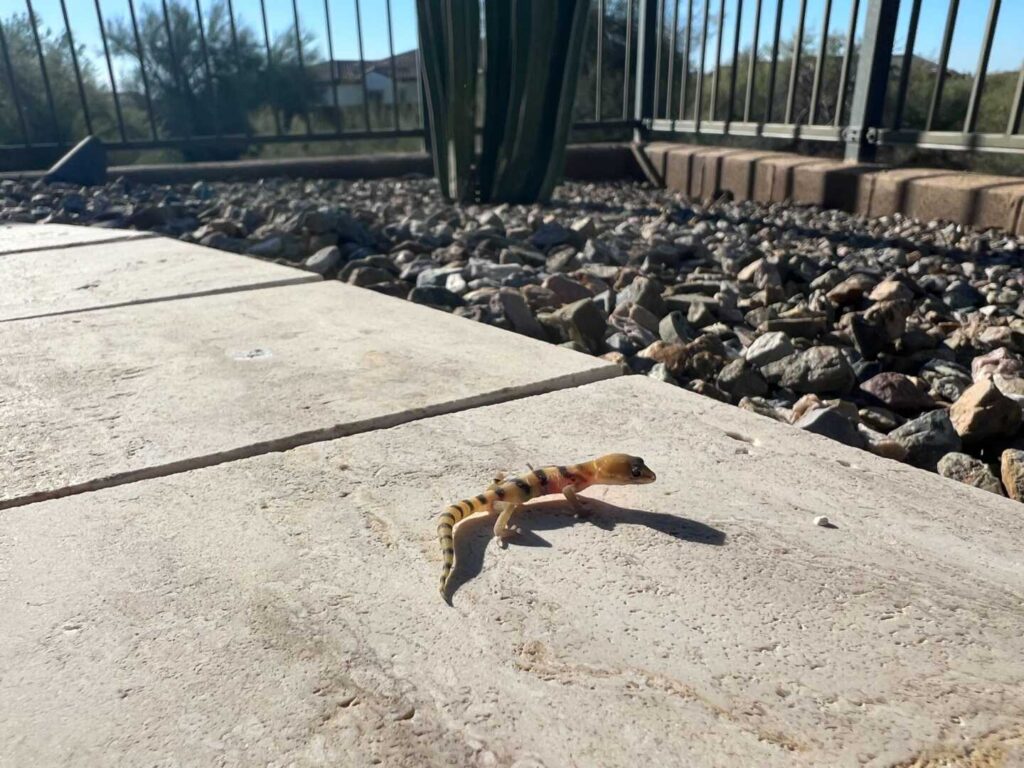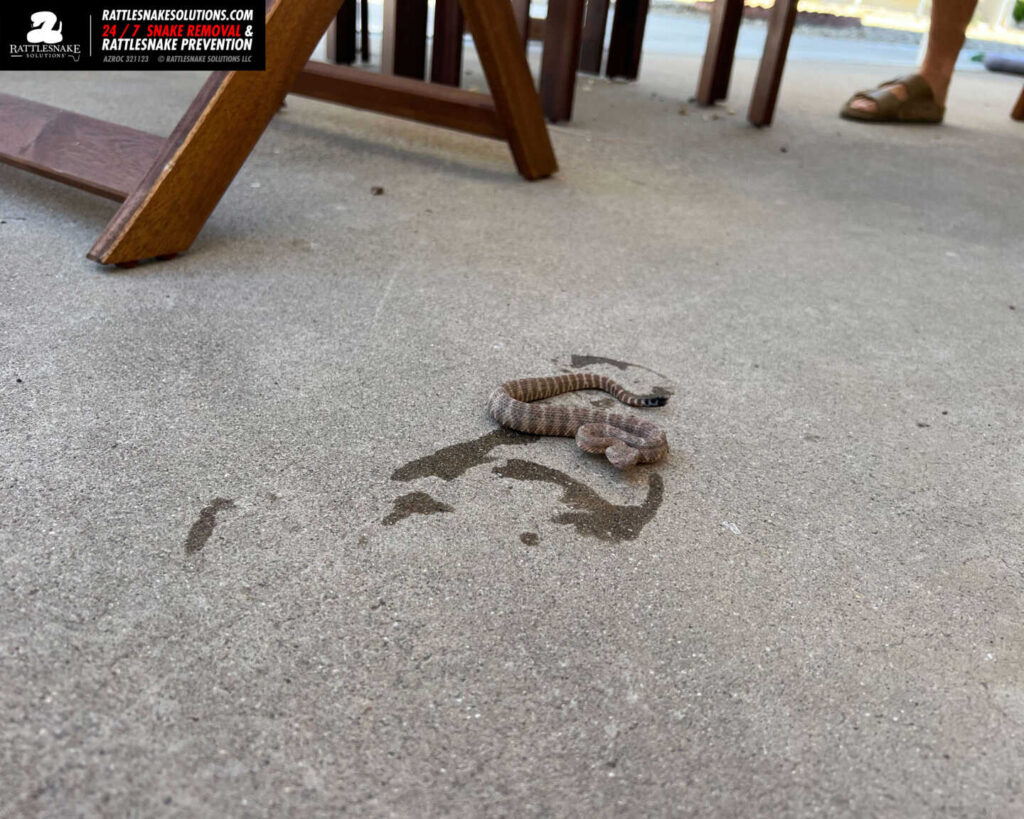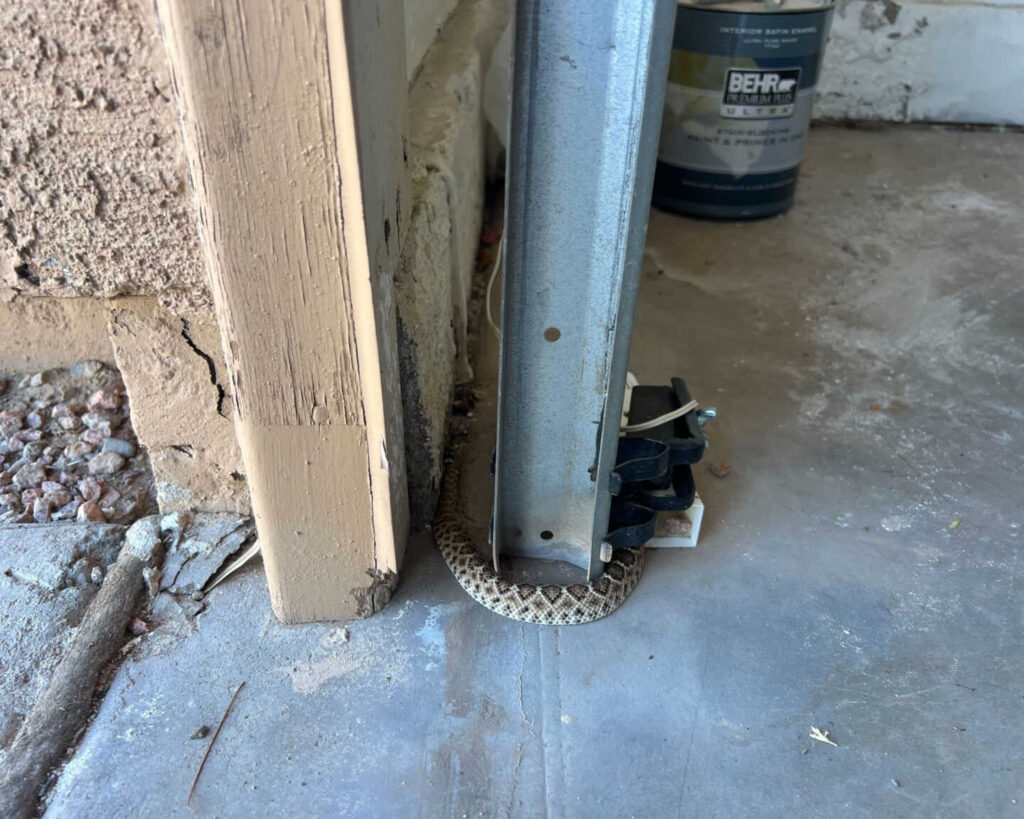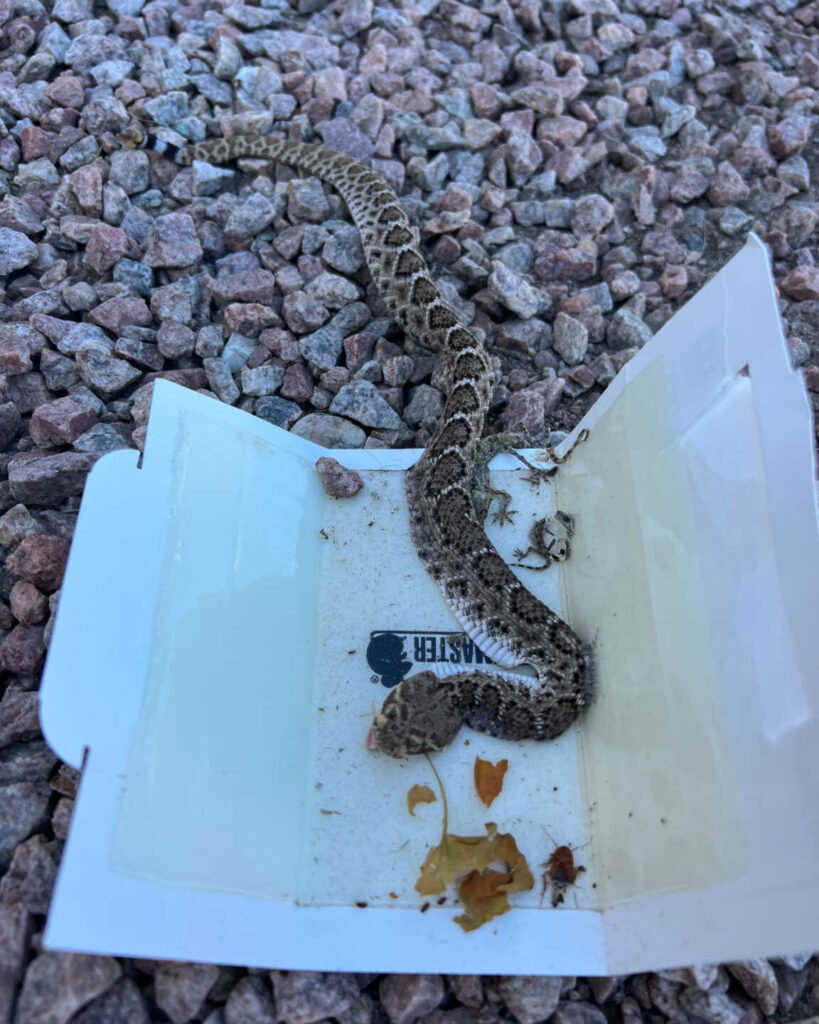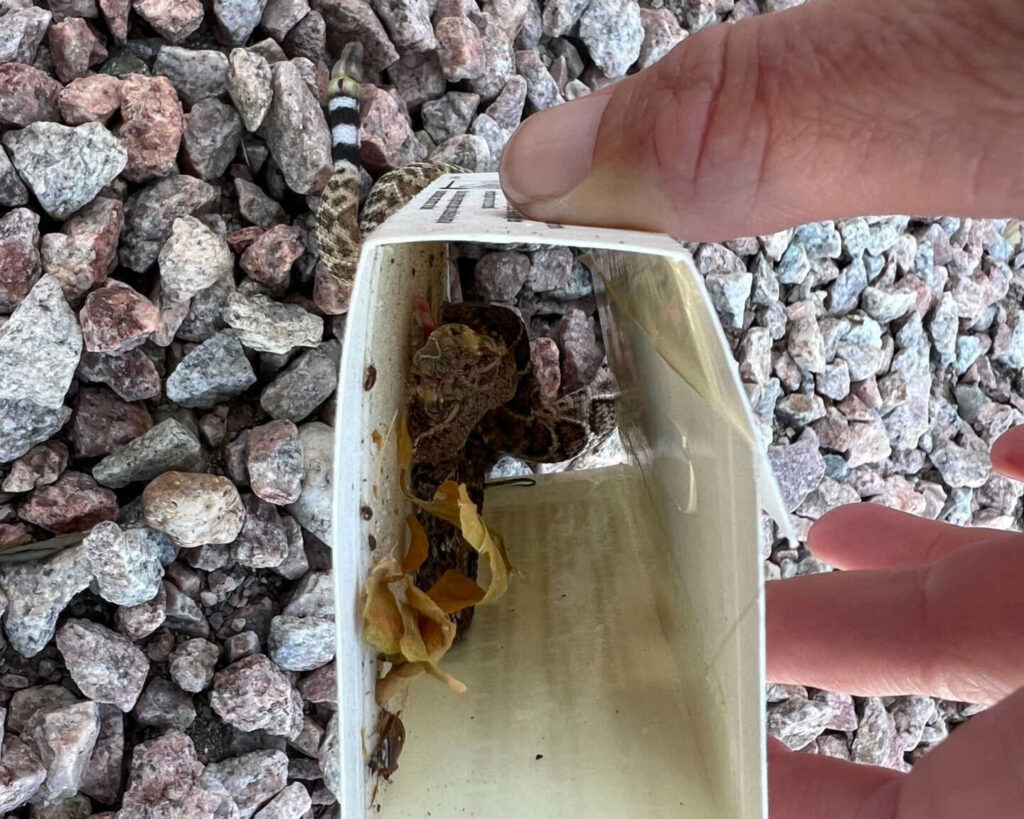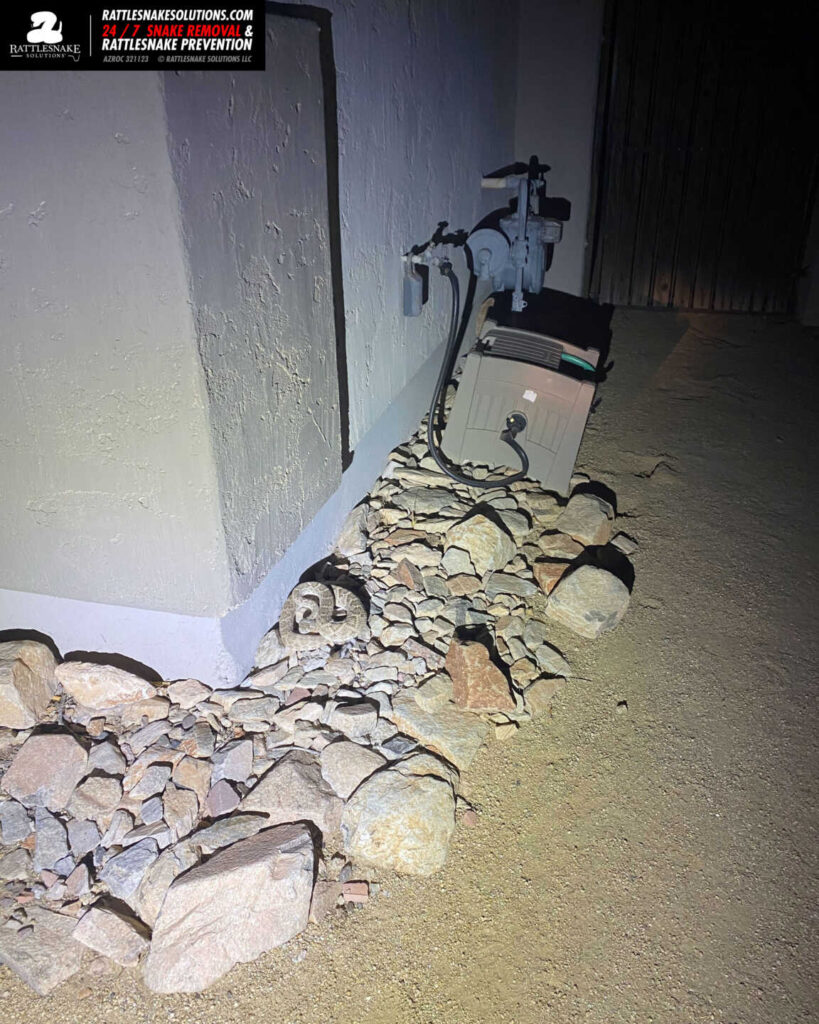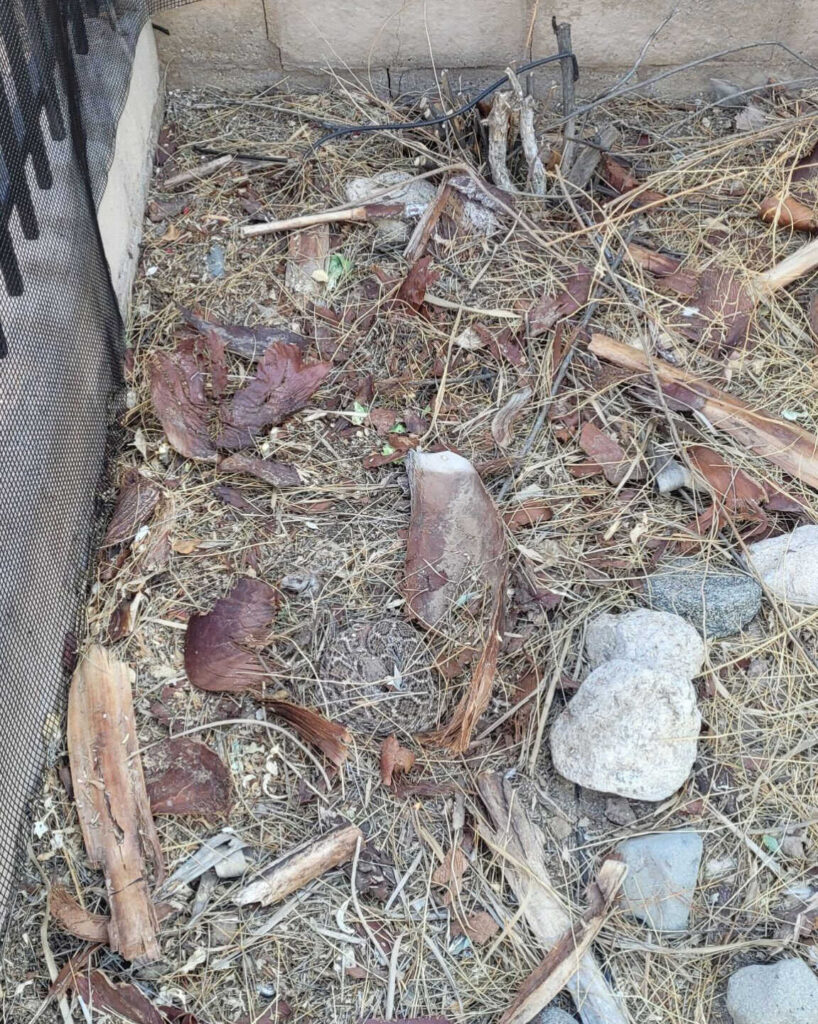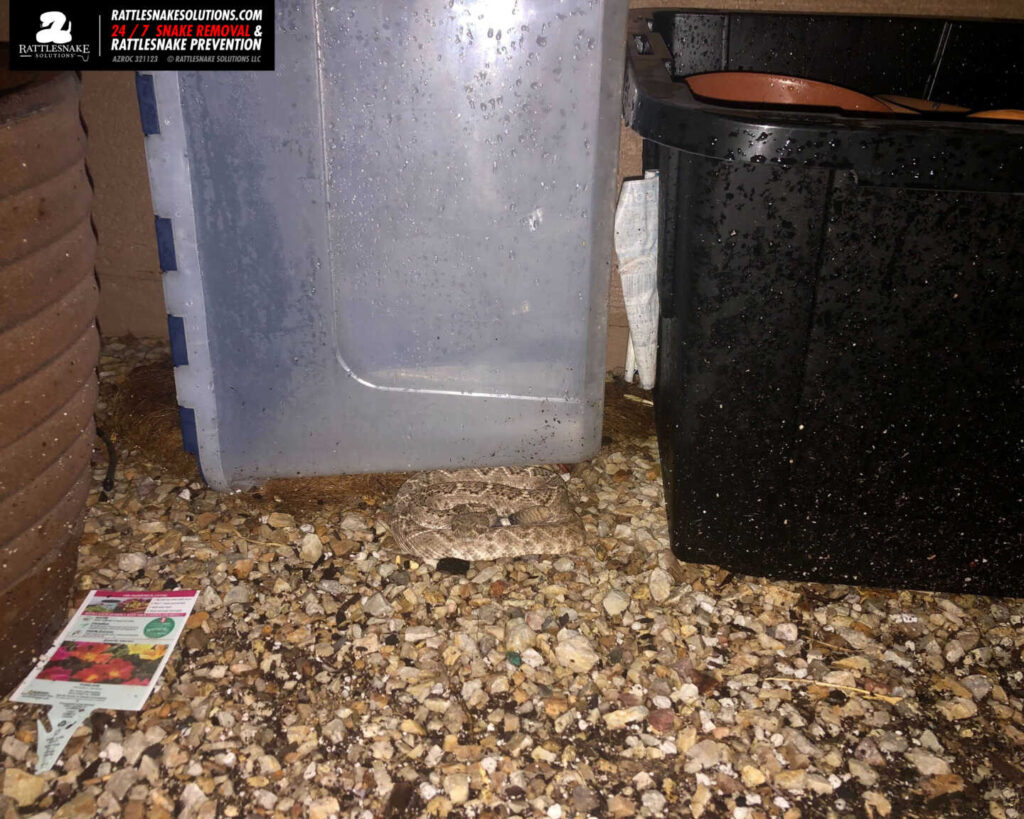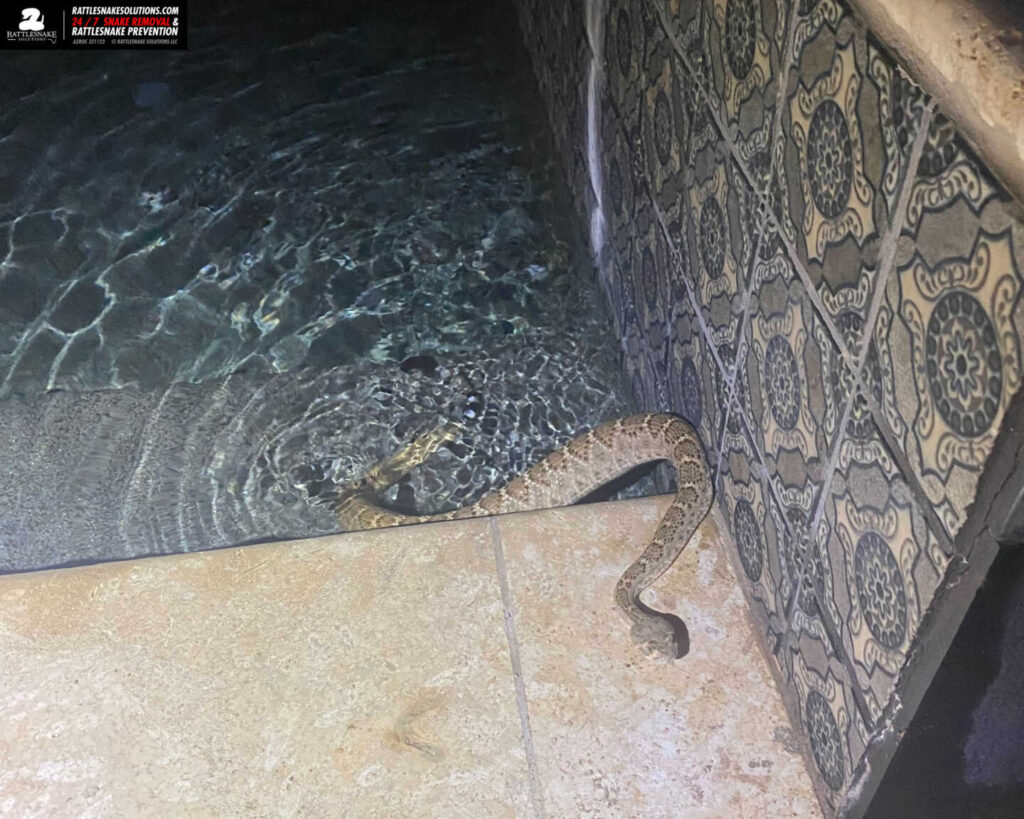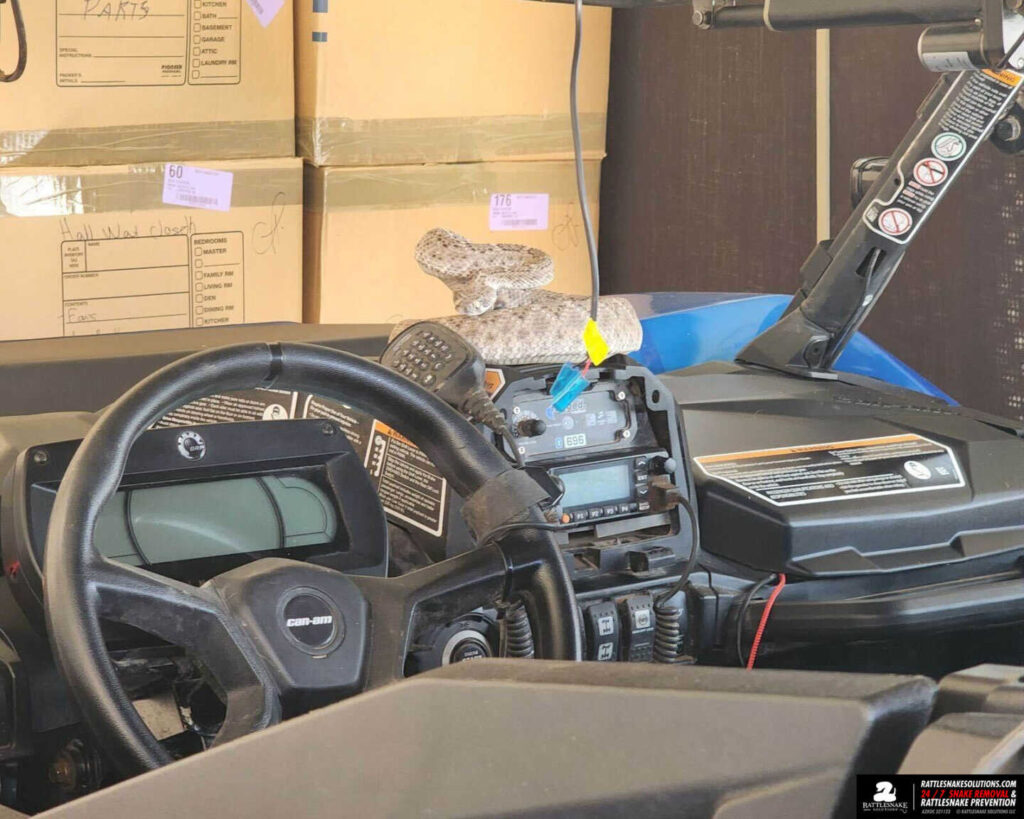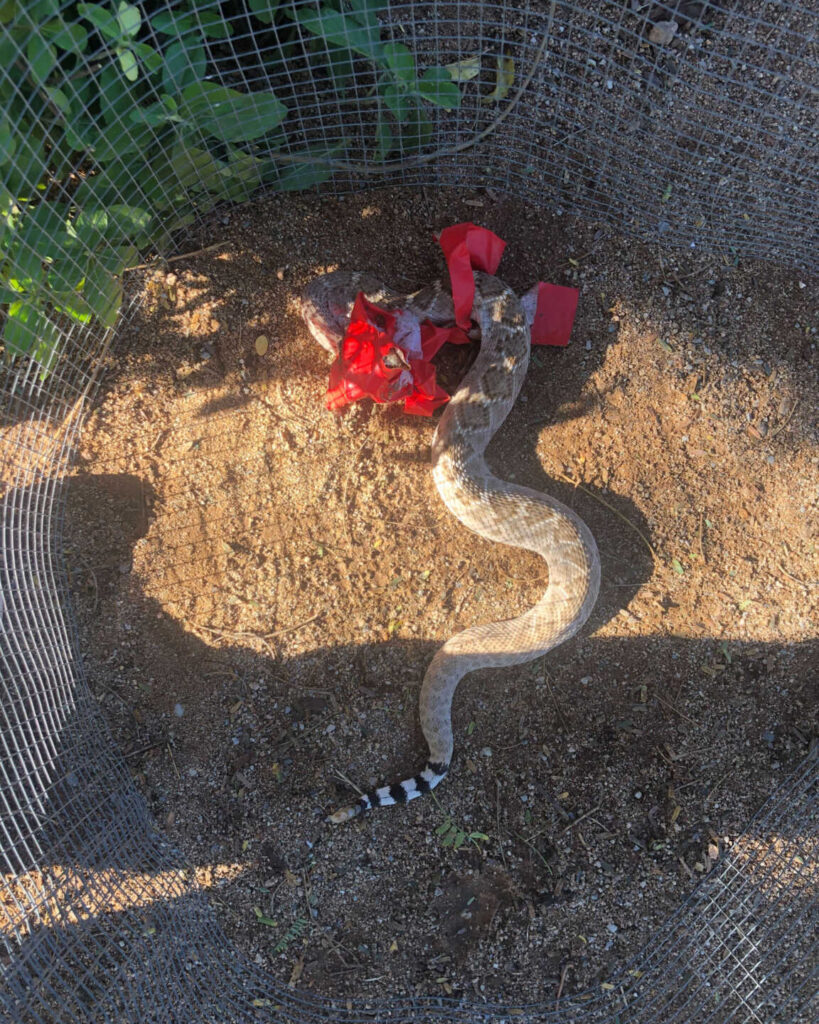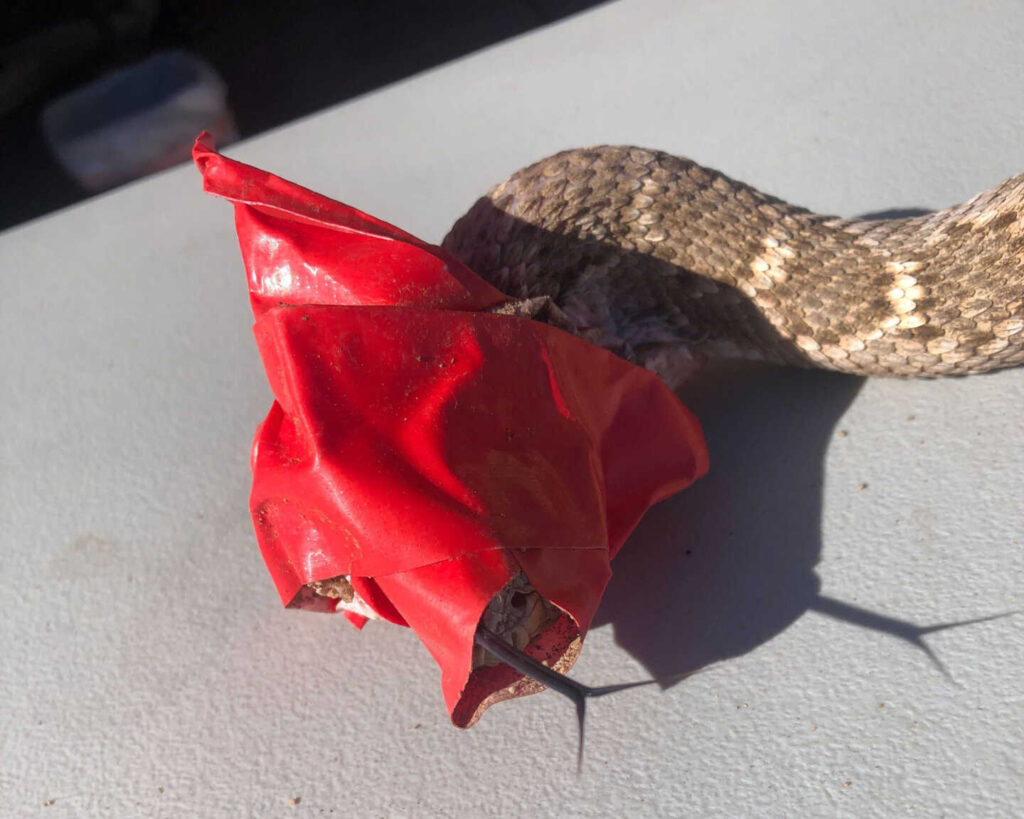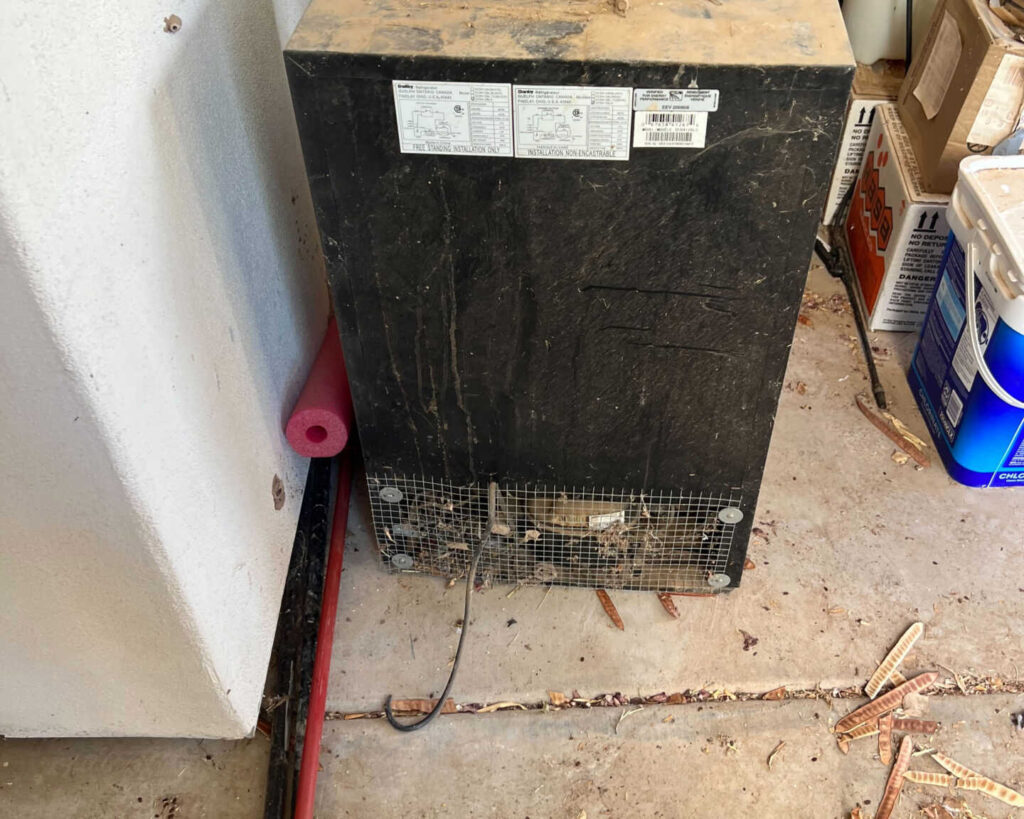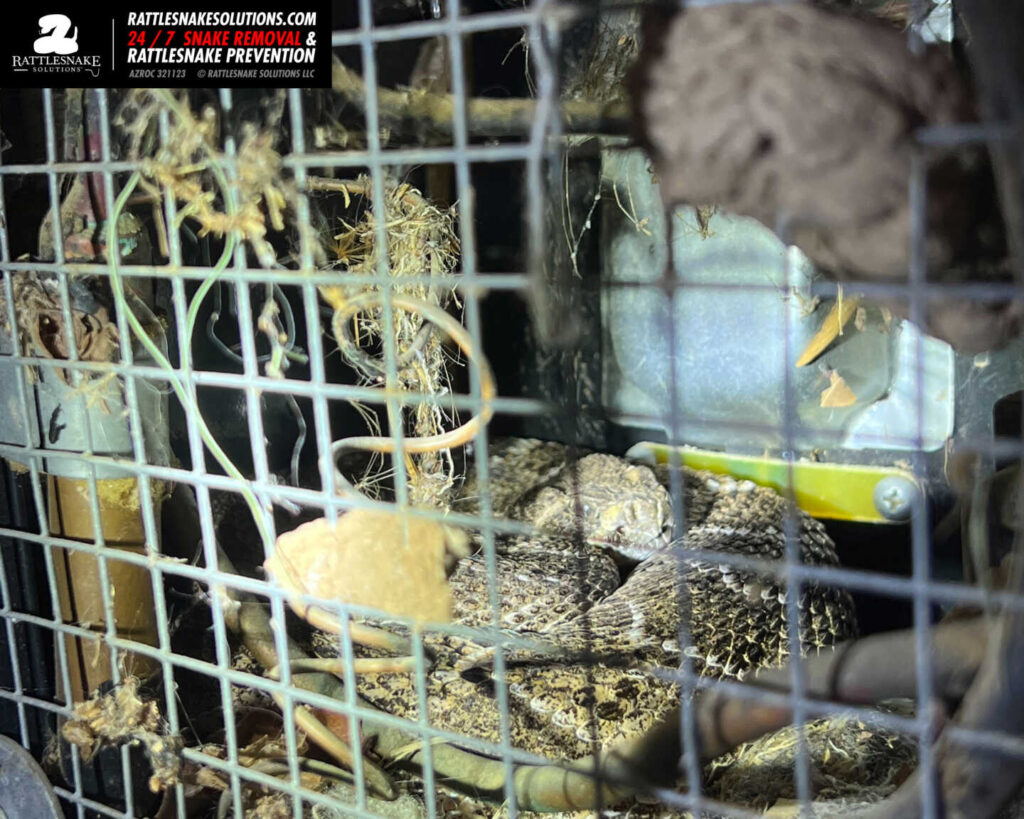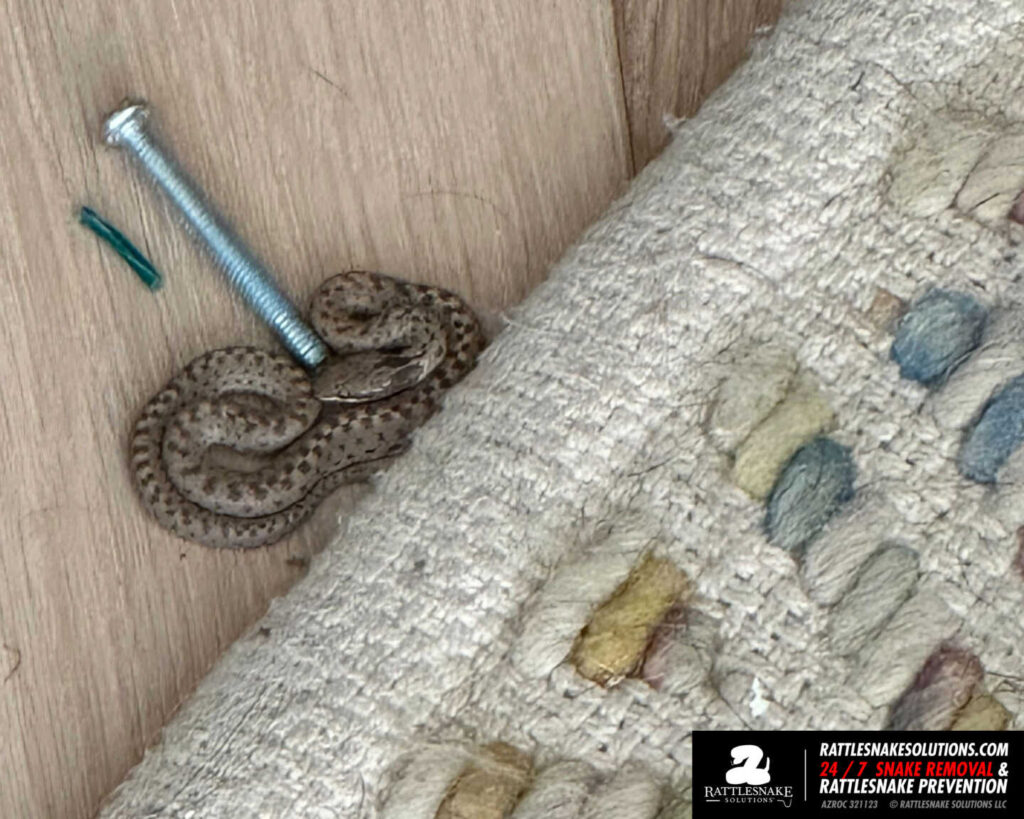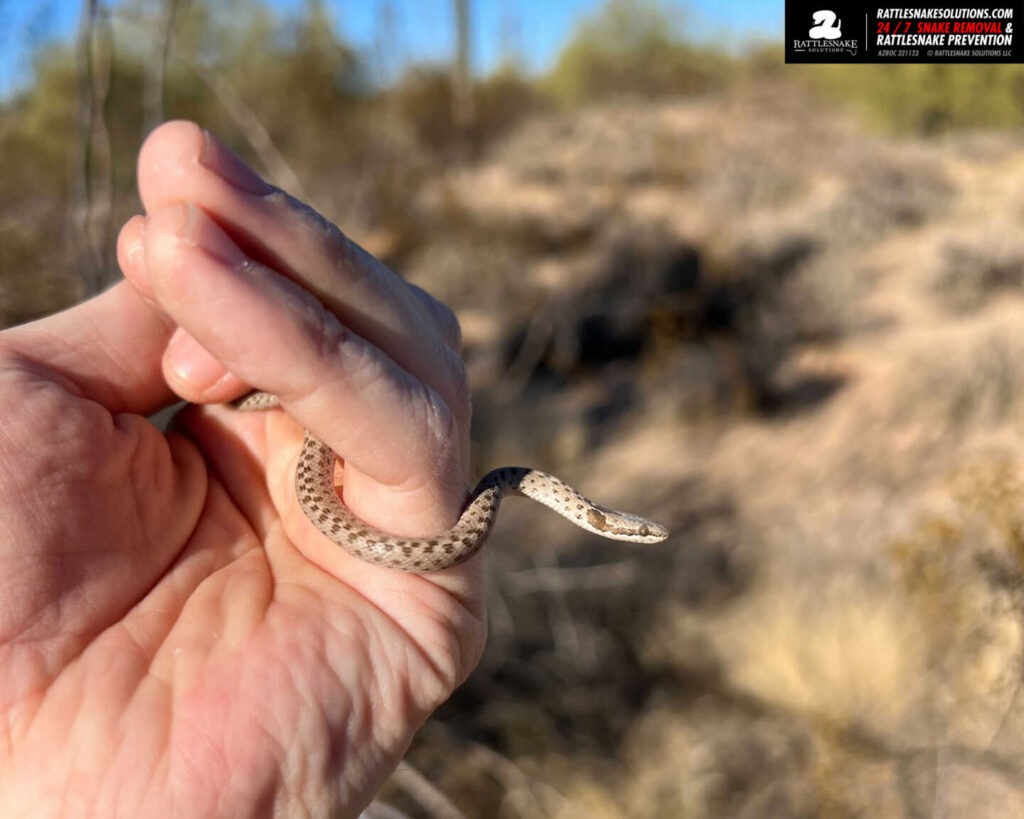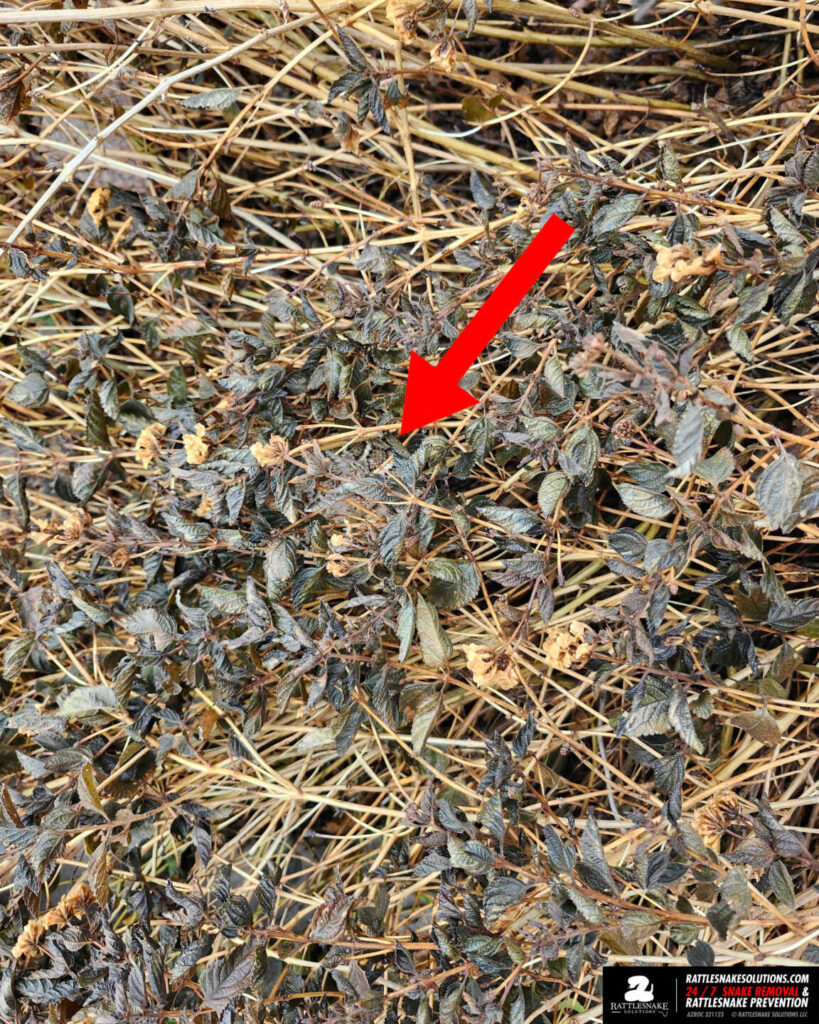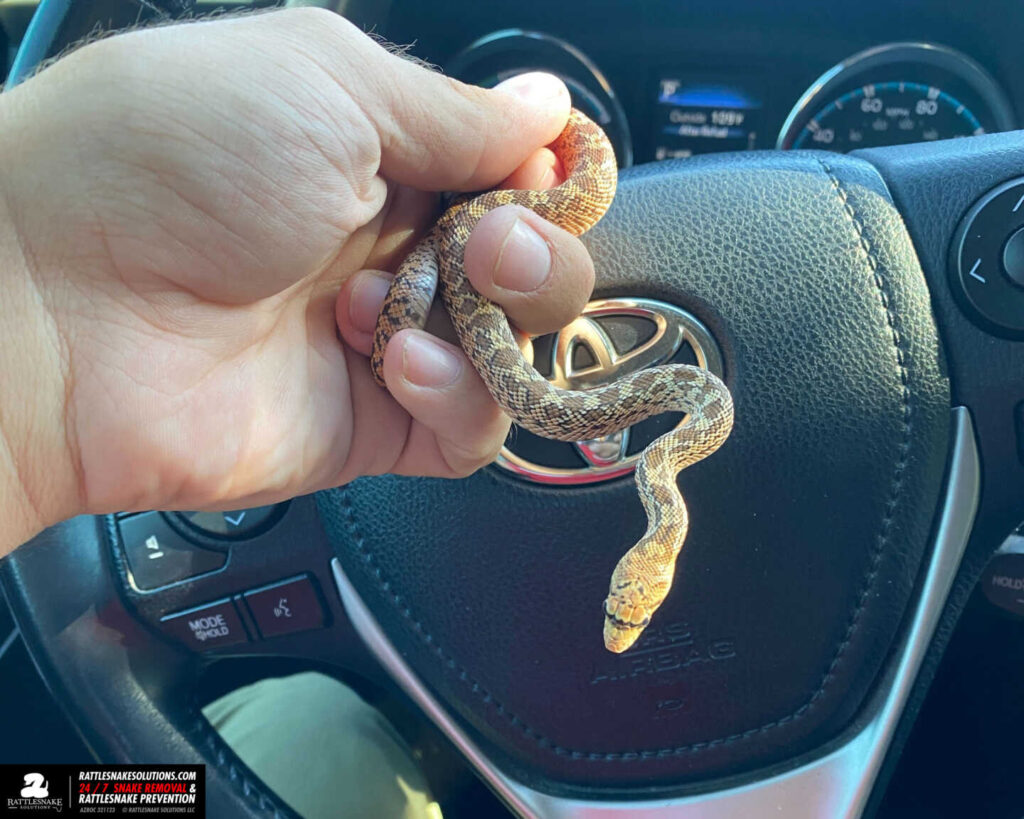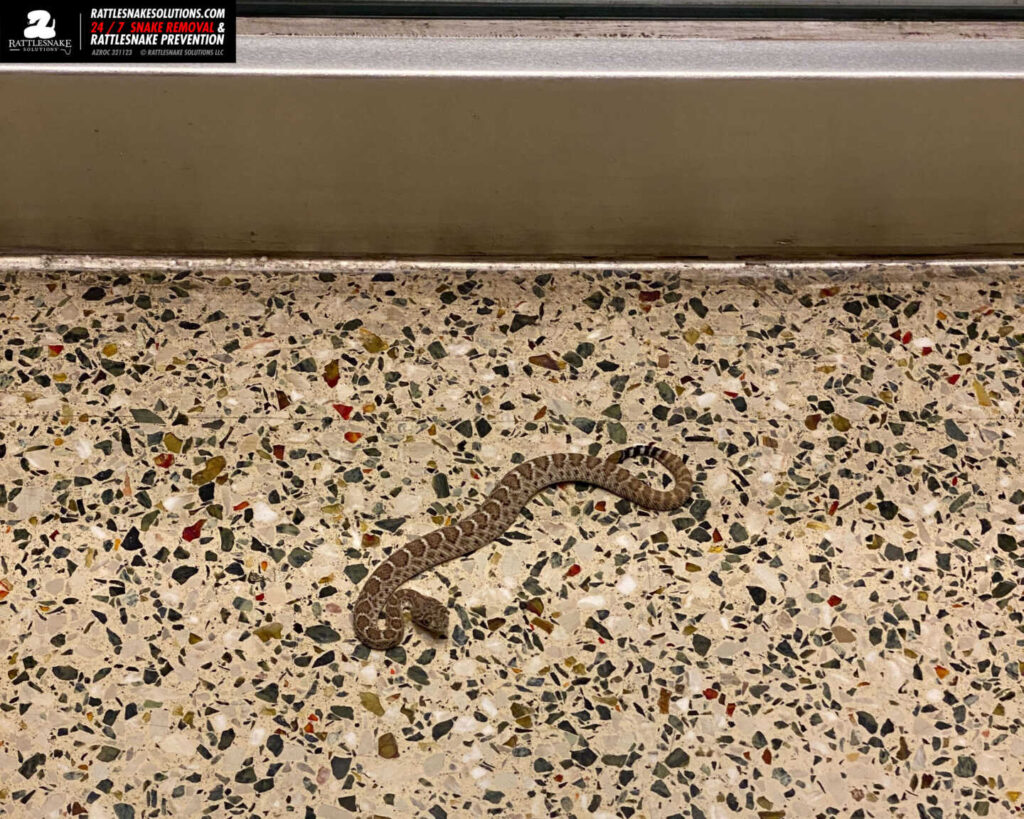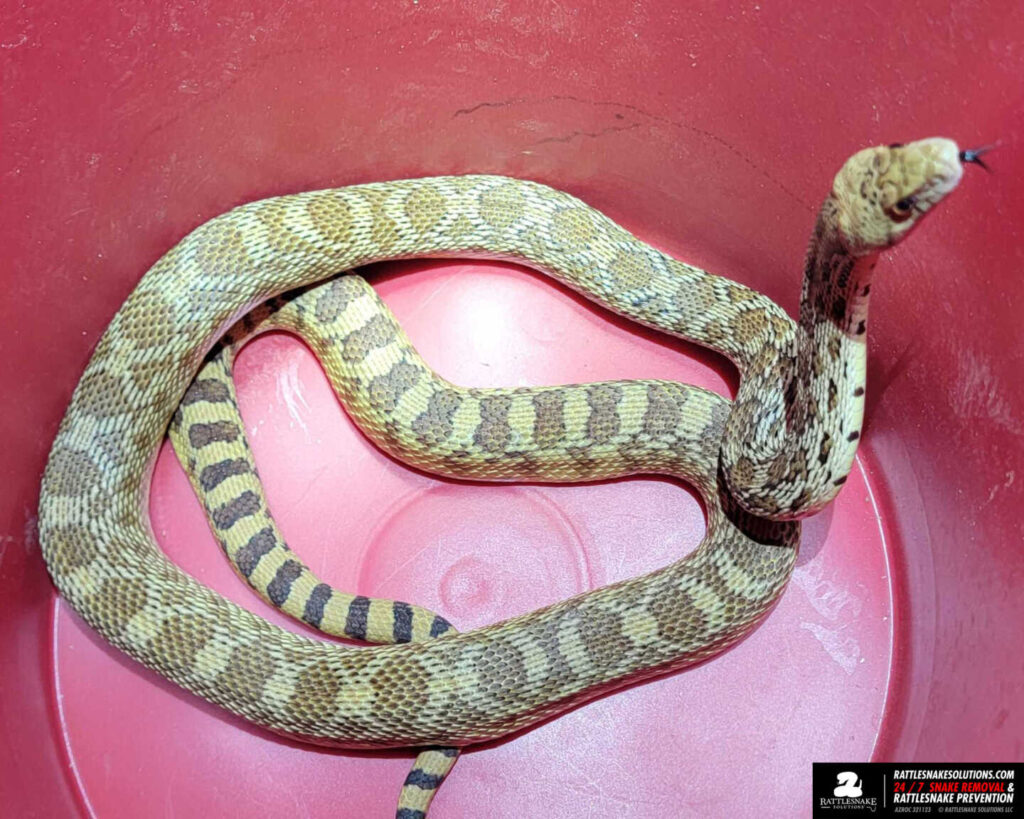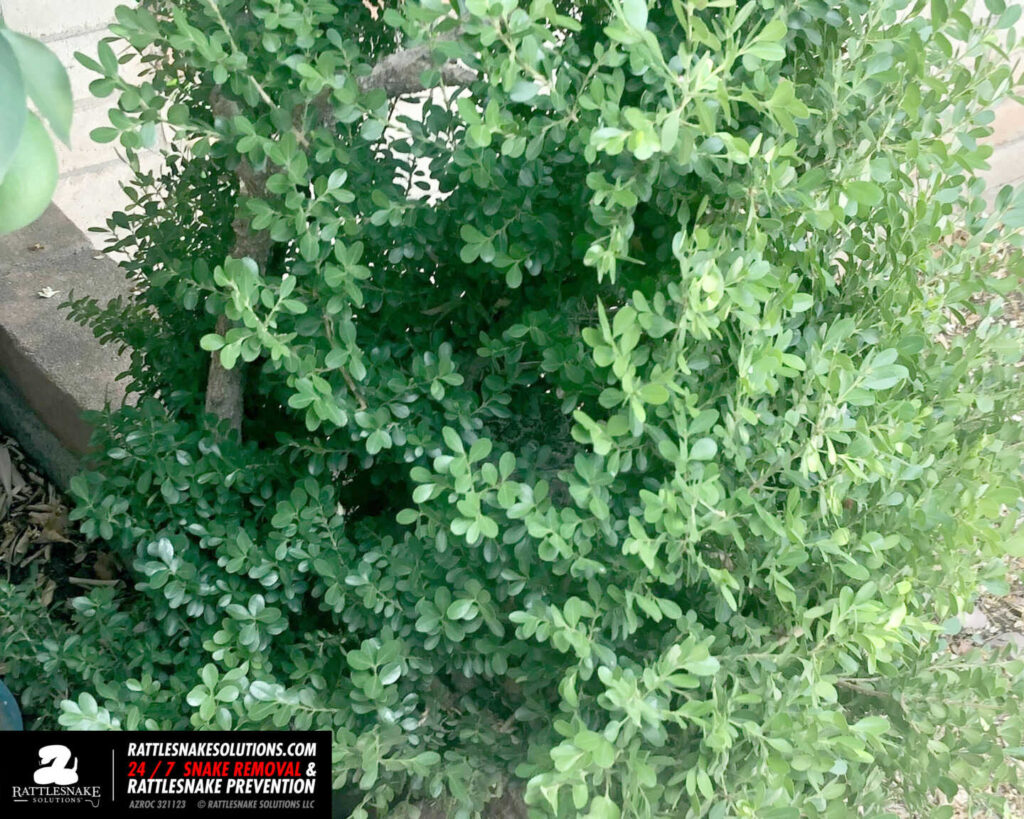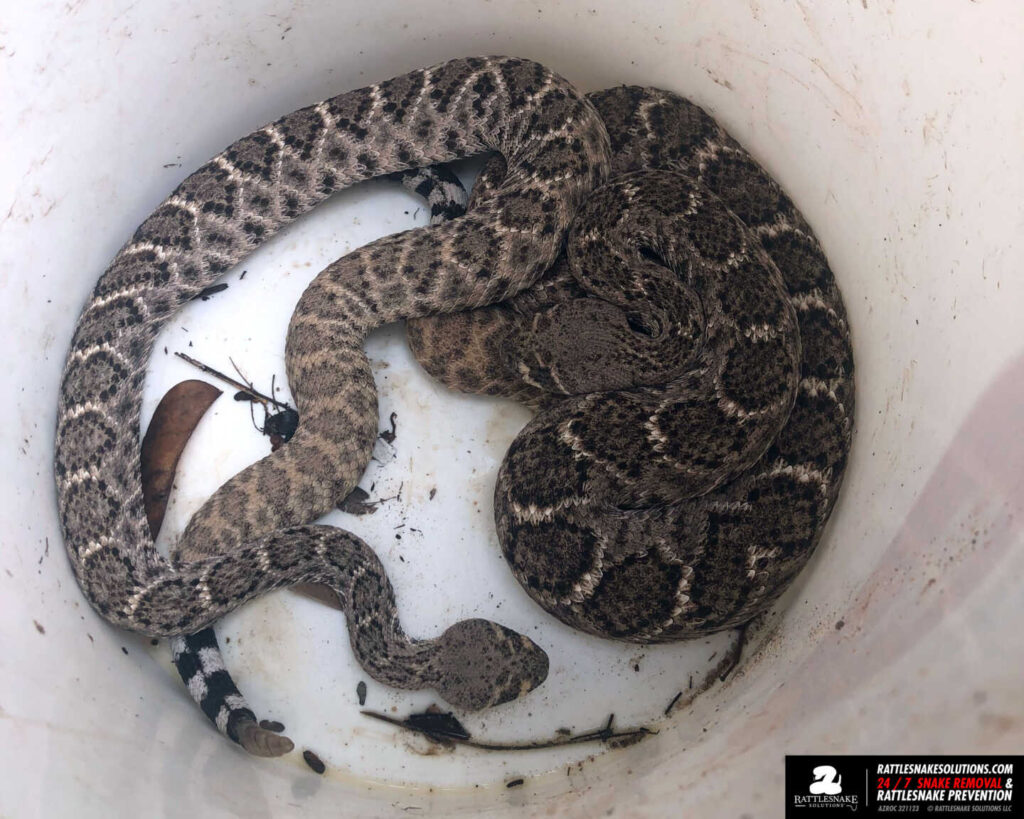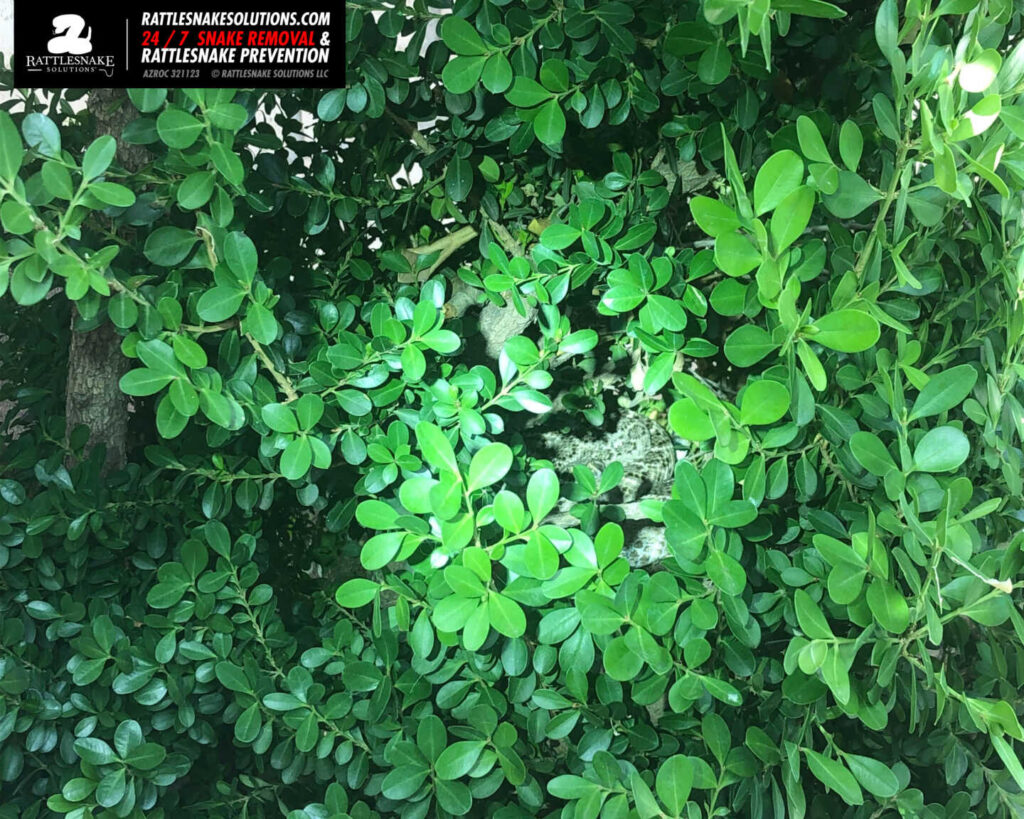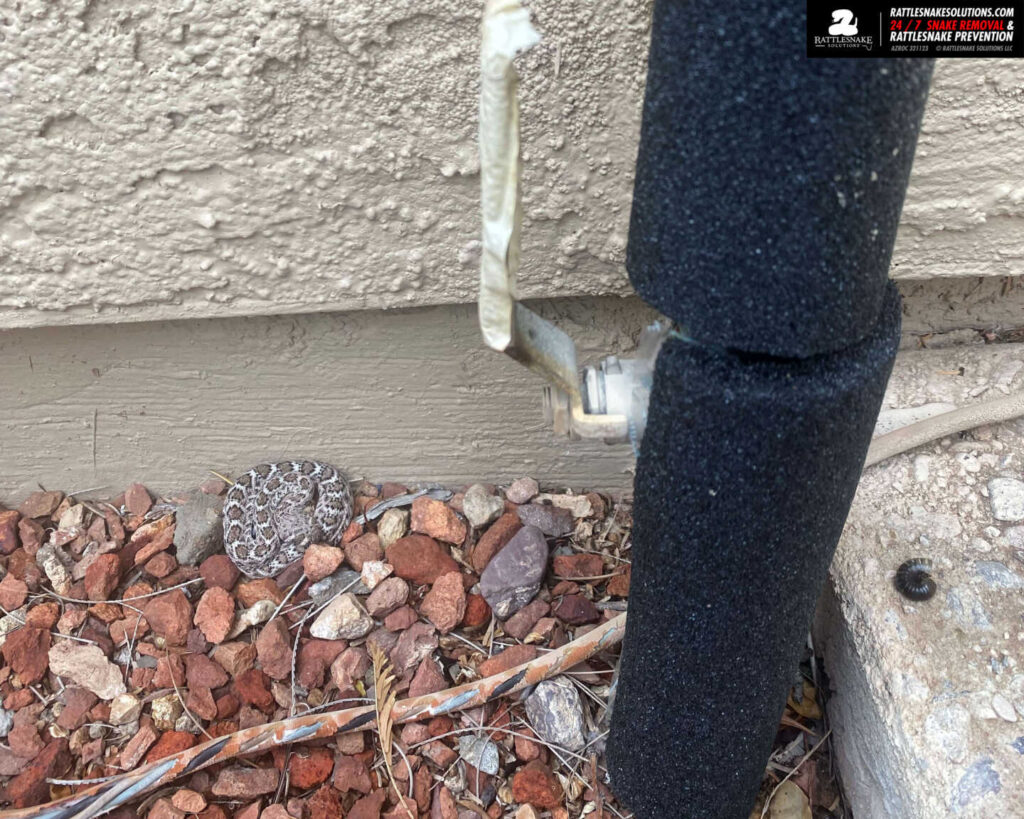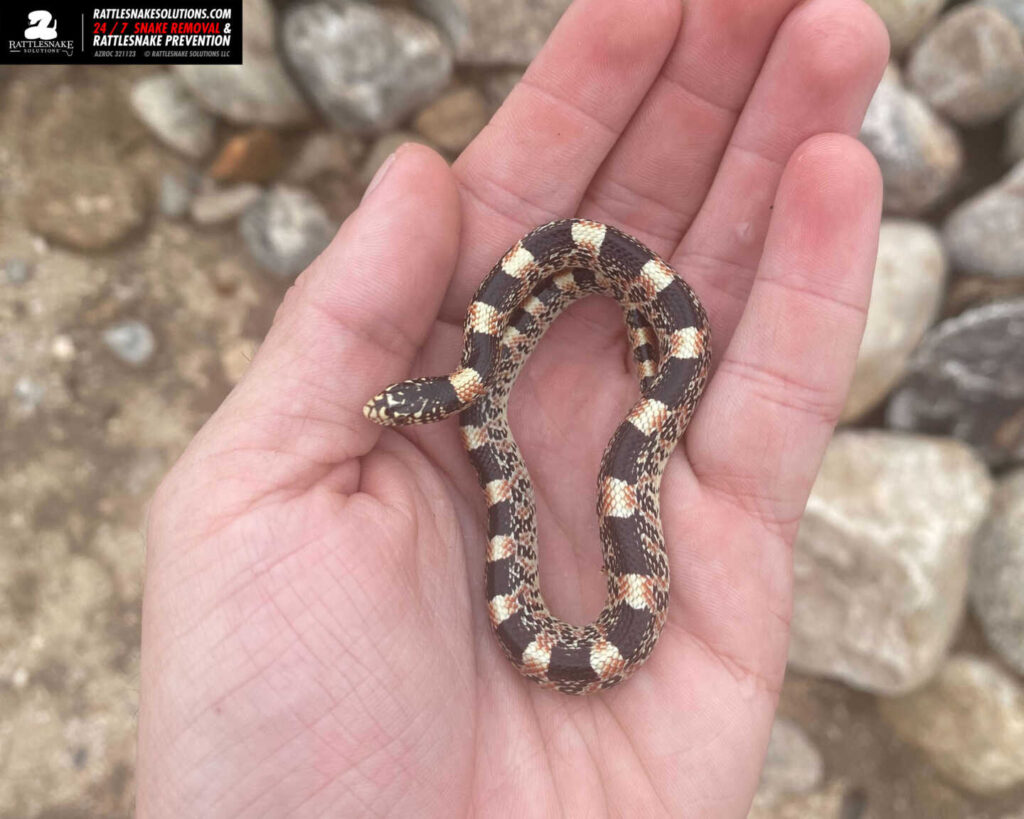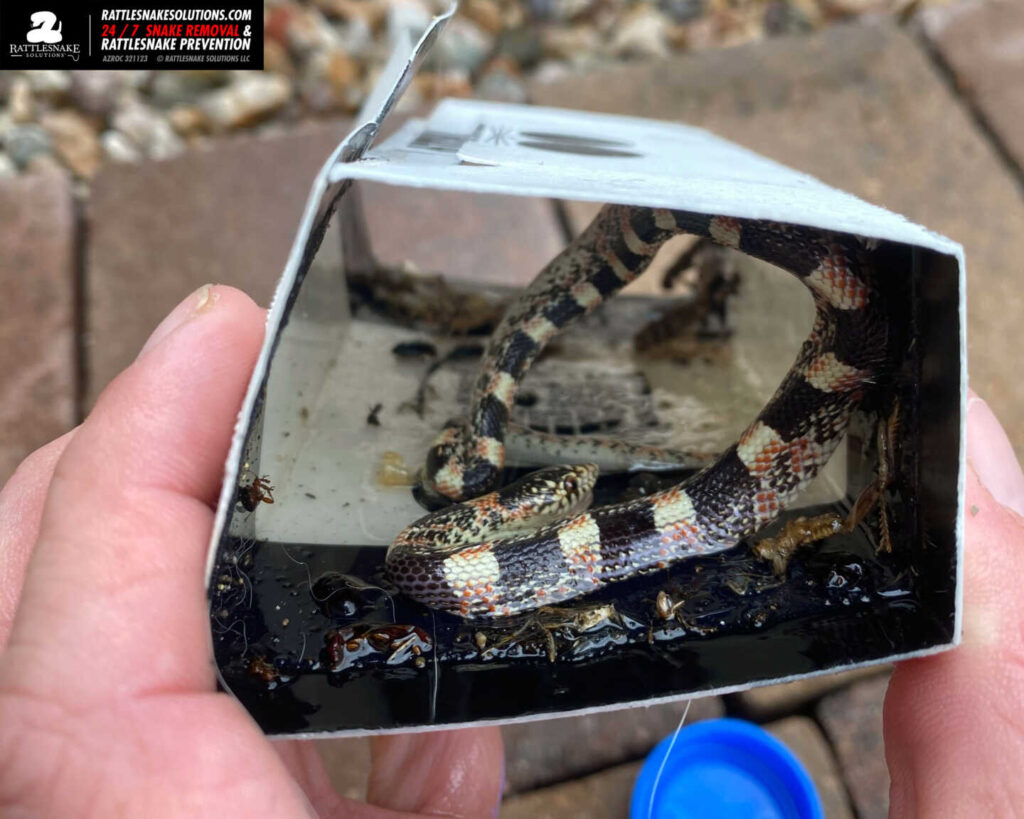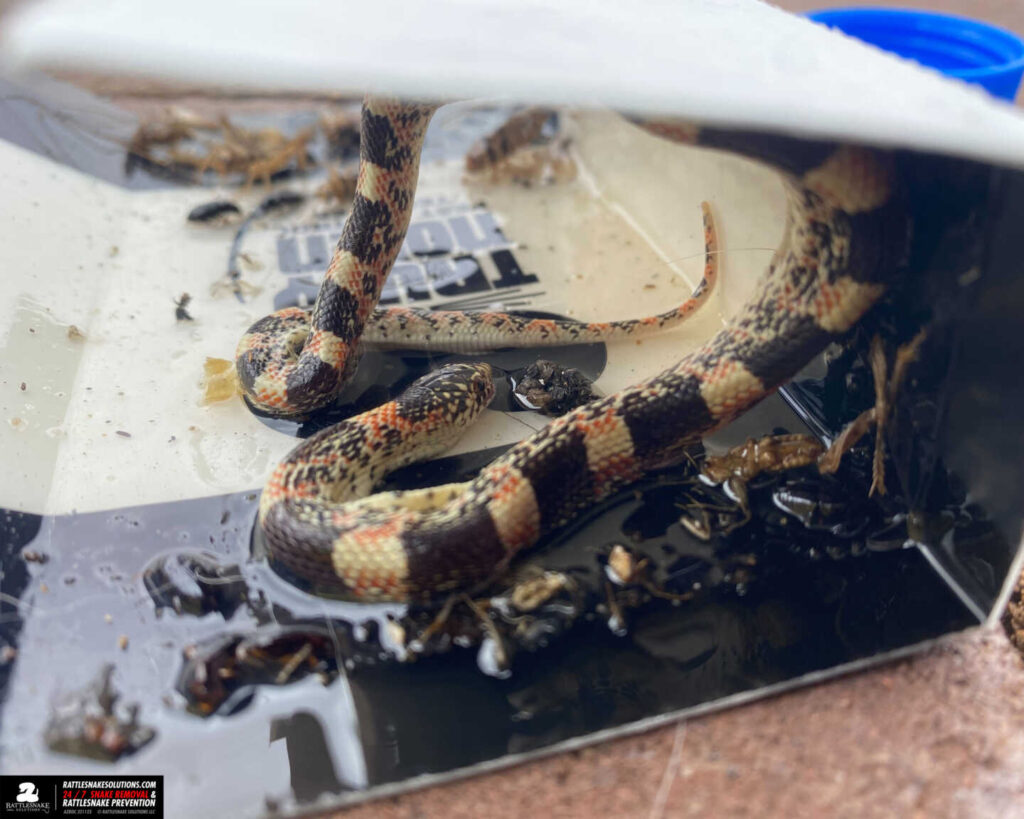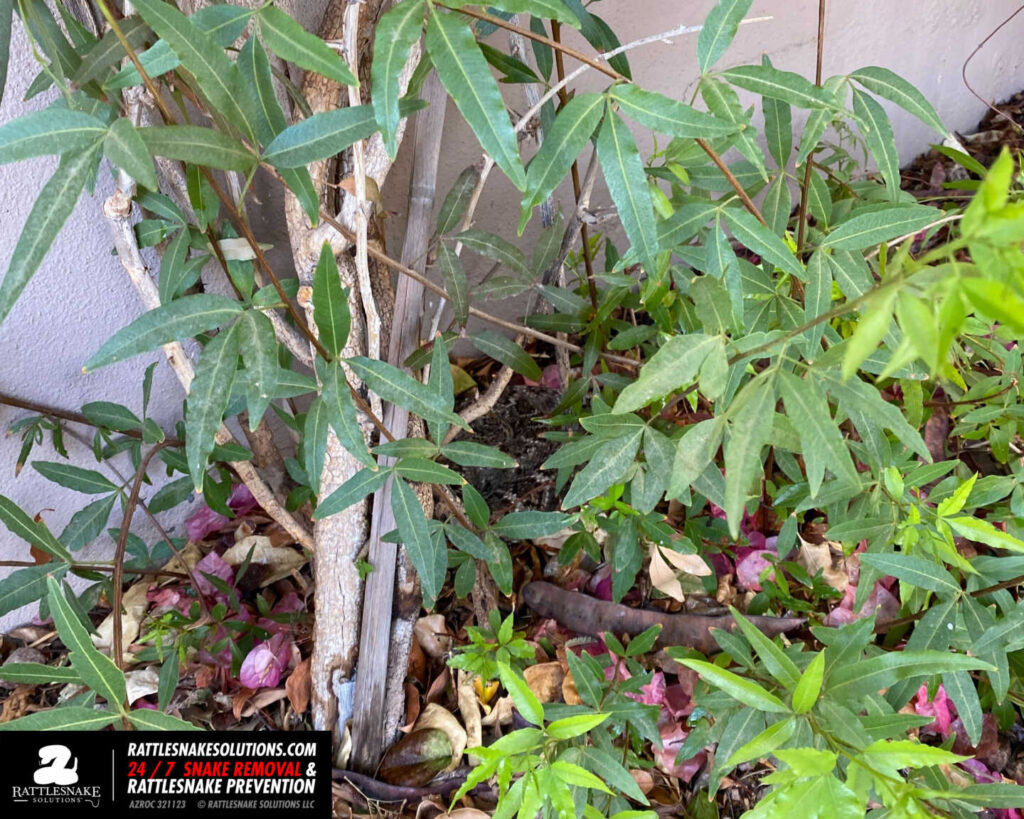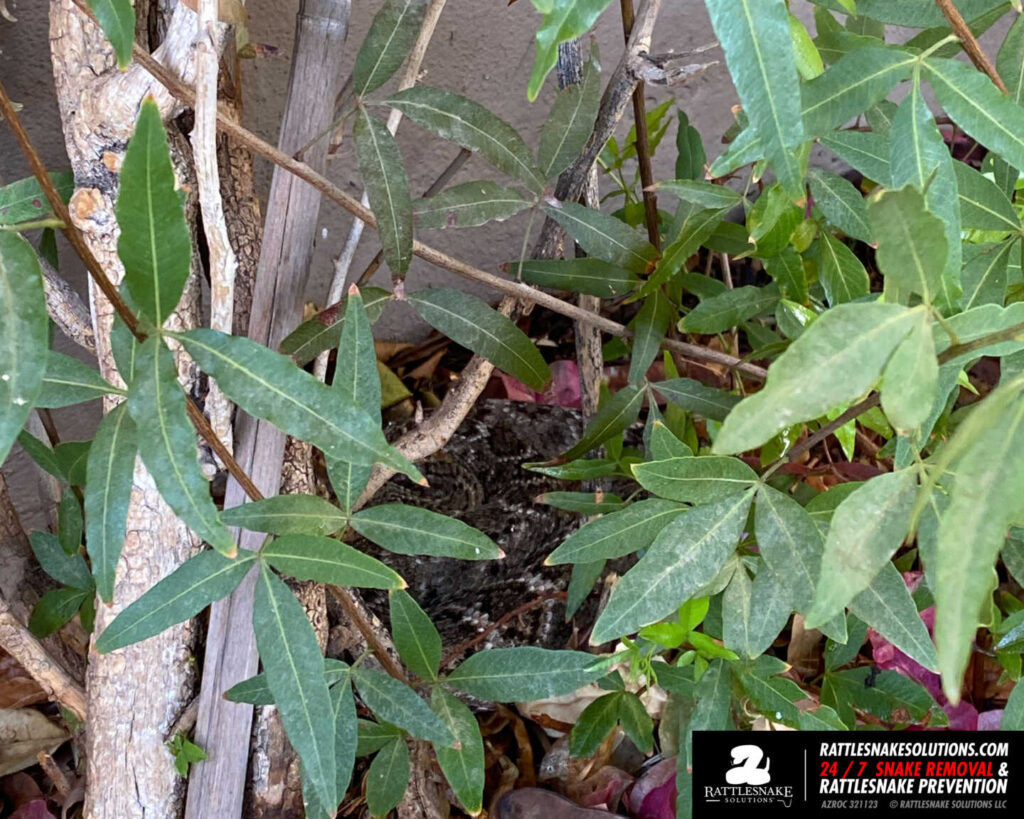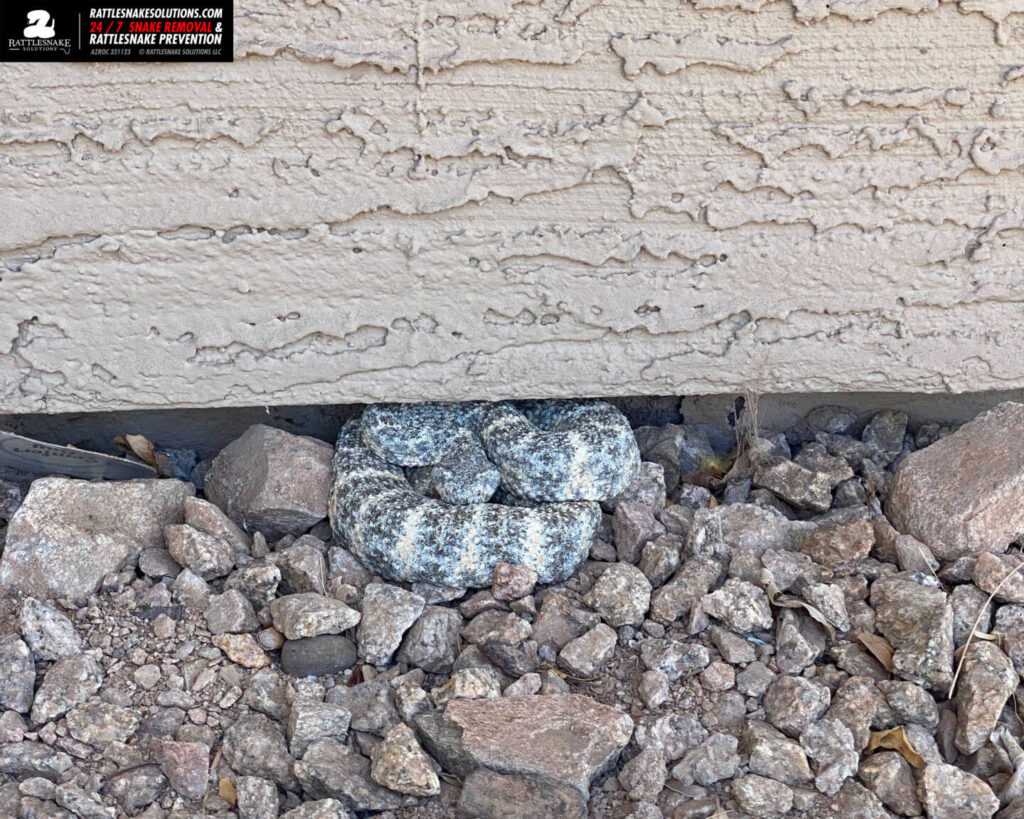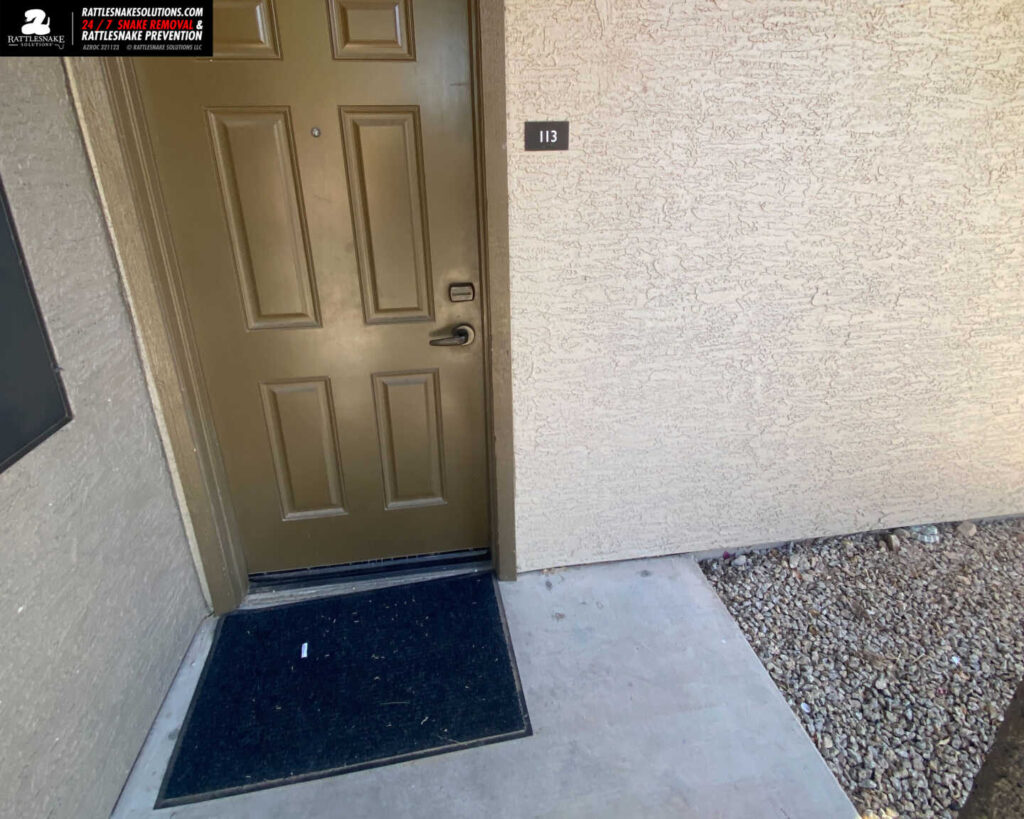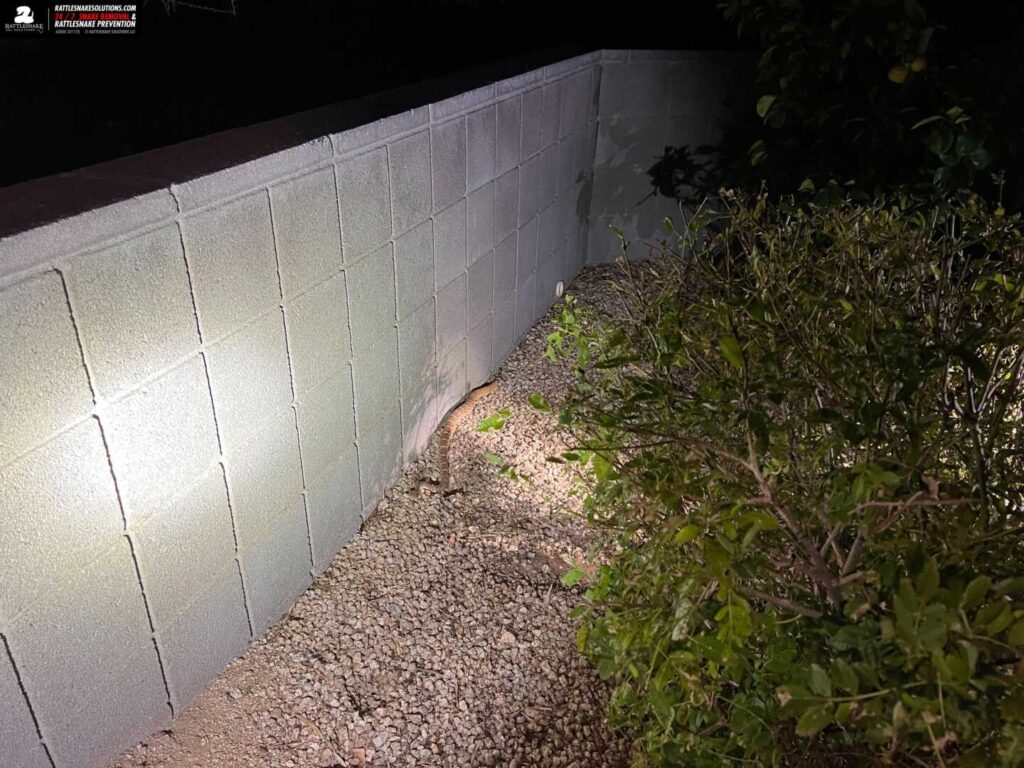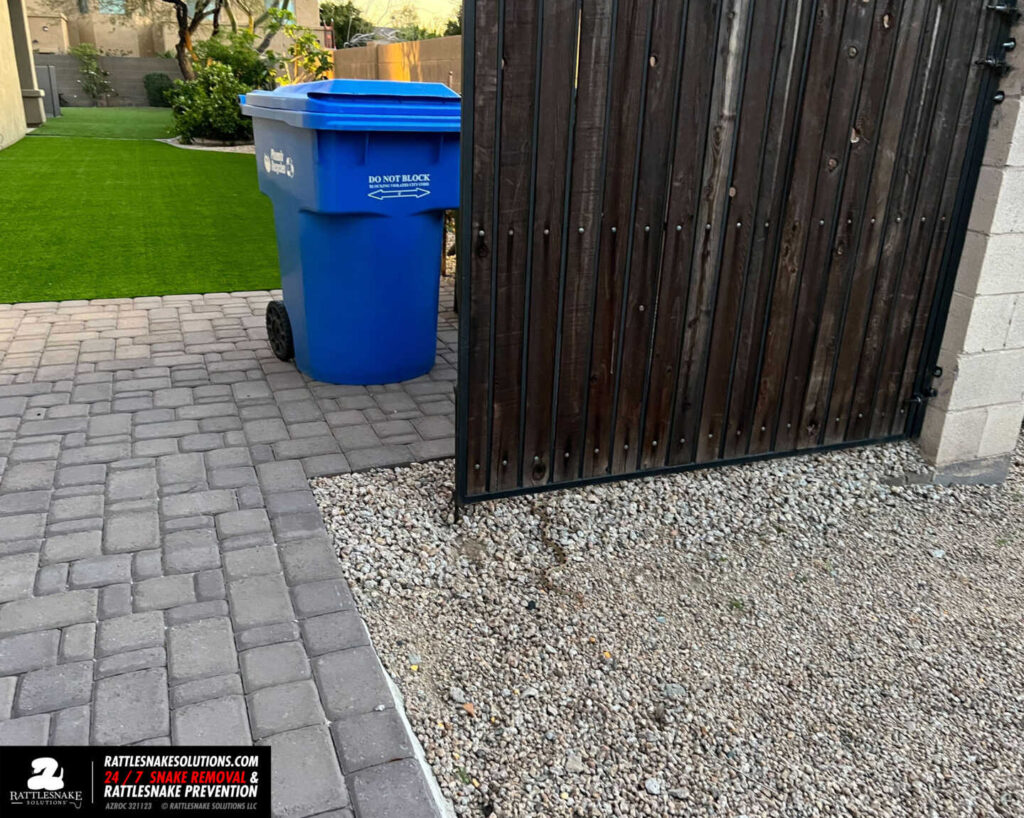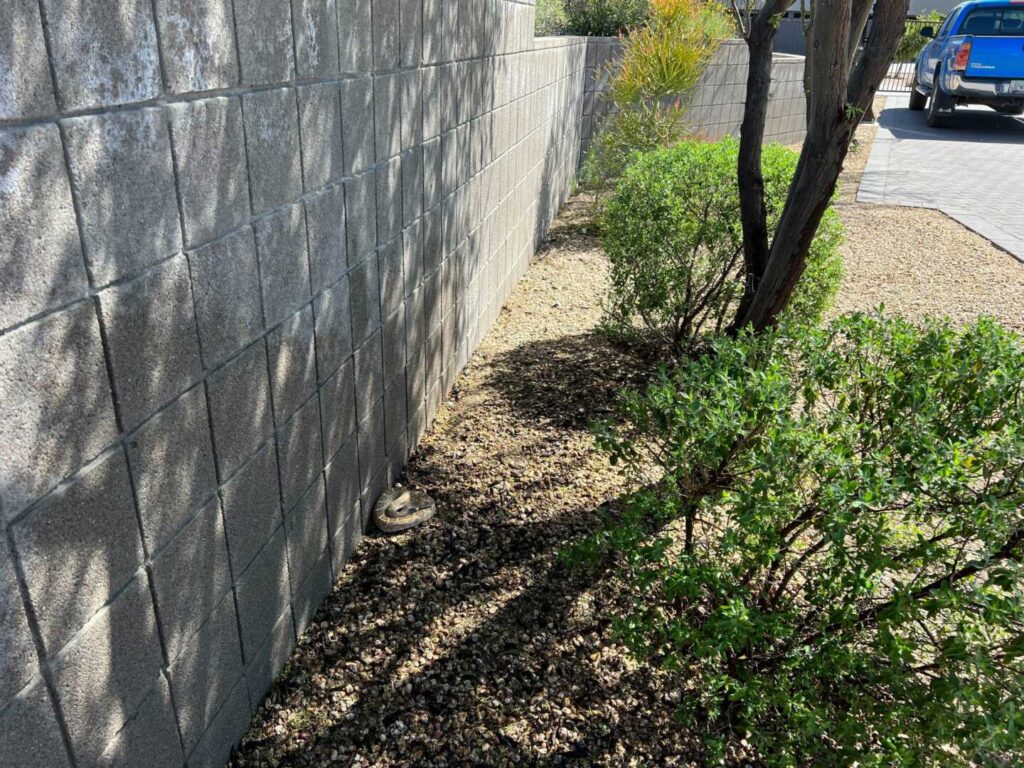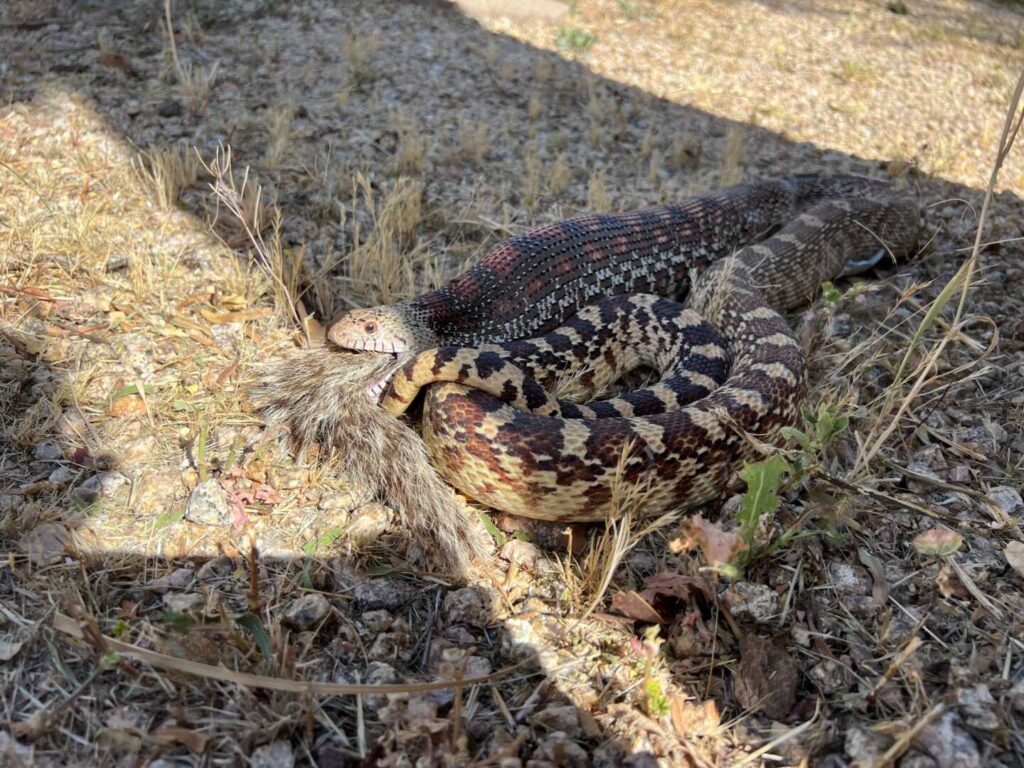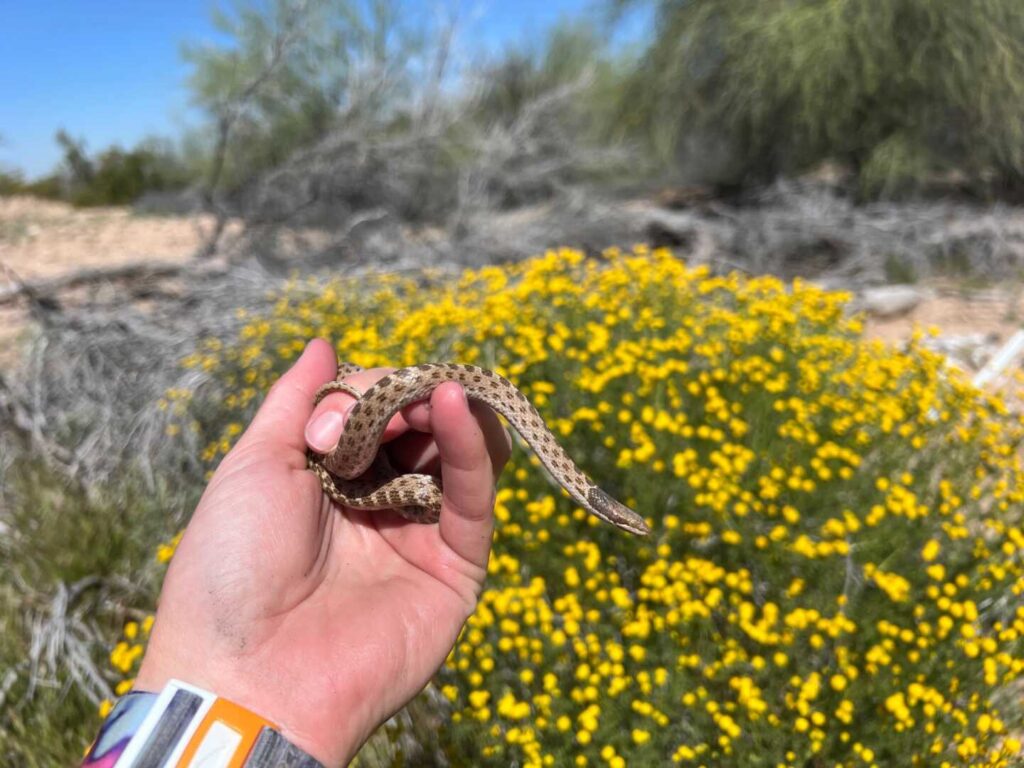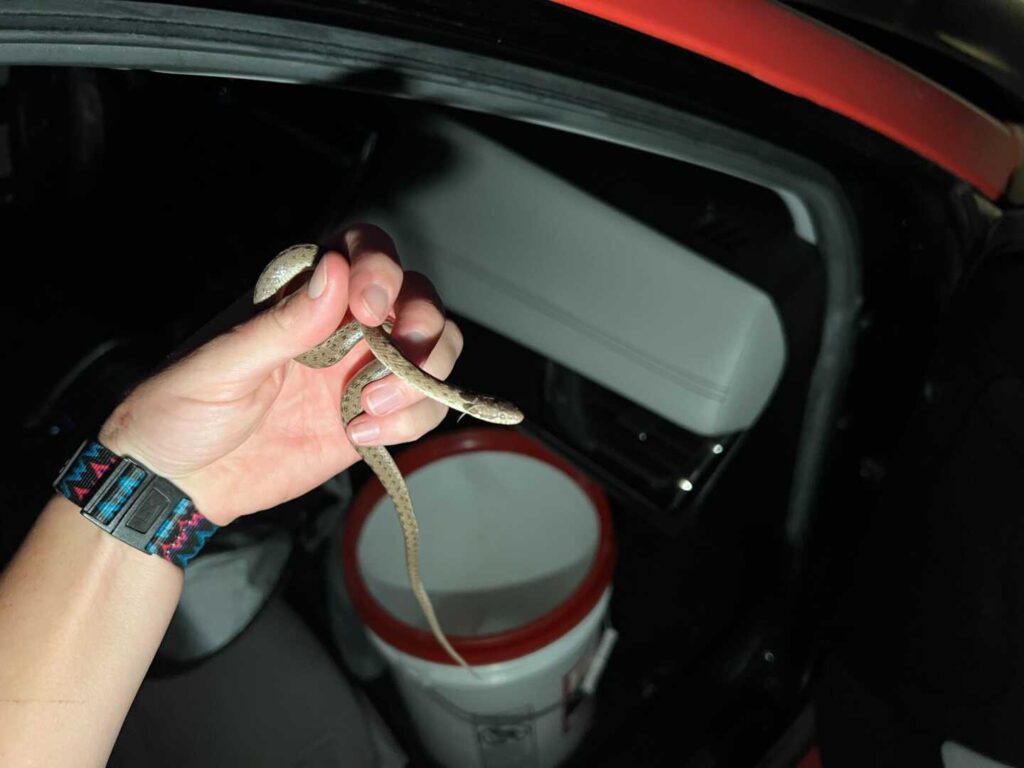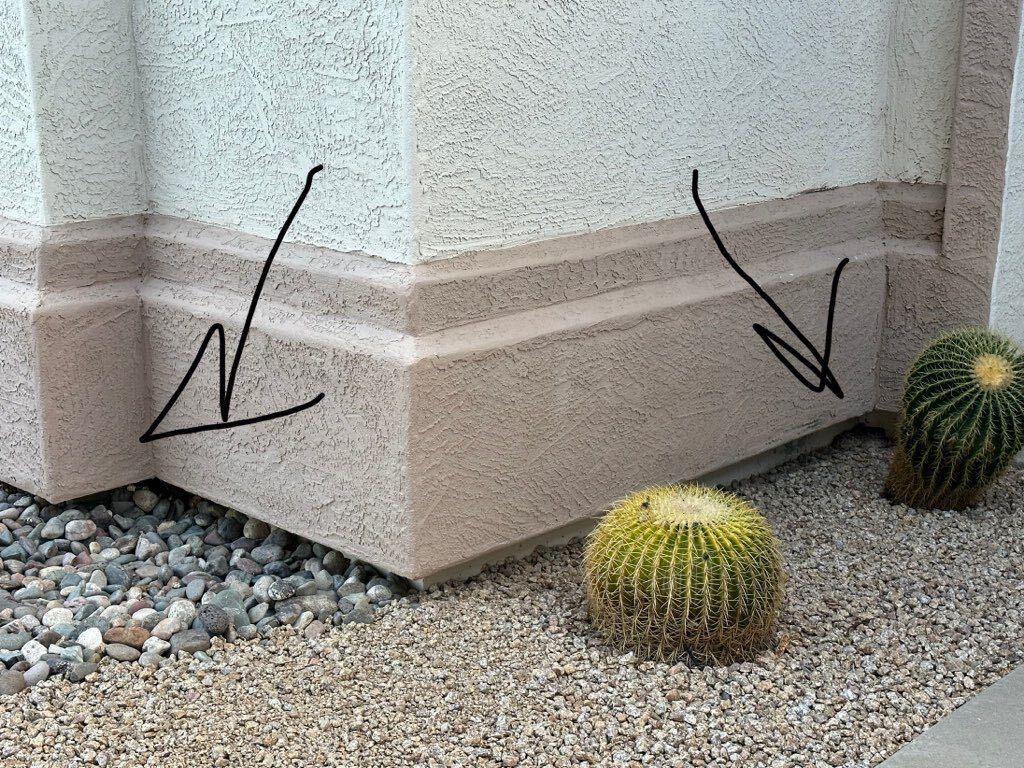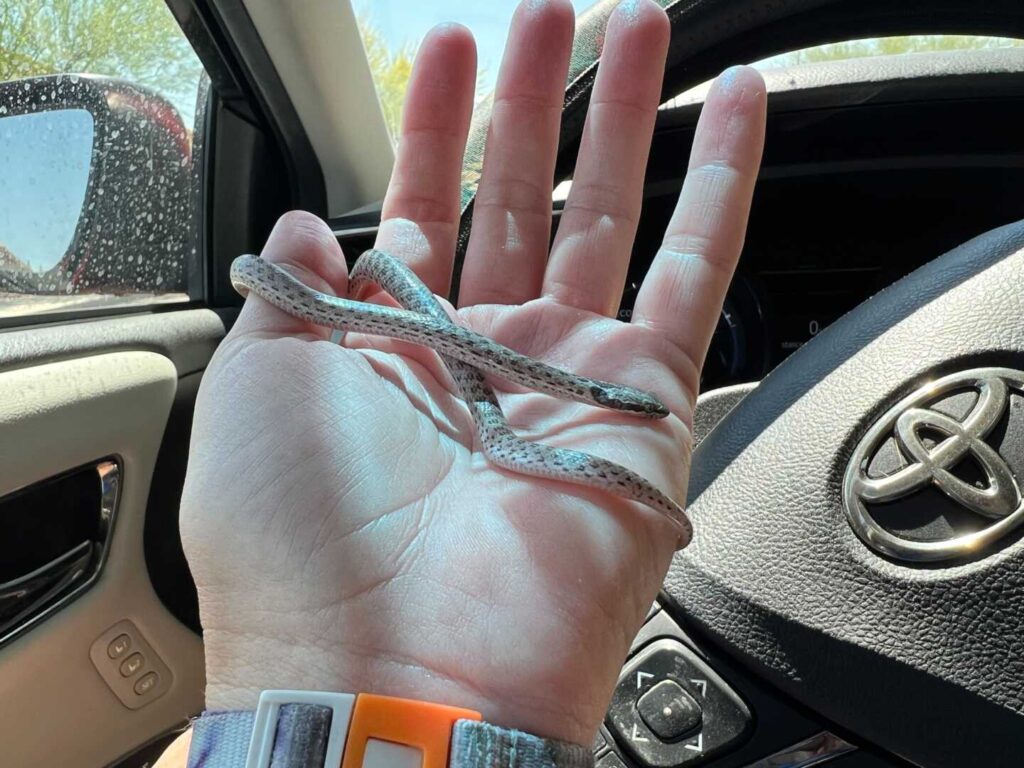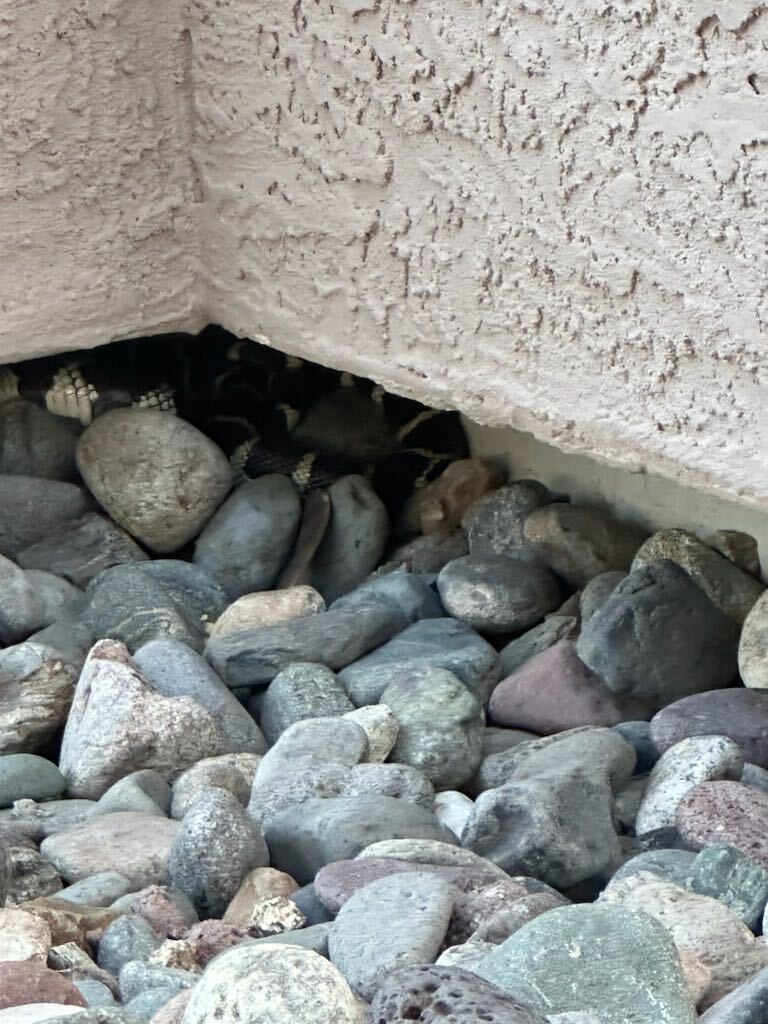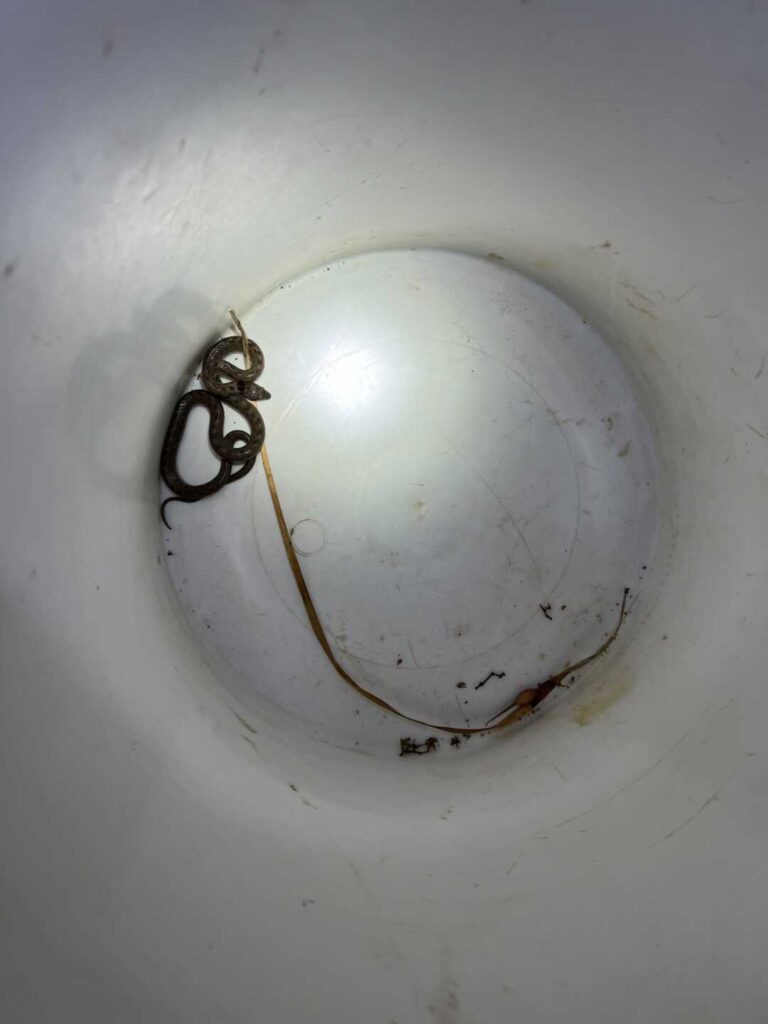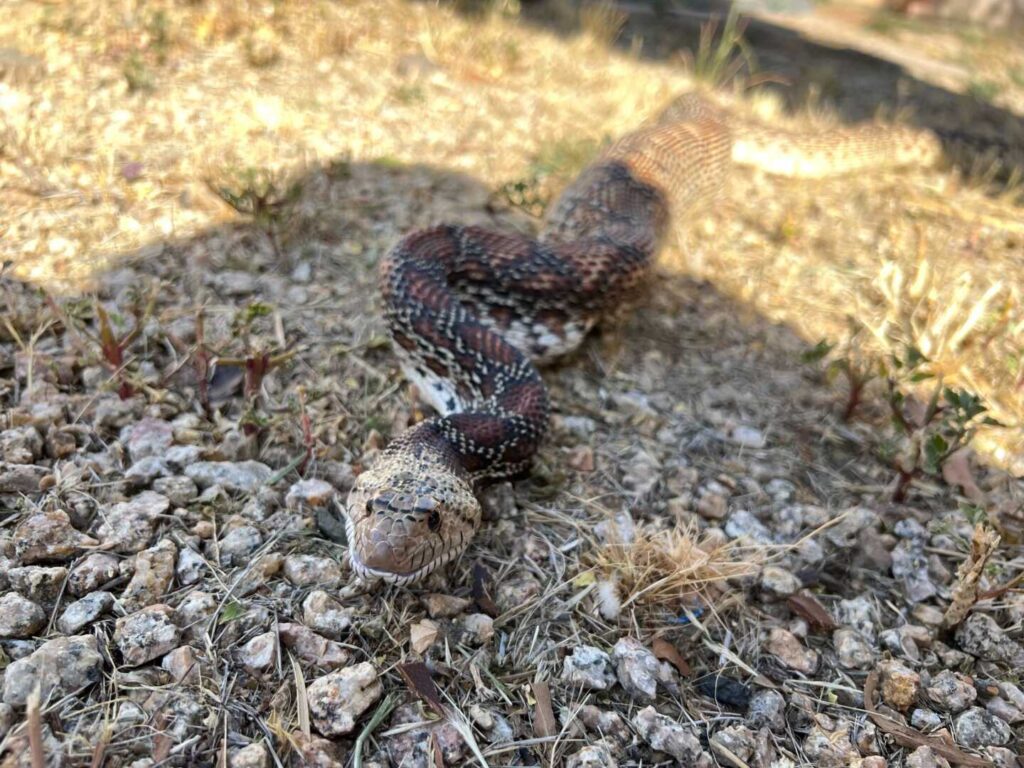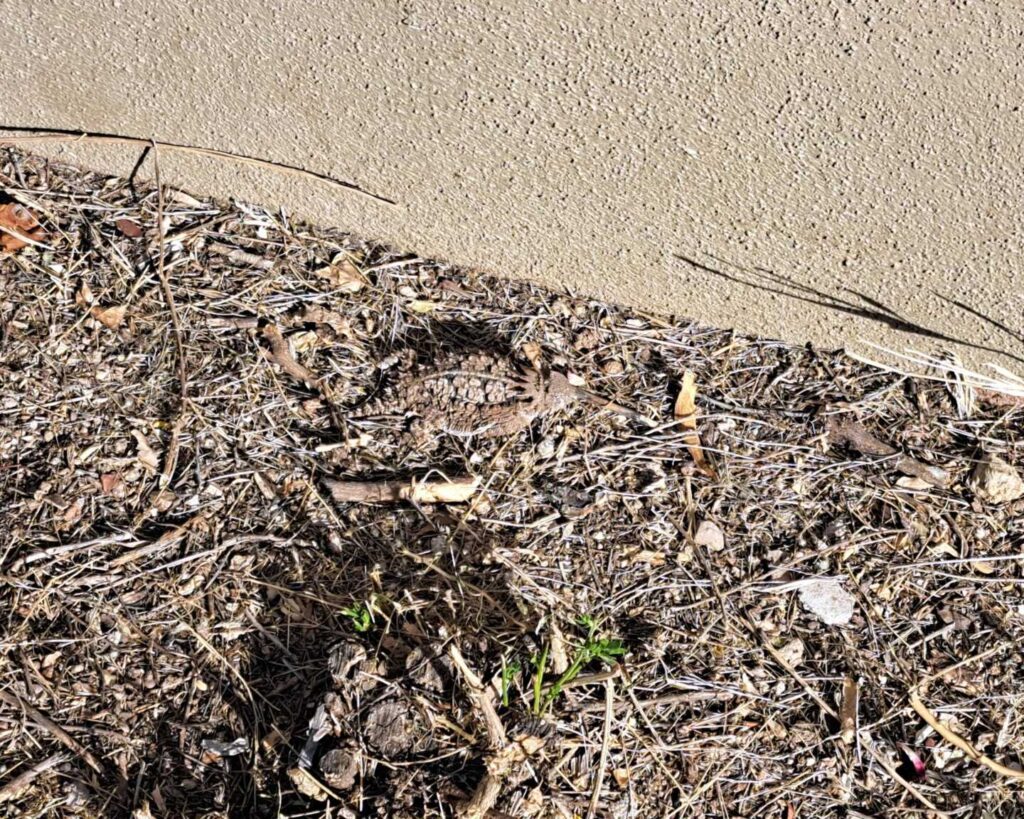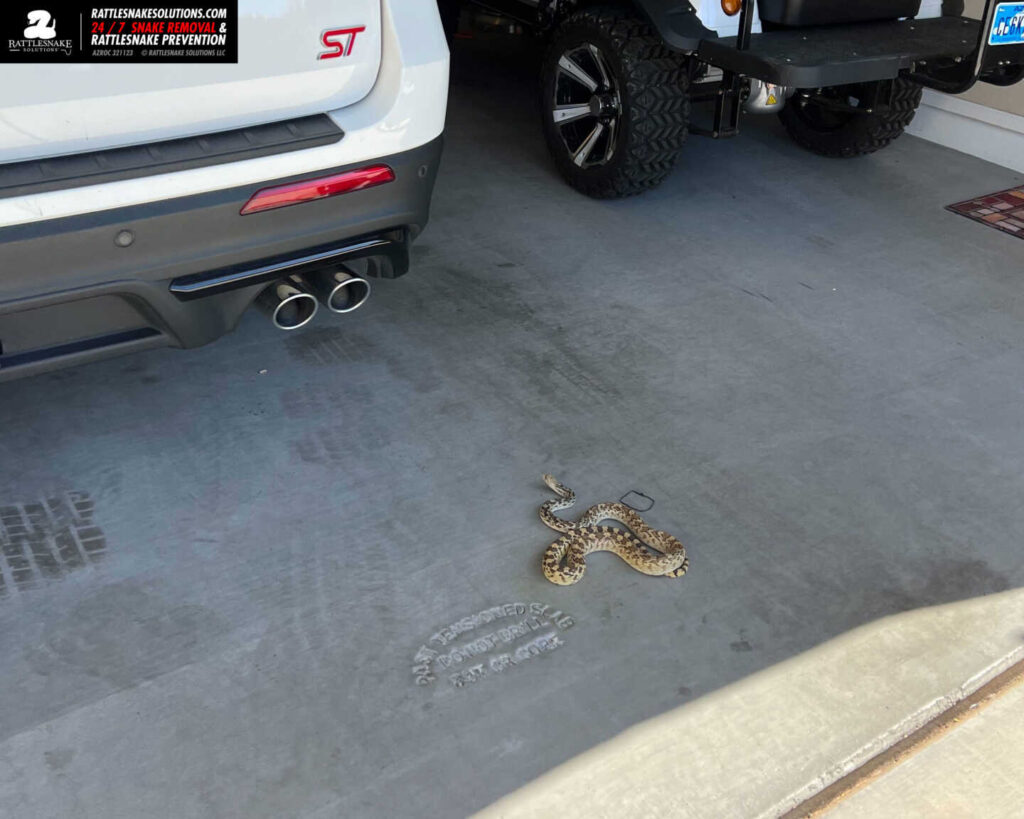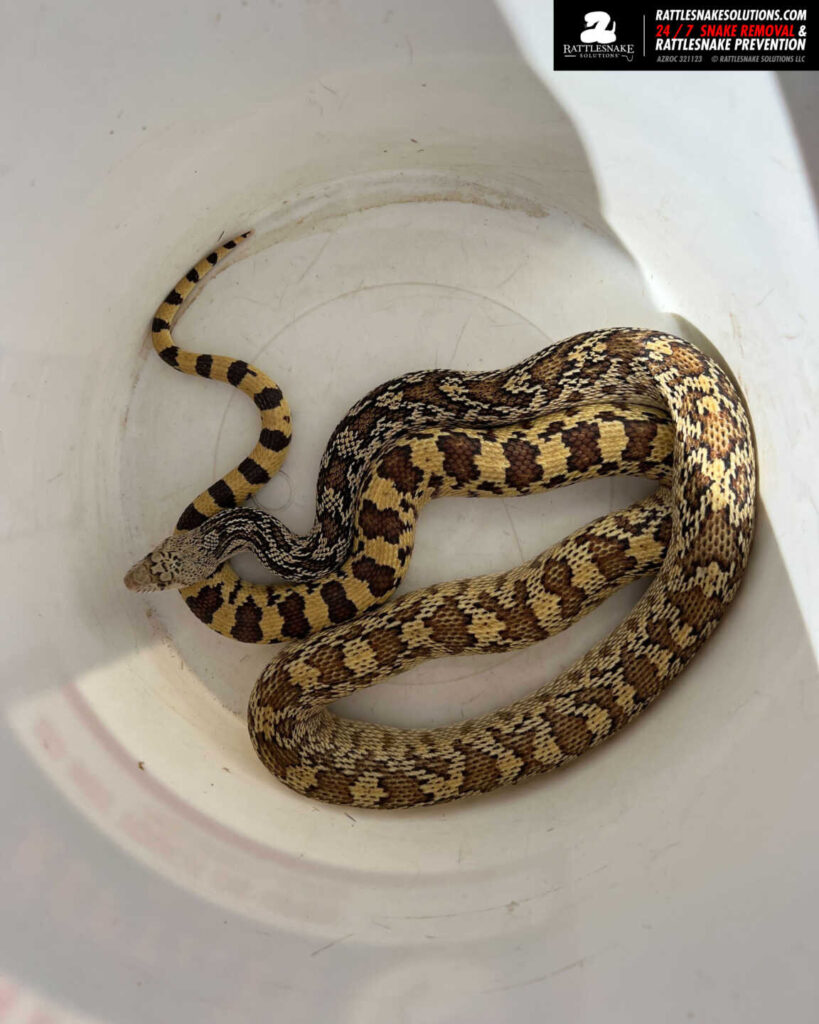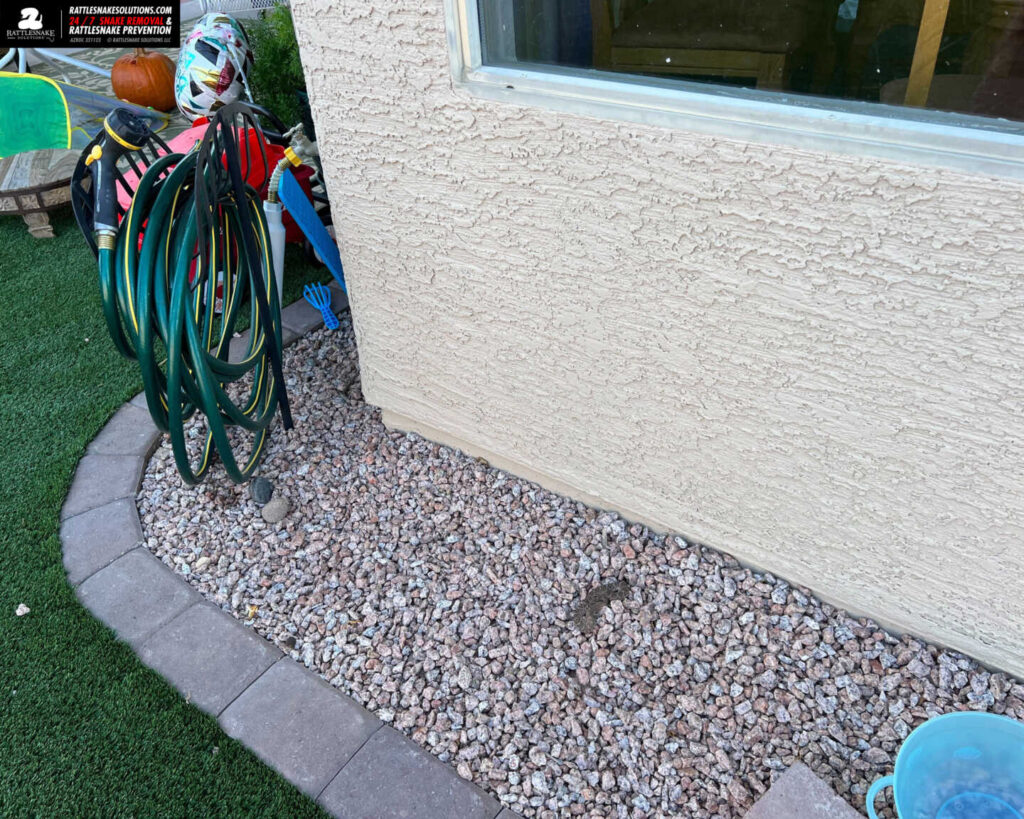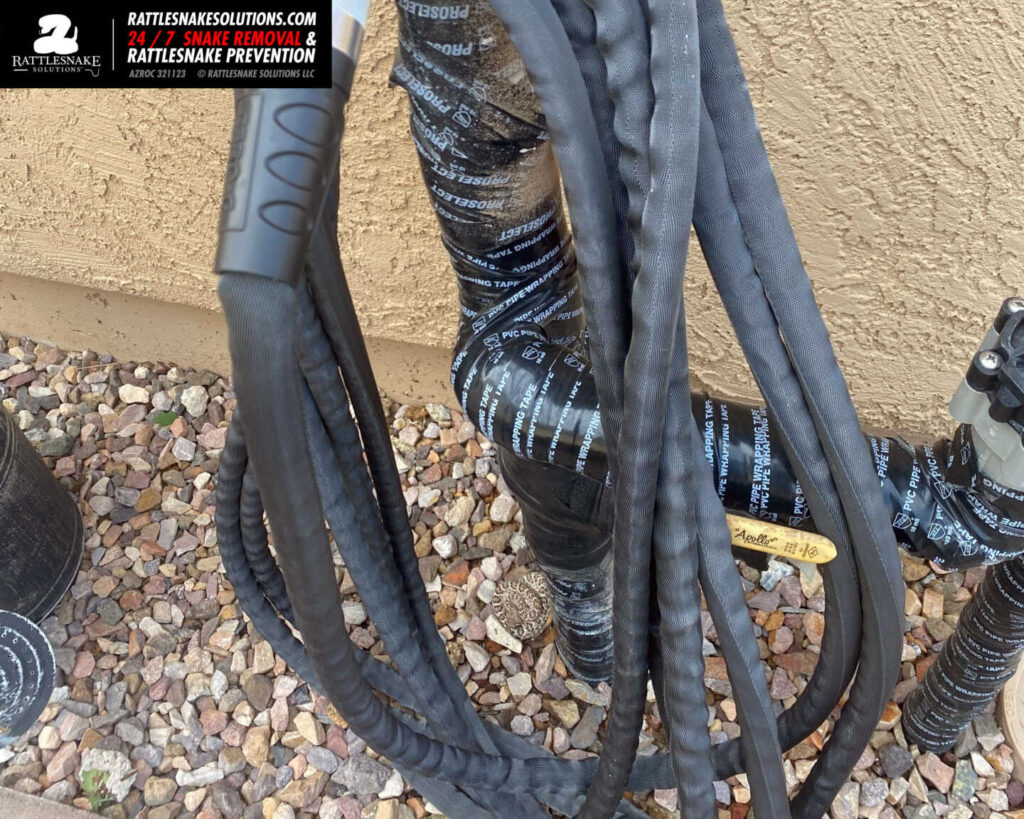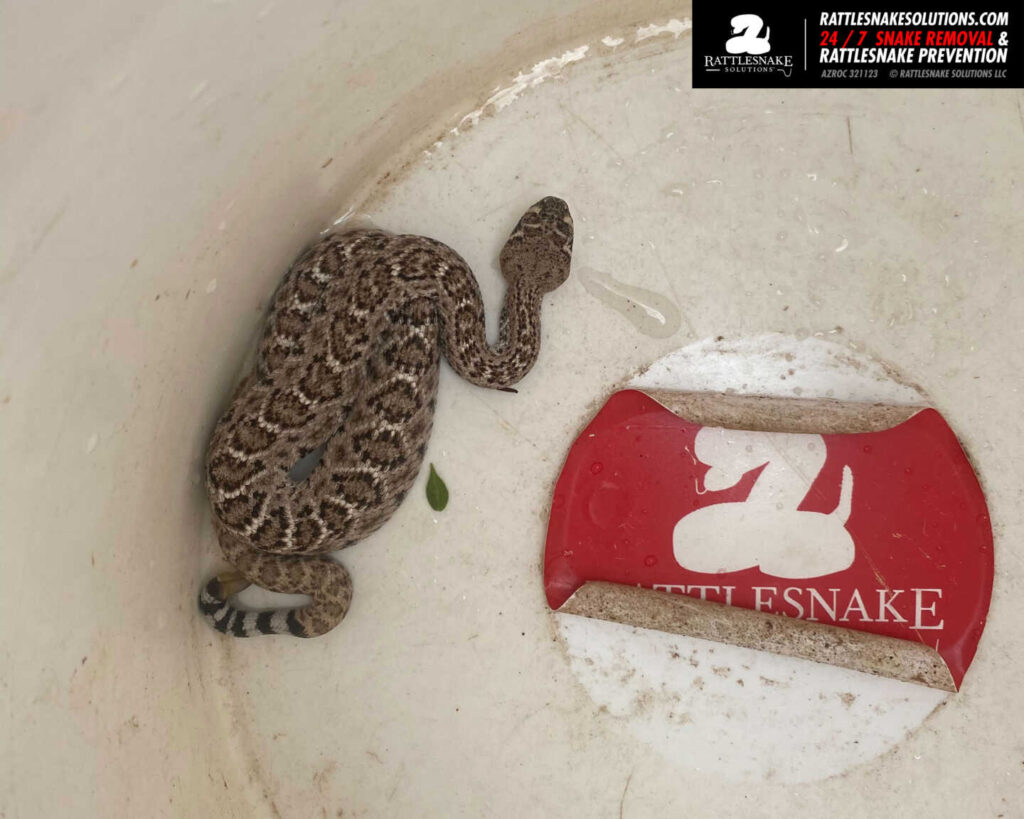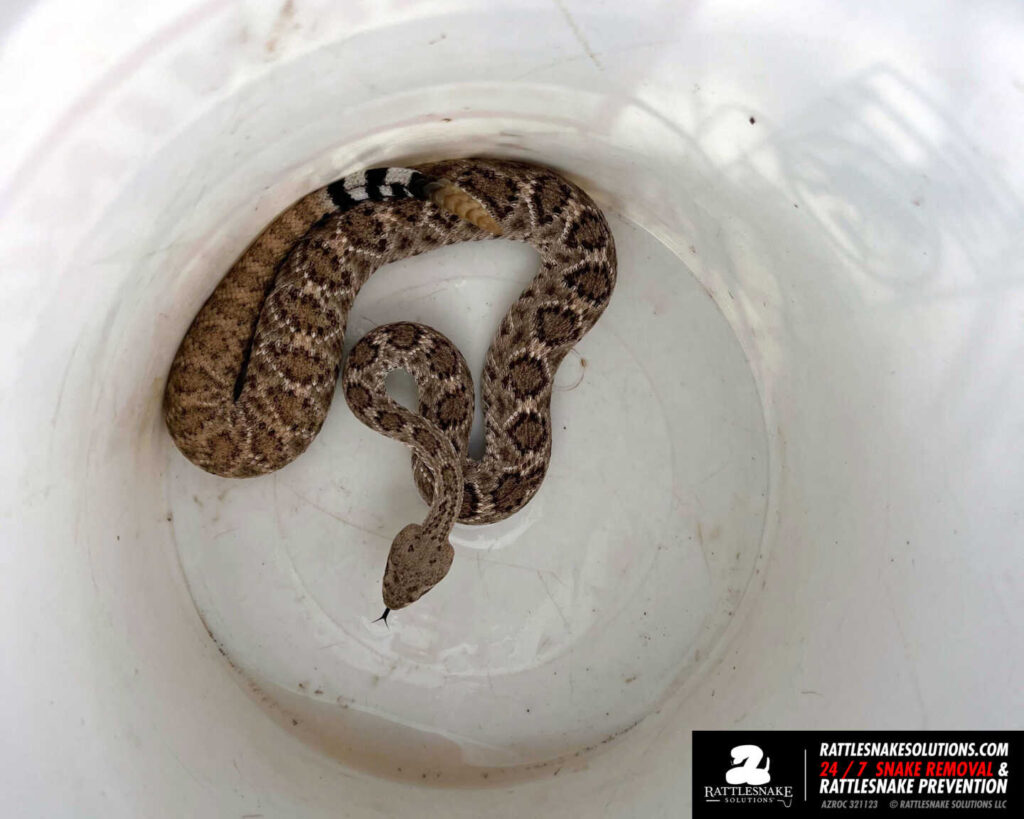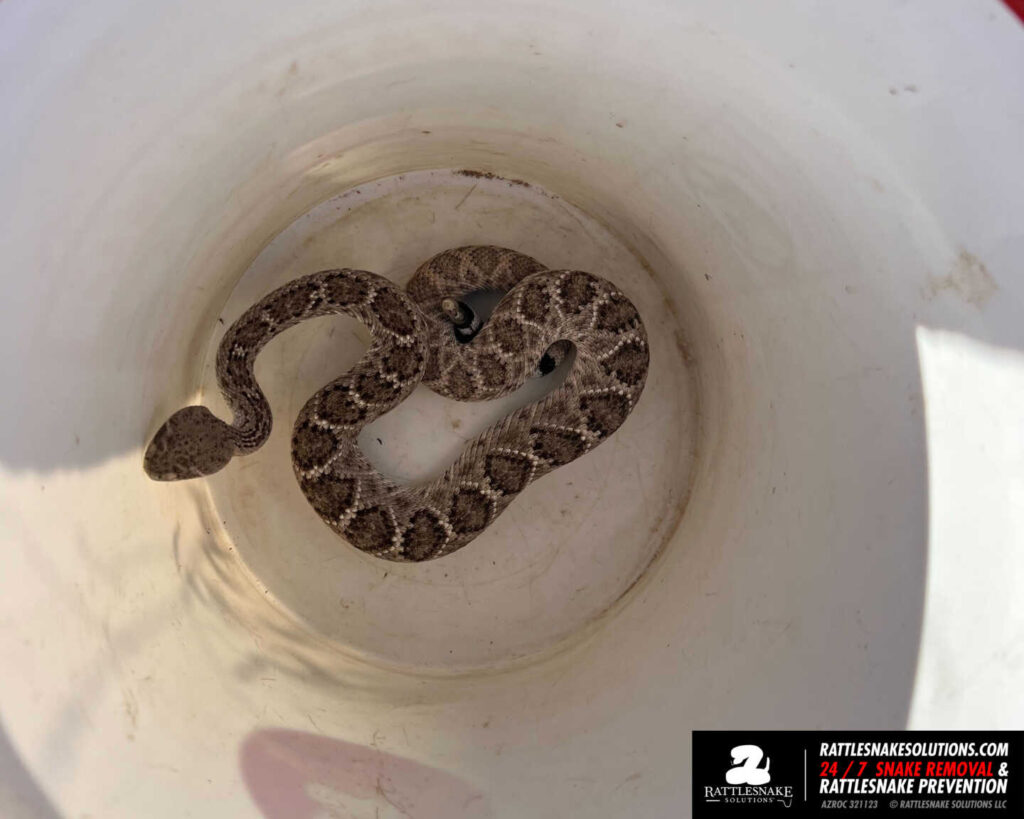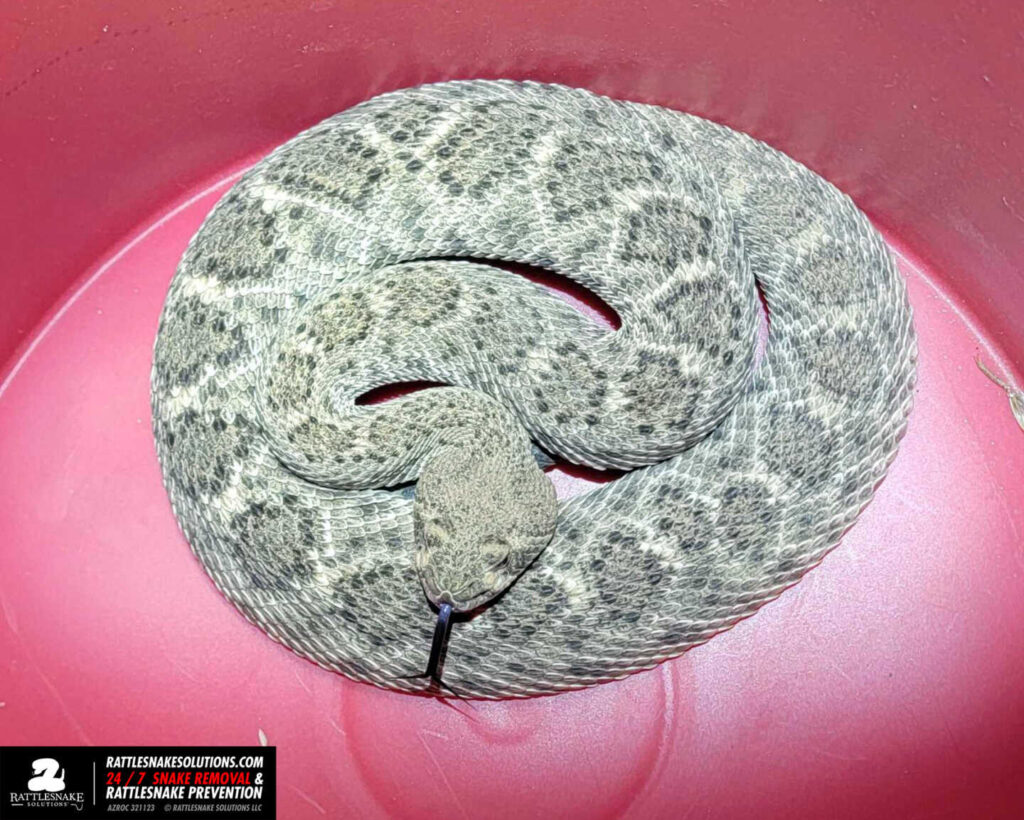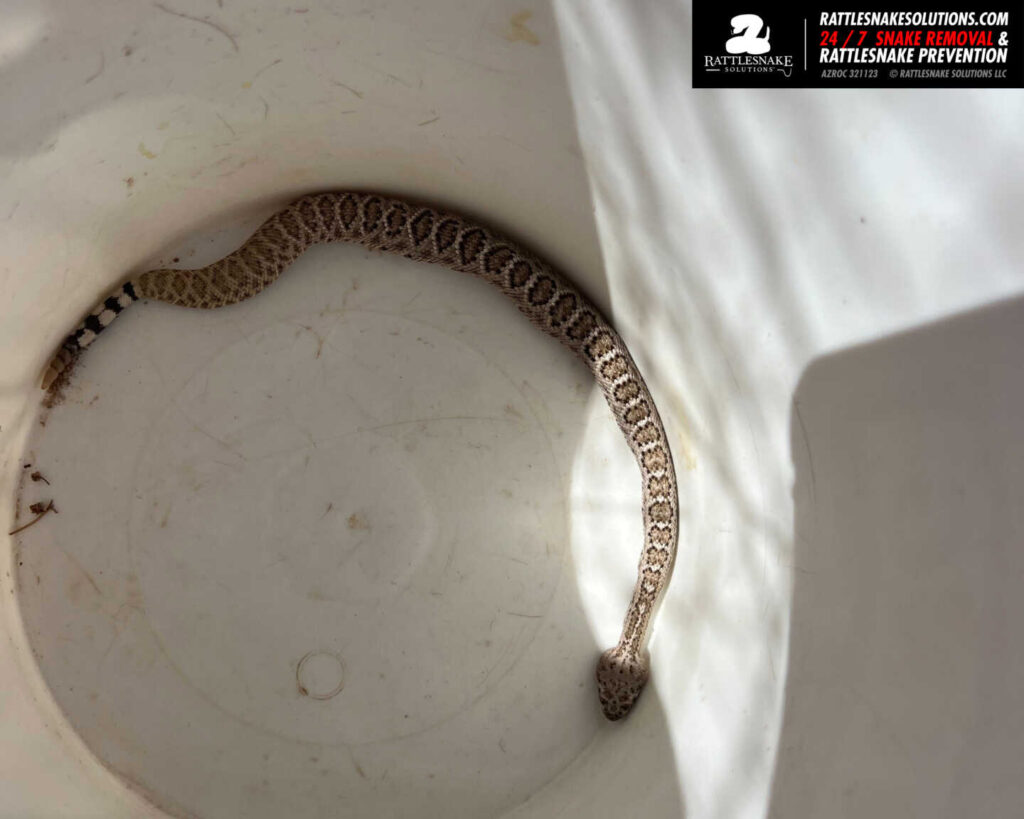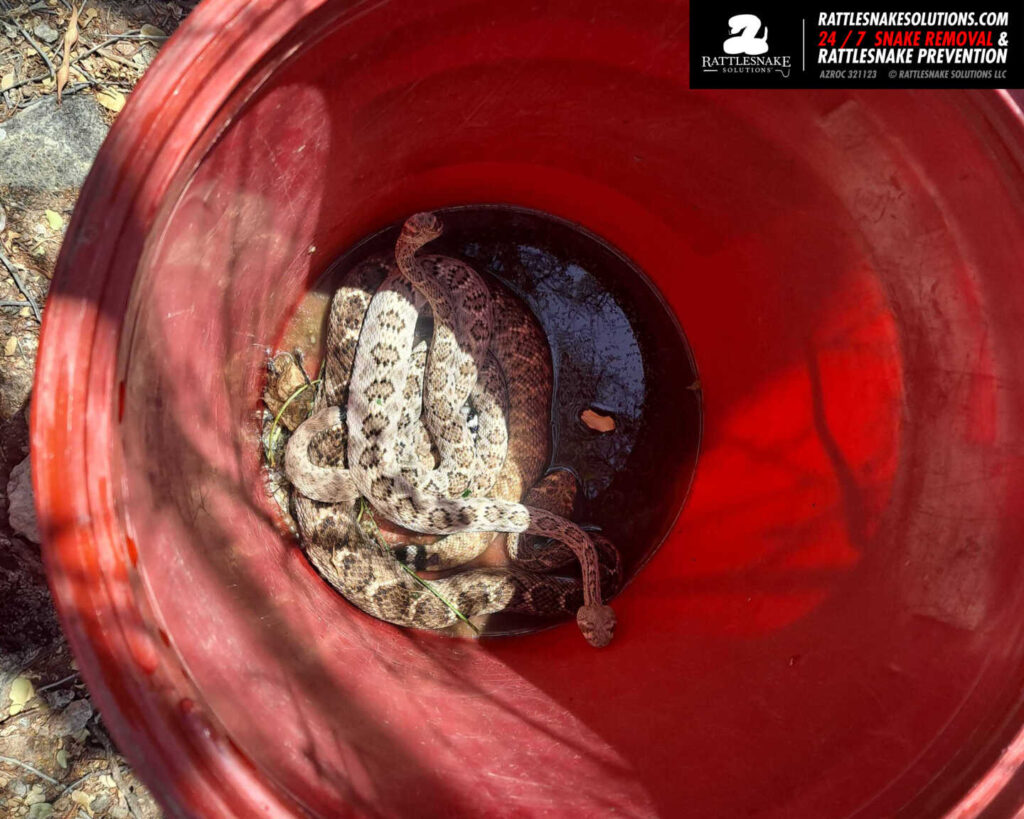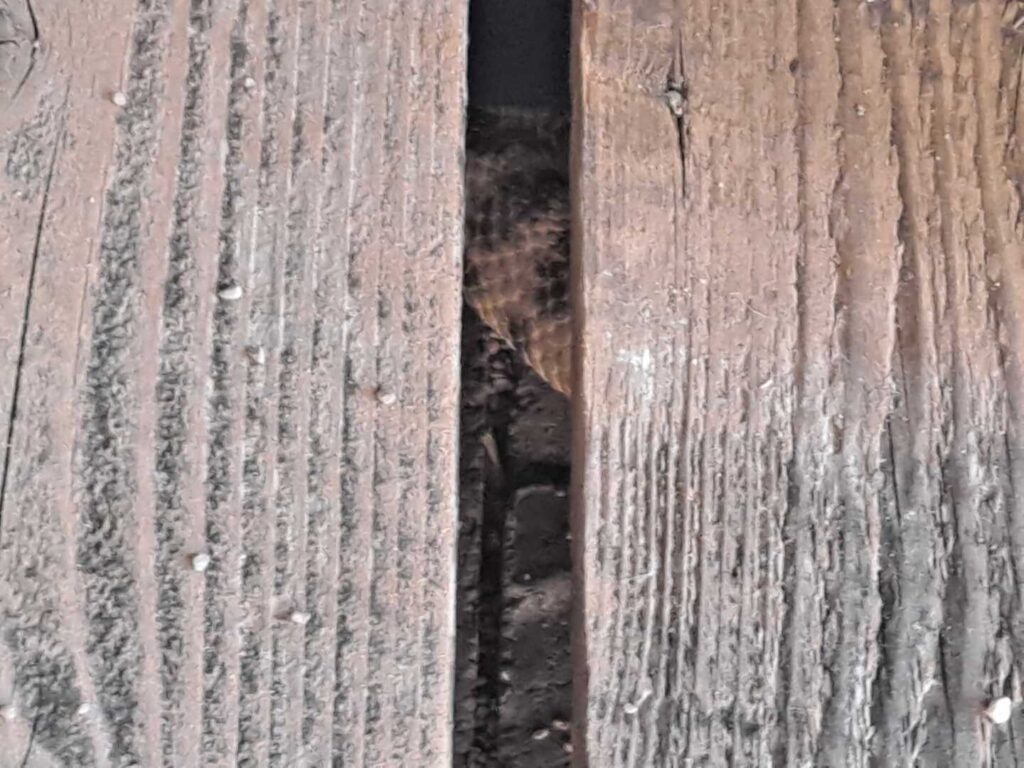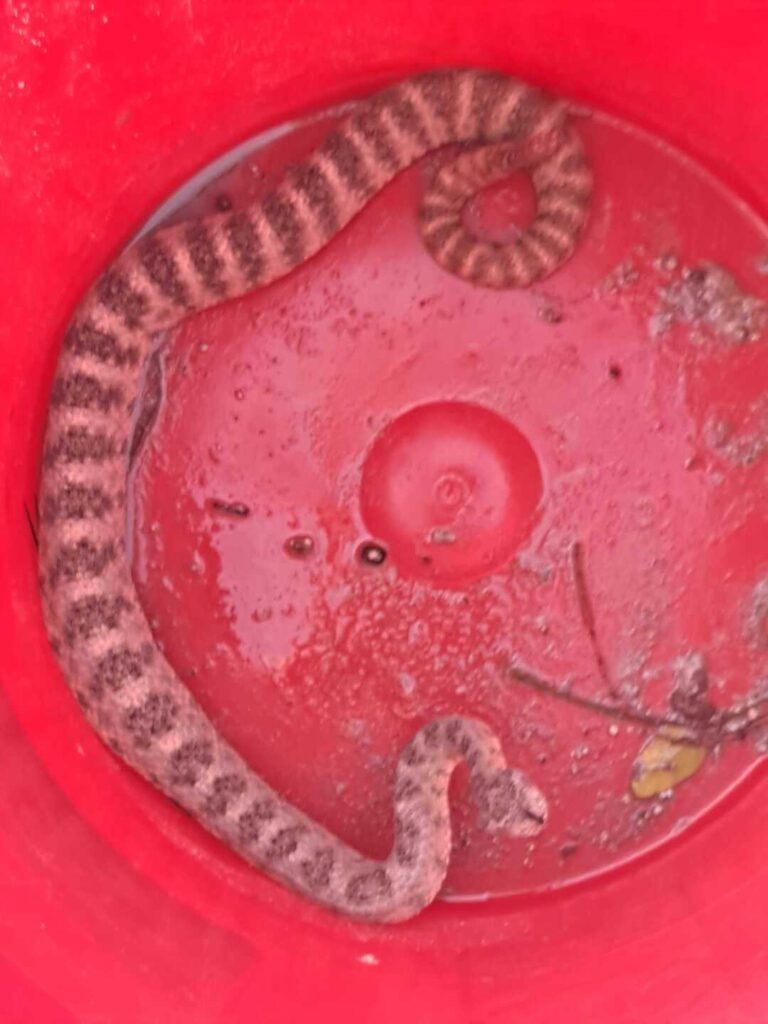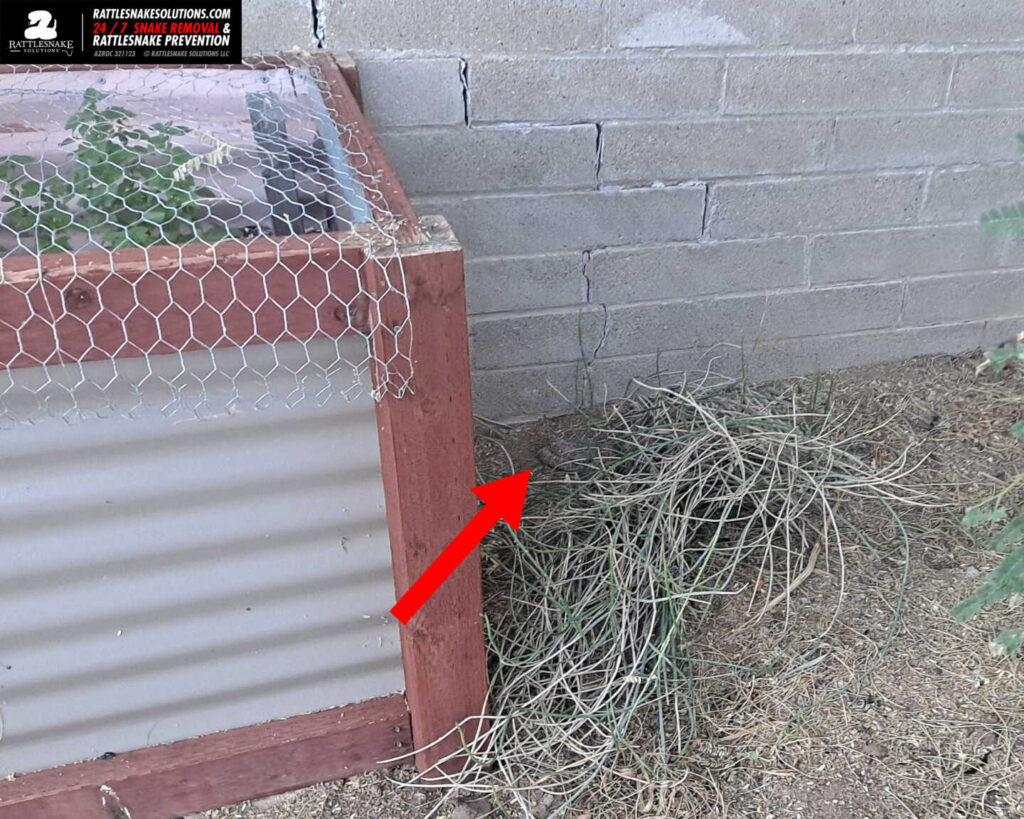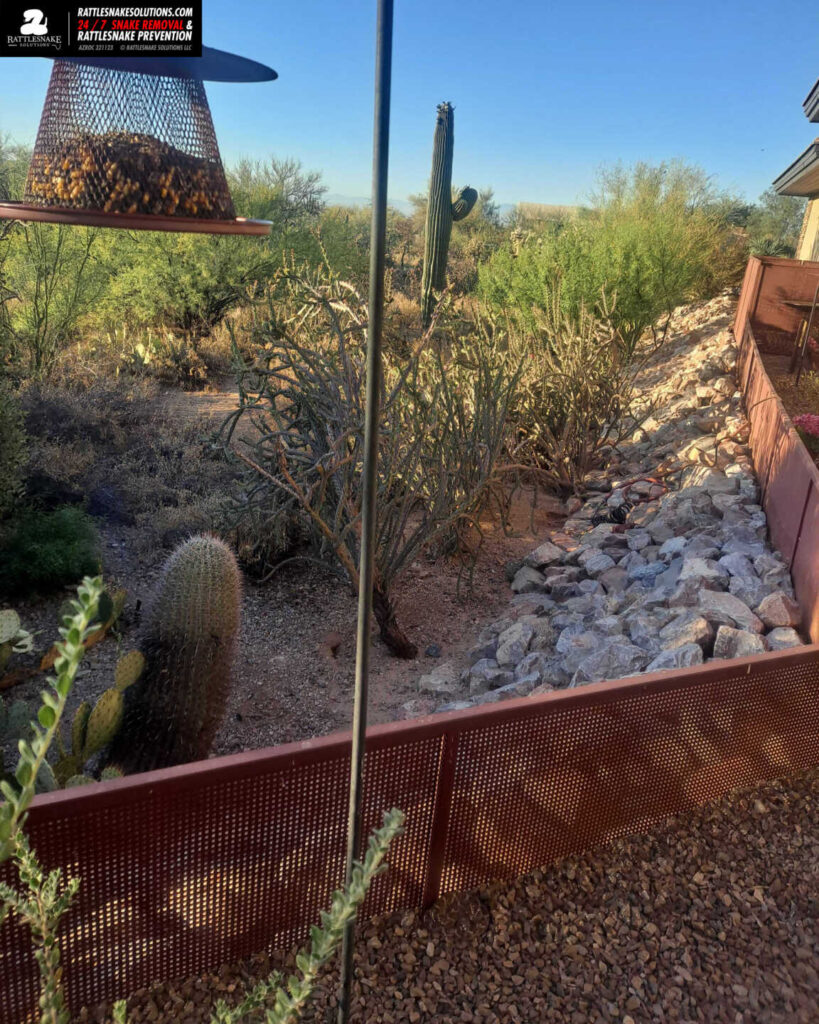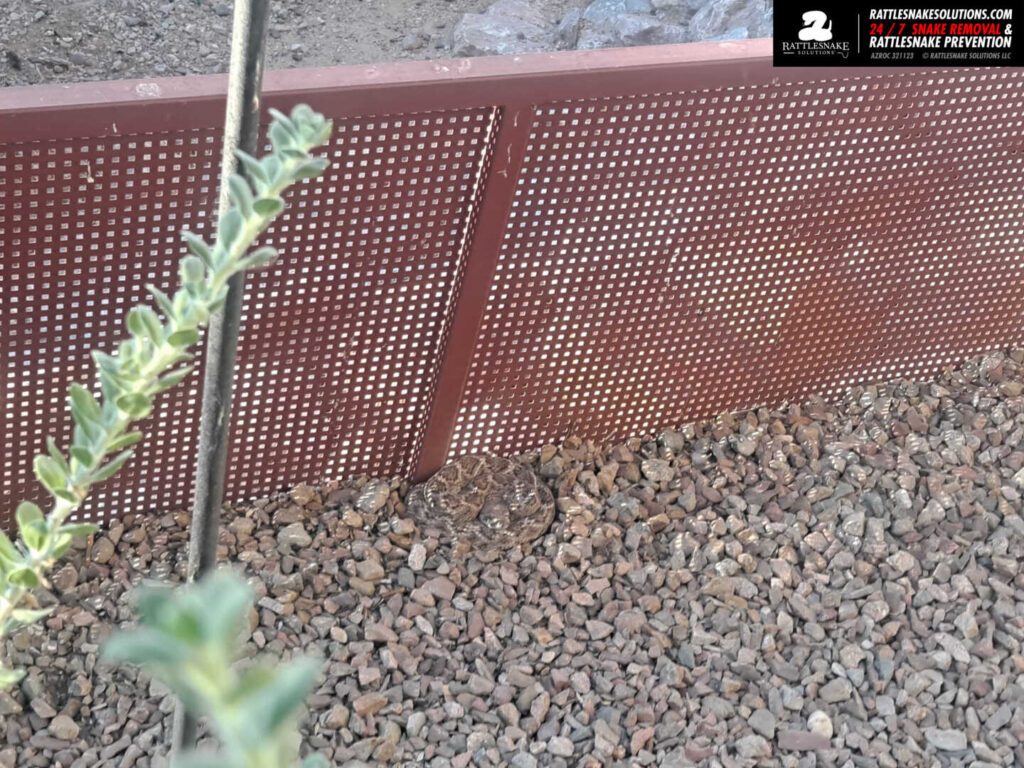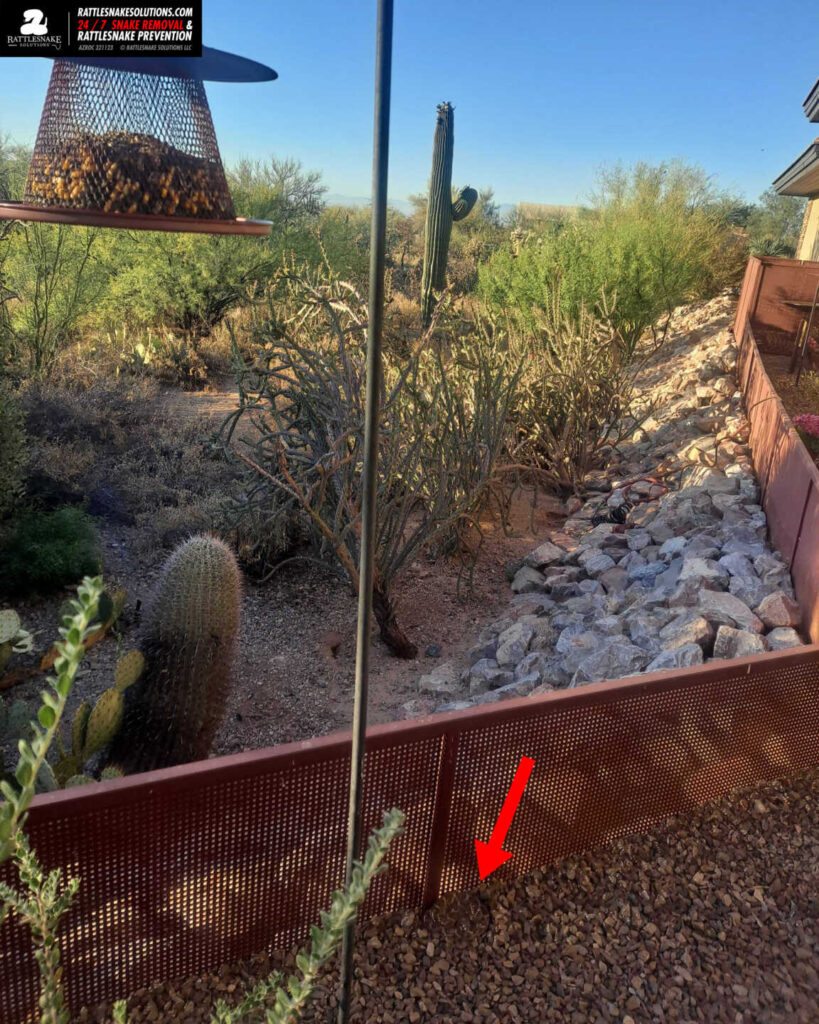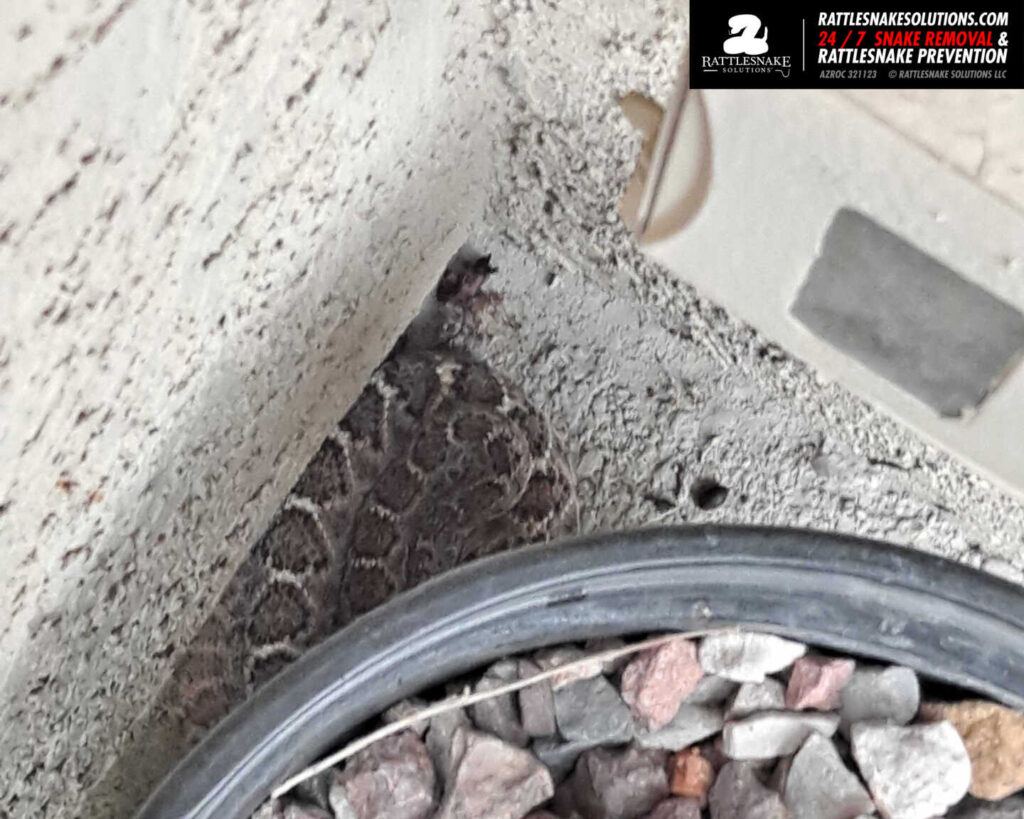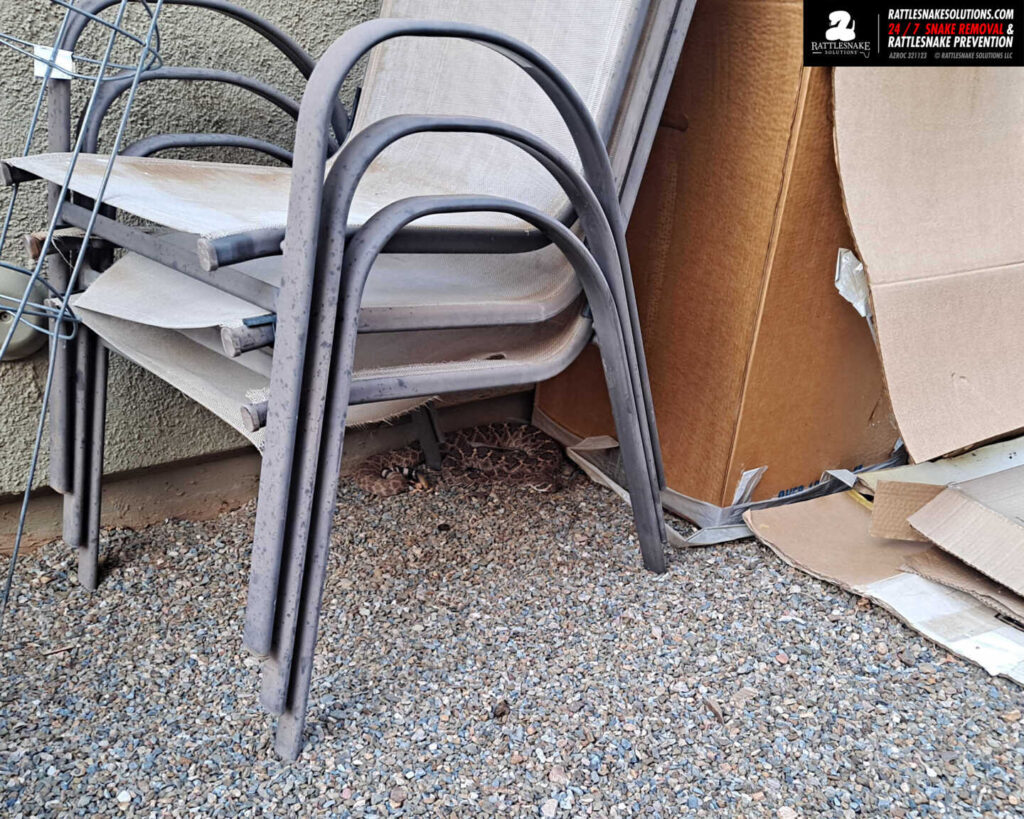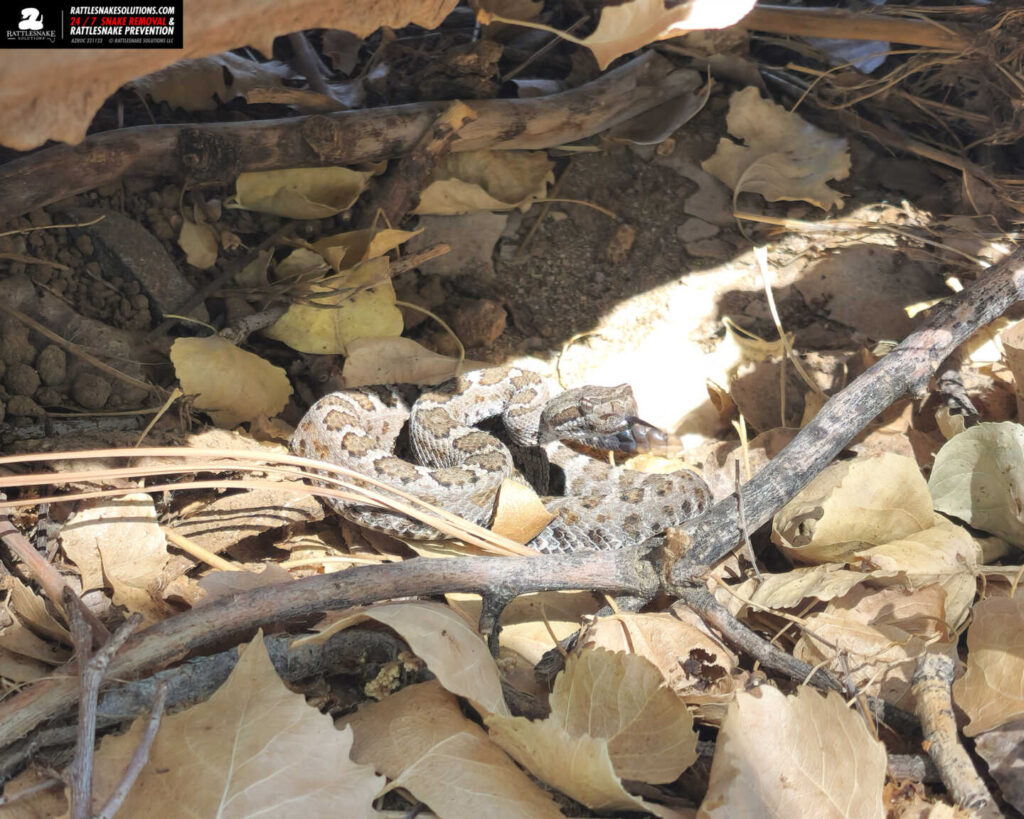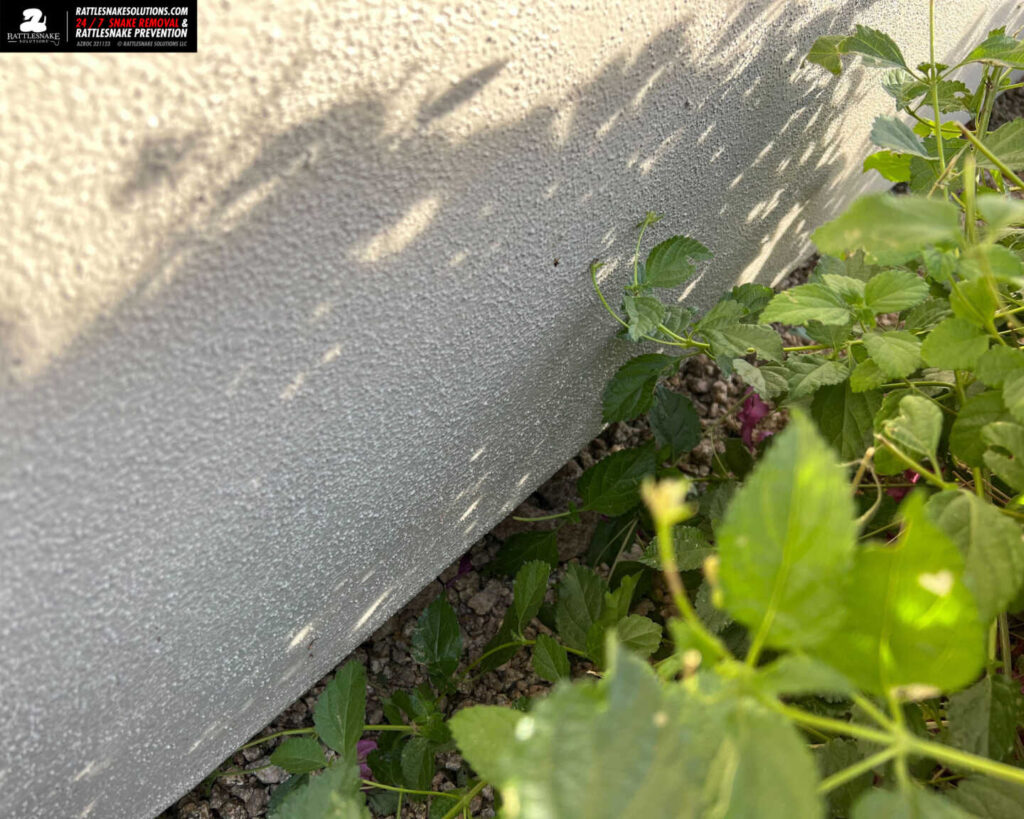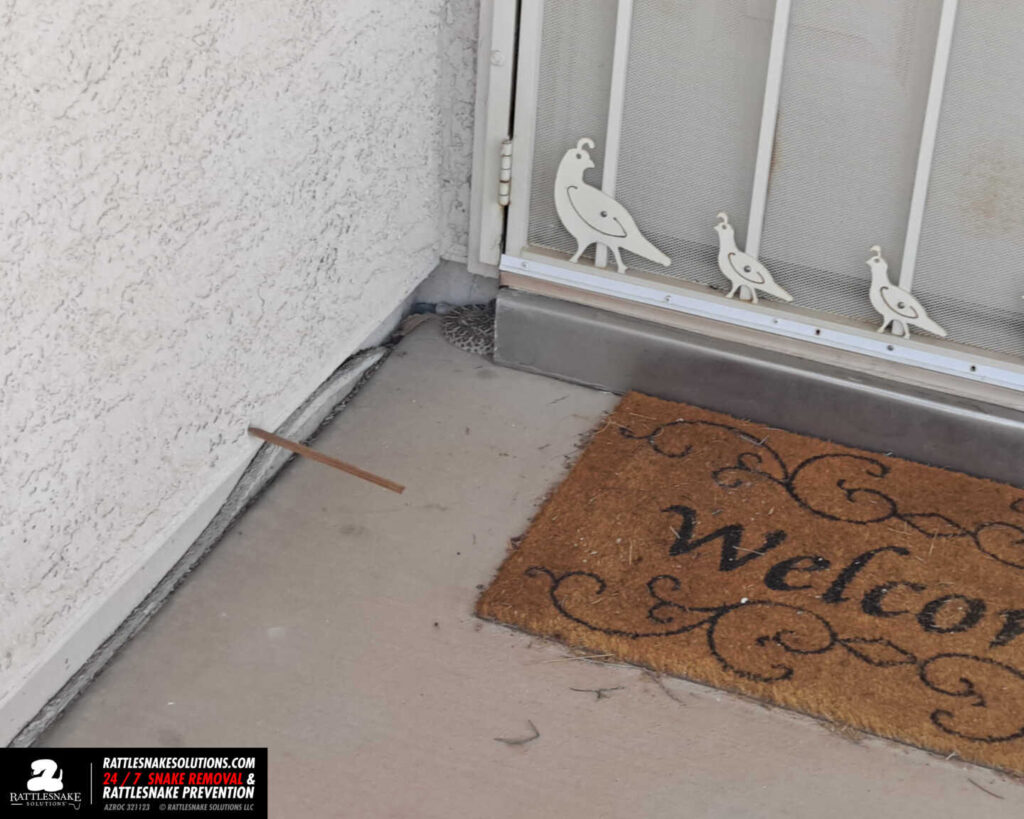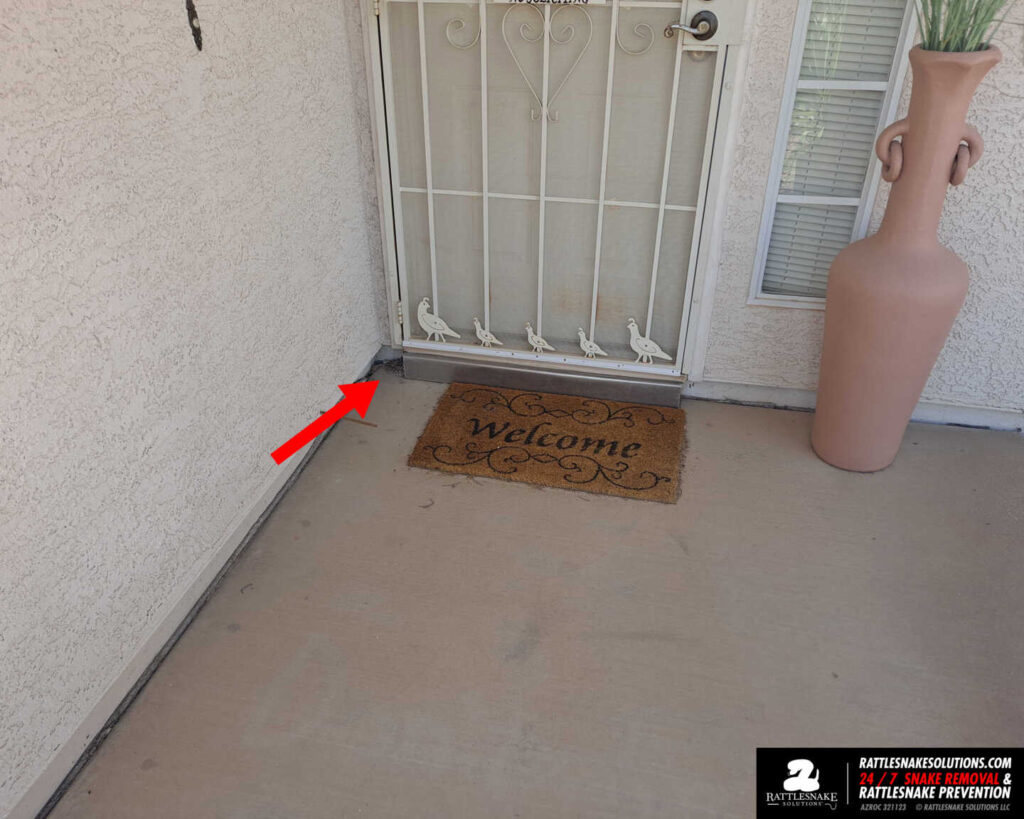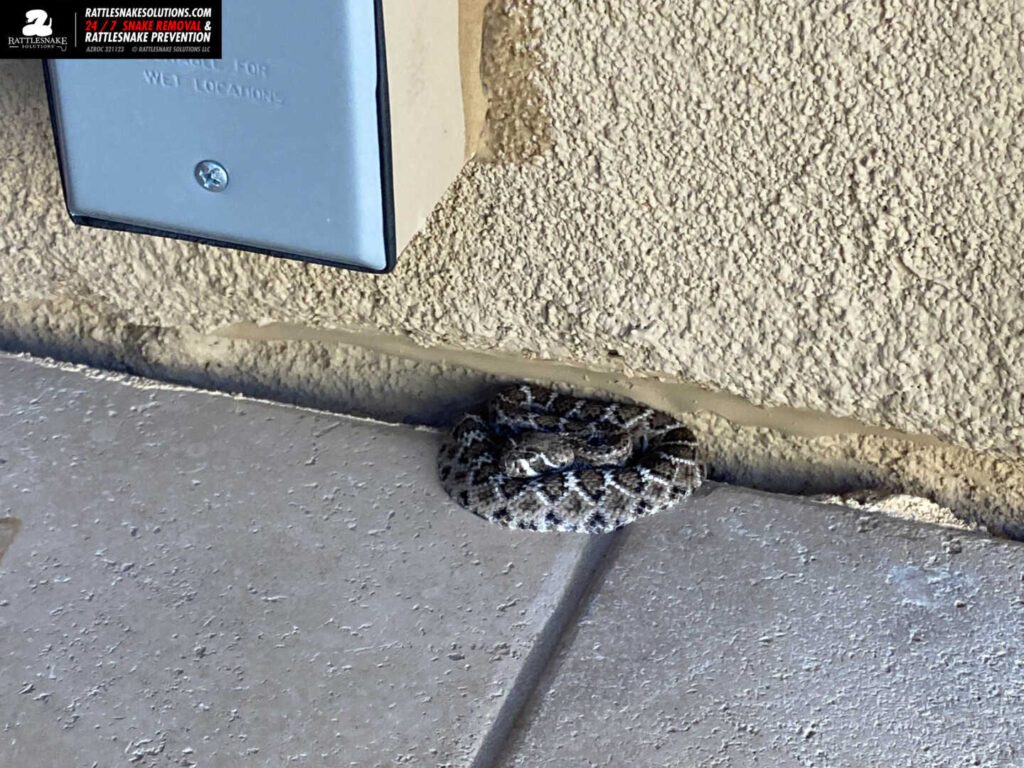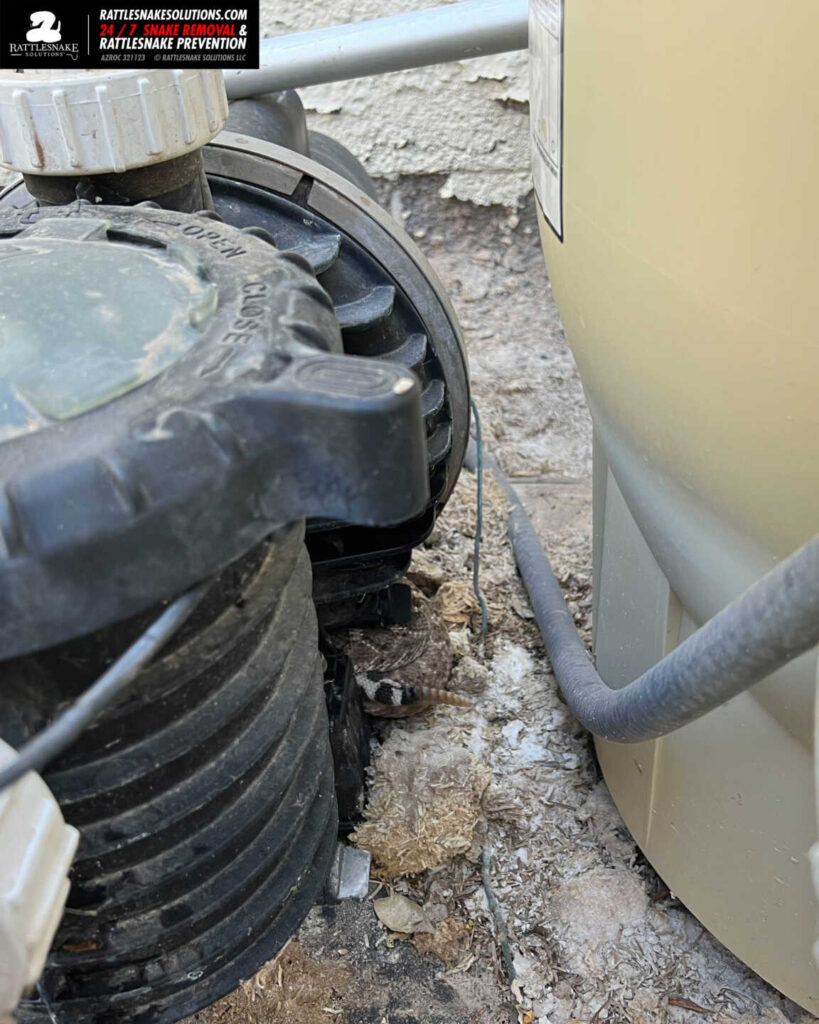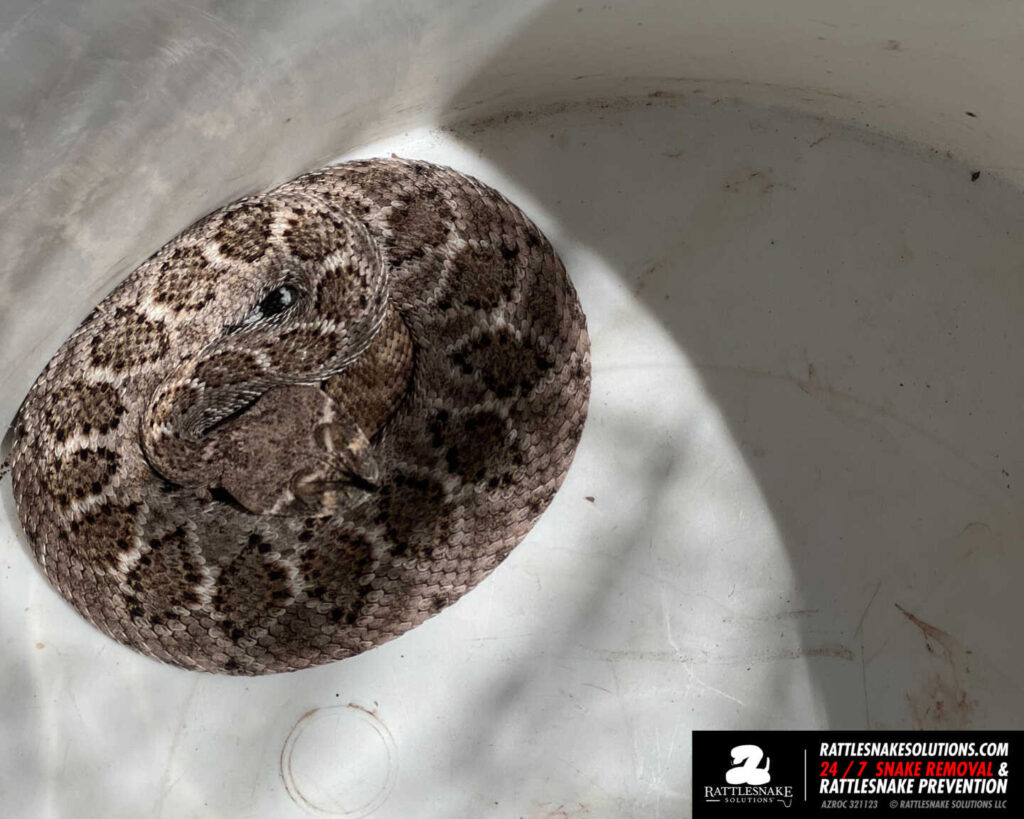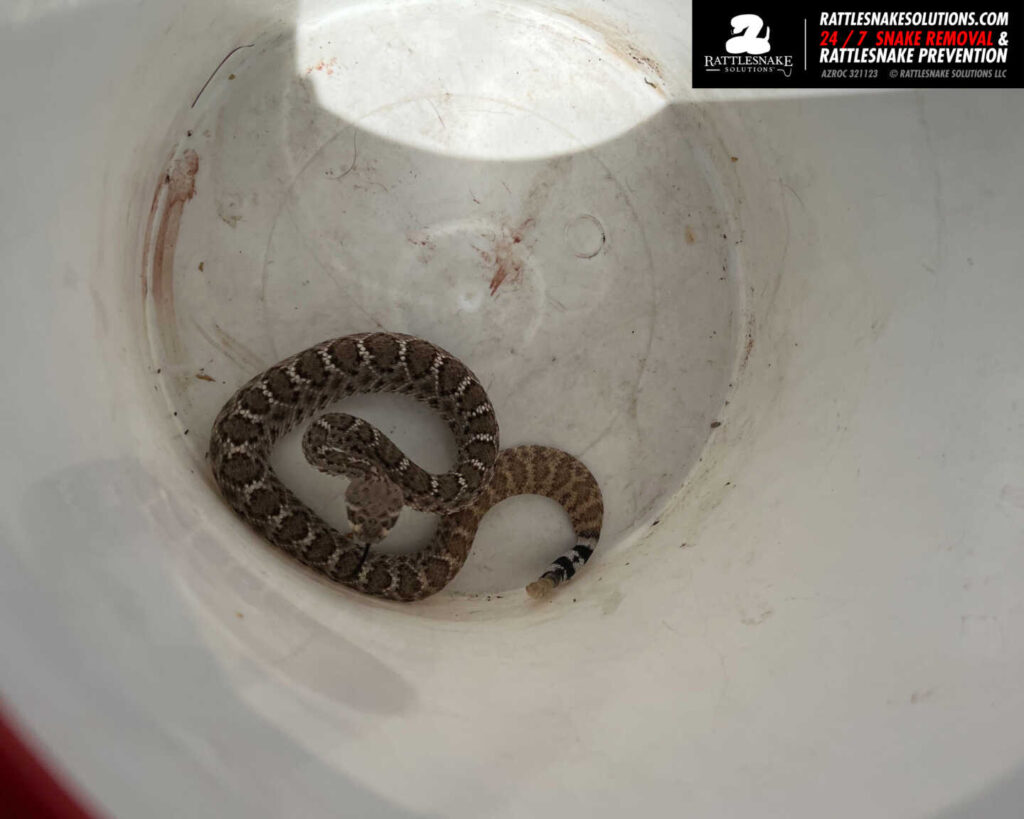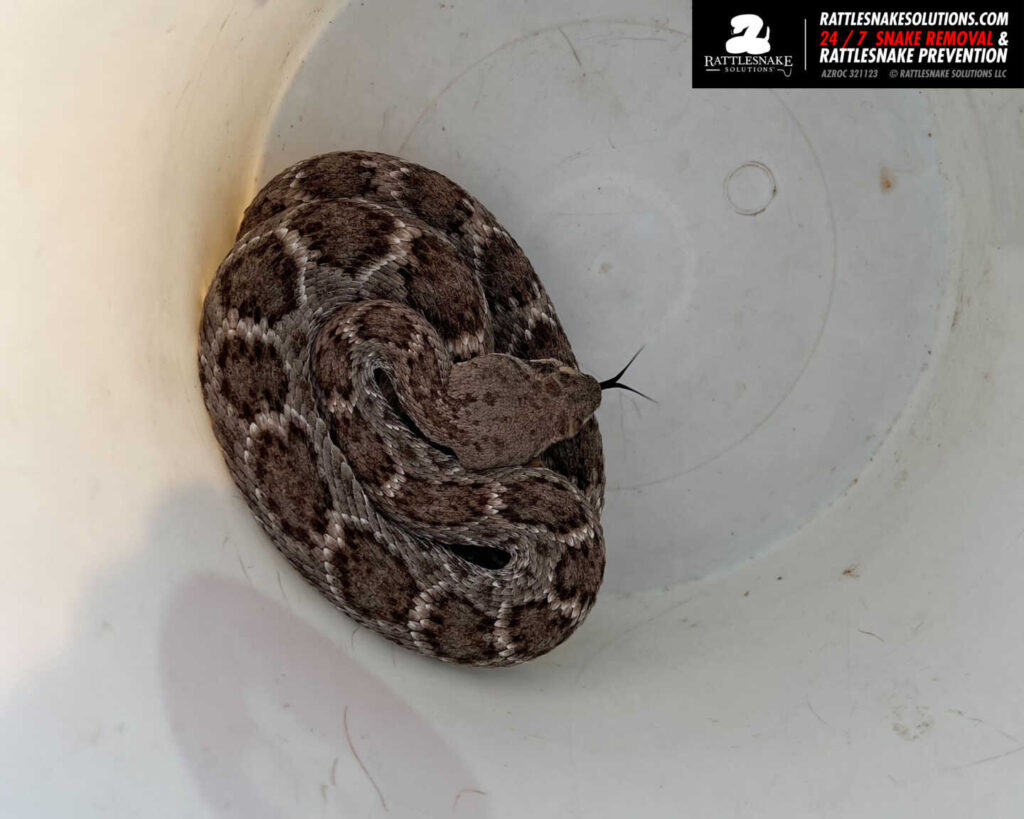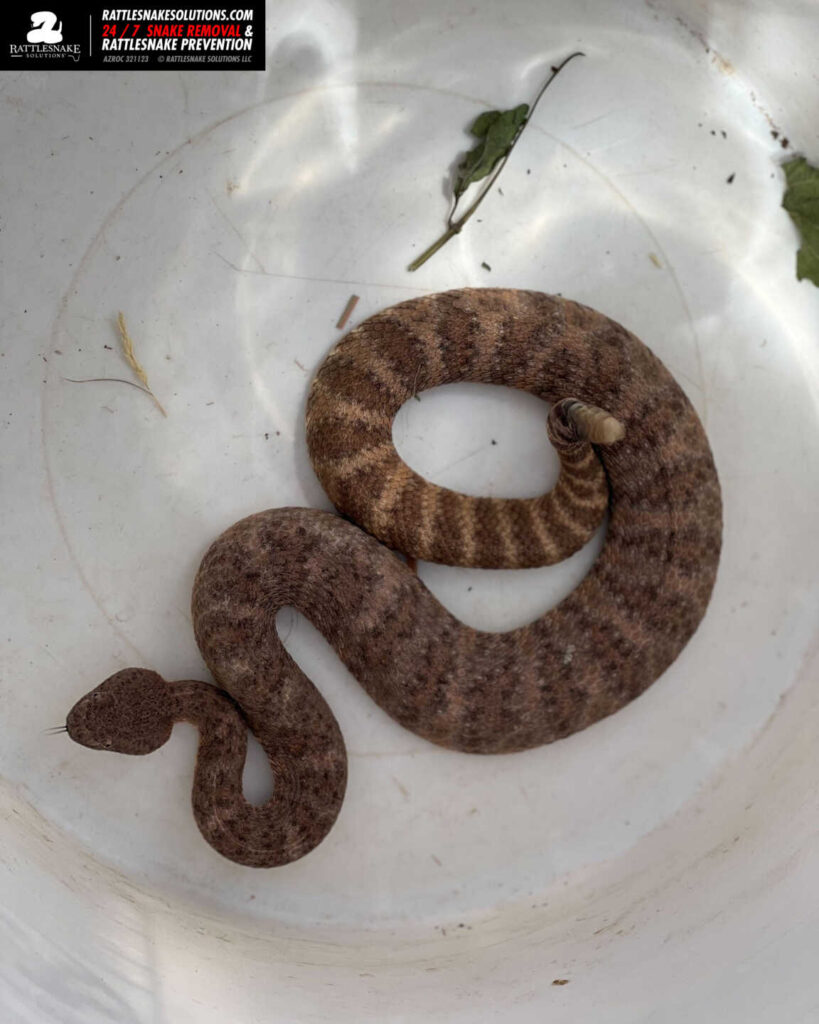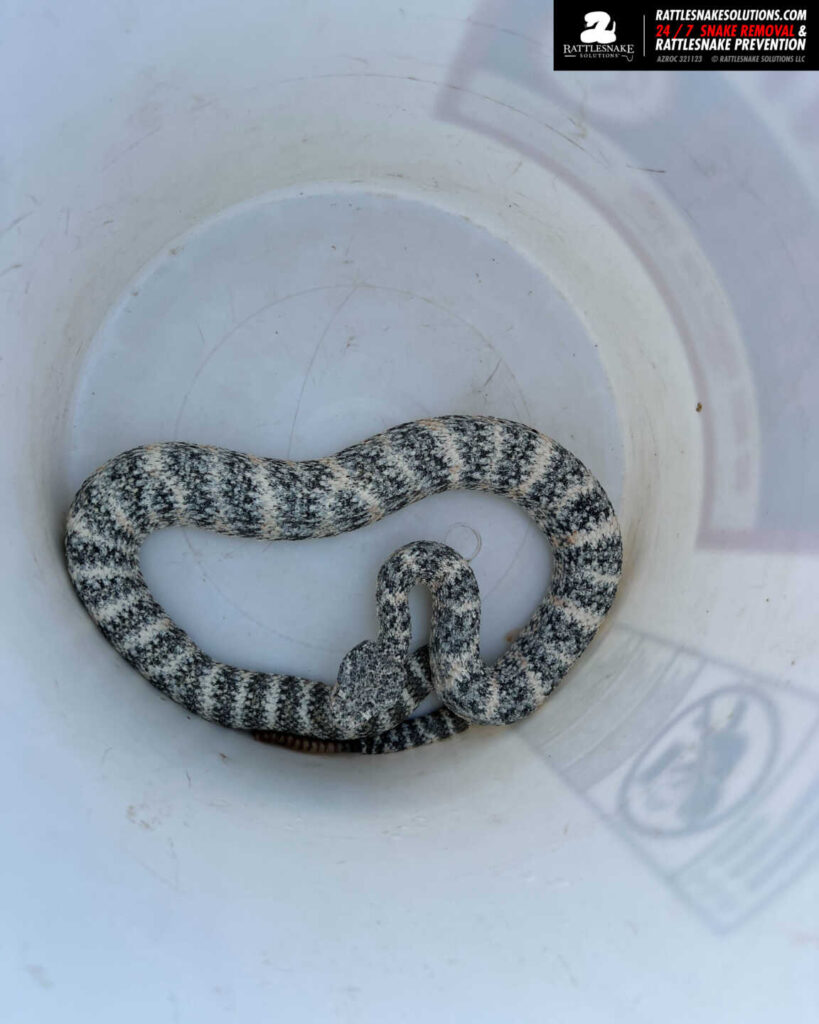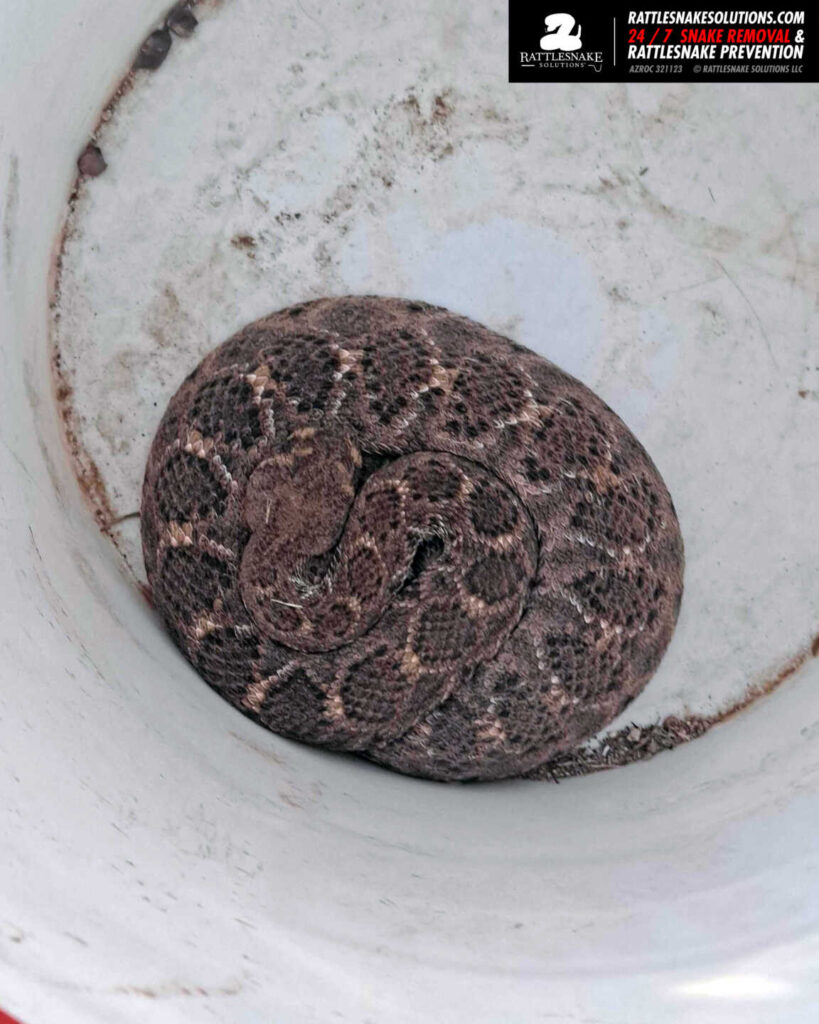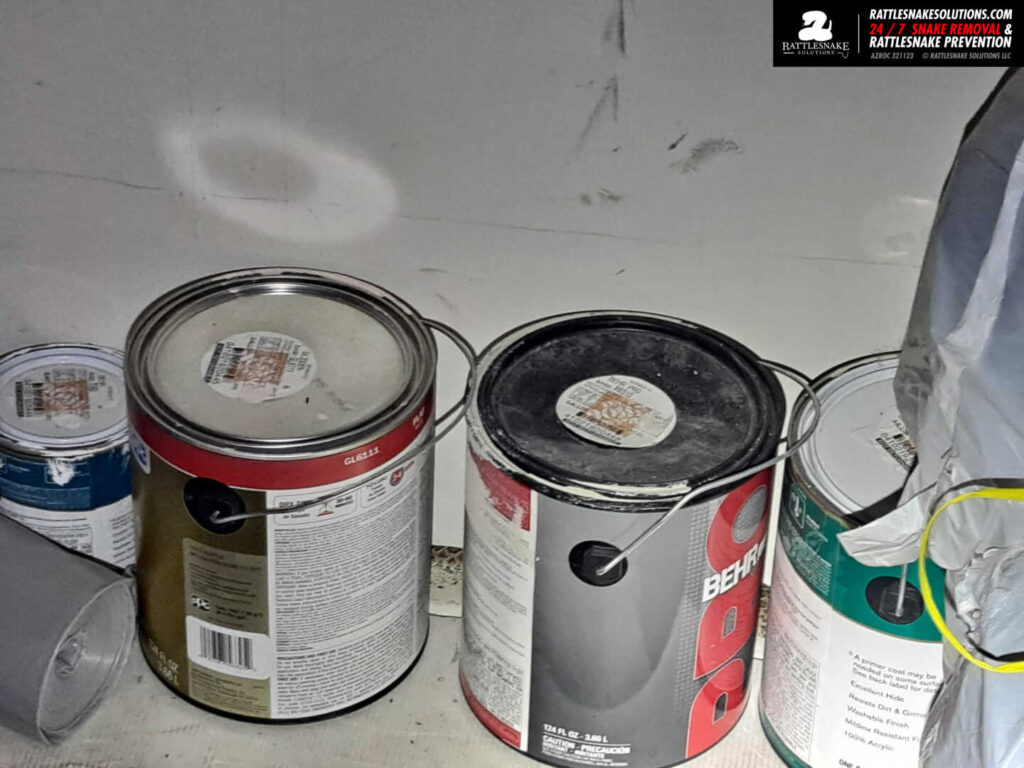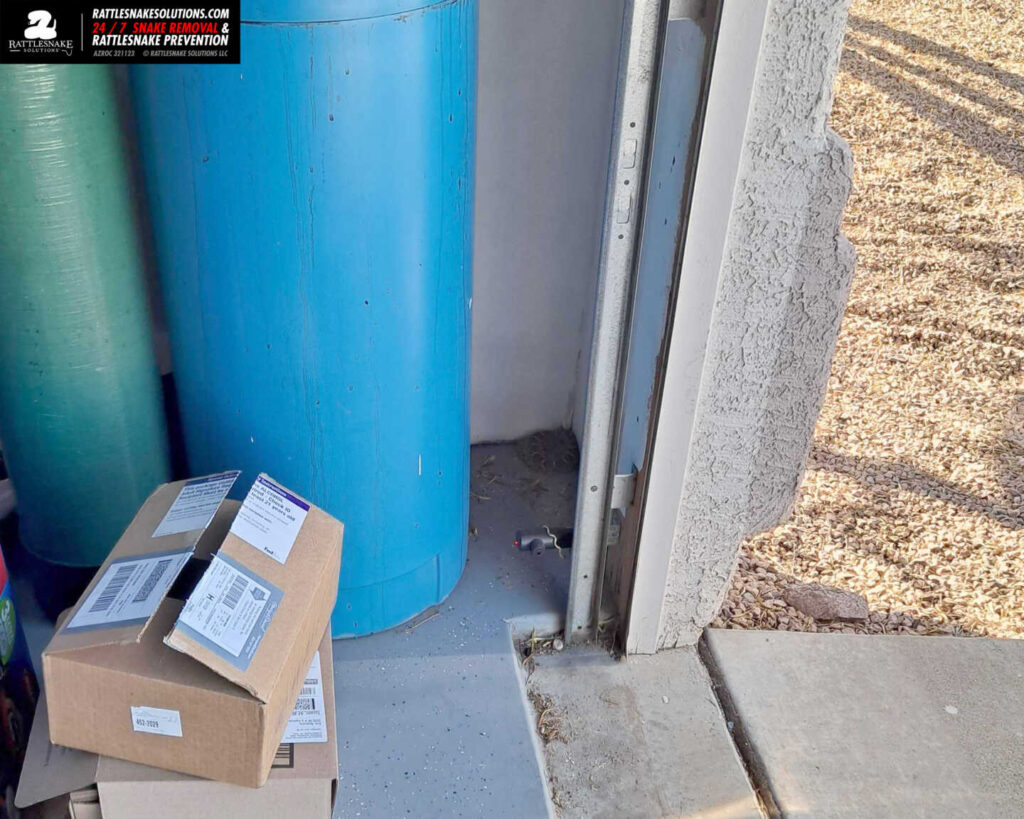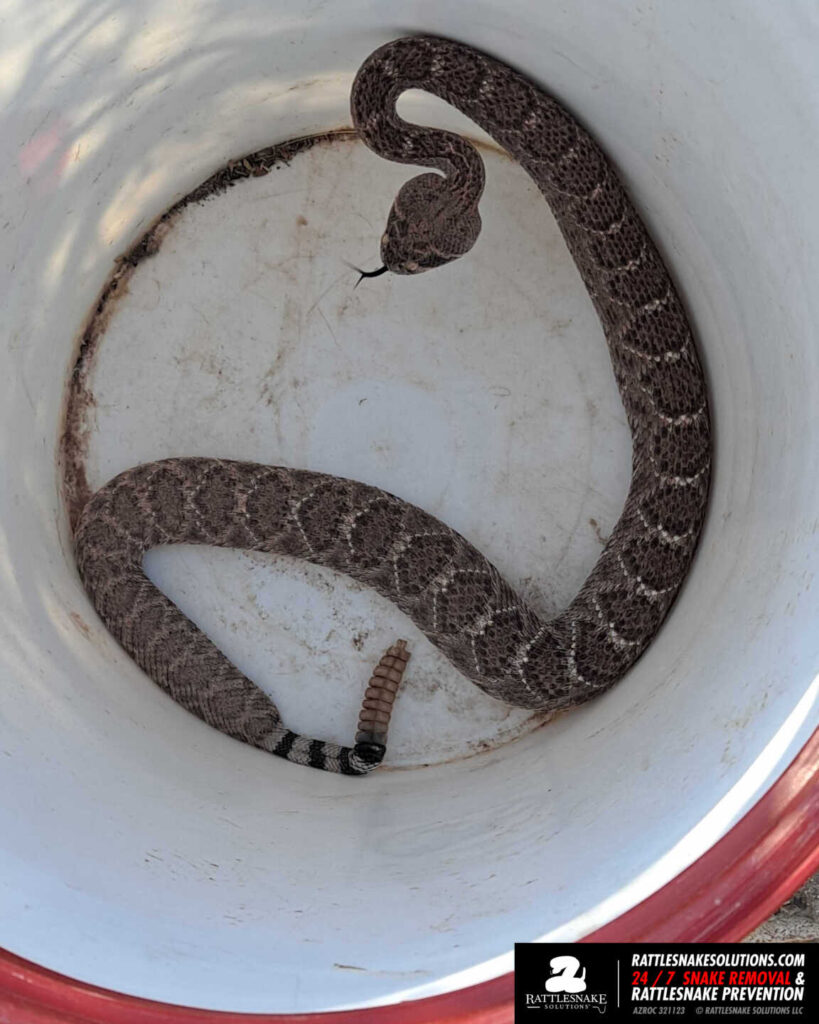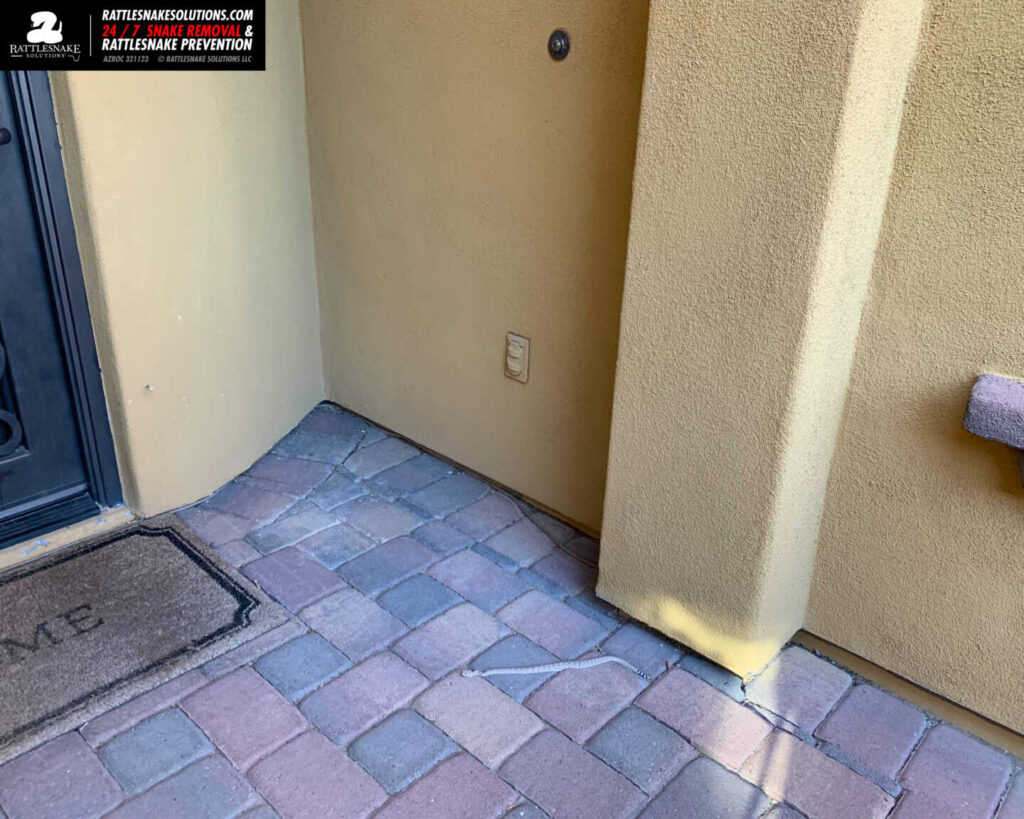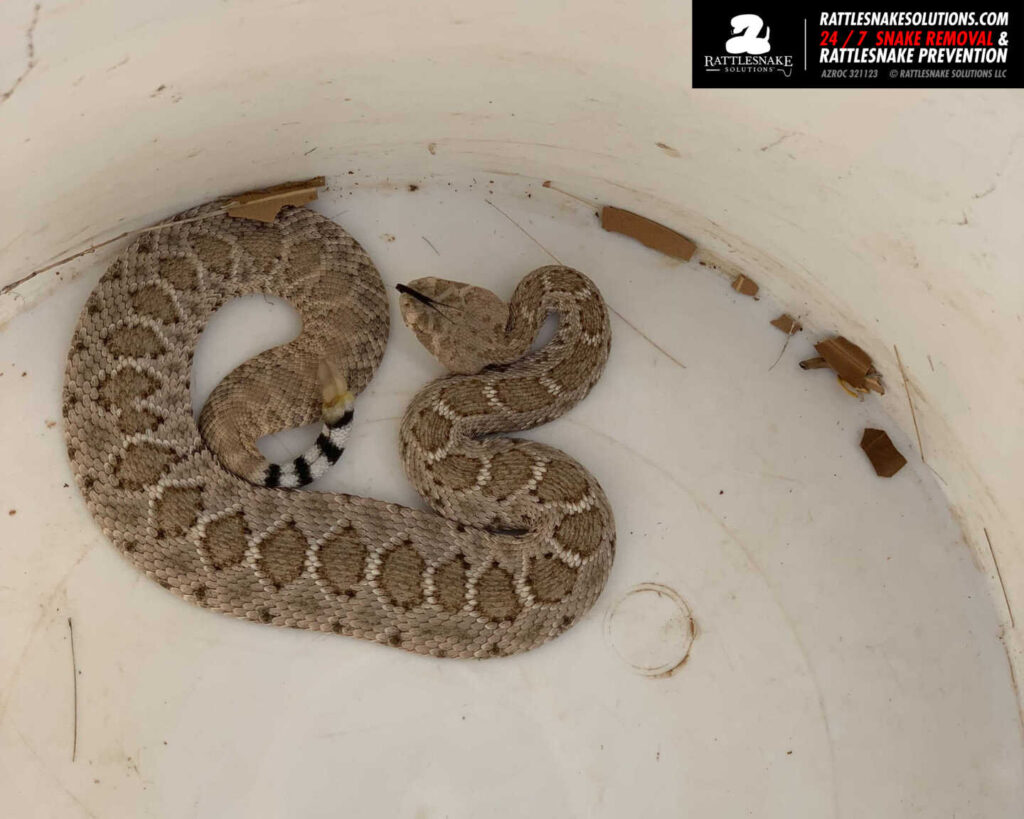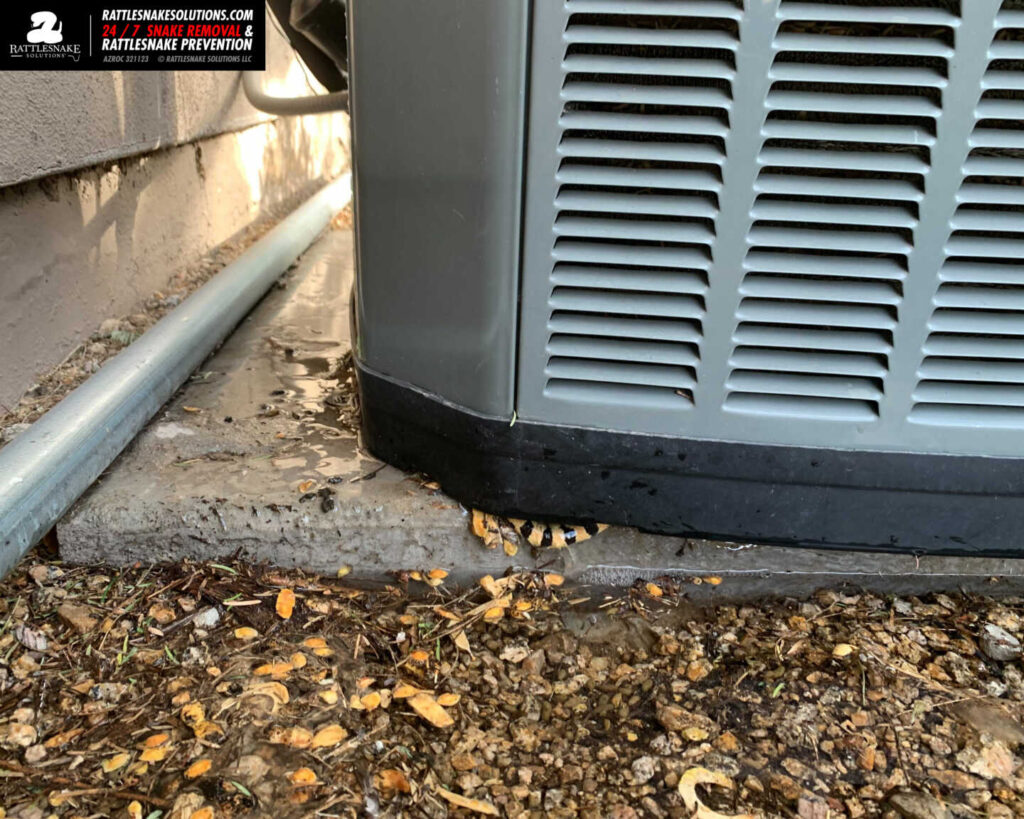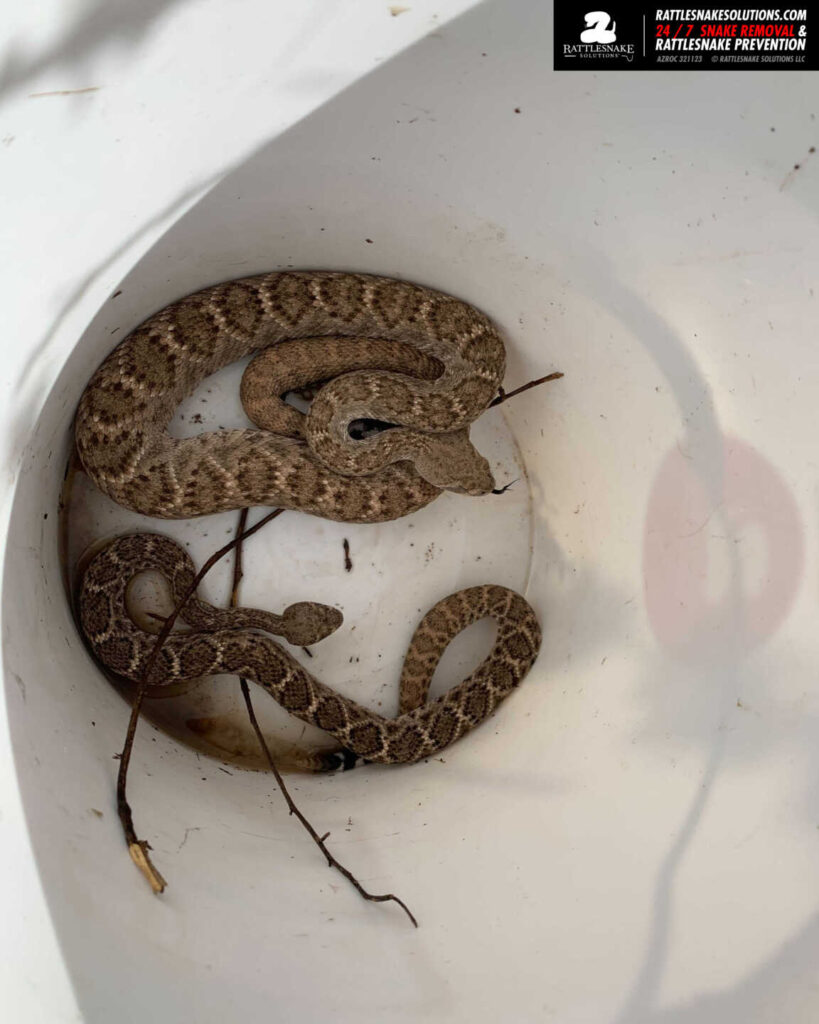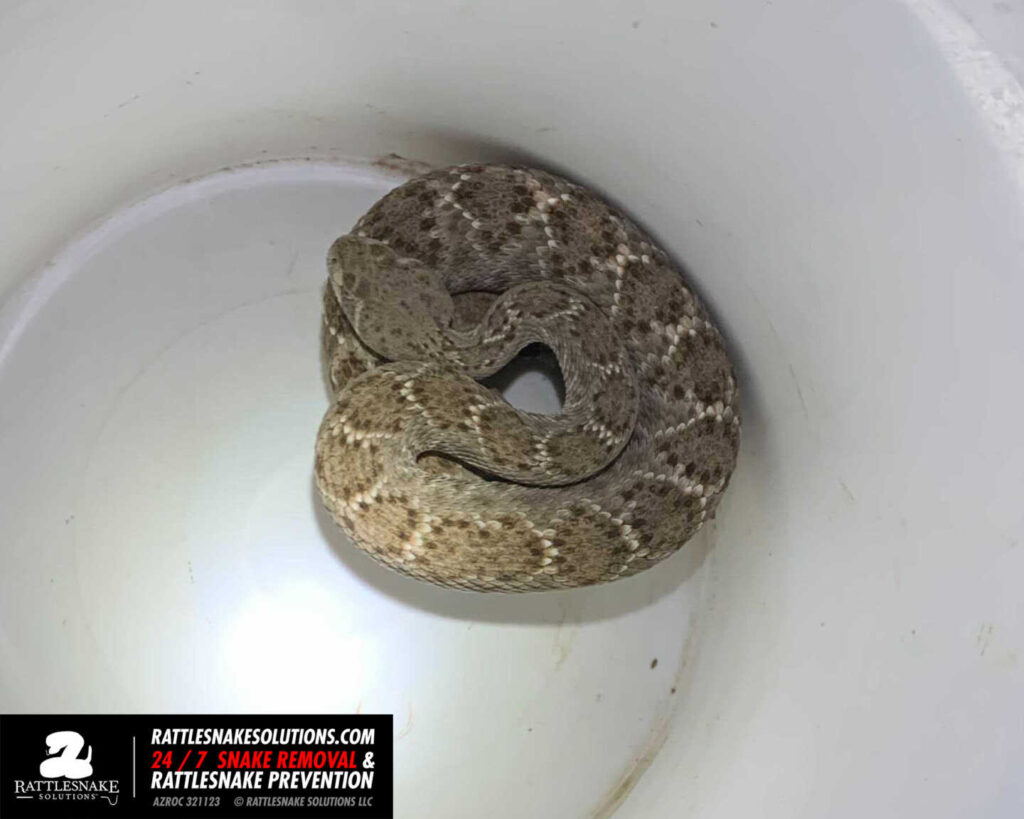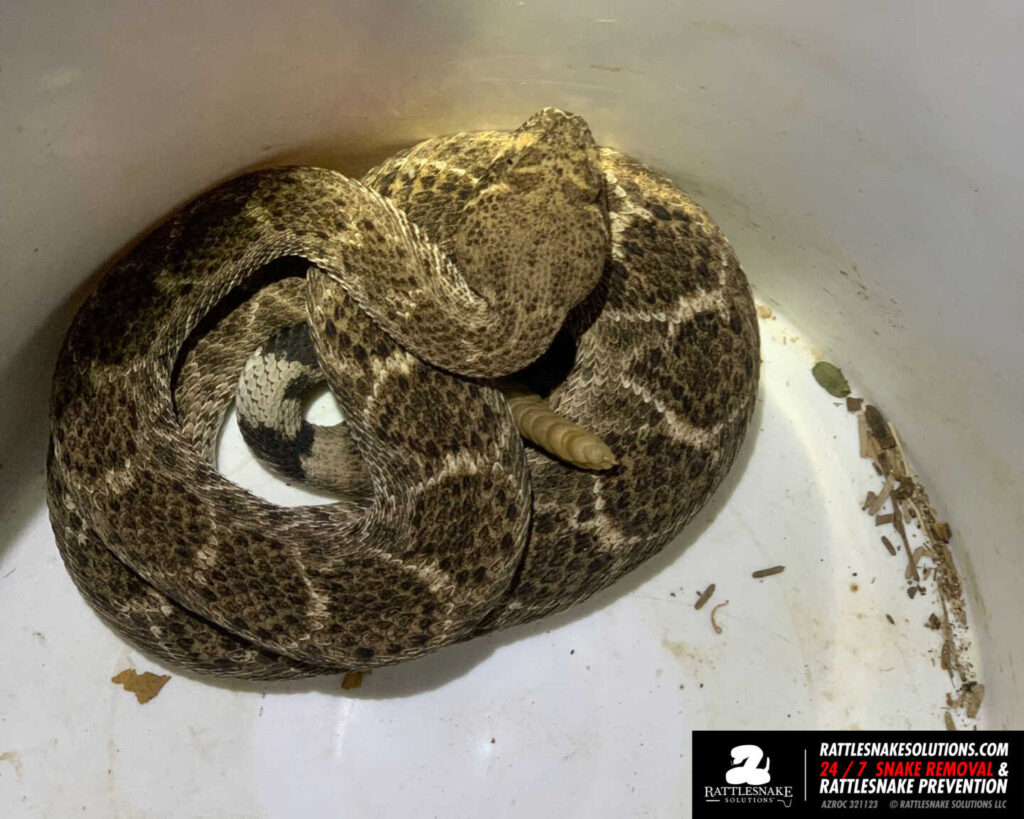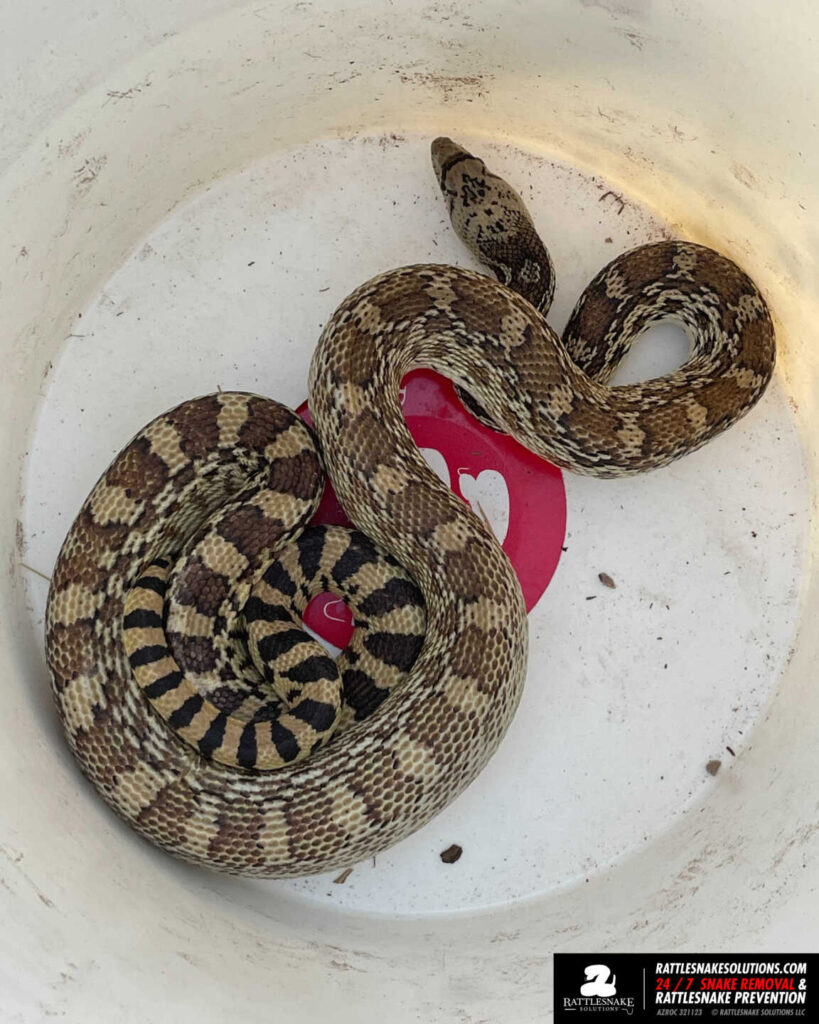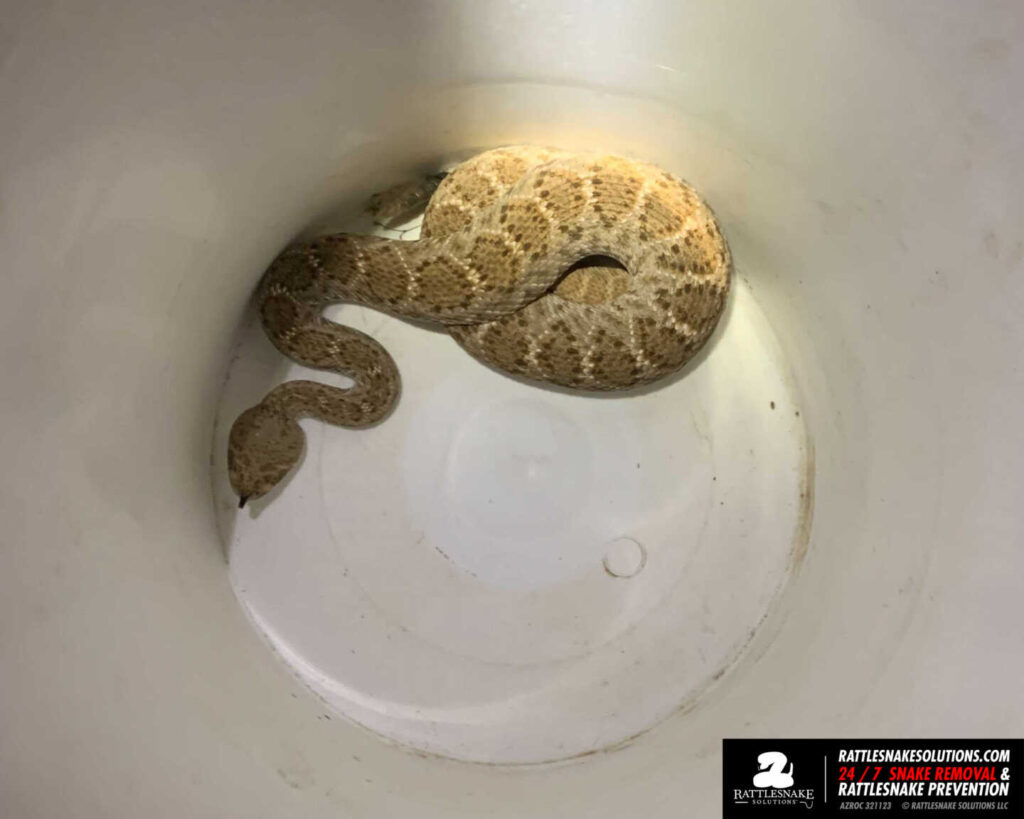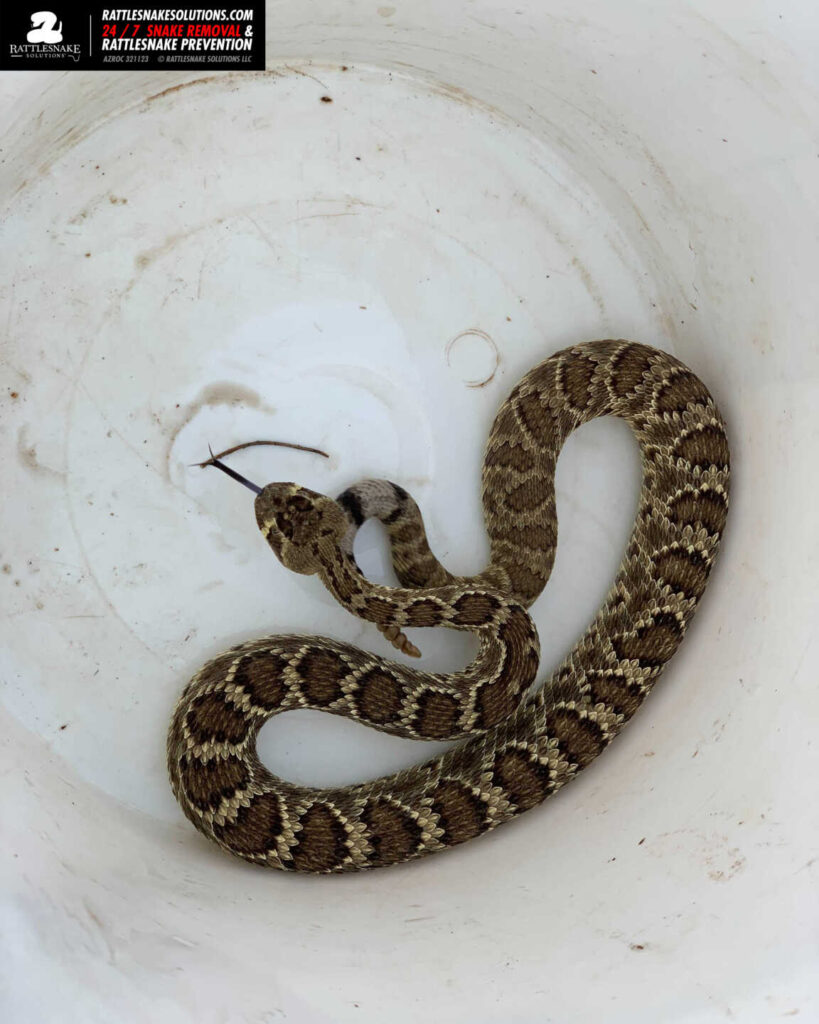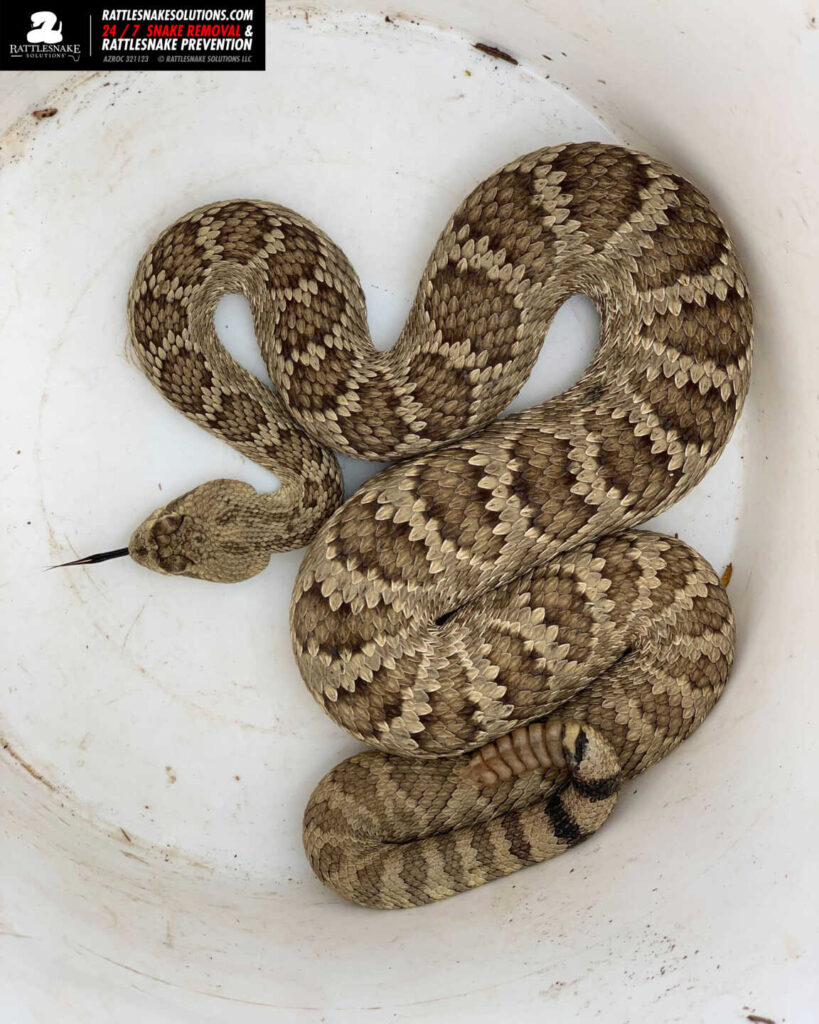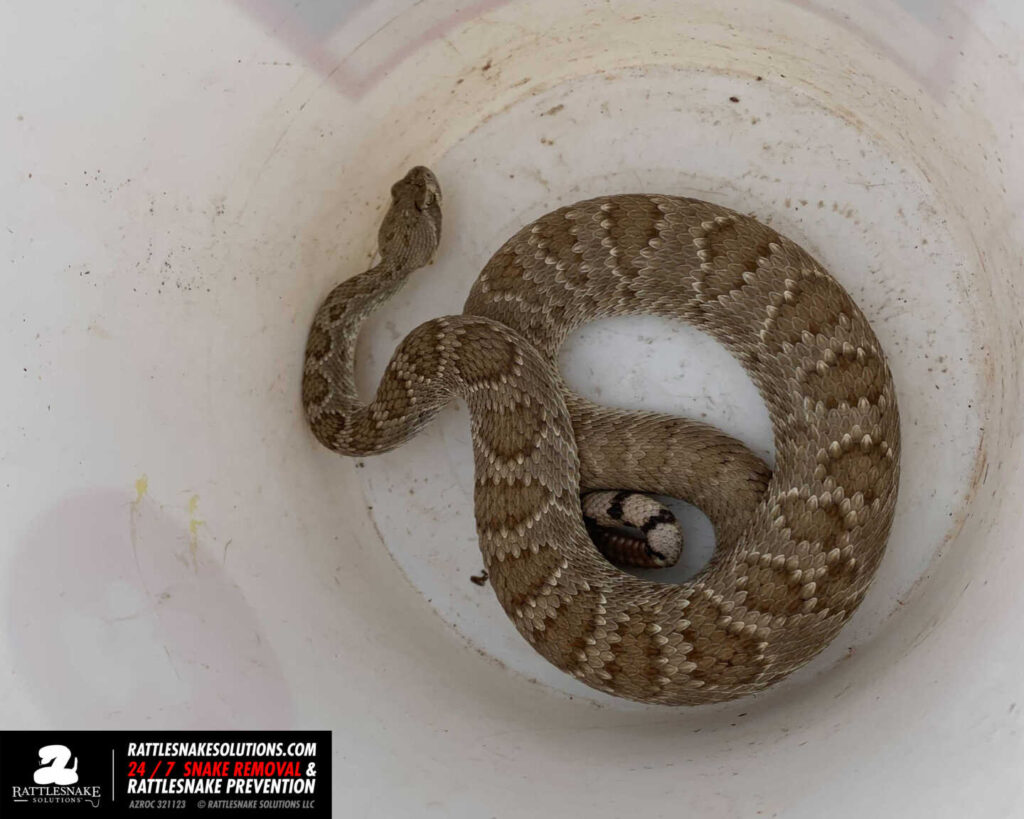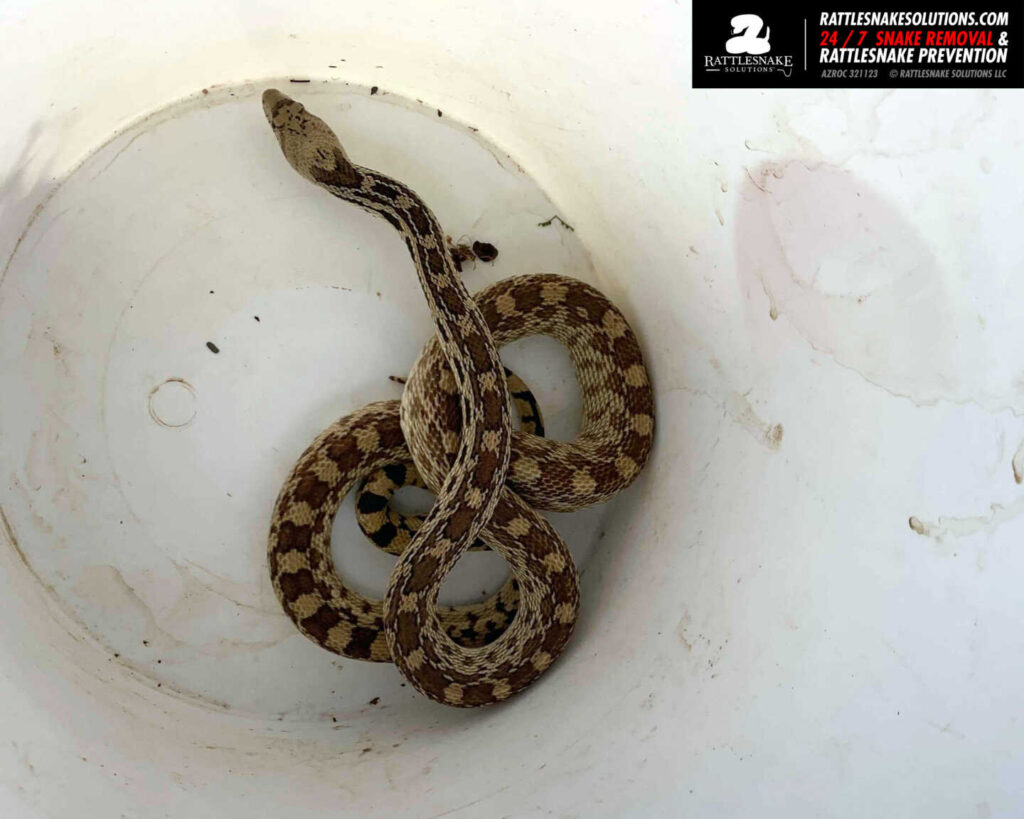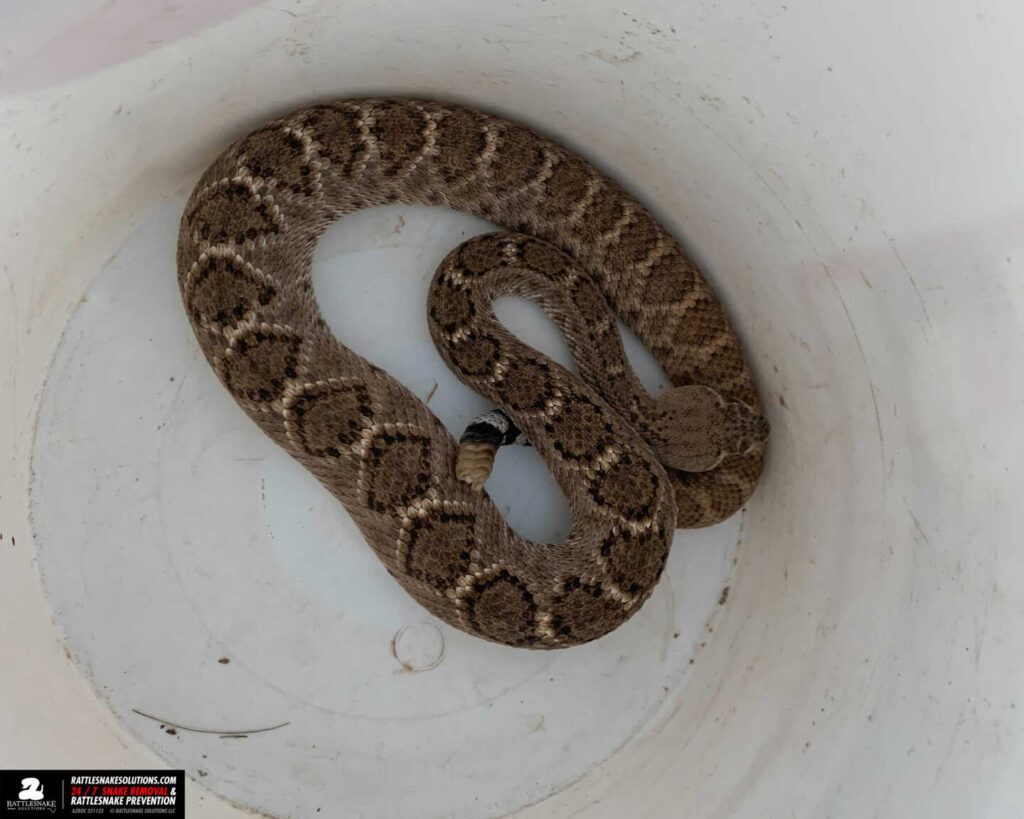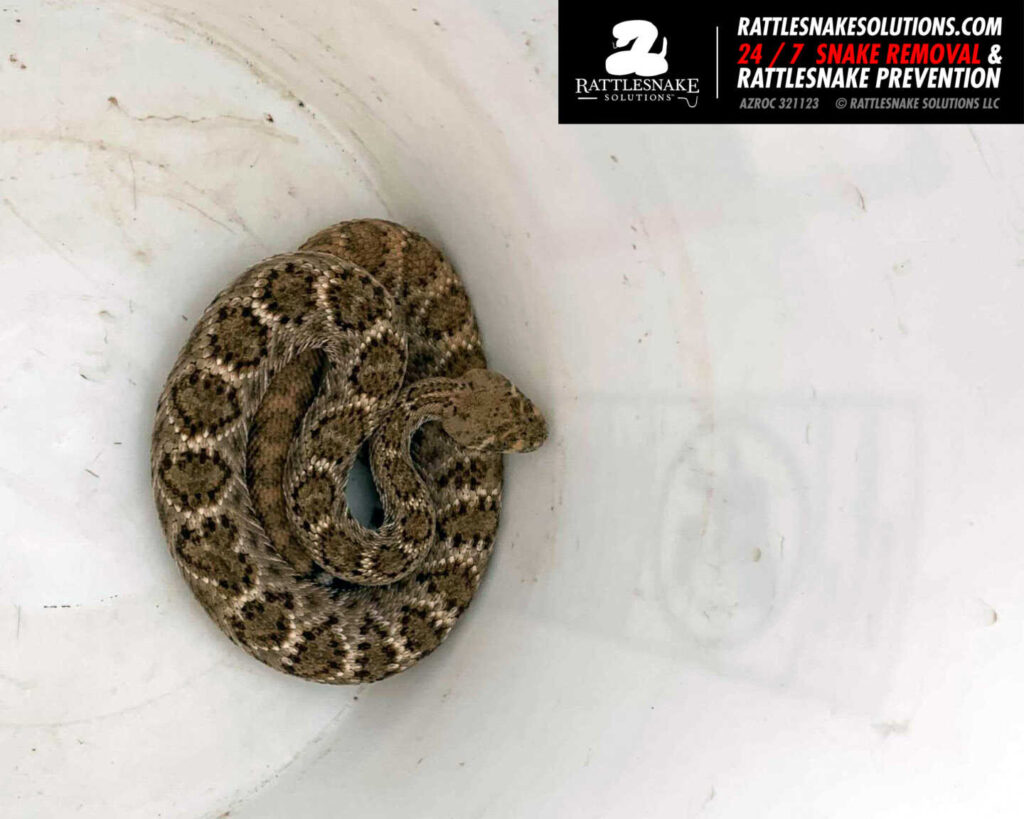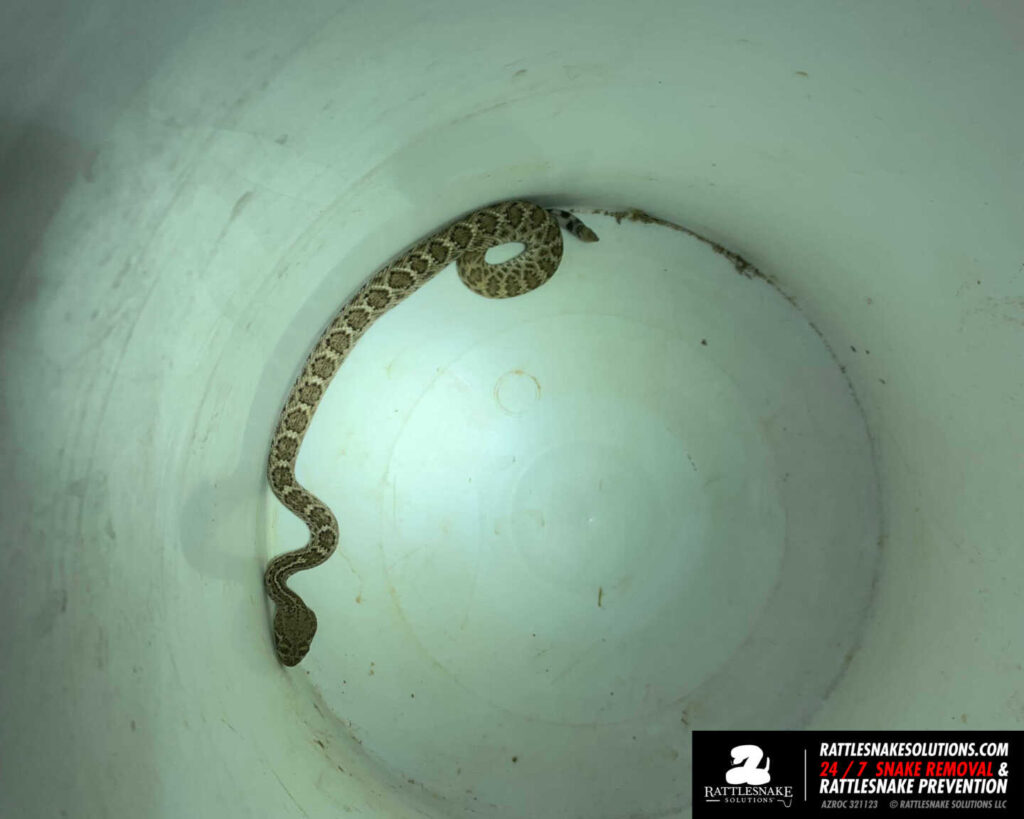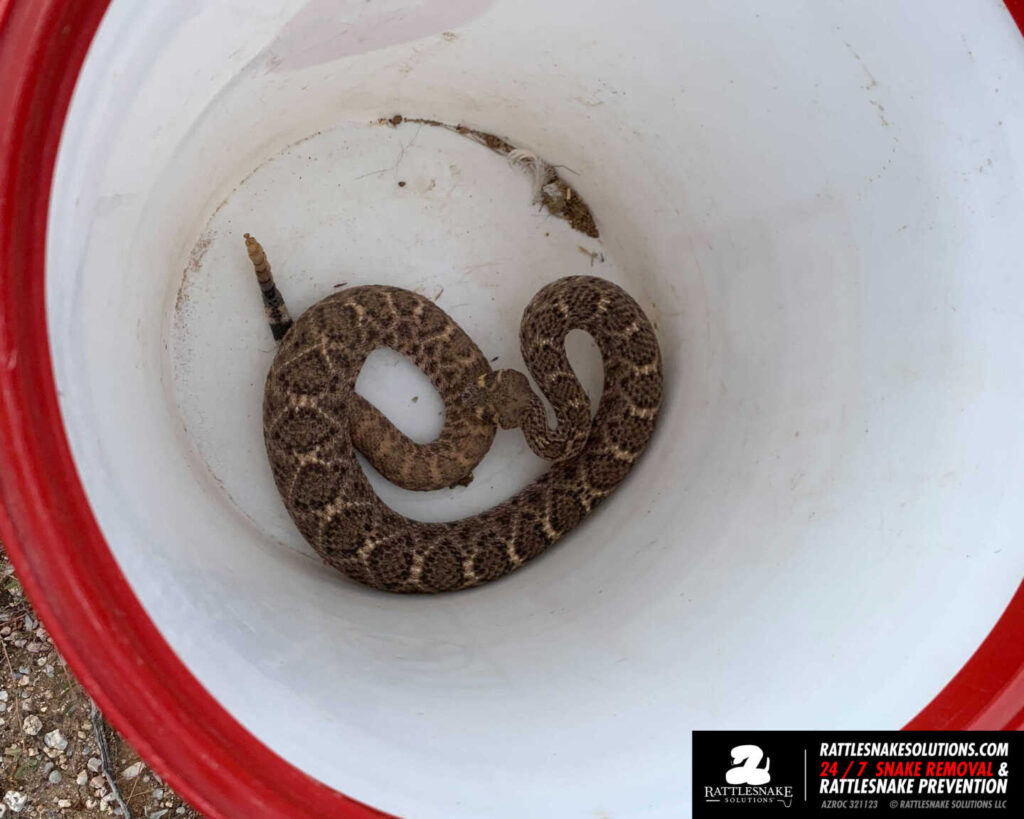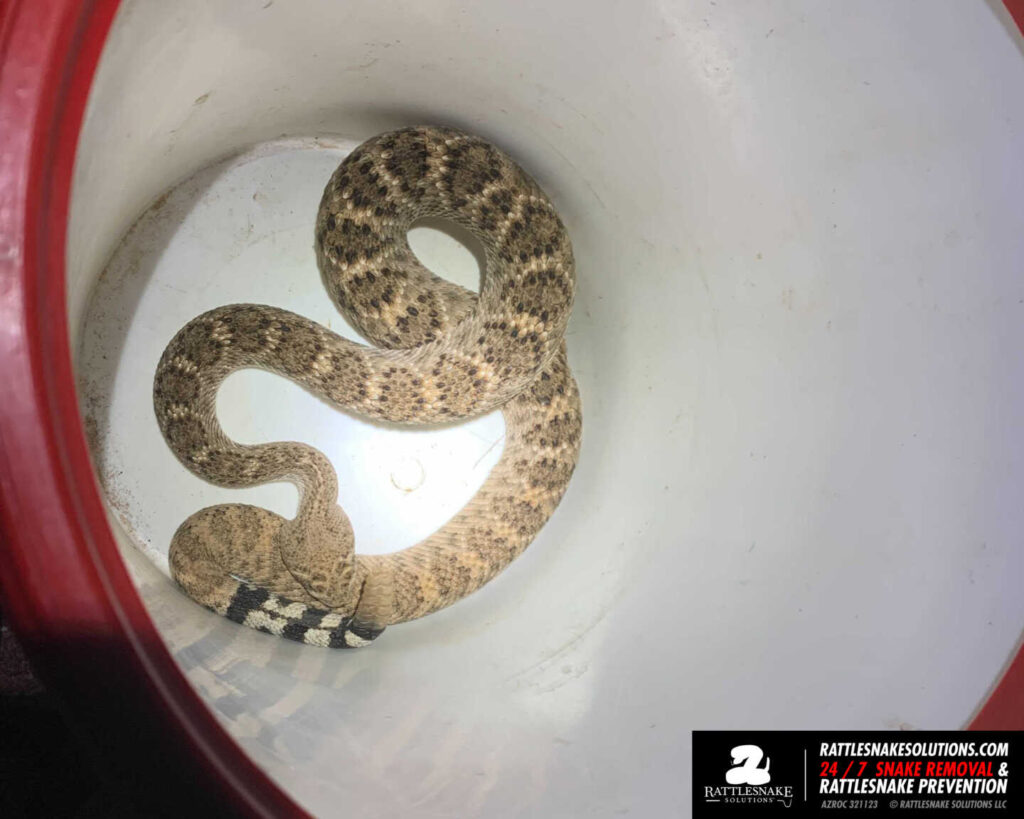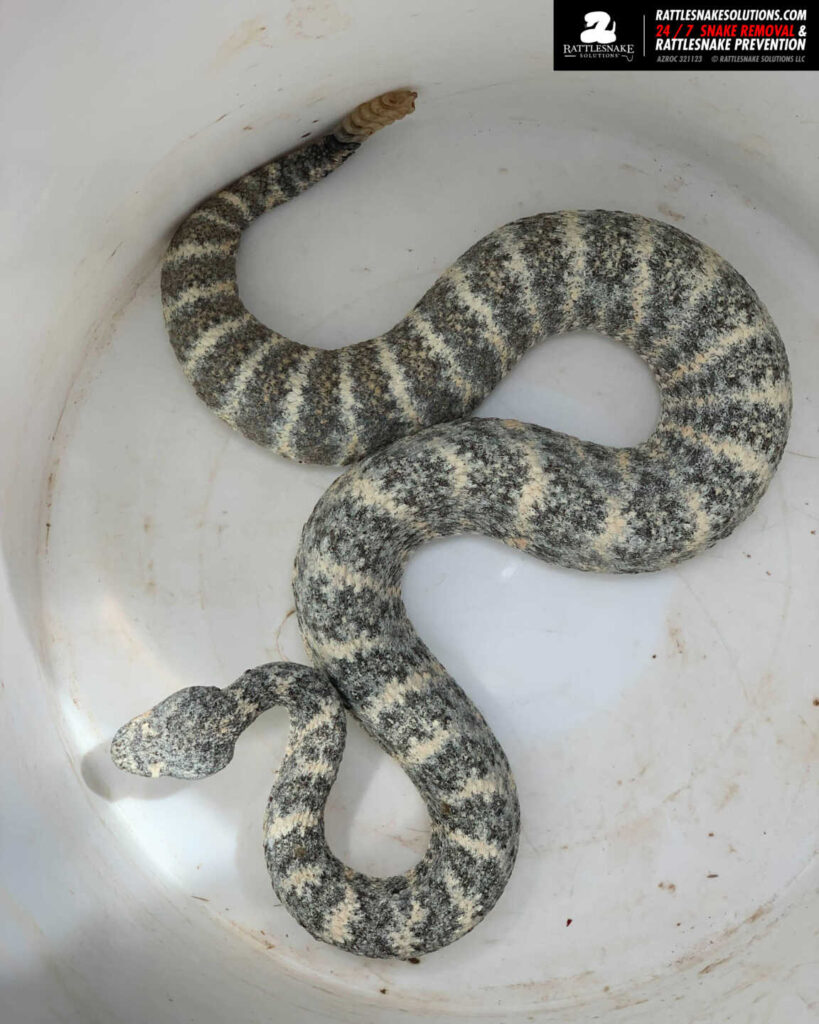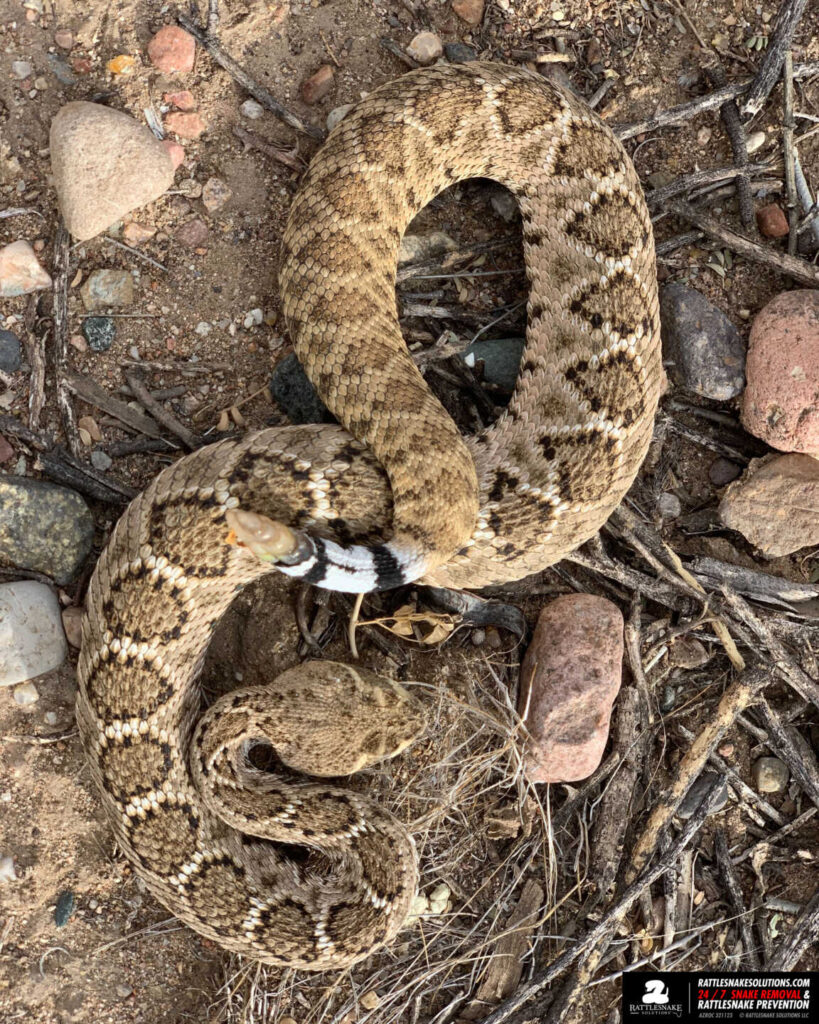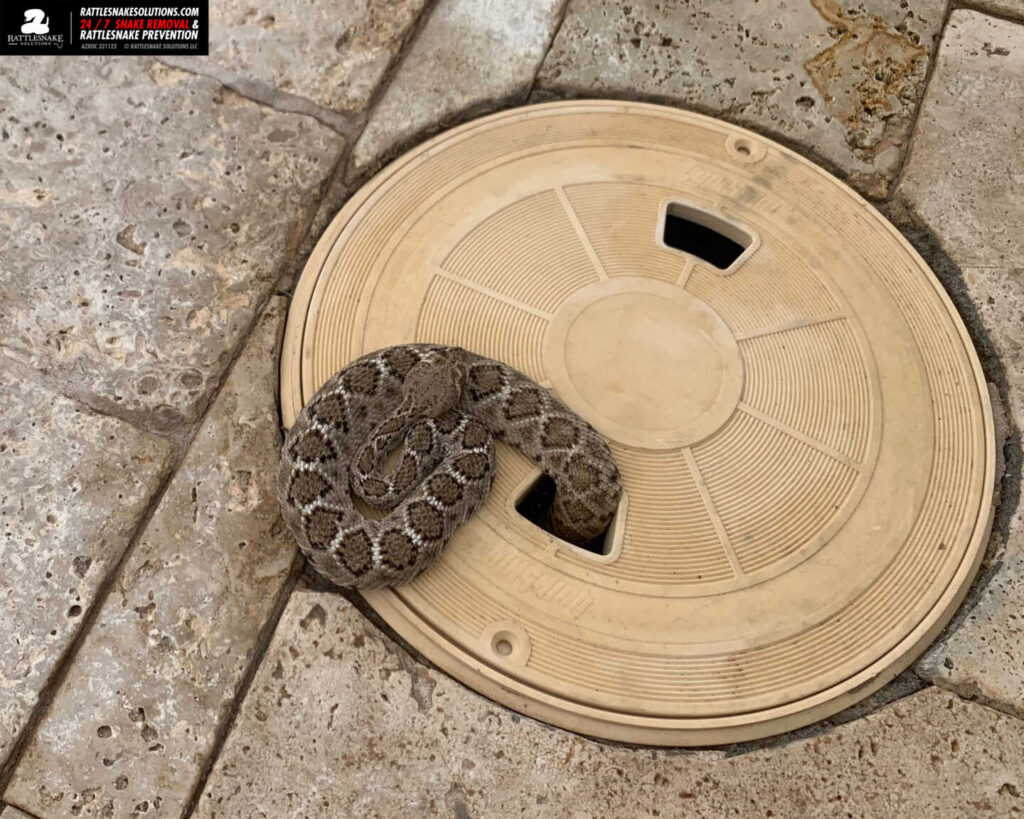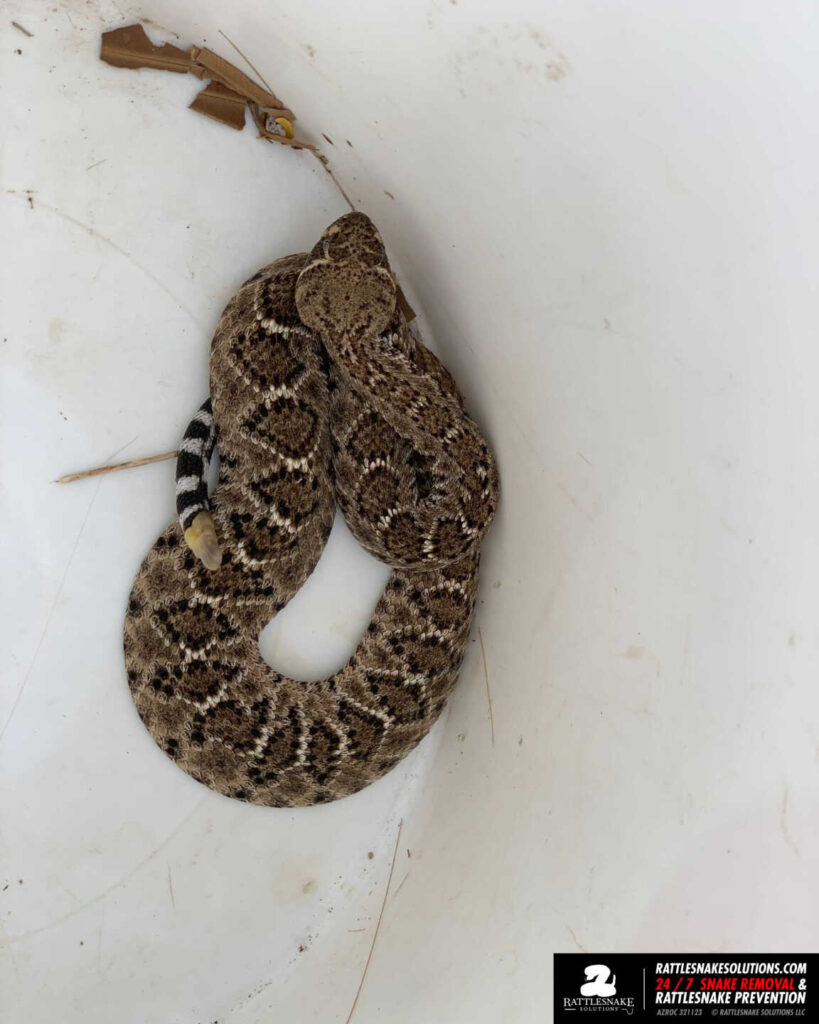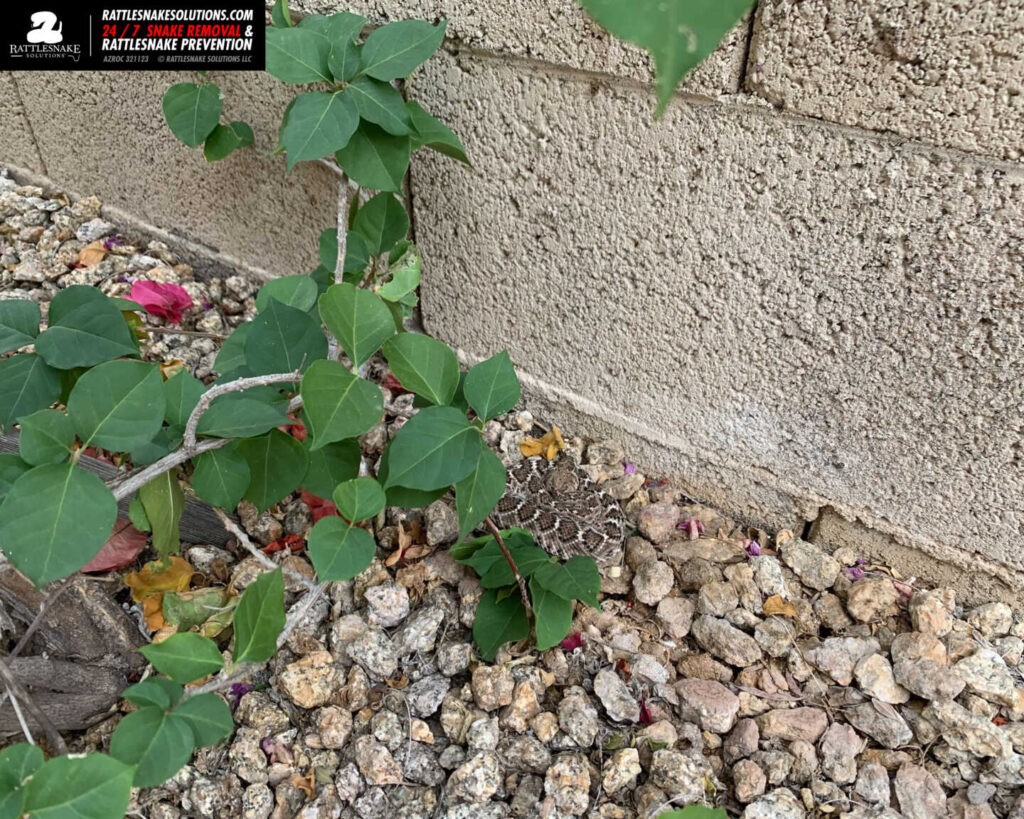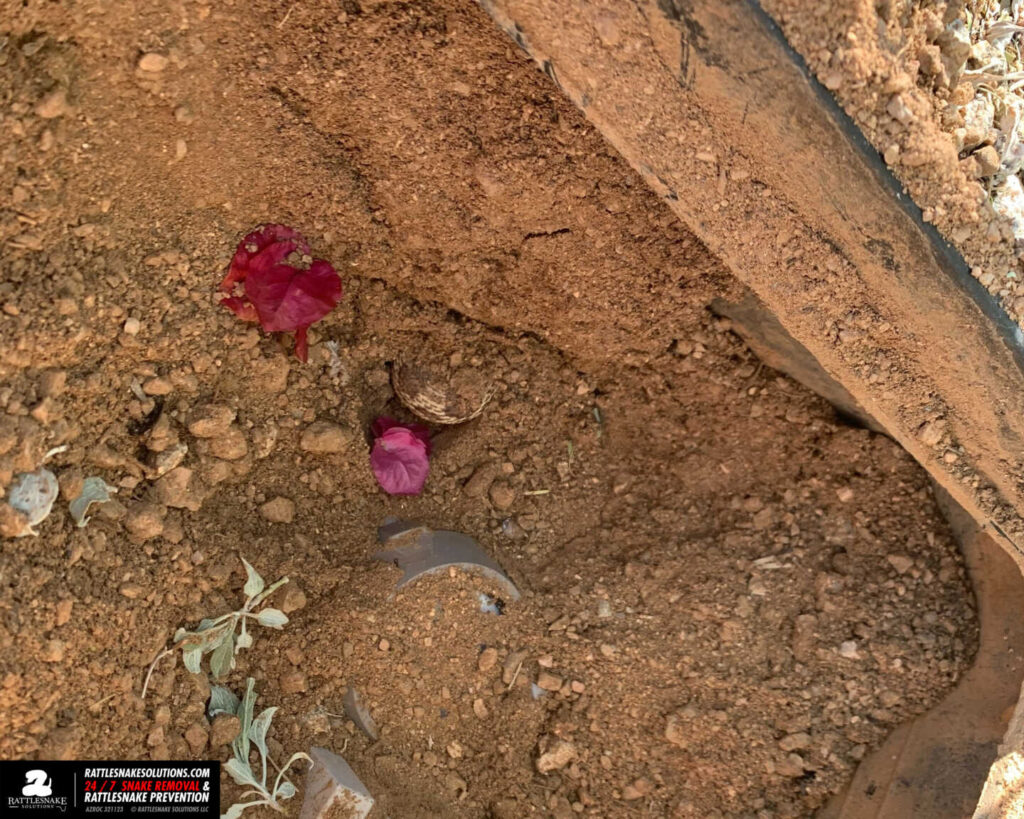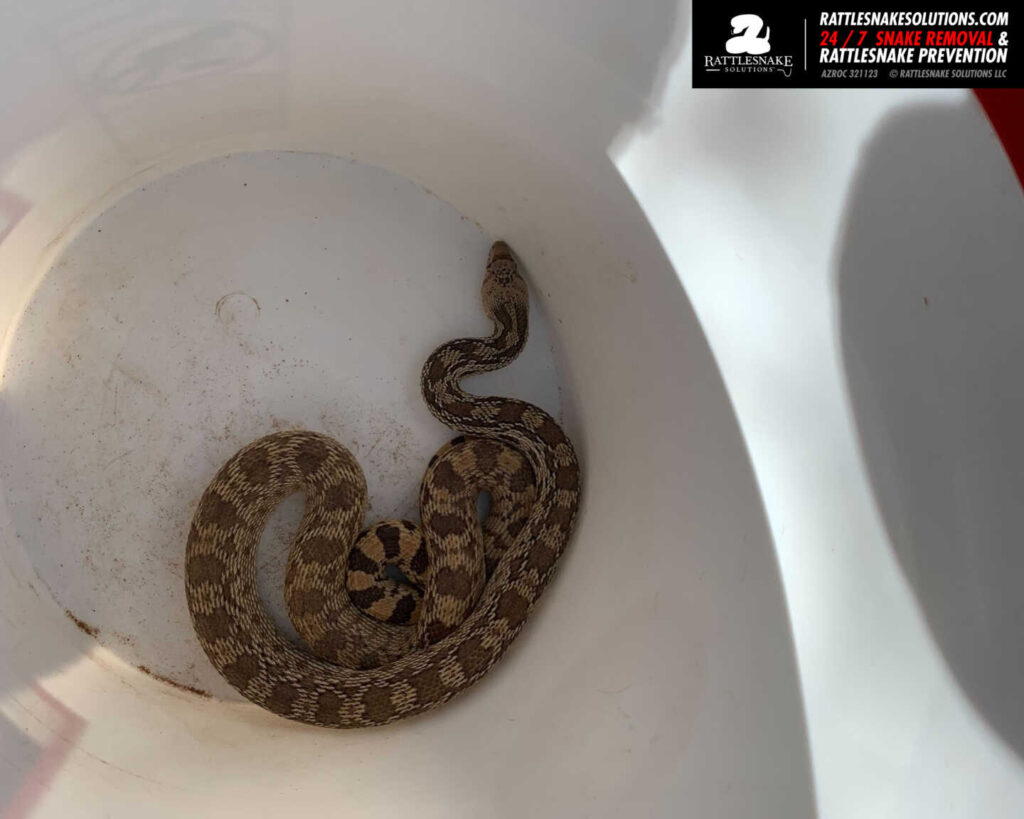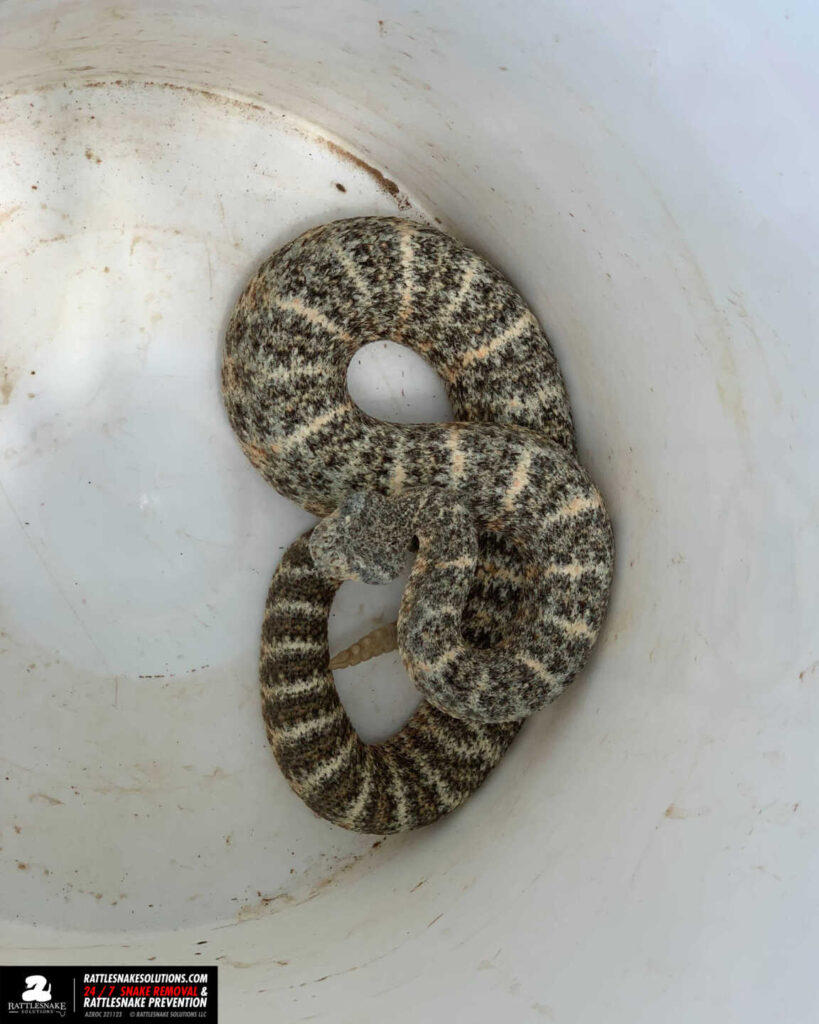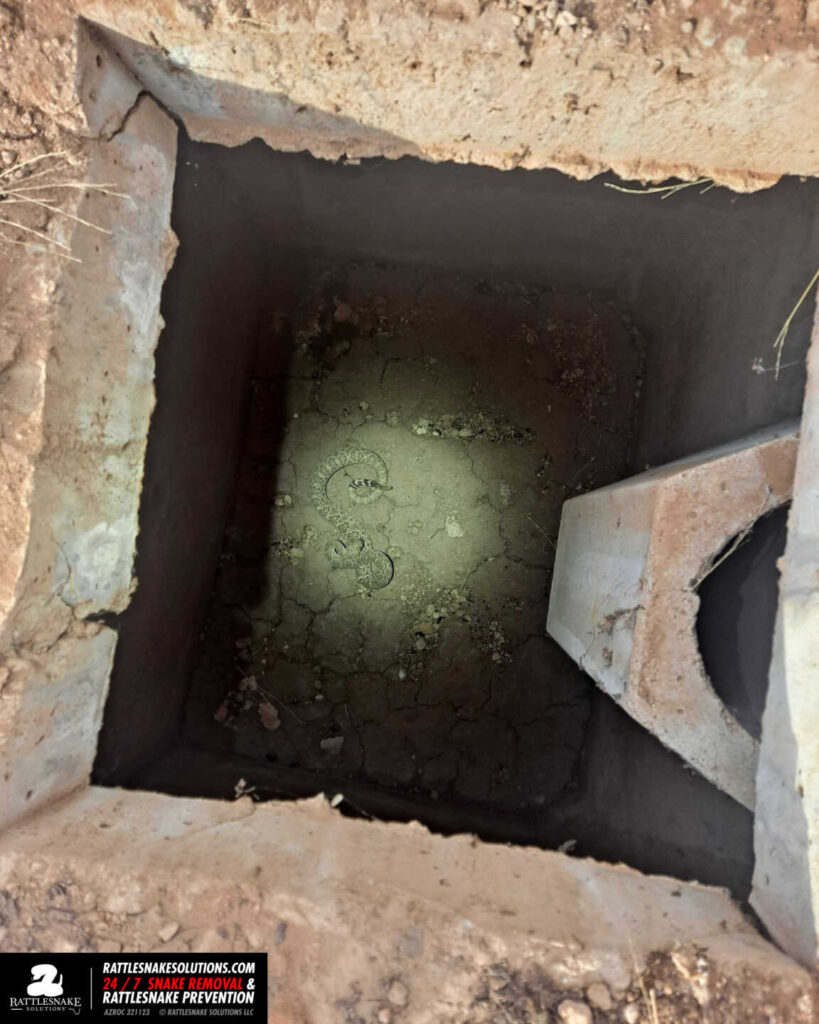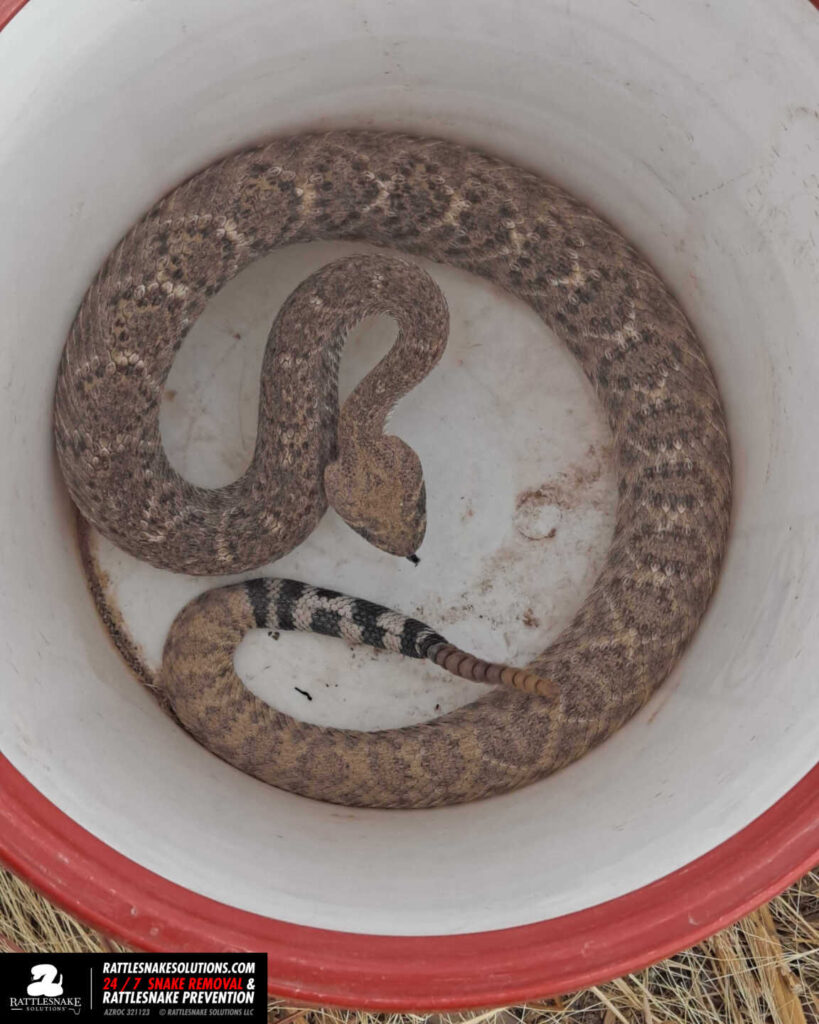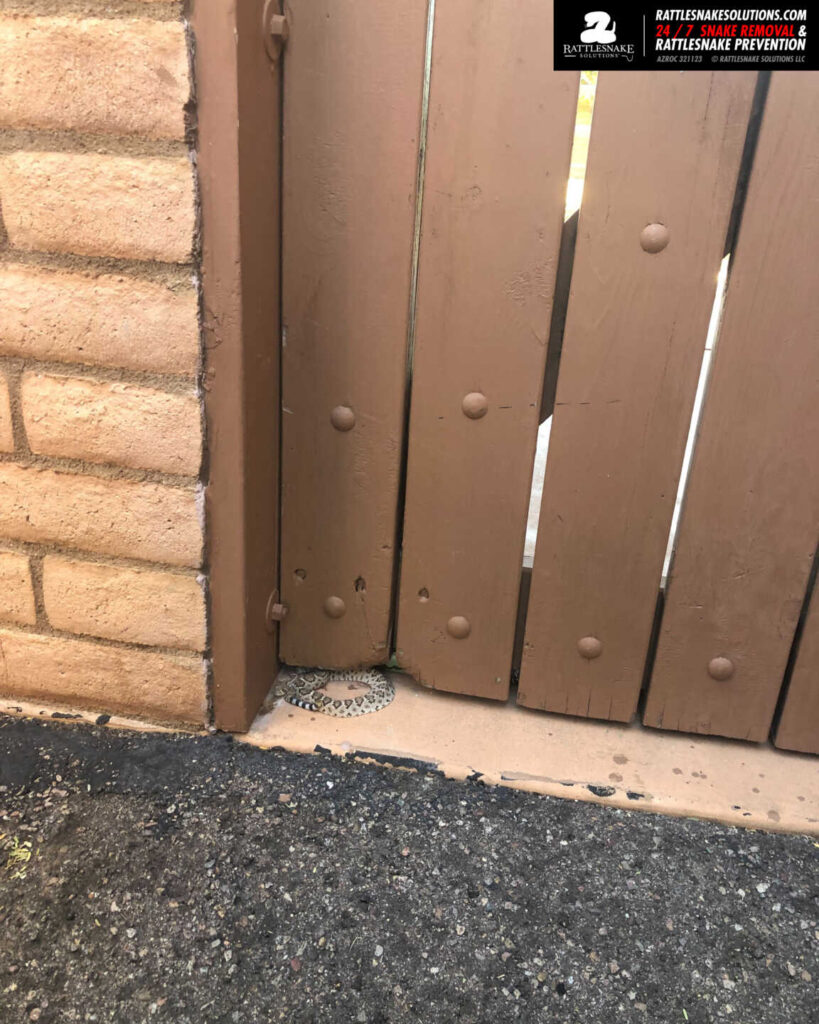Nothing to see here … just us cables.
This Desert Nightsnake (Hypsiglena chlorophaea) was found in a Marana home behind some furniture. They’re harmless, and often found inside homes like this for a variety of reasons. It was released back to better surroundings.

Stuff stored outside can be useful to a rattlesnake. Dave relocated this Western Diamondback Rattlesnake from a situation where it was taking temporary cover on the last cold snap of the year. He released it to a carefully selected location that emulates the conditions of capture.

CJ chased this Coachwhip around a backyard for about 5 minutes before it darted into a hesperaloe, where he spent anotherd 10 minutes trying to fish it out. He eventually got it into a bucket and relocated to deep cover within its estimated home range.

Even from this close, the rattlesnake fencing applied to this backyard is very difficult to see. It’s easy to forget about, and so are the rattlesnakes that used to spend time hanging out on that shaded patio.
More information on Rattlesnake Fencing: https://rattlesnakesolutions.com/keep-snakes-away/snake-fence.php?p=social

A coachwhip captured by Justin under a backyard grill. These fast snakes are harmless and even eat rattlesnakes, but this is one of the instances when moving it is undoubtedly justified (unless a dead snake under the grill is a new trending hobby).
More about why we sometimes relocate harmless snakes: https://rattlesnakesolutions.com/snakeblog/rattlesnake-solutions/why-relocate-harmless-snakes/


An employee at a storage facility went to throw the trash in the dumpster when she noticed this Western Diamondback Rattlesnake coiled in the shade. Glendale, Arizona.

A Western Diamondback Rattlesnake had been using this rock pile for at least a week, according to the homeowner, before she decided it was probably time to have it moved elsewhere. When Marissa examined the situation, she found a second rattlesnake also using it. This kind of erosion control is extremely attractive to snakes of all kinds, especially when piled multiple layers deep.

Newly applied rattlesnake fencing at this property in Tucson. Around the entier perimeter, no openings large enough for even the smallest newborn rattlesnake are allowed, including the gates.

This Western Diamondback Rattlesnake was hiding out in a little cave under a pool water feature. It took some work, but Marissa was able to get it out of there and to a better, more natural cave. This is a very common thing to happen in Scottsdale.

Lantana may be the most common landscaping feature in Arizona. It’s also incredibly useful to a variety of animals, including snakes. The tendency for this plant to be over-watered and leave a deep layer of decomposed leaf litter make it a favorite place to hide away. Here’s a Sonoran Gophersnake that was initially seen by the front door of a home, but went to hide in a lantana by the time Marissa arrived.


The “better mouse trap”.
This Sonoran Gophersnake was discovered by a pest control operator, having gotten itself trapped in a box intended for rodents. The injuries were, thankfully, superficial and it was released immediately.



A little Western Diamondback Rattlesnake taking it easy behind some bushes near a north Phoenix front door. This area is useful to rattlesnakes, providing shade and a source of moisture as we enter our brutally hot summer.

An old gate gets some new tricks: materials added to prevent entry by rattlesnakes from the tiniest newborn to the oldest and largest adults.
Licensed, bonded and insured (AZROC #321123) and guaranteed by two warranties.

A homeowner noticed something funny about the space between the door and walkway. She called us out, and Marissa was able to extract and relocate a small kingsnake.


A shady spot at a horse property made a temporary hiding spot after an encounter with a baby horse. Thankfully, everyone is ok, and the snake was relocated safely elsewhere.

A homeowner found a Western Diamondback Rattlesnake stuck in a glue trap in the garage. When Marissa got there to rescue it, she also found a Desert Spiny Lizard. Thankfully, both were rescued.



The landscapers saw these two big gophersnakes under a tree. The area is entirely urbanized with no nearby native habitat, but a golf course provides a good life for these snakes. Gophersnakes are one of a handful of species which have thrived in entirely developed parts of the city.

This Western Diamondback Rattlesnake was found enjoying a nice day on a Cave Creek patio. It was relocated to a better location.

Some Western Diamondback Rattlesnake variety from recent relocation calls. This species is, by far, the most common snake we are called to relocate.




A recently completed rattlesnake fence installation in Tucson. Each property has its own challenges, and others are more by the book. In each instance, the standards necessary to prevent a rattlesnake from climbing or squeezing in are the same, and we find a way.




This Sonoran Sidewinder was found in a developed part of Peoria, the entirety of its native habitat newly converted to homes. How it survived in this area for so long is a surprise. These snakes are highly specialized and do not do well in new situations. The relocation needed to be further away than we’d prefer, but these quickly expanding areas of the valley give no options.


From Marissa: “A week prior, the homeowner was in her garden, and she said she nearly touched this rattlesnake. They thought it had left but discovered it coiled by the AC unit. This snake was a good mile from some desert. It had to cross a lot of homes and a busy road to get to this home. There was only one tiny area at the gate where it could get out, so I think it was trapped more in the backyard. Scottsdale.”

While relocating the Western Diamondback Rattlesnake (in the bucket), Nik found another rattlesnake out in ambush on the way. He also found this cool little snake that we rarely see.



Nathan and Michael did an amazing job on this new installation near Tucson. The amount of work that goes into properly installing rattlesnake fencing around a property like this is crazy. Soft soil and chain link fence are prone to rodent digging and erosion, so every bit of steel installed needs to be not only trenched in deep, but done so in a way we’ve figured out that stops rodents from even trying to get in.





From CJ: “Little Western Diamondback Rattlesnake from a repeat customer’s home. This was the customer’s 2nd snake in about a week, and they reported finding it in the same spot as the first- in a corner of the patio under a drainage pipe on the north side of the home. By the time I got there it had moved across the turf and found refuge under a play slide. Relocated to an old pack rat midden underneath an ironwood tree in nearby habitat. Scottsdale.”



This Southwestern Speckled Rattlesnake was relocated from a home in Paradise Valley. There are a number of drainages in the area where the rattlesnakes have had their rattles removed. While it can’t be said for sure, I suspect human involvement.

A Western Diamondback Rattlesnake removal in Tucson gathered a small crowd before Nik got there to assist. The snake had sustained a tail injury from rocks thrown by an onlooker. Fortunately, the wound was superficial and the snake was released quickly after capture.

A courtyard gate modified to keep rattlesnakes out. Brent used low profile and color matched materials to make sure the entryway looks just as good as before, but with some new tricks.

A homeowner who’d just moved to Arizona called to have a kingsnake relocate. As Nik was explaining the harmless and beneficial nature of the snake, he spotted a second kingsnake from the corner of his eye. Both were carefully located to a location within their estimated home range, suitable for the season and conditions.

A Western Diamondback Rattlesnake was seen sitting in the cool grass in full sun, then made a slow crawl to the shade. That’s where it was when Dave arrived to relocated it to a better aestivation location.

Patios shaded by an overhang, especially north-facing, are common locations to find rattlesnakes during the summer. These situations emulate the natural shallow caves in drainages and deep canyons they use for the aestivation period each summer. Dave relocated this one from a home near Tucson recently, taking the snake to a deep packrat nest: another common microhabitat for this heat-avoidance activity.


The view from a backyard that won’t have any rattlesnake visitors. When even a short distance away, the materials used become almost invisible.



30 YEARS at this home, and this homeowner had neither seen a rattlesnake or heard of one in the neighborhood. With no natural desert within 5 miles, this snake is one of a likely small population that exists largely undetected within the large, heavily landscaped properties. This is similar to other situations we have found where Western Diamondback Rattlesnakes can survive in secretive groups within entirely developed areas.

A pair of large California Kingsnakes that Jeff recently relocated from a Gilbert property. While the smaller female was being watched by the homeowner, the larger male crawled right past his feet to sit with join her. Both were released together to carefully selected, seasonally appropriate microhabitat within their estimated homerange.
More about why we sometimes relocate harmless snakes: https://rattlesnakesolutions.com/snakeblog/rattlesnake-solutions/why-relocate-harmless-snakes/





A beautiful young Mojave Rattlesnake from an expanding neighborhood in south Tucson. This little one sat like this while the homeowner watched until Nik arrived to move it elsewhere.


A big upgrade for this backyard: no rattlesnakes! Alongside passive methods like habitat reduction and landscaping changes, properly installed Rattlesnake Fencing is part of a safe and sustainable coexistence alongside native wildlife.



A rodent trap and the yet-to-be-improved-upon original.
Nik resolved this situation in a backyard in Tucson recently.

As they usually do, a Western Diamondback Rattlesnake took cover in a patio fridge/grill structure. These stand-alone units often provide easy cover for all kinds of animals, which includes rattlesnakes.

A beautiful cornsnake was spotted cruising around a Gilbert backyard. This is an escaped or released pet, and not what Marissa expected when heading out to capture an orange snake. It was taken to a local reptile shop which specializes in these kinds of pets so that it could be placed in a new home.

Materials added to this view fence, along with work on the gates, drains, and other entrances, will make this backyard less rattlesnake-friendly this year.

A small Western Diamondback Rattlesnake takes advantage of some shade before the area resembles the surface of the sun a few hours later. Summer is challenging for animals, and it’s no wonder they take advantage of generously supplied cover and water through unsealed backyards.

The family dogs discovered this Western Diamondback Rattlesnake taking advantage of a shaded patio. The homeowner was alarmed by the commotion, and thankfully, she got everyone inside before anyone was hurt. The snake was relocated to a safer situation for all involved.

Recent Western Diamondback Rattlesnake captures showing off some of the variability of pattern and color. Even within a small location, these snakes can be surprisingly diverse in appearance. All were relocated to carefully selected microhabitats based on the season and conditions.




Point of view from a backyard that rattlesnakes are unable to enter. The steel mesh installed by our Tucson team is nearly invisible unless you’re looking for it specifically. There’s a lot that goes into it, and we’re lucky to have the most experienced crew in the game working on it. This one was completed recently.

A Southwestern Speckled Rattlesnake tucked into some pool equipment. This aestivation behavior places rattlesnakes in carefully selected locations where they can stay alive in brutal summer conditions. Pool pump areas, like this one, are one of our most common capture locations during the hotter months.

A previous customer texted Marissa photo of this California Kingsnake that had become stuck in a wall. It had a large meal in its belly, and was wedged in and unable to free itself. Thankfully, Marissa was able to carefully wiggle it out and release it without even losing its lunch.


A beautiful Sonoran Gophersnake on the back patio of a Laveen property. The homeowner was surprised by her visitor when she was watering some plants. It was captured safely and relocated to another spot within its estimated home range.


This big Sonoran Gophersnake was called in as a rattlesnake after it rattled its tail at the dogs. These snakes can make loud sounds to try and scare away predators, which is easily confused as a rattlesnake’s rattle.

Newly installed rattlesnake fencing will keep this backyard stress free this summer 🙂 In addition to keeping rattlesnakes out, this property will also see fewer rodents, toads, tarantulas, and all kinds of other things that many people tend to prefer stay outside.

A homeowner in Scottsdale was moving rocks for a new pipe and found a visitor. A young Western Diamondback Rattlesnake was hiding out in the cool hideaway. Marissa was called out to relocate it to suitable habitat.


































































